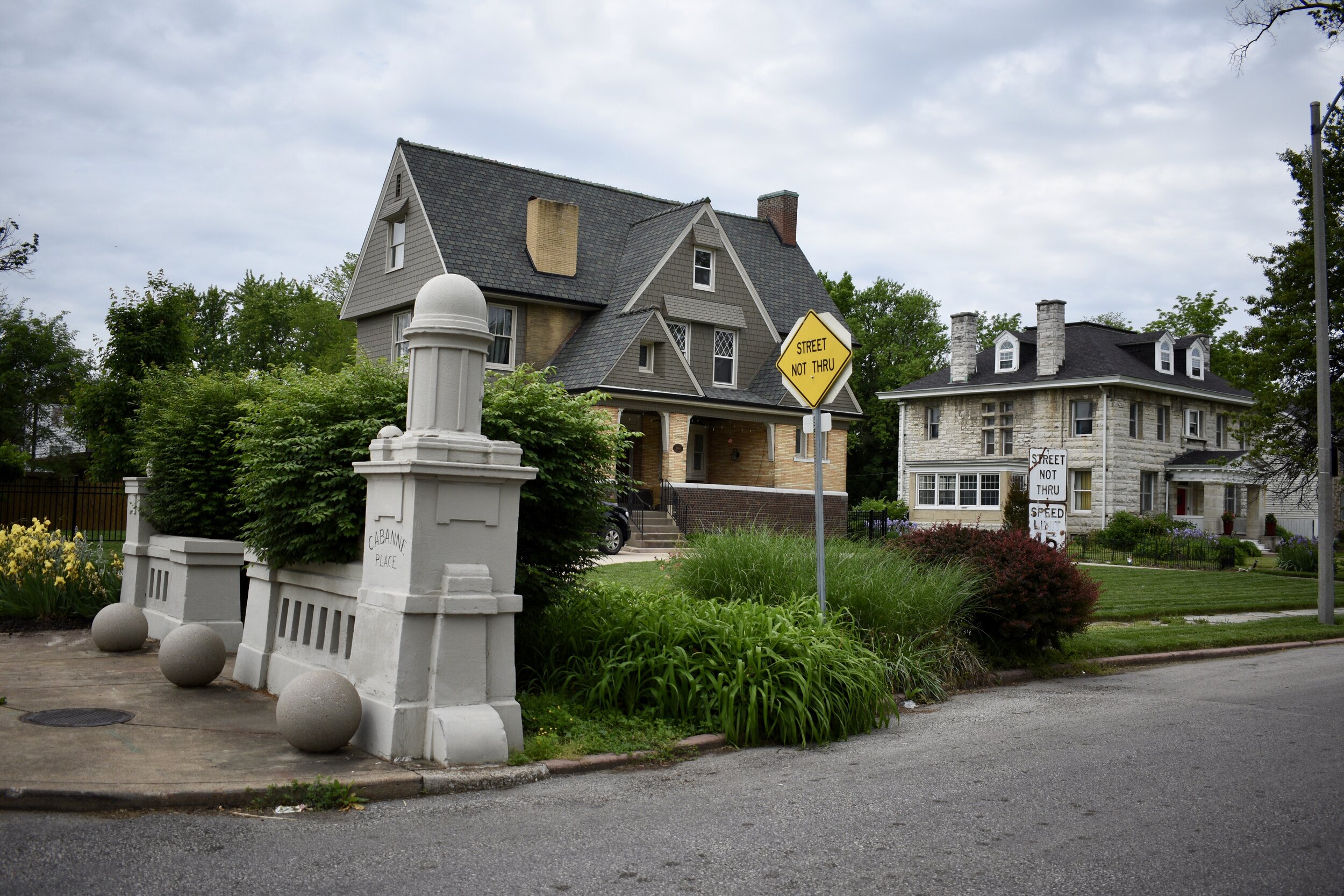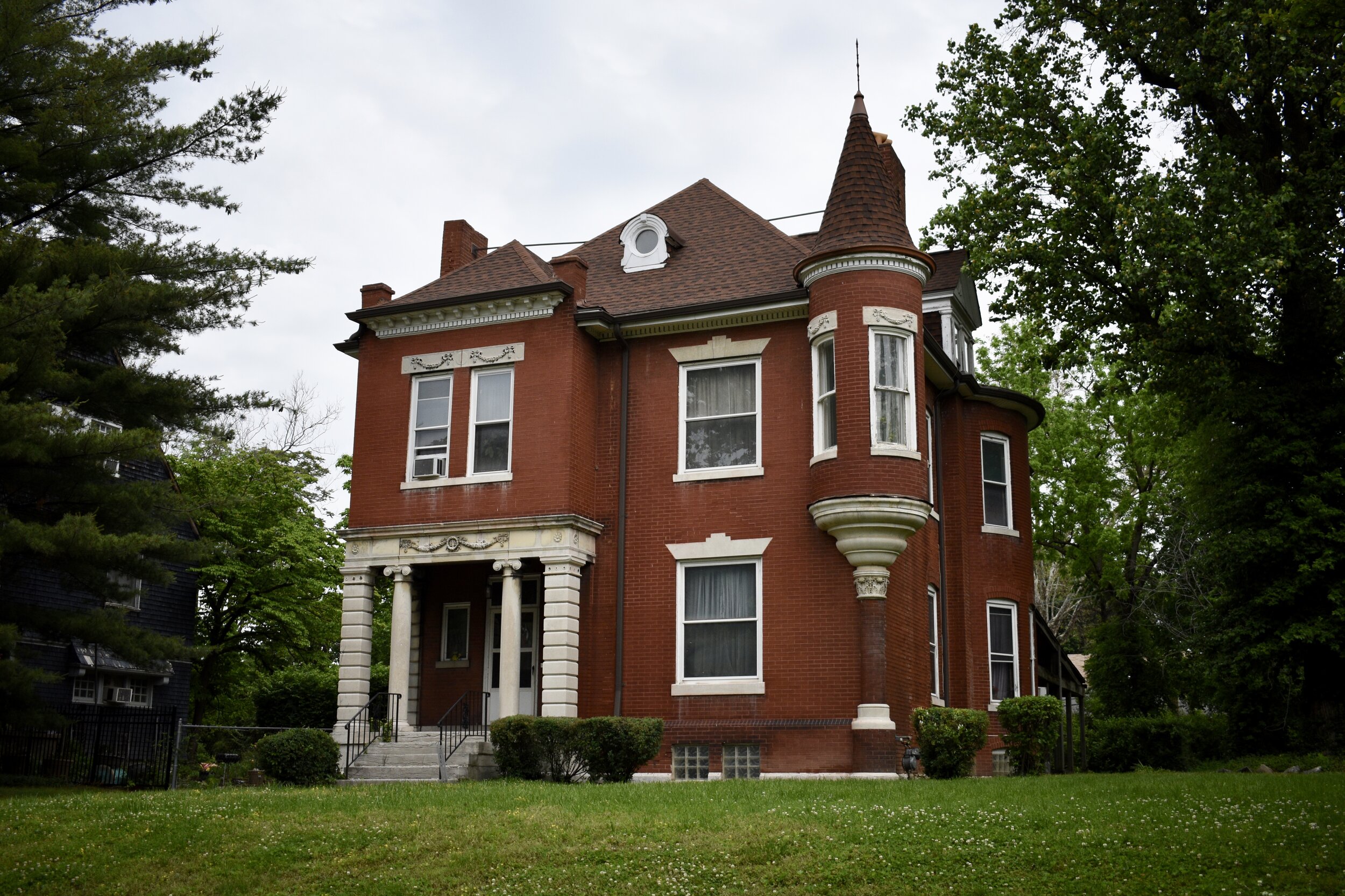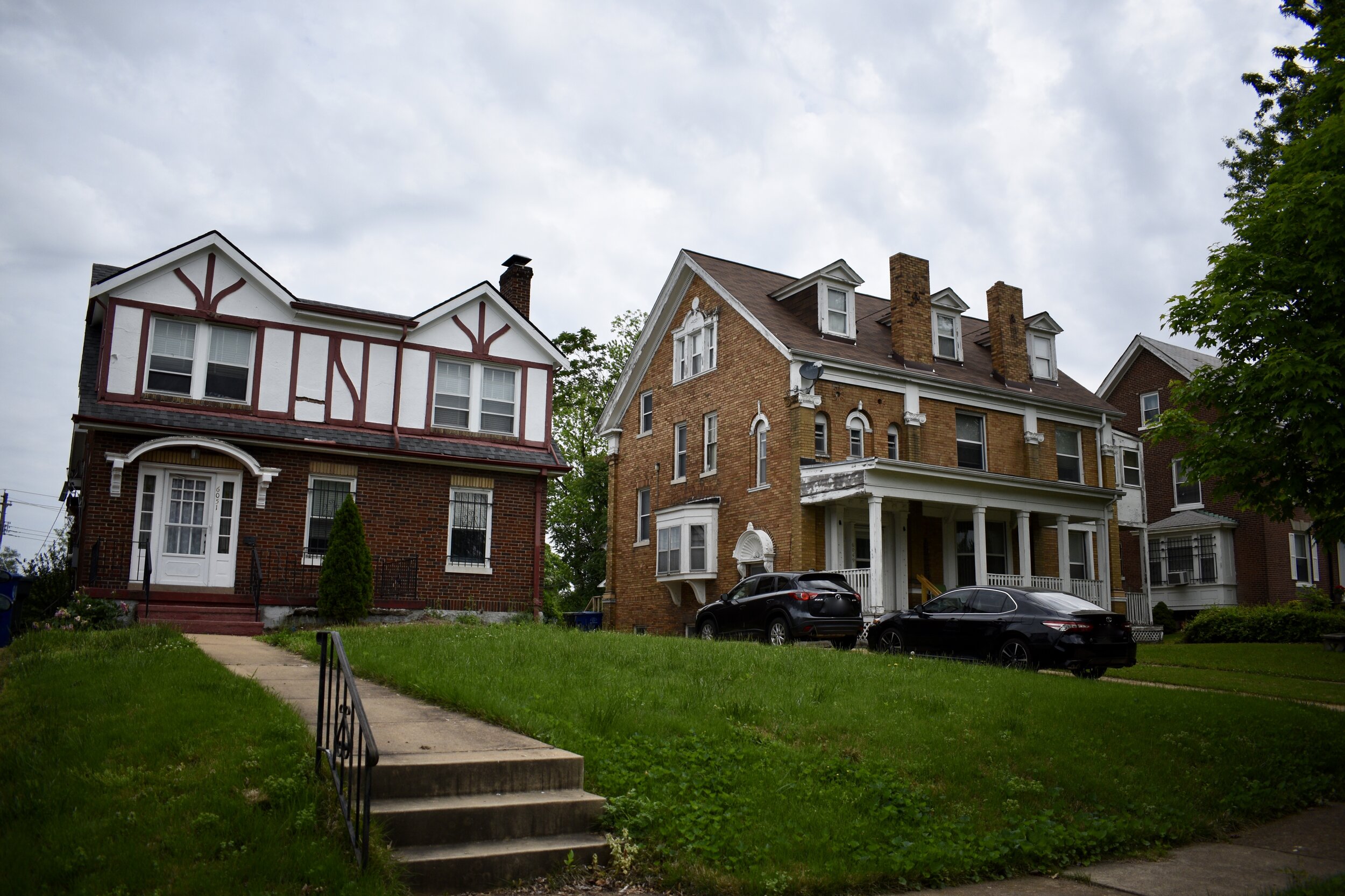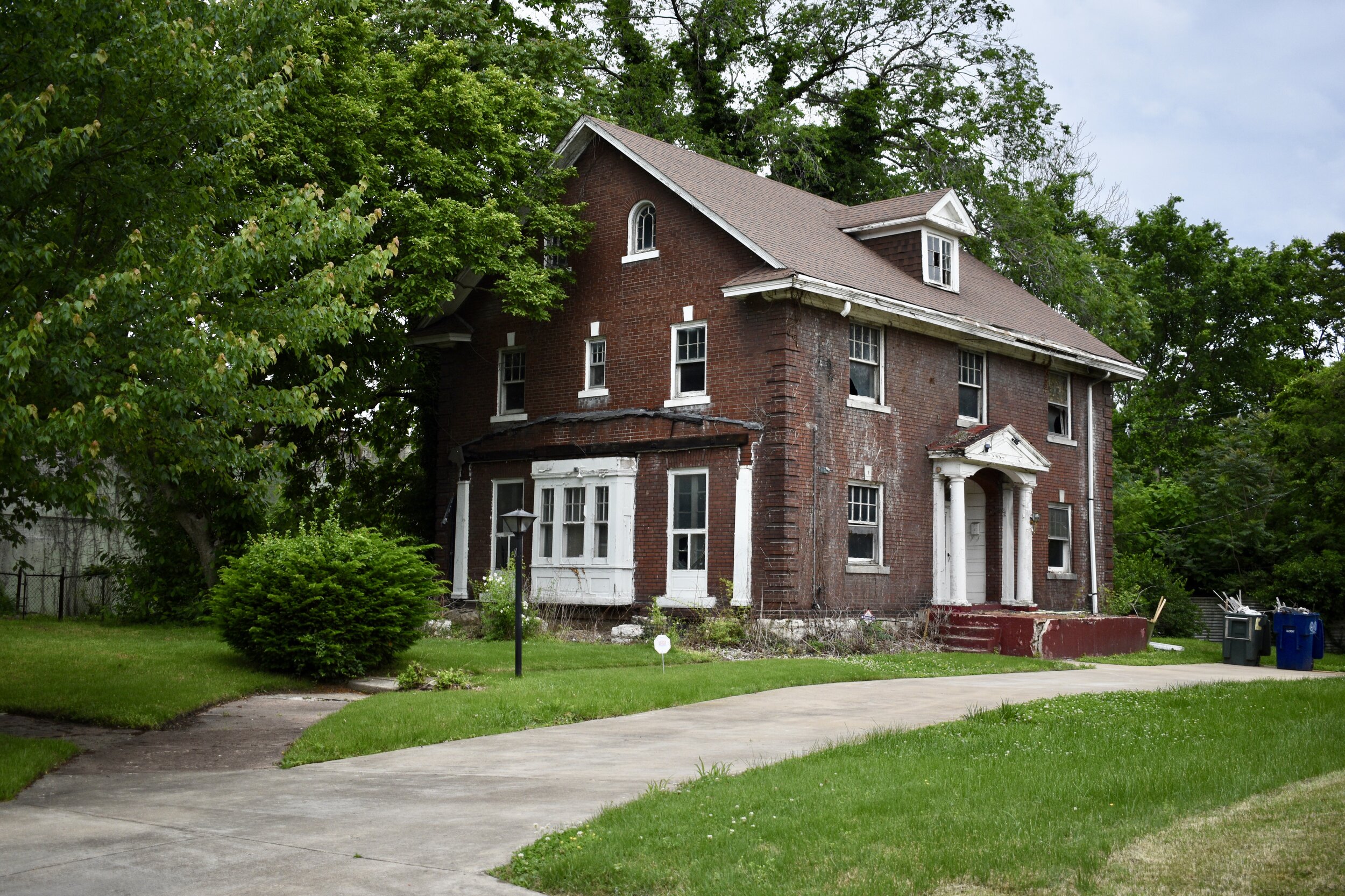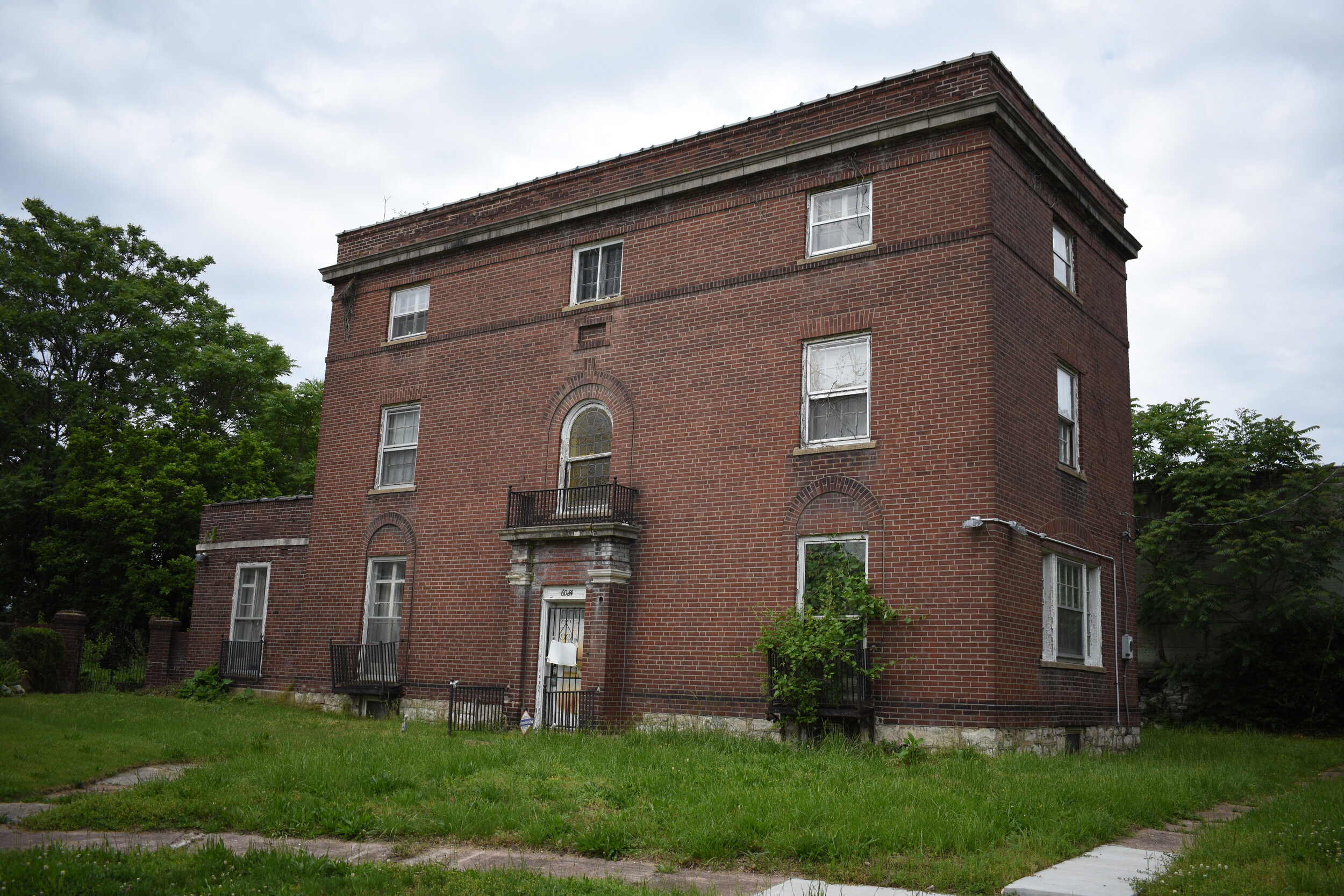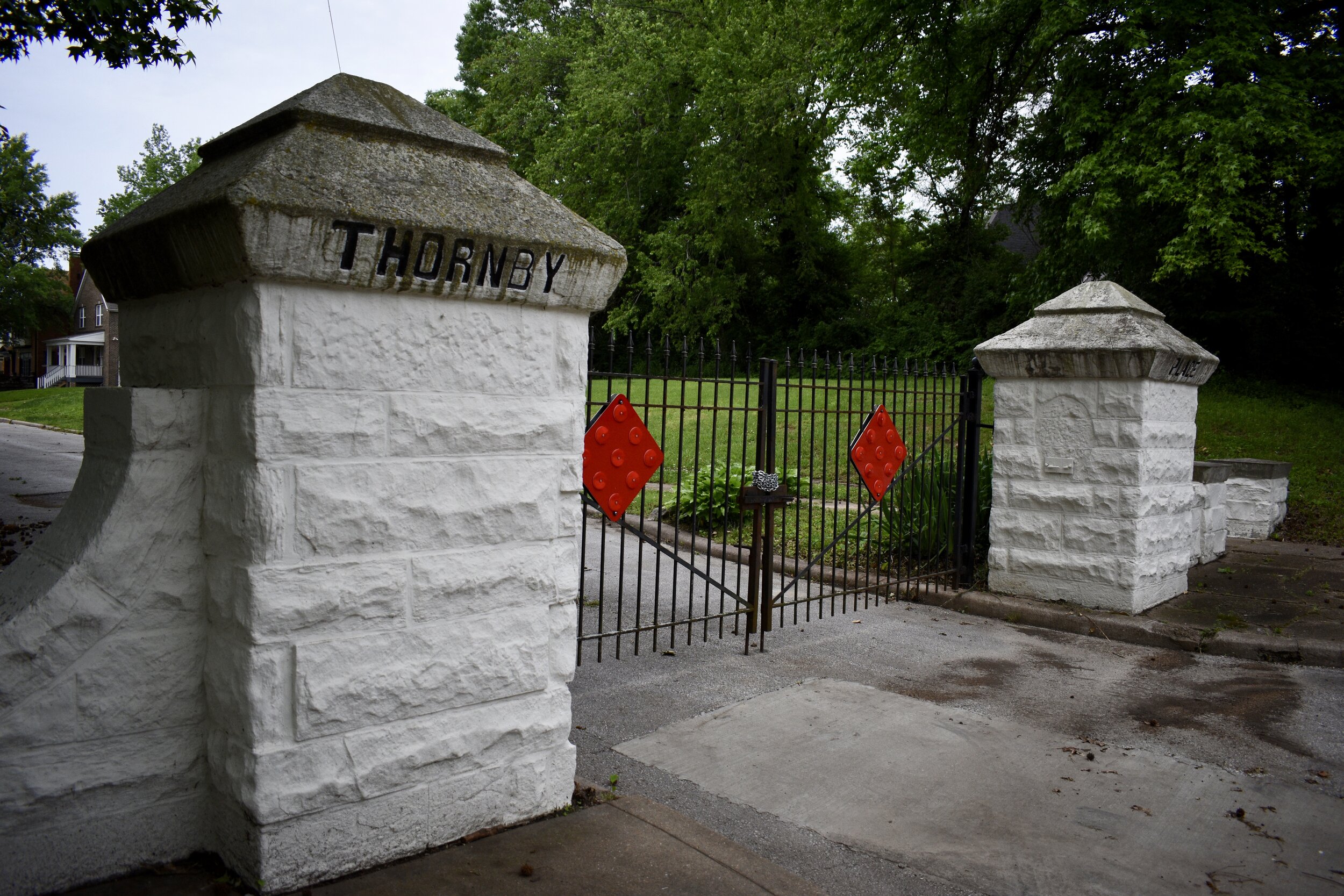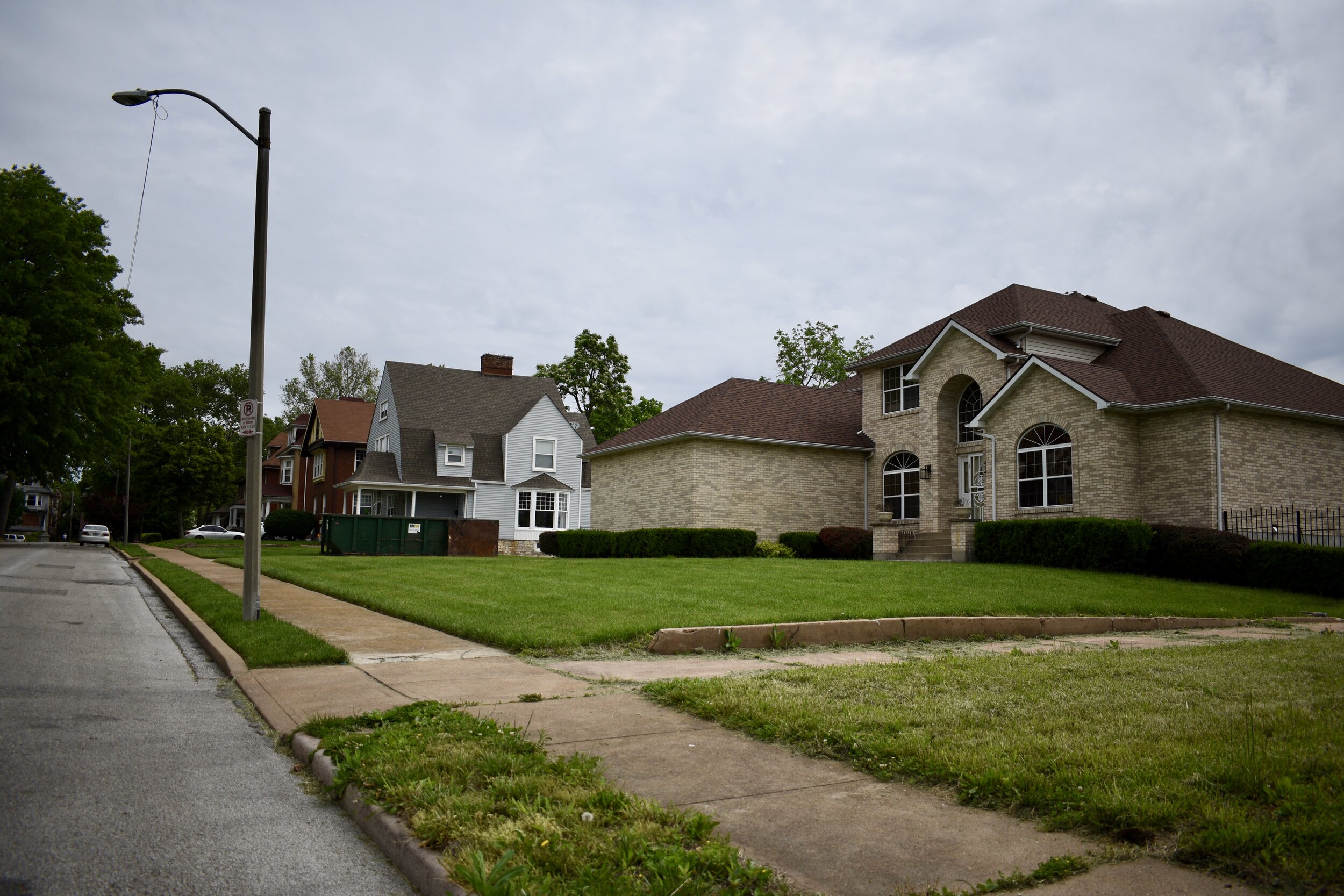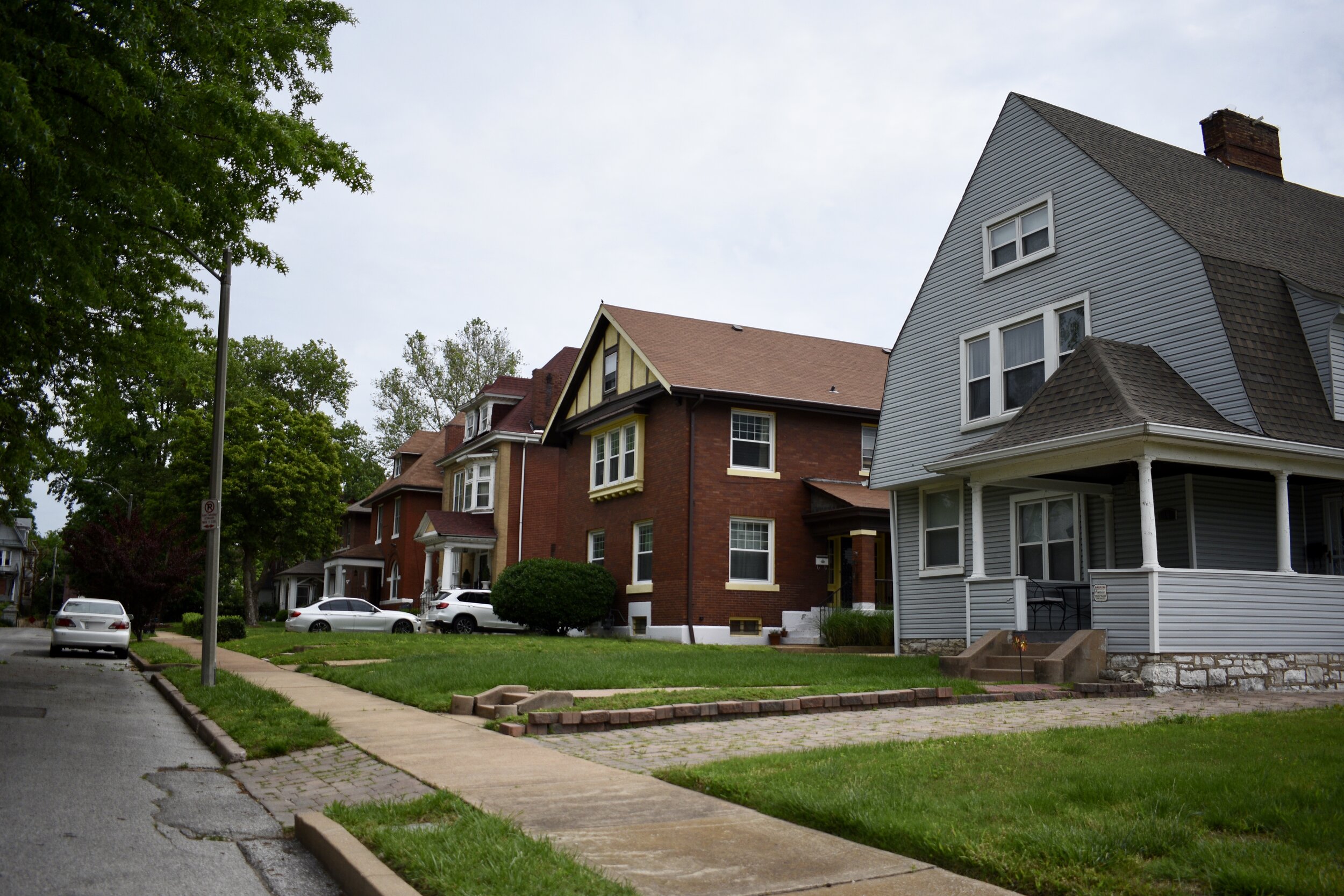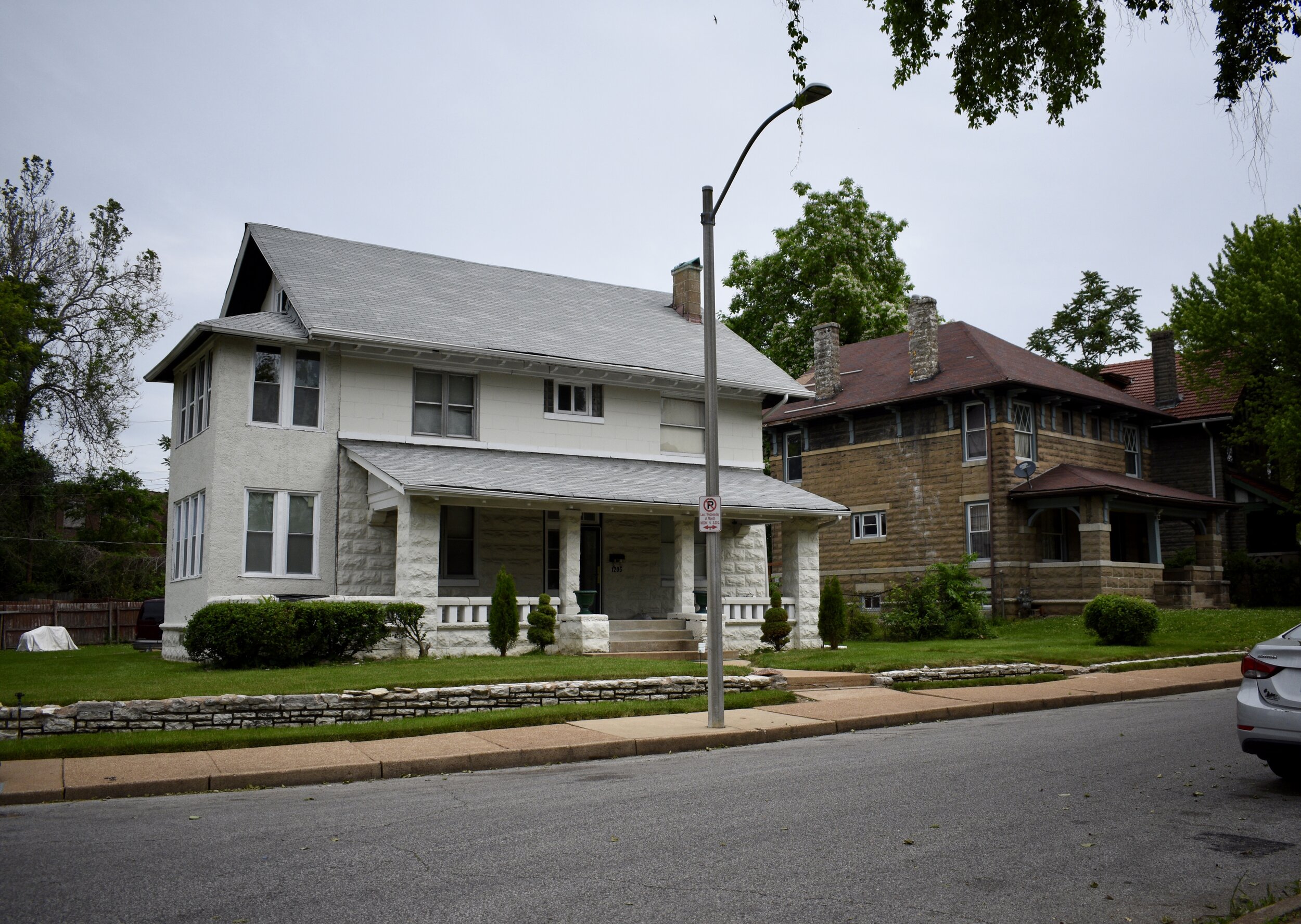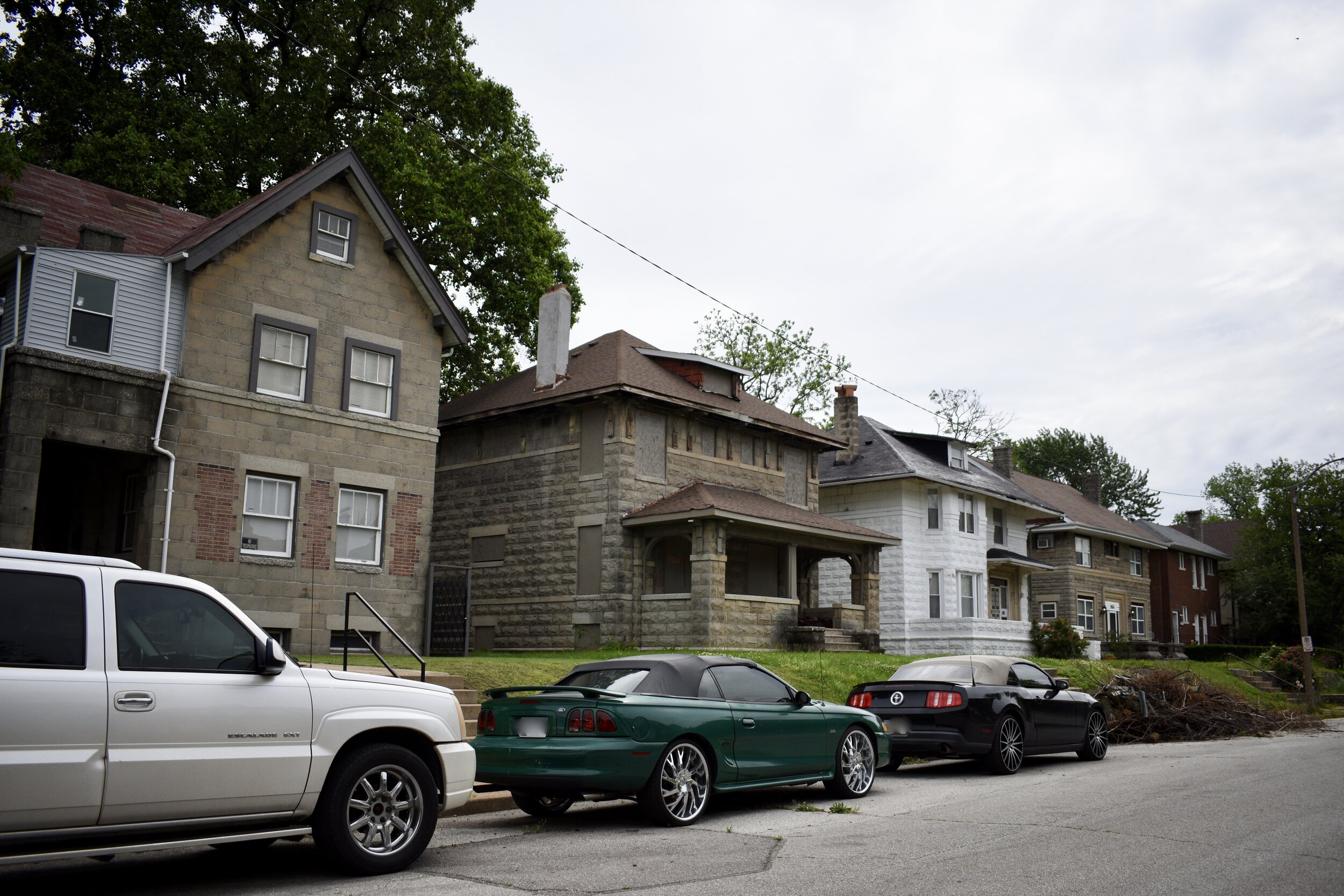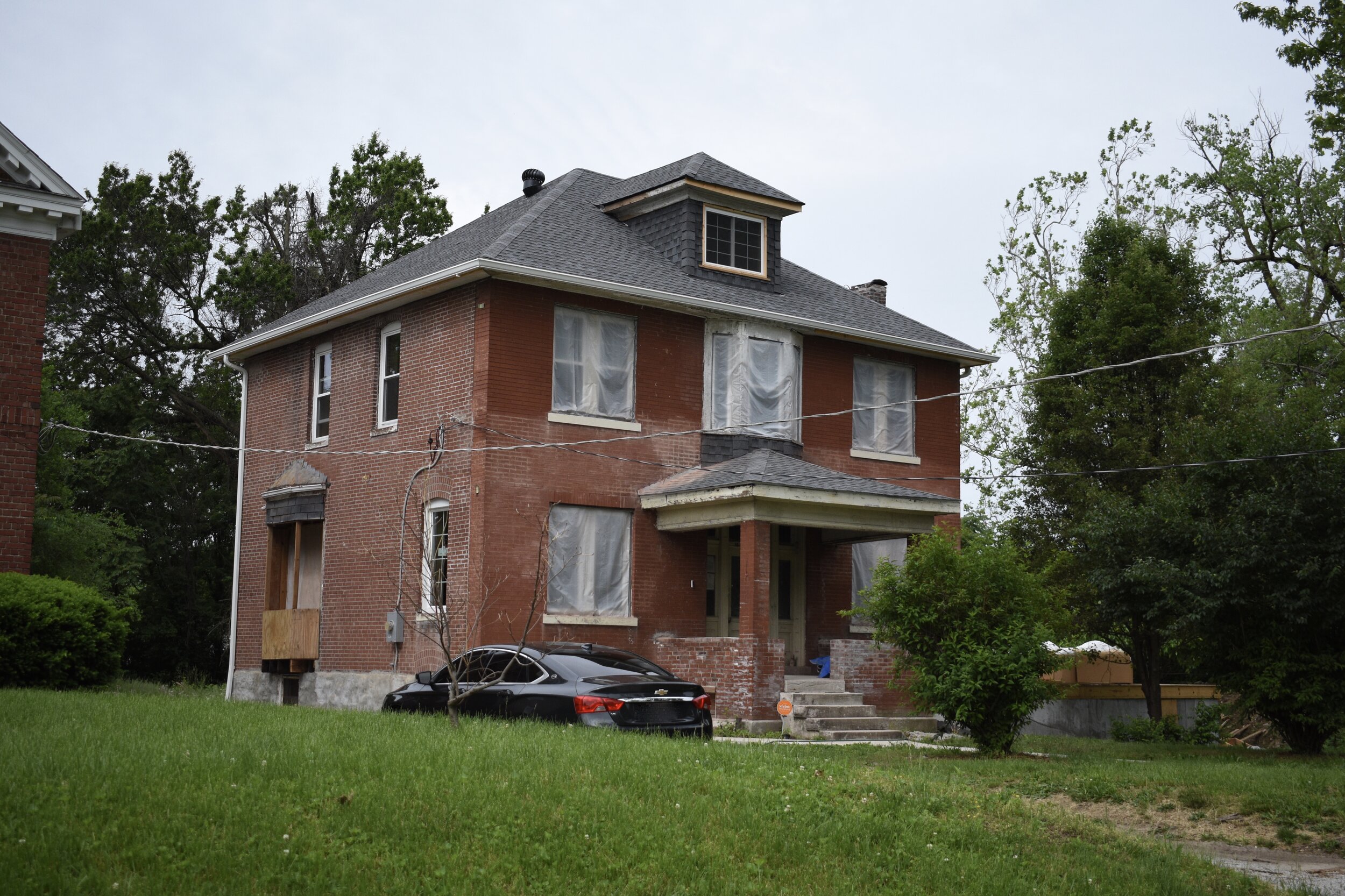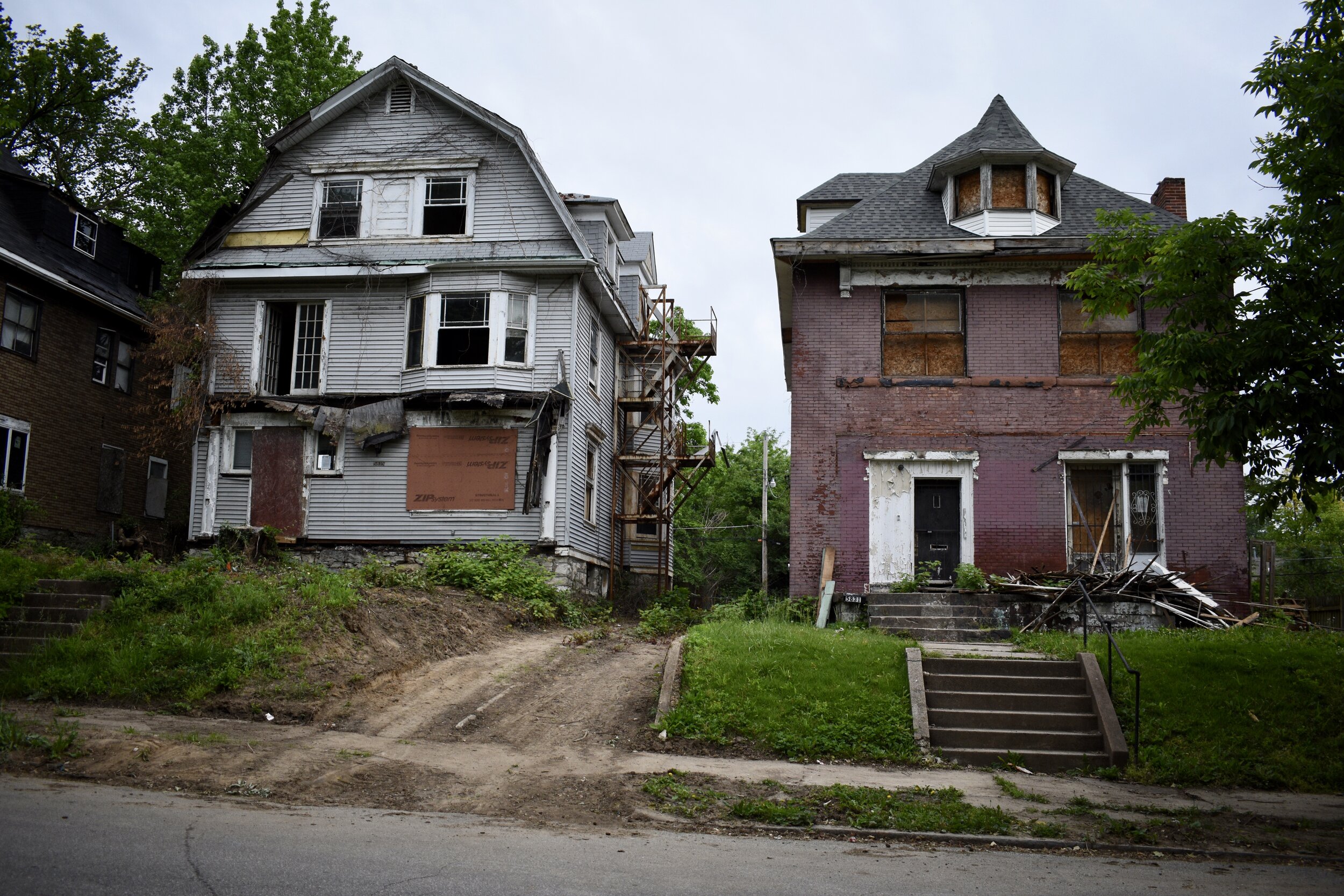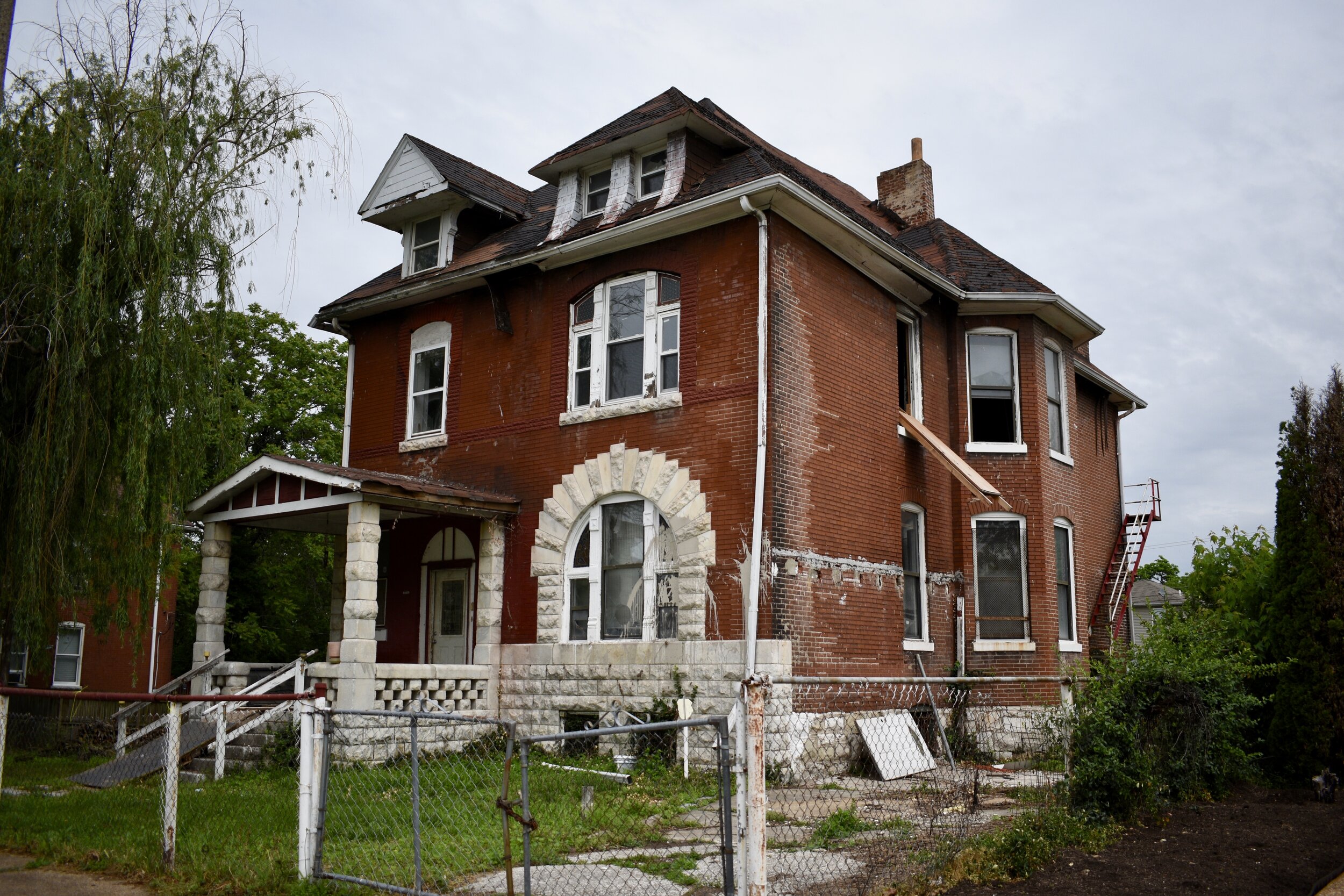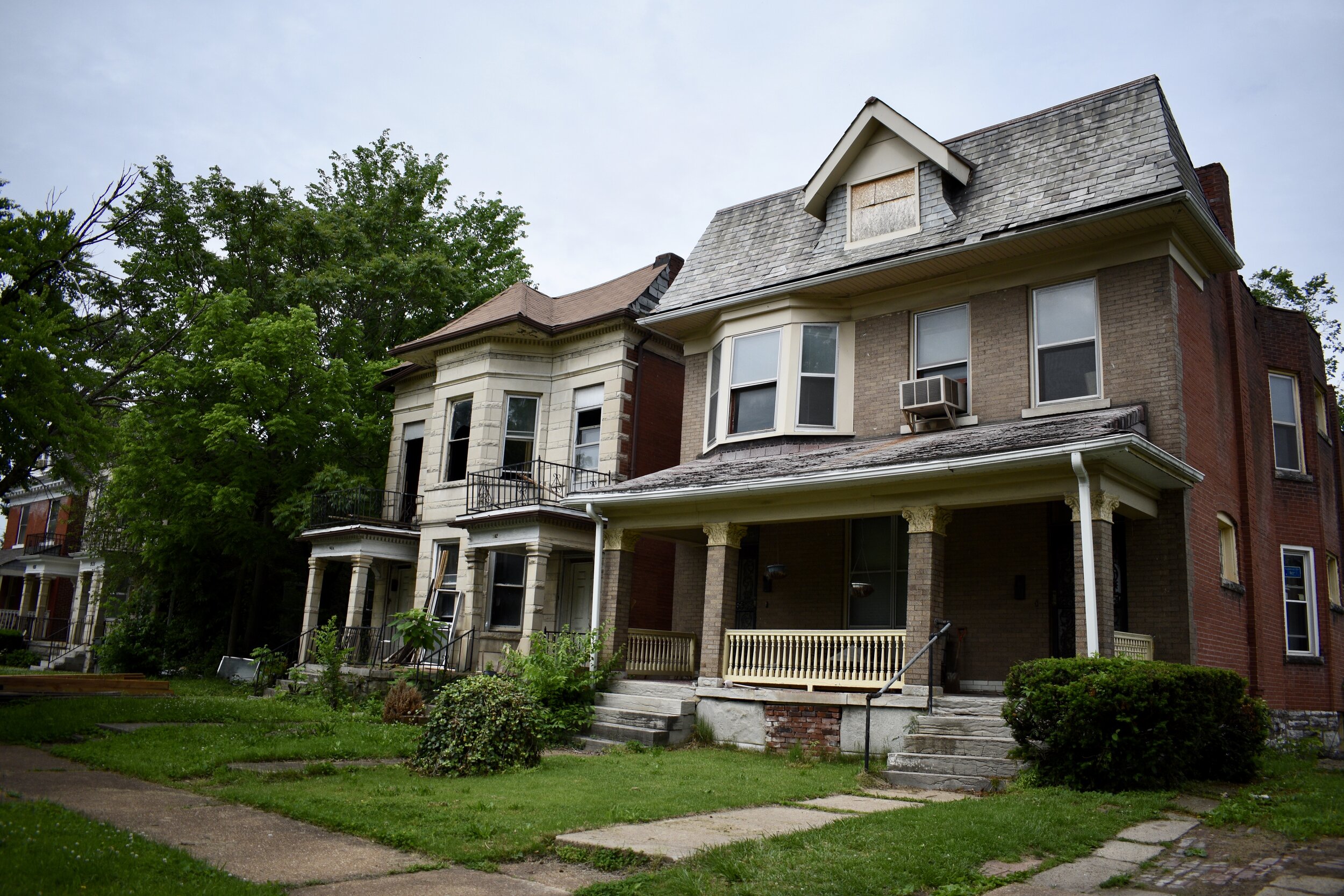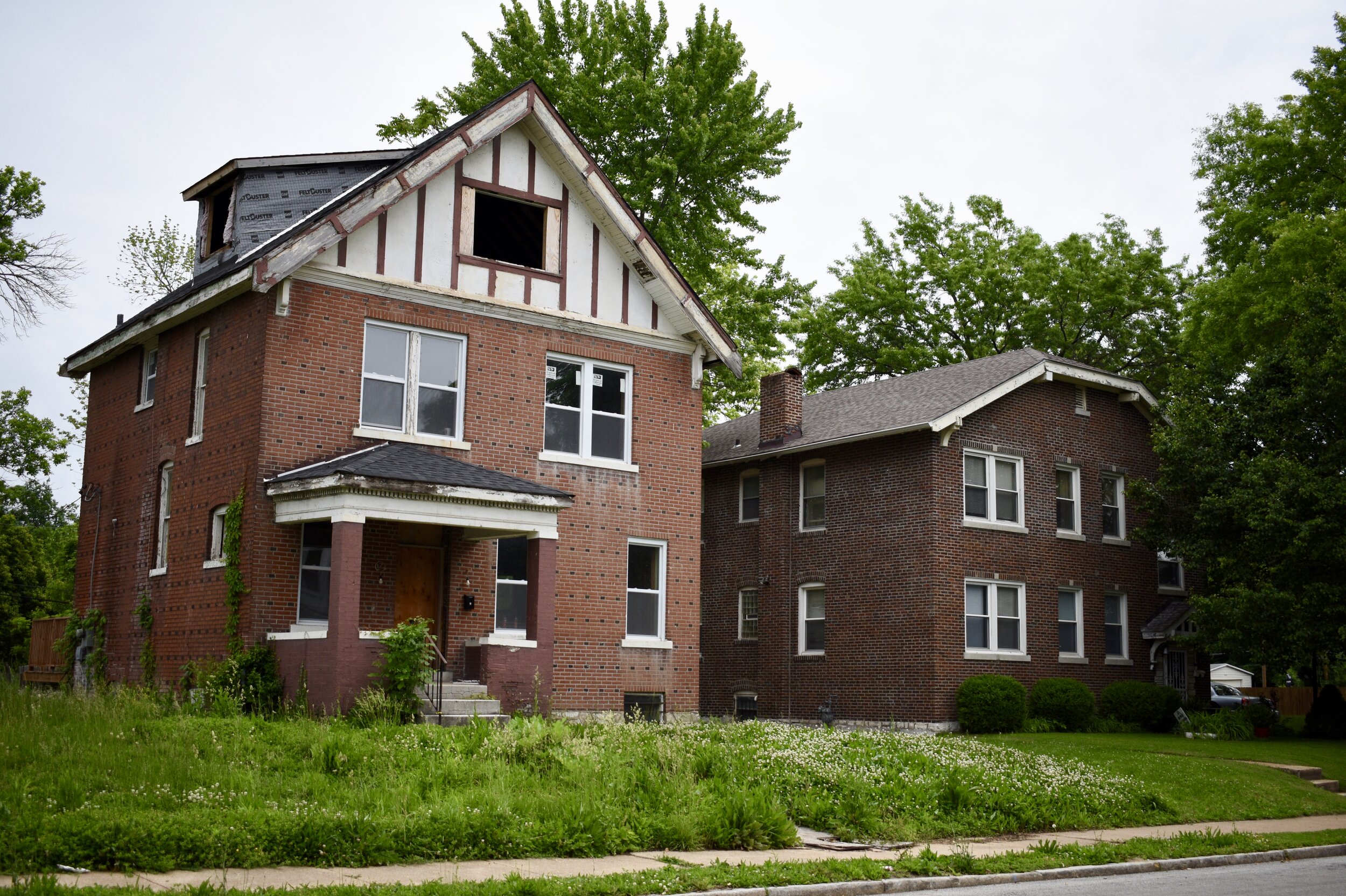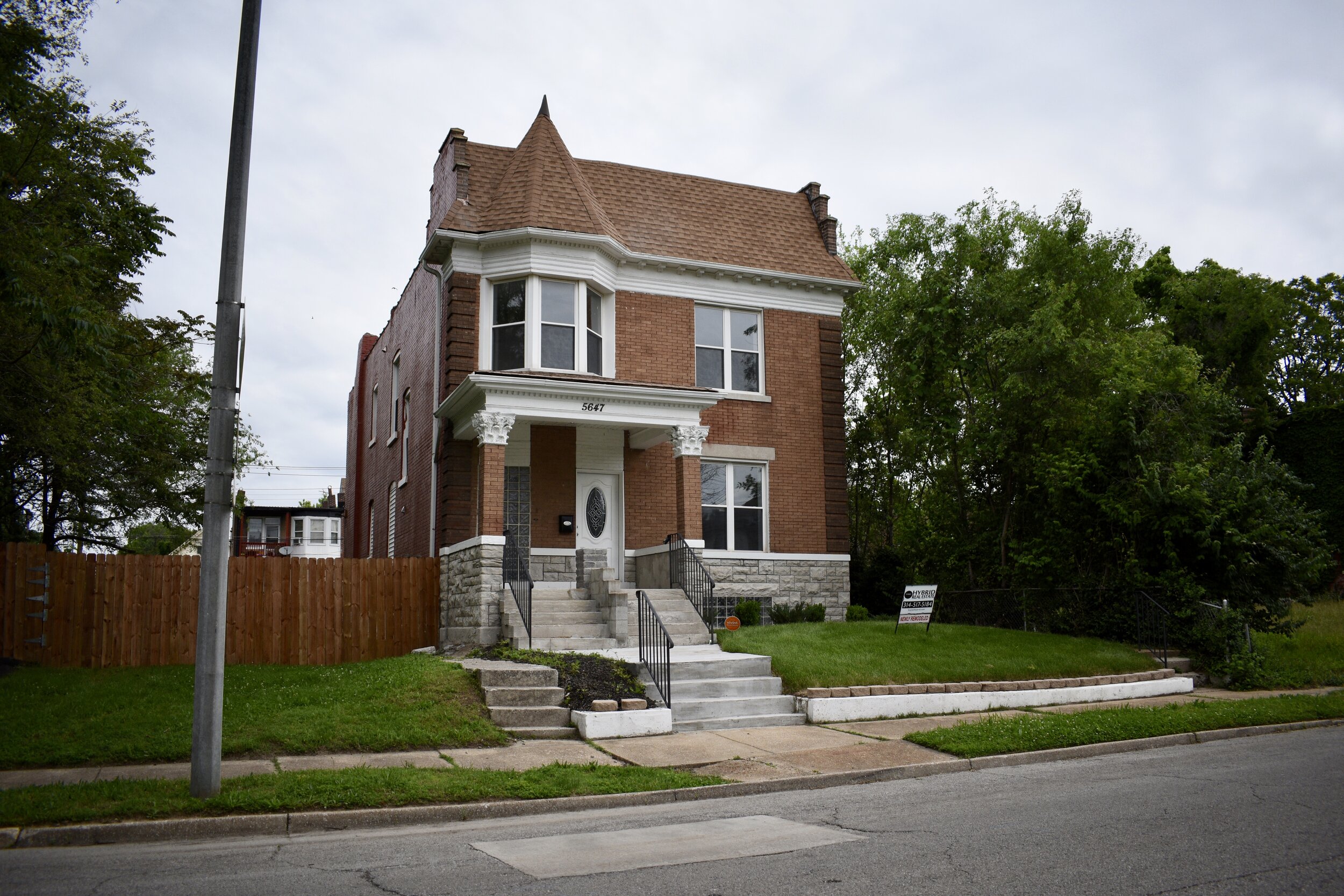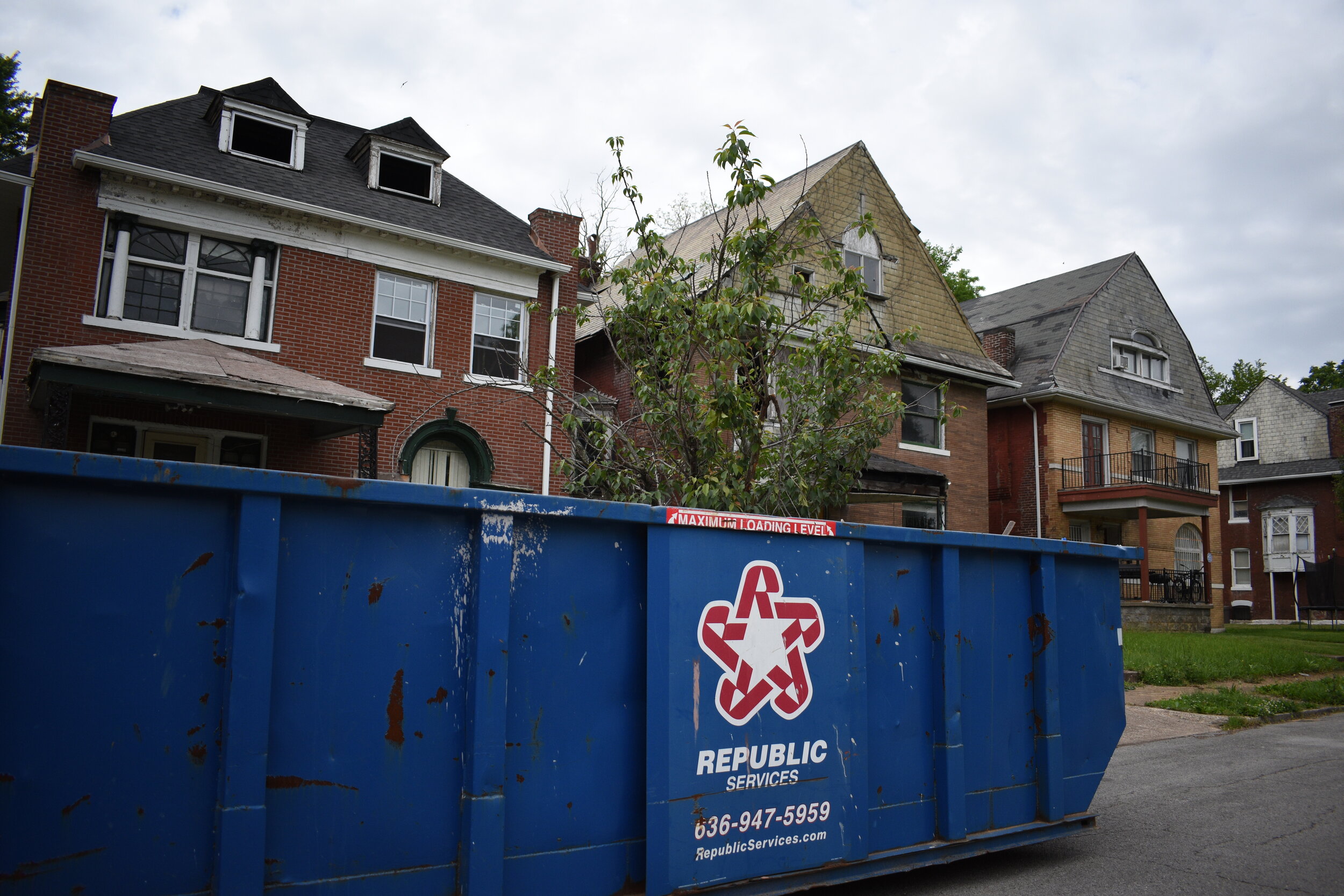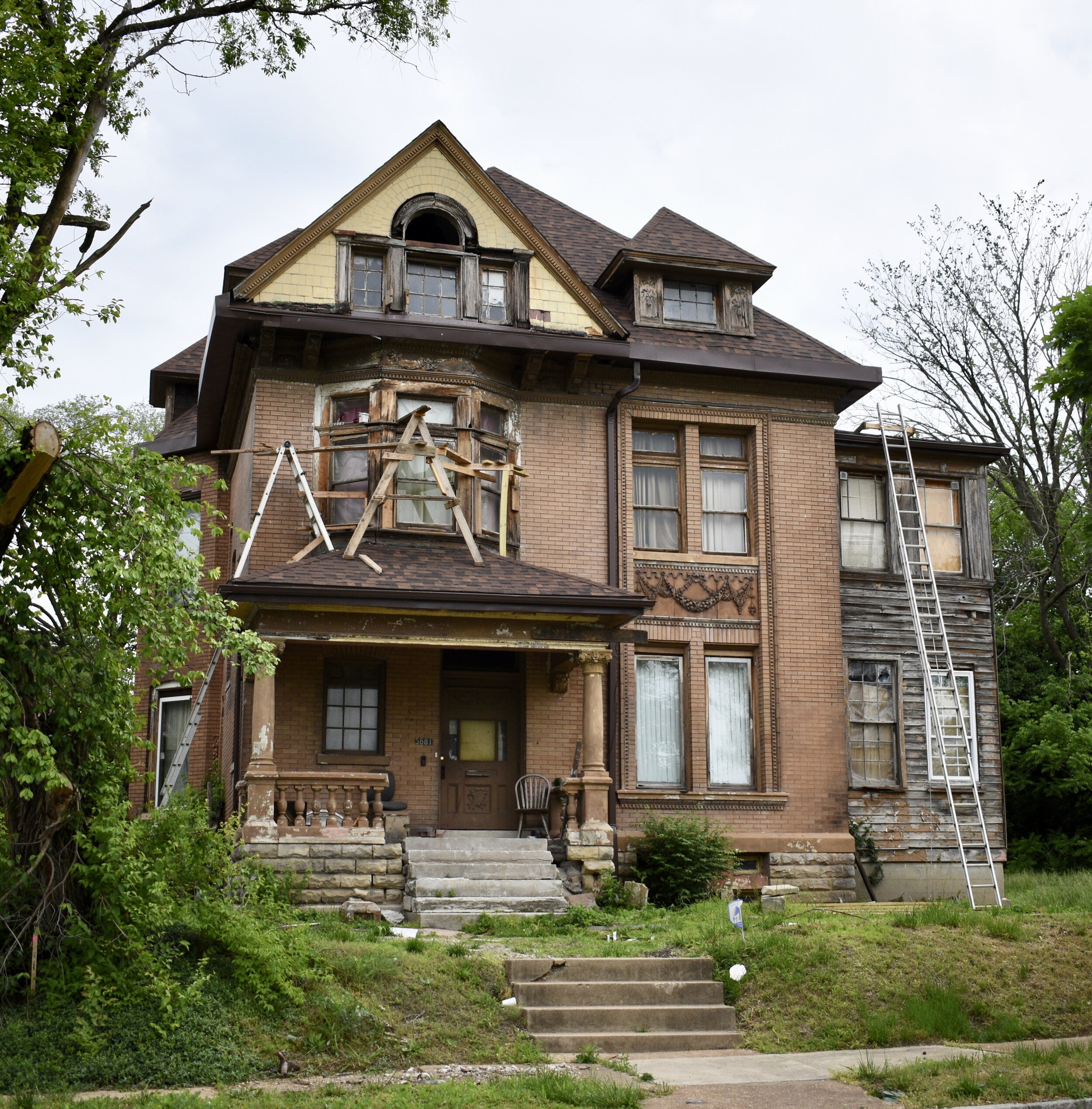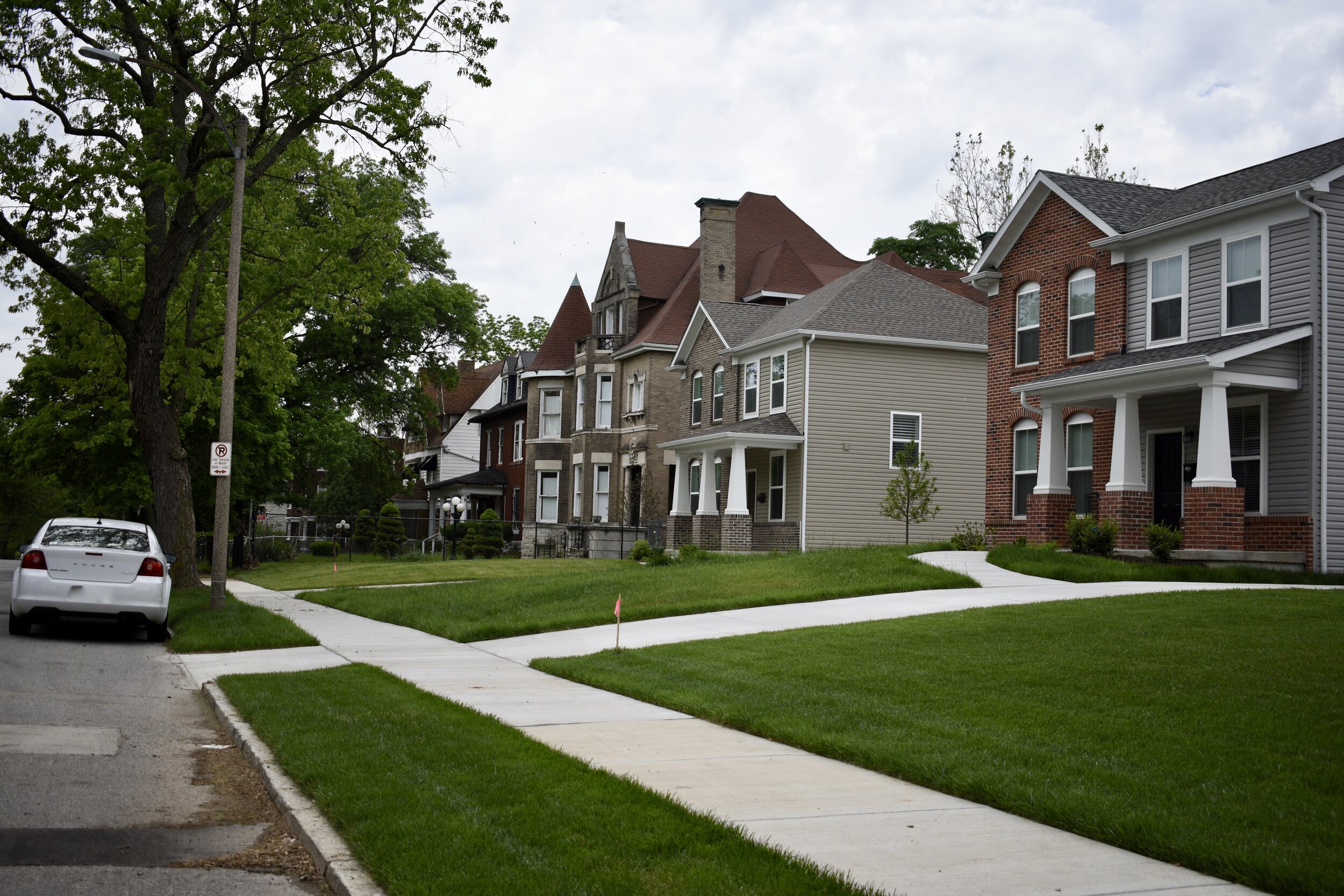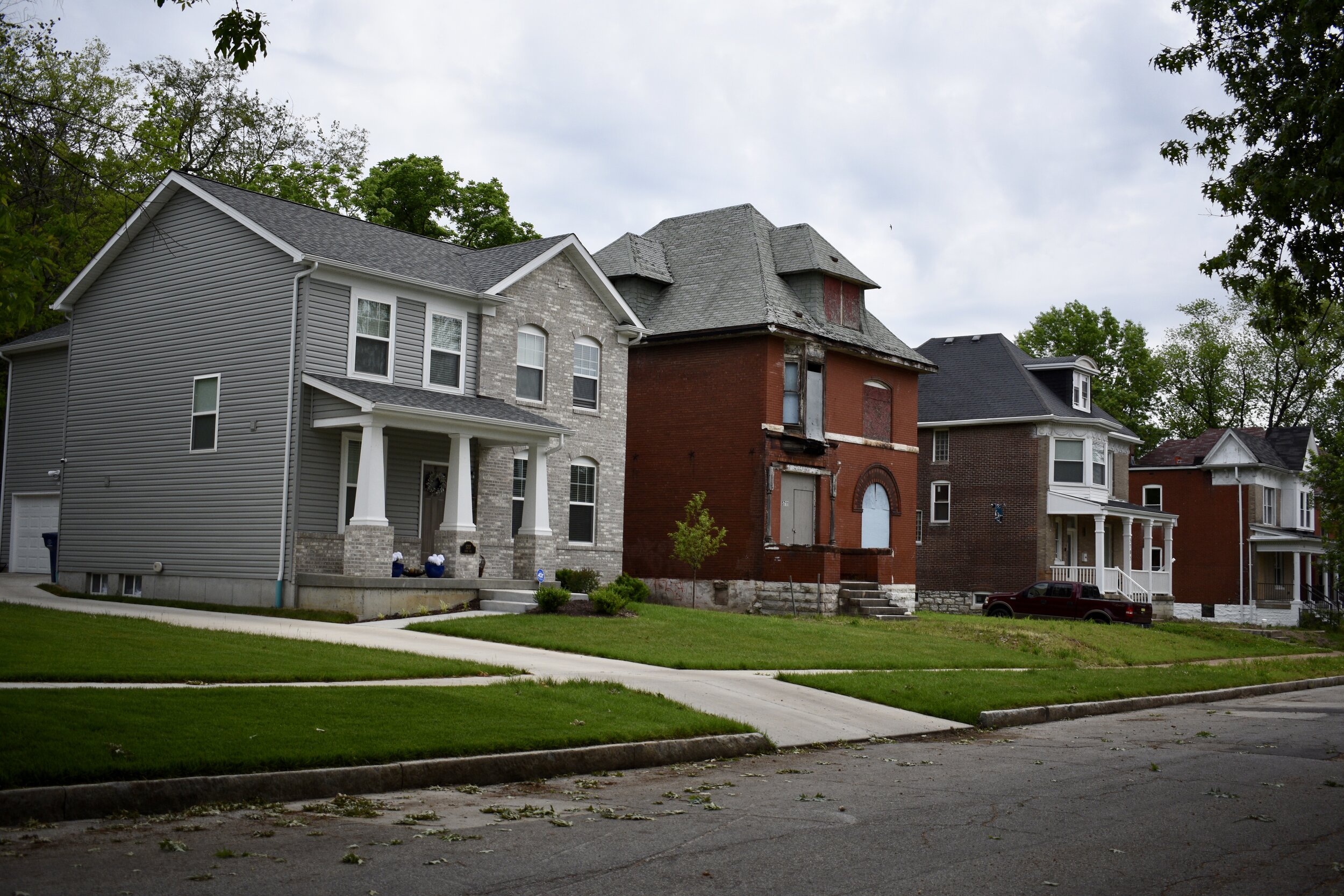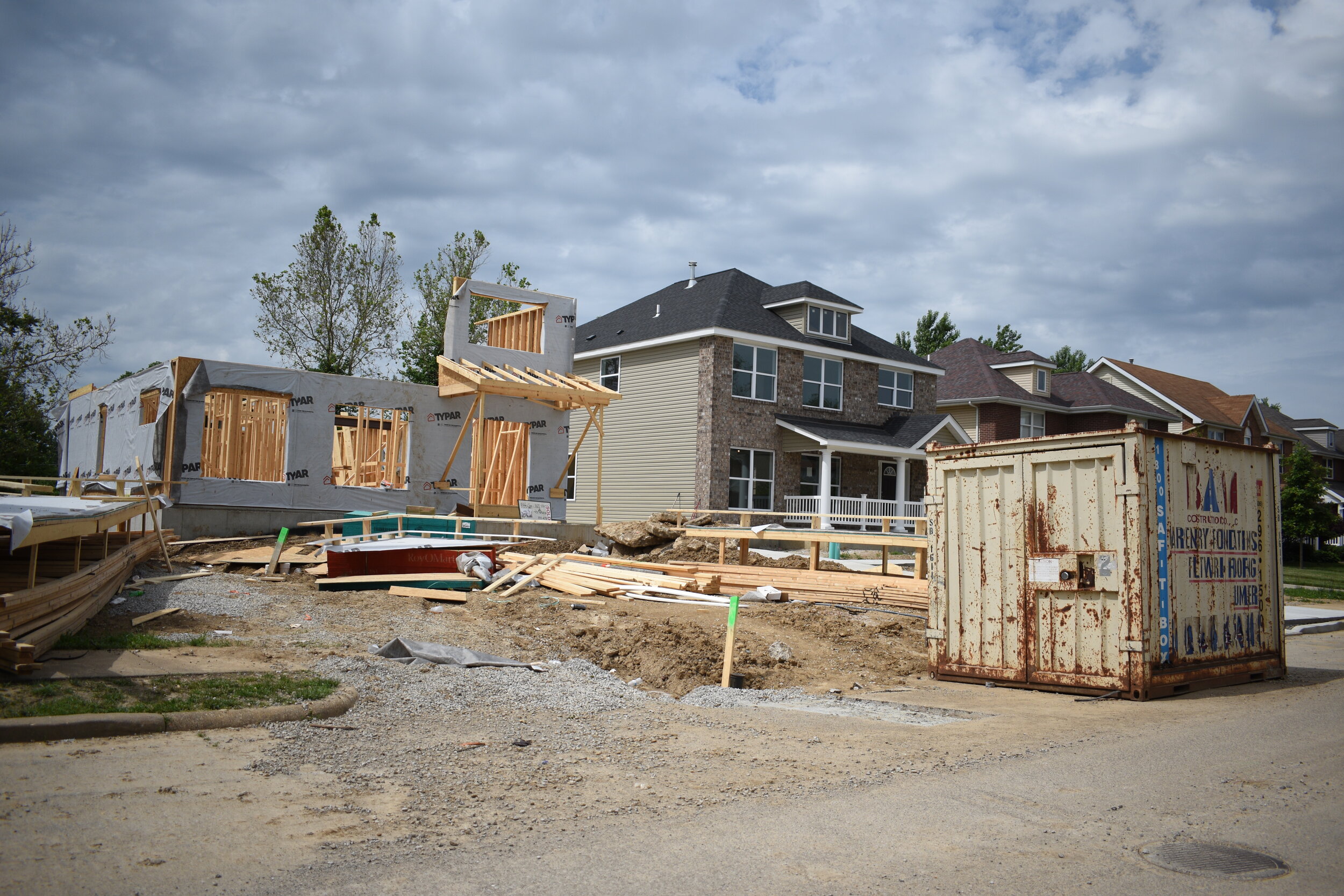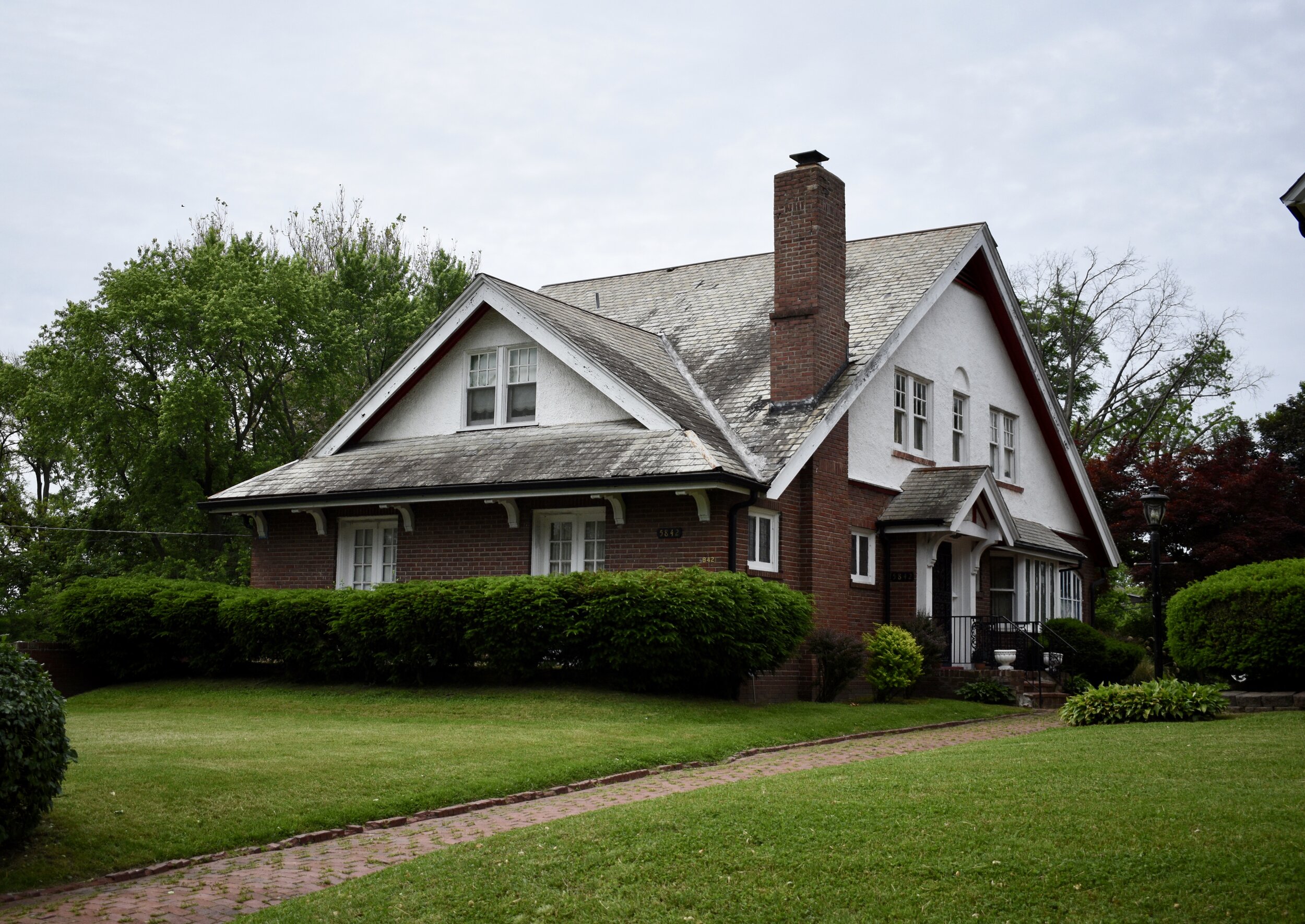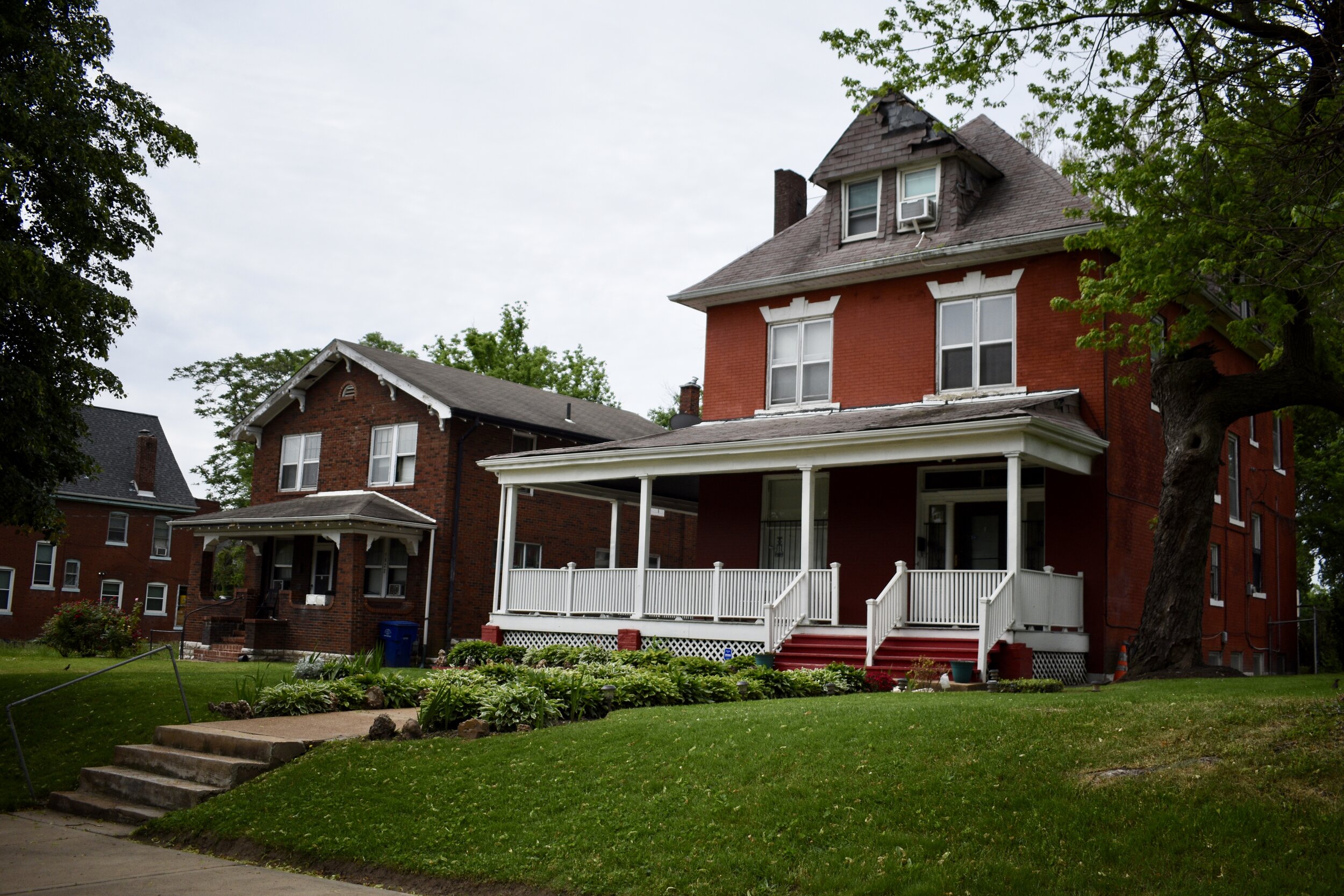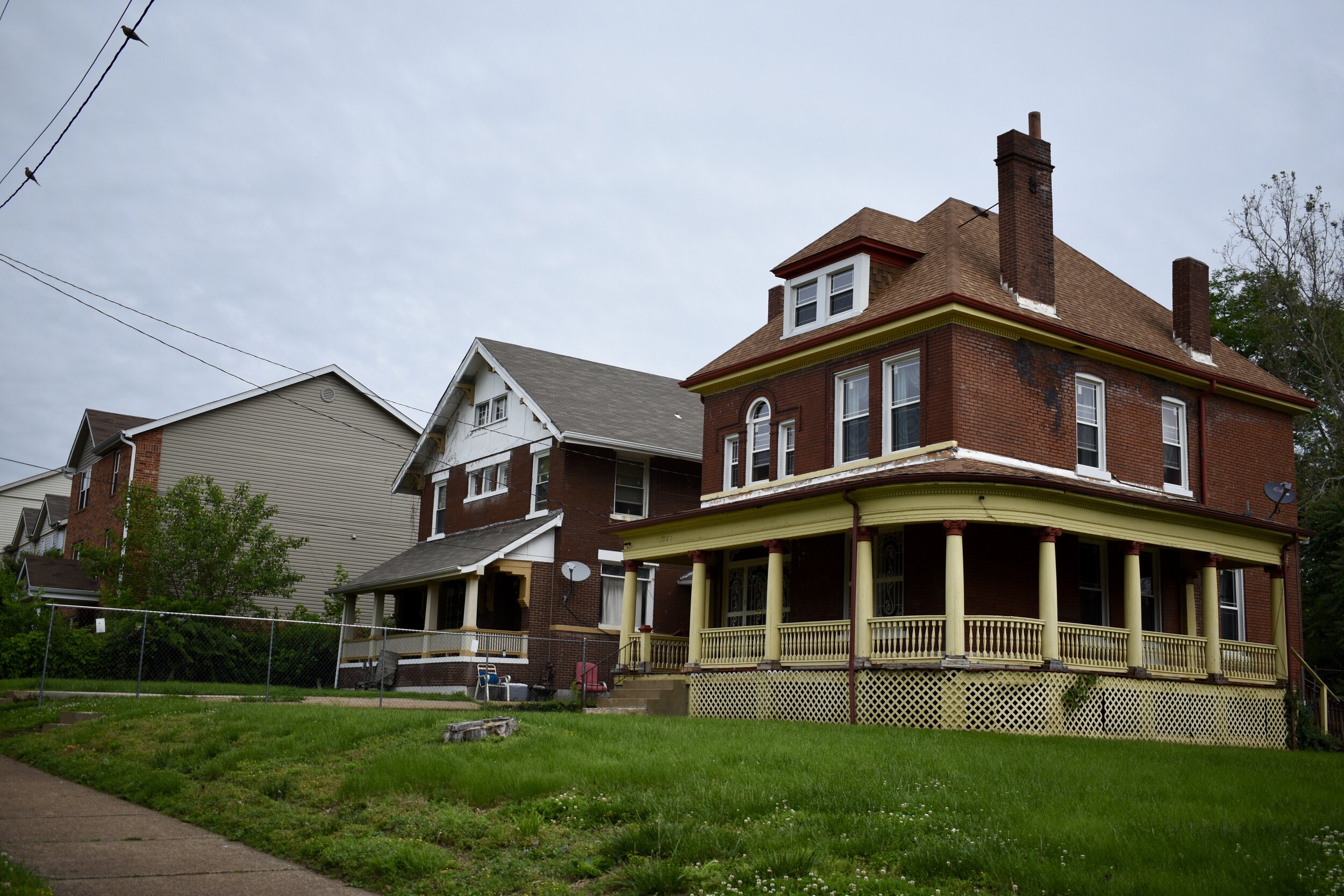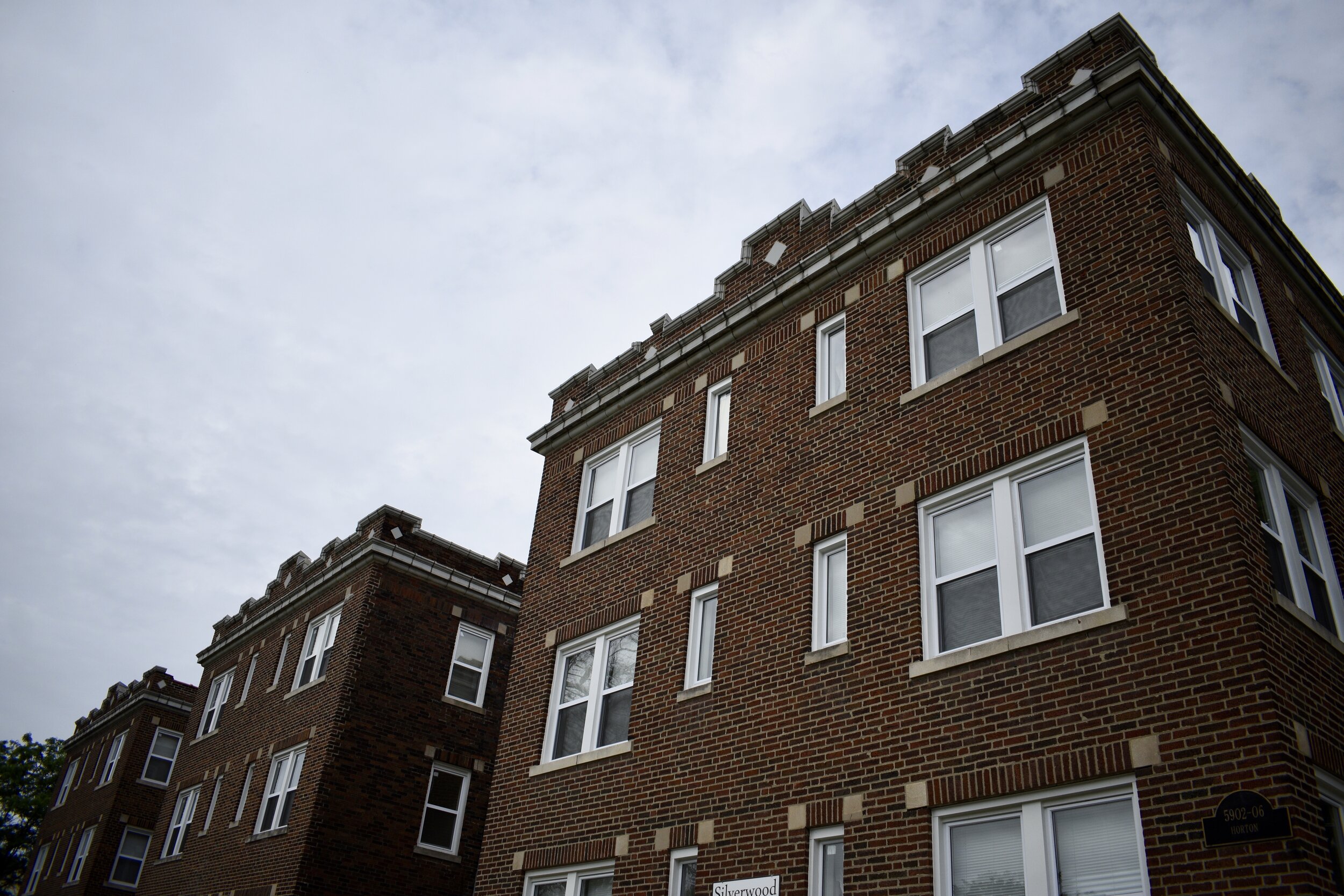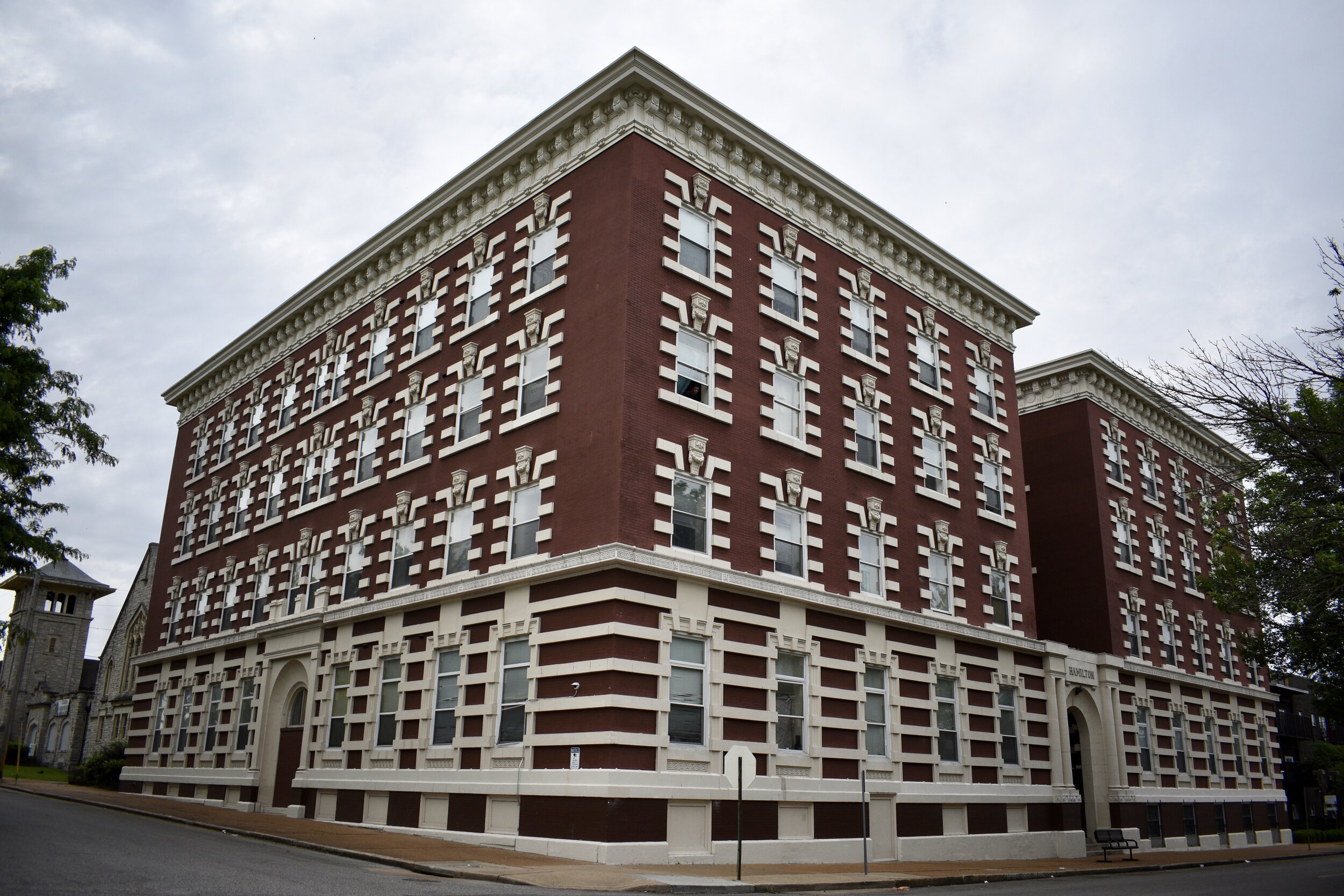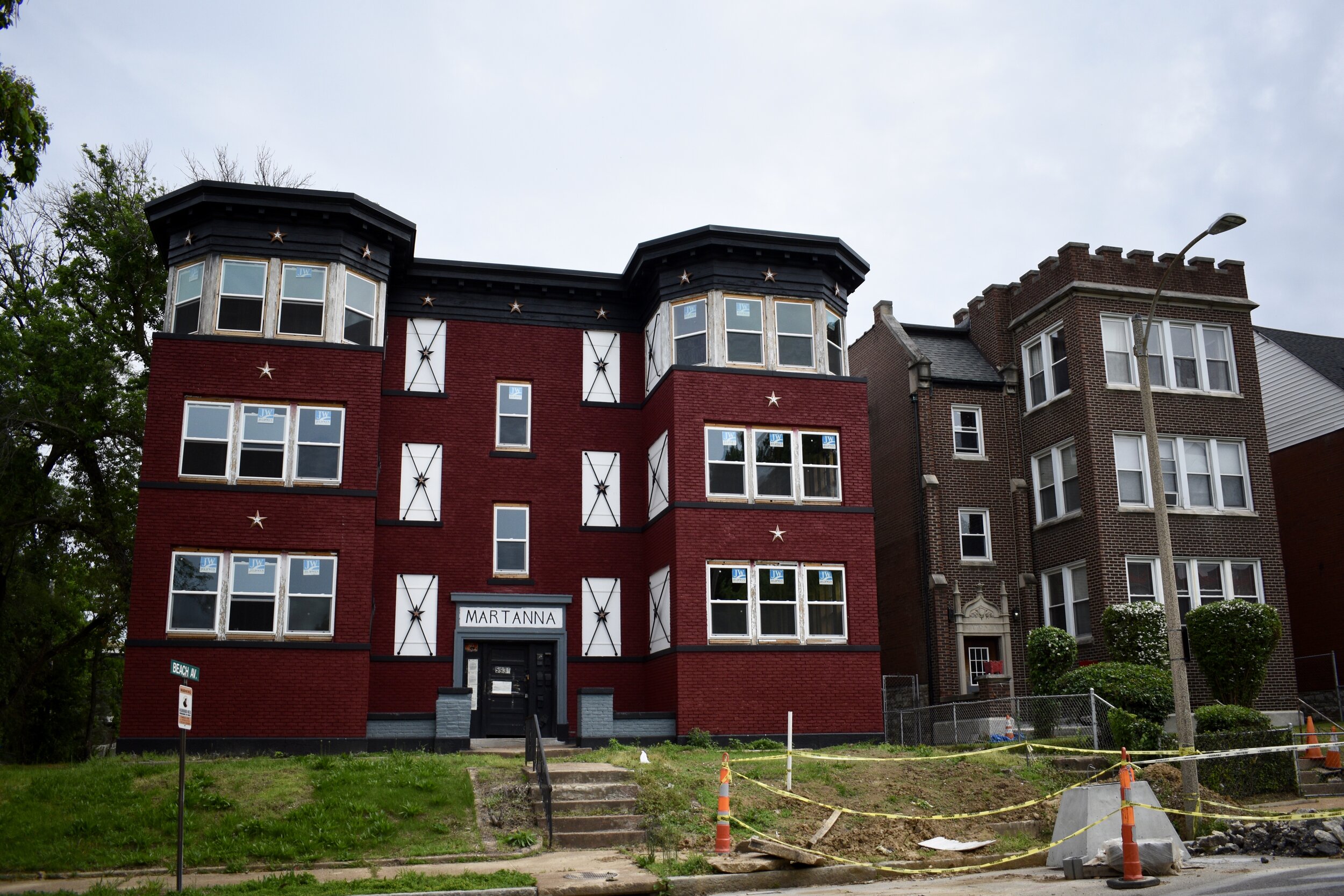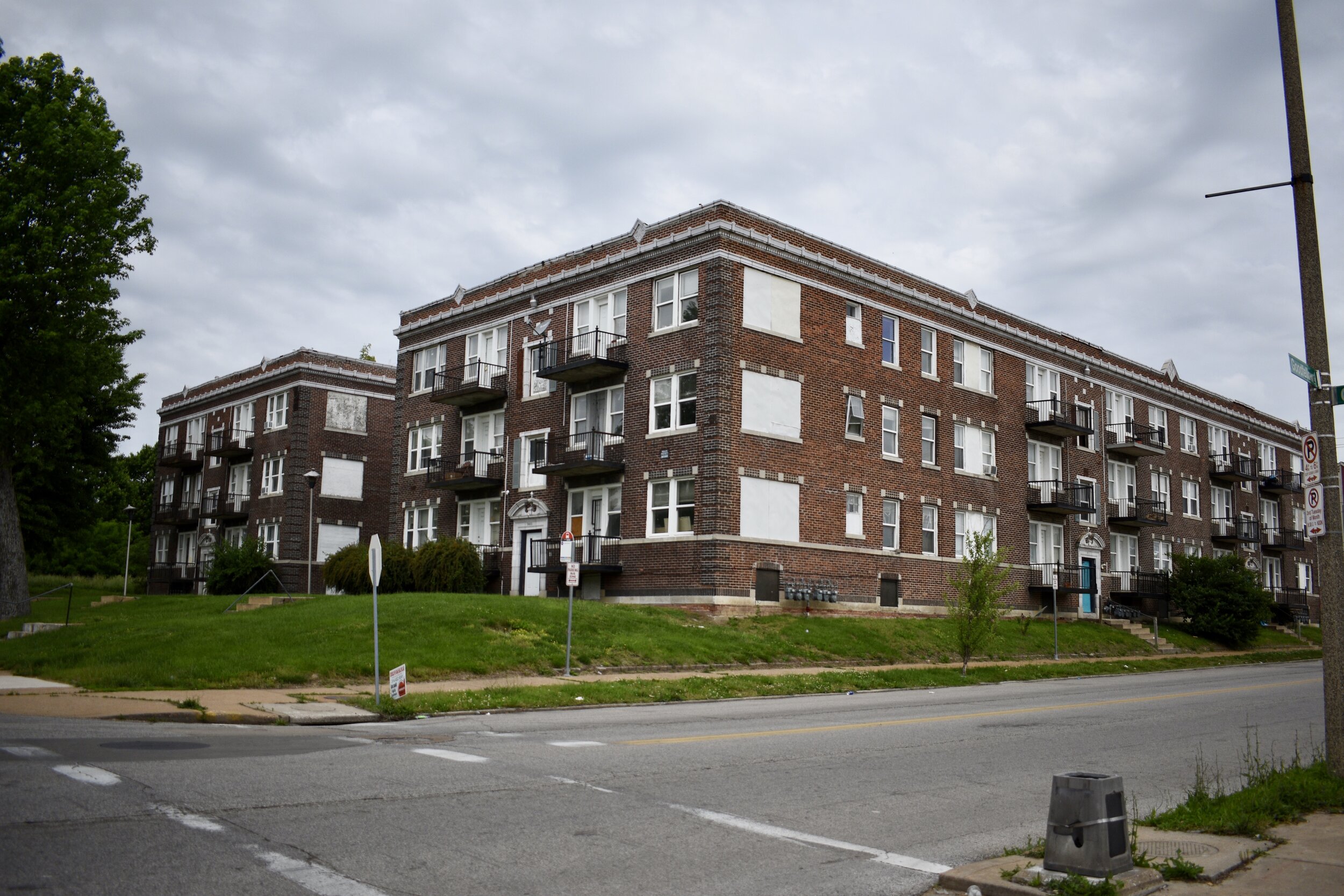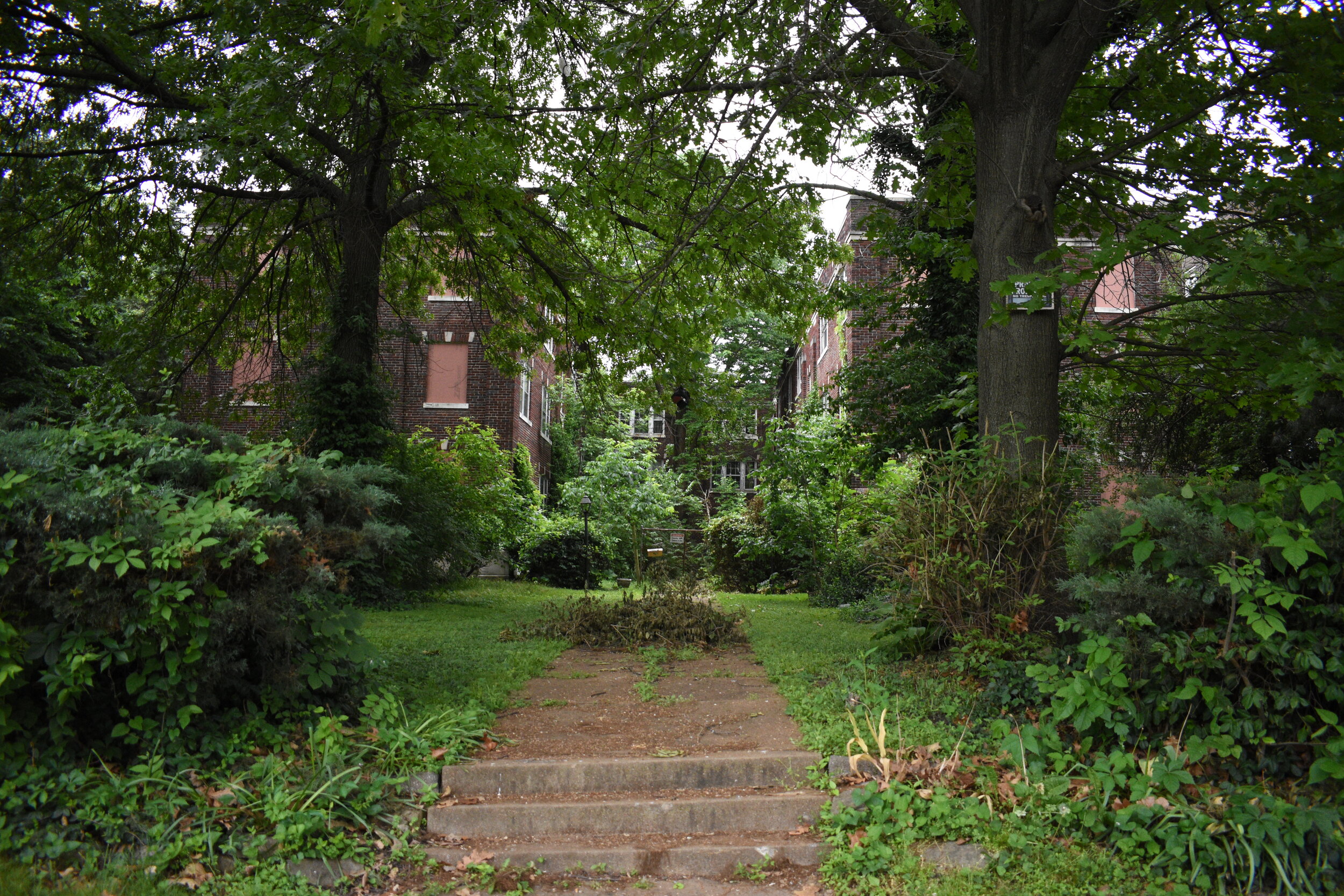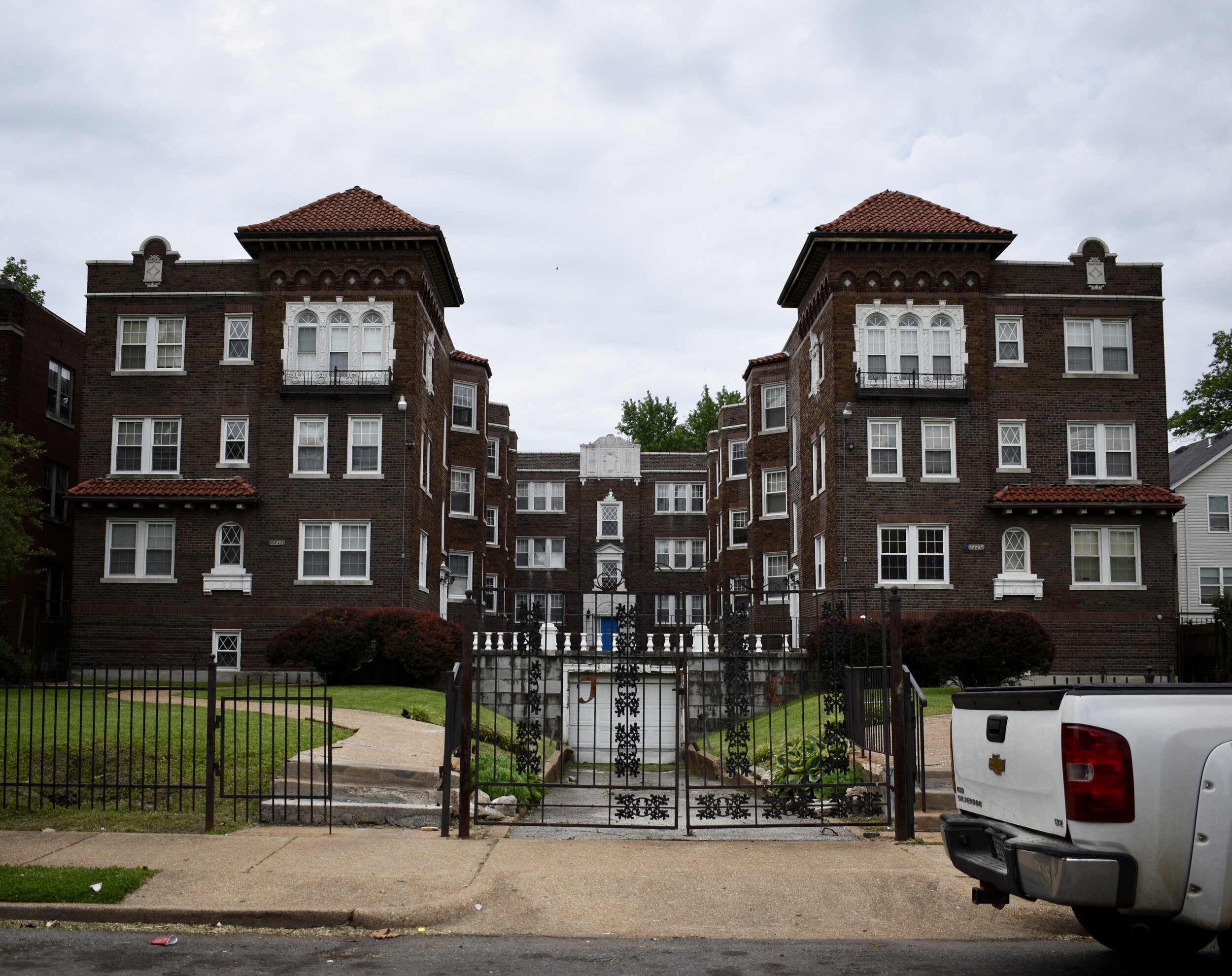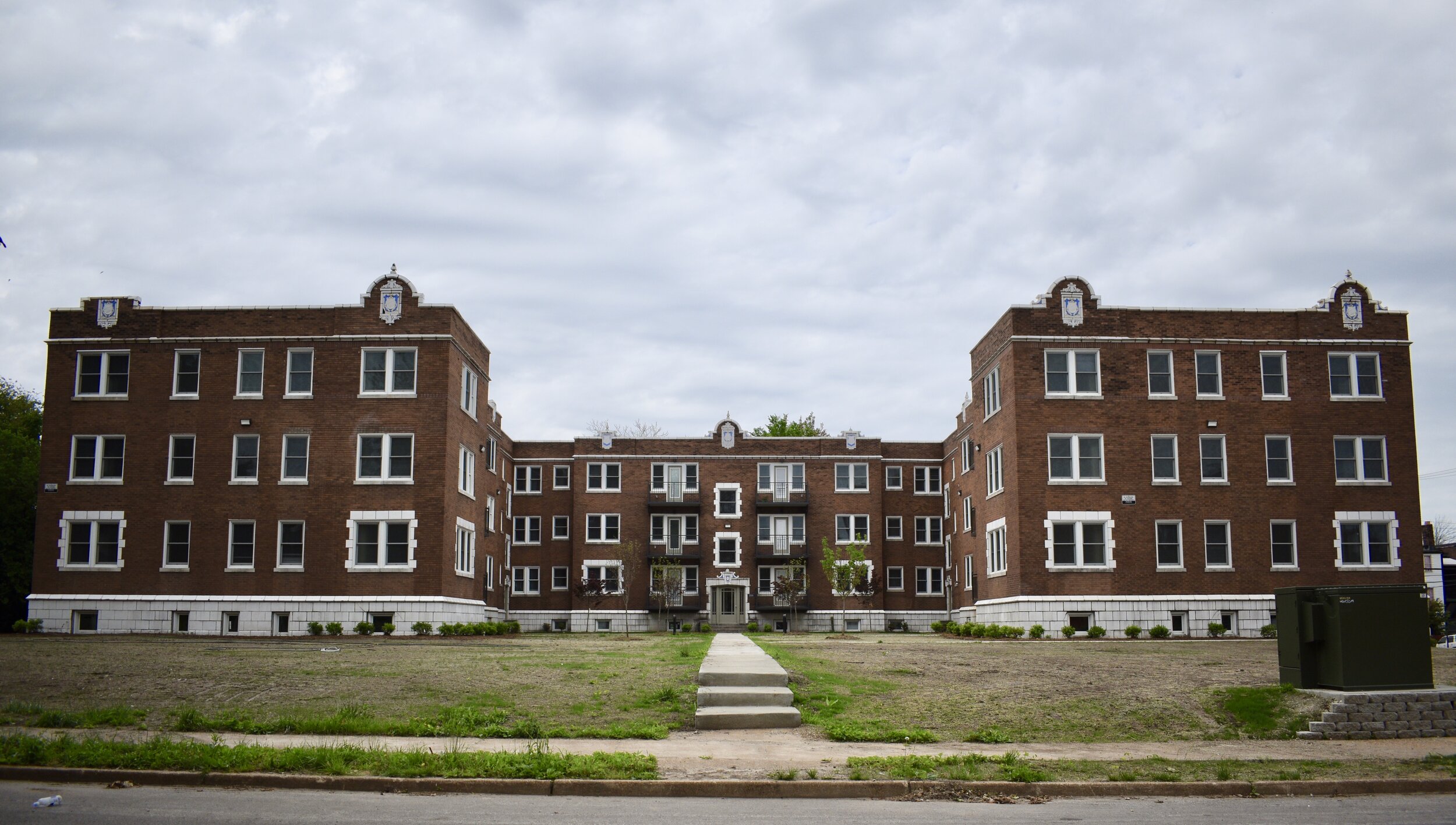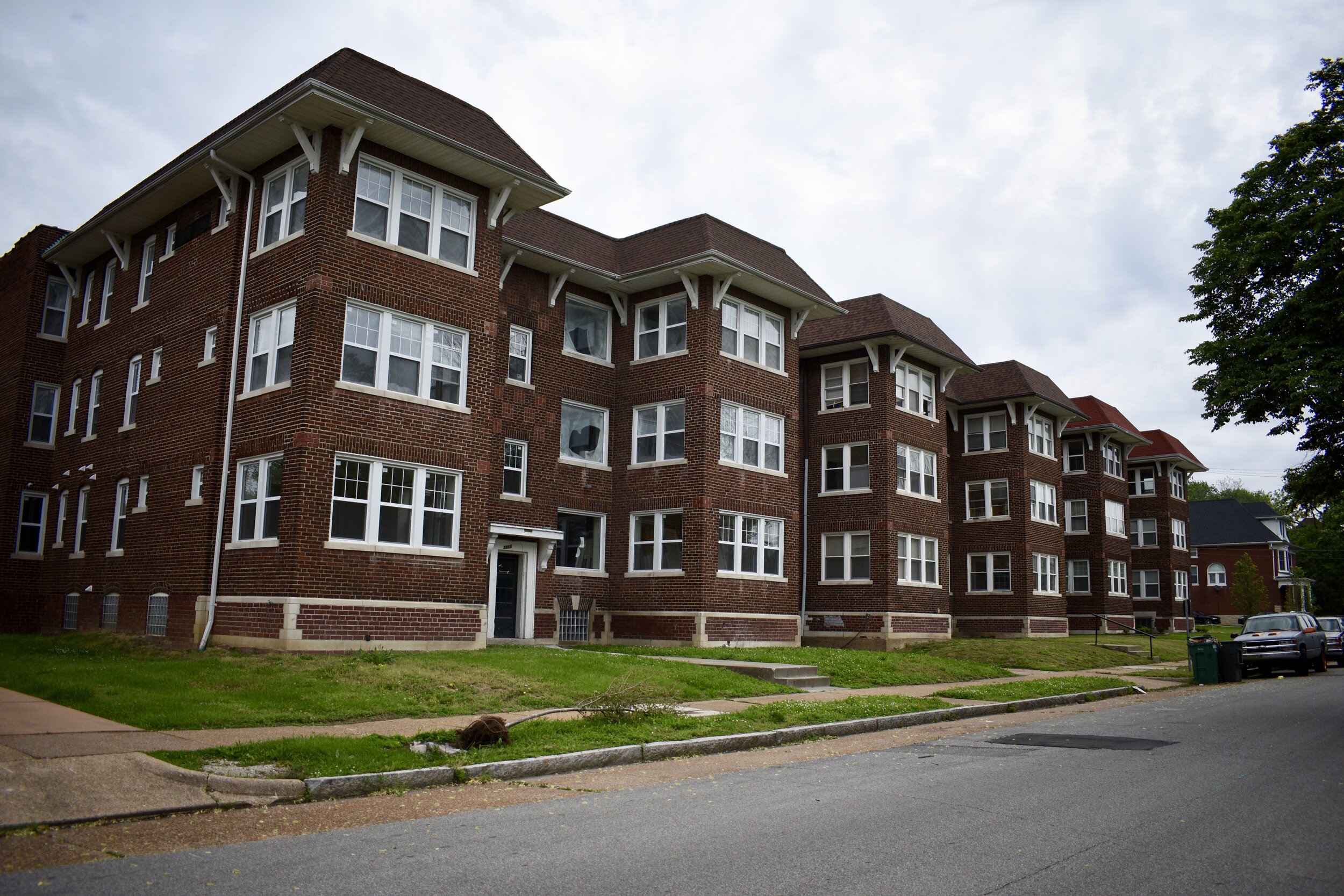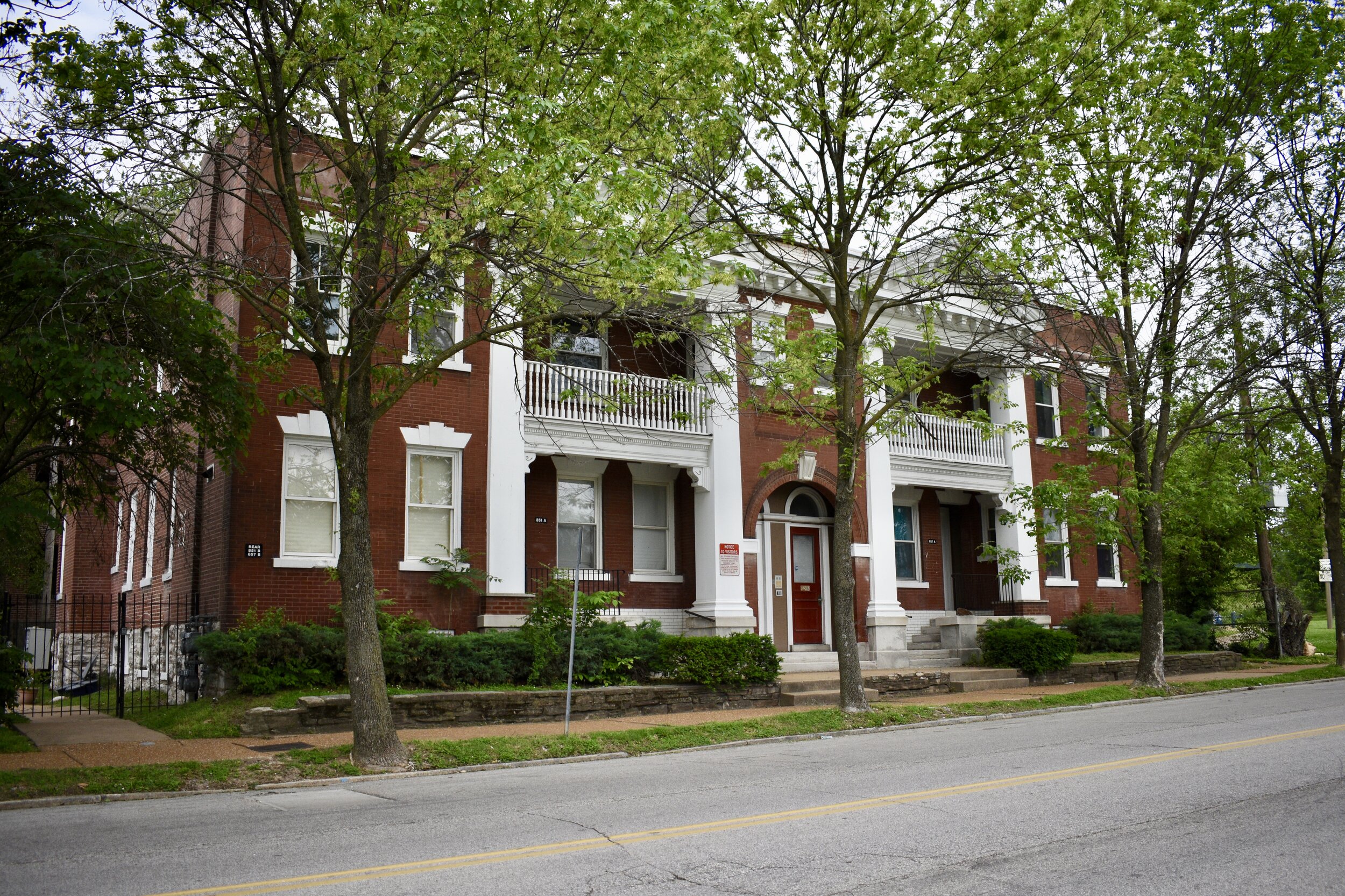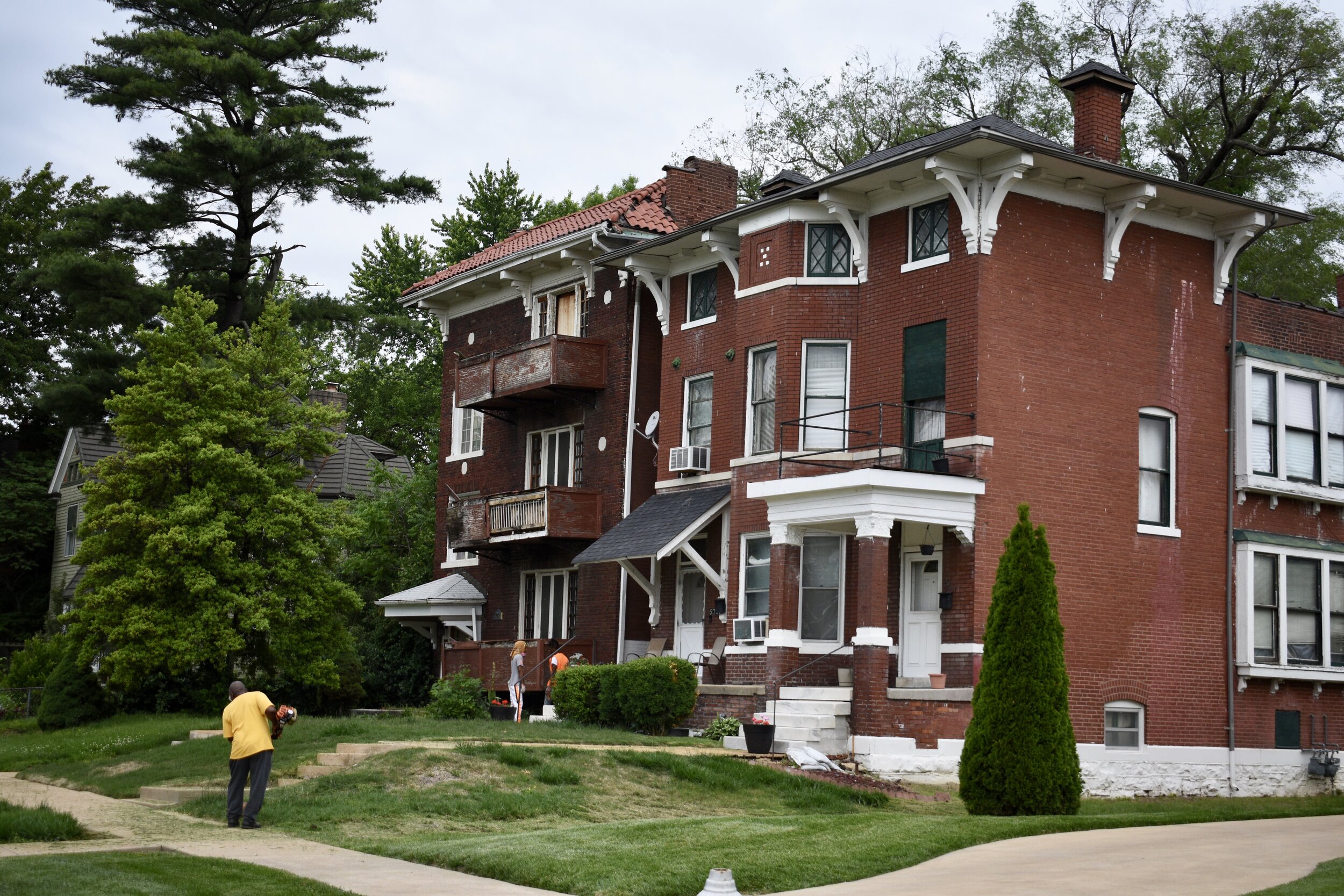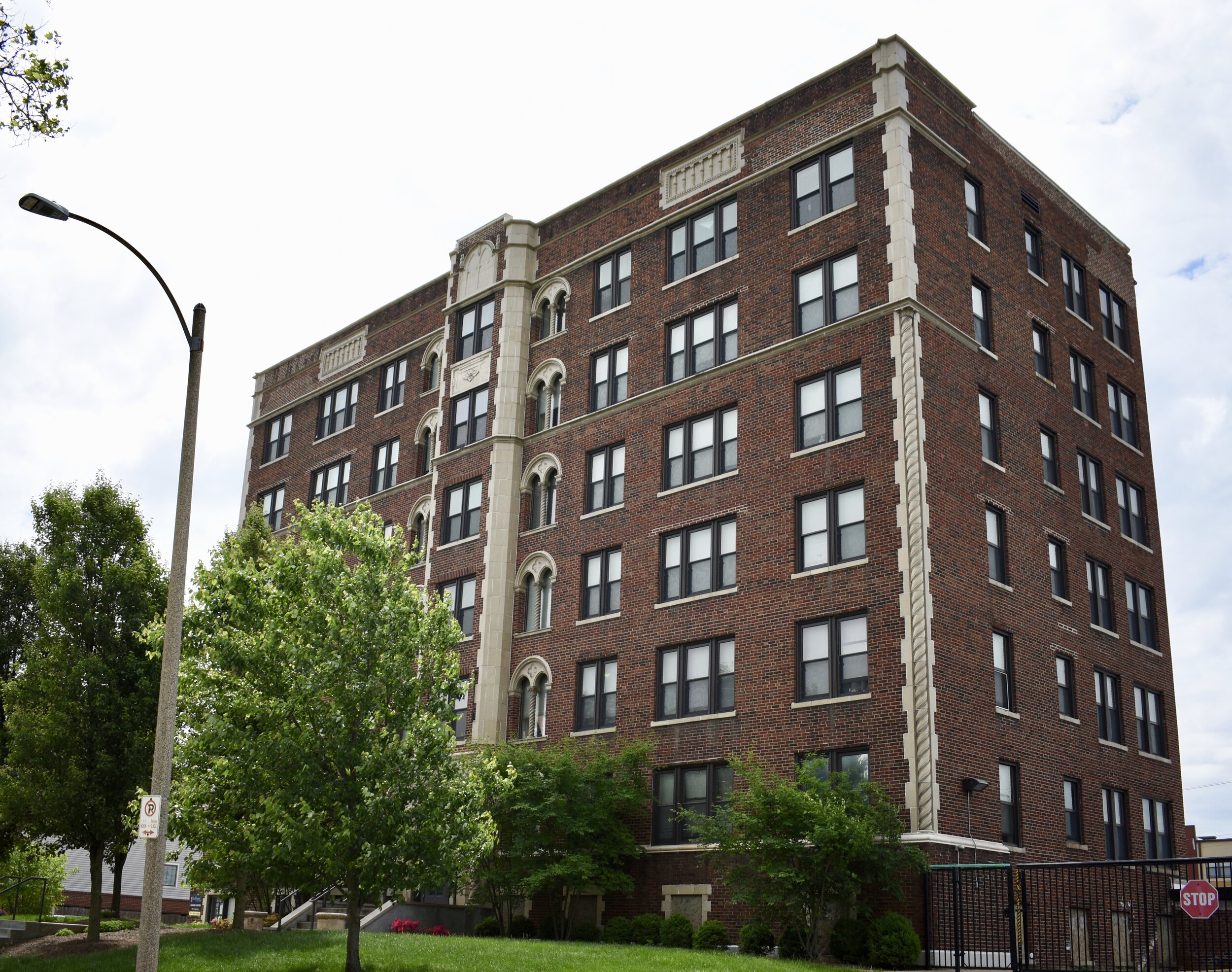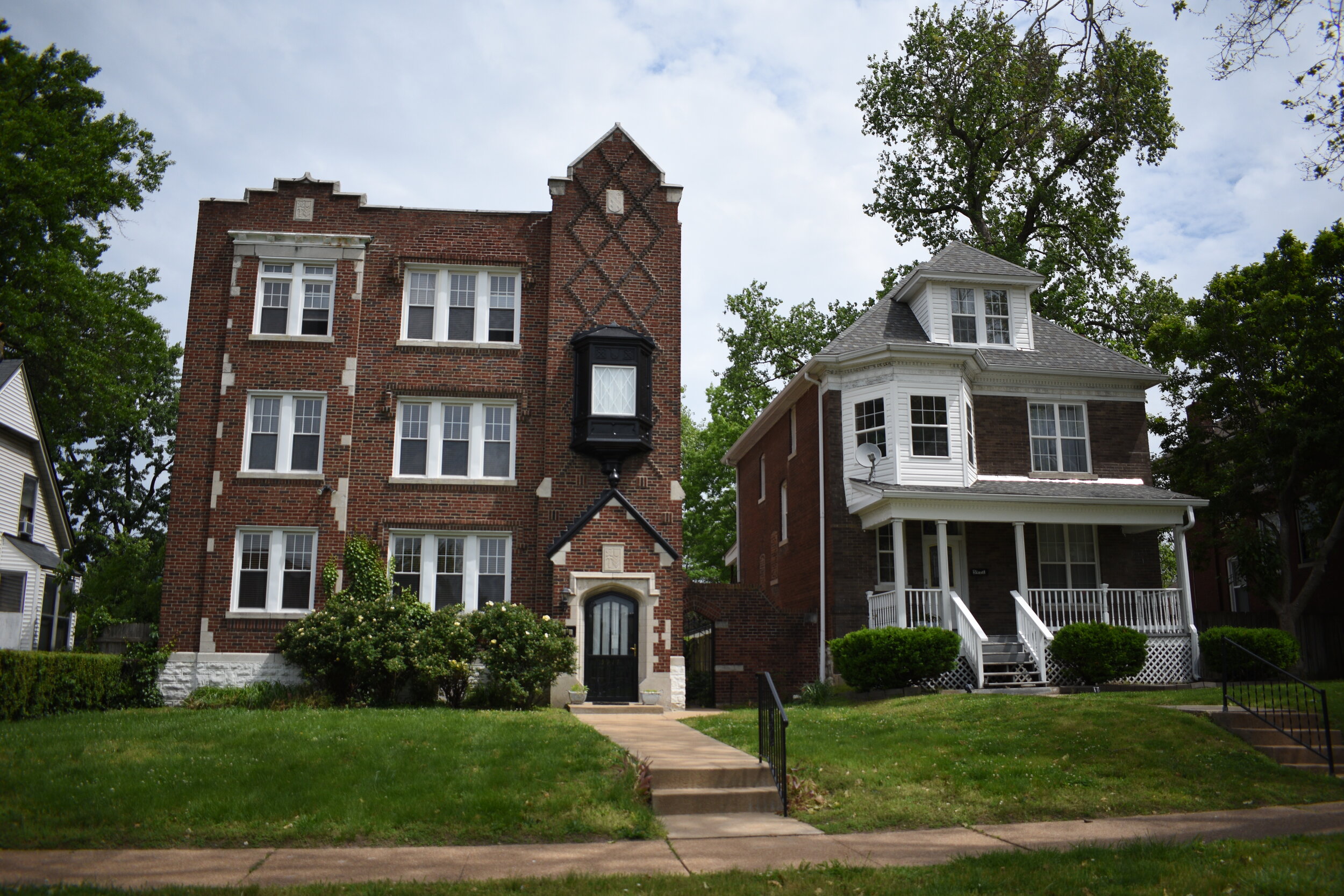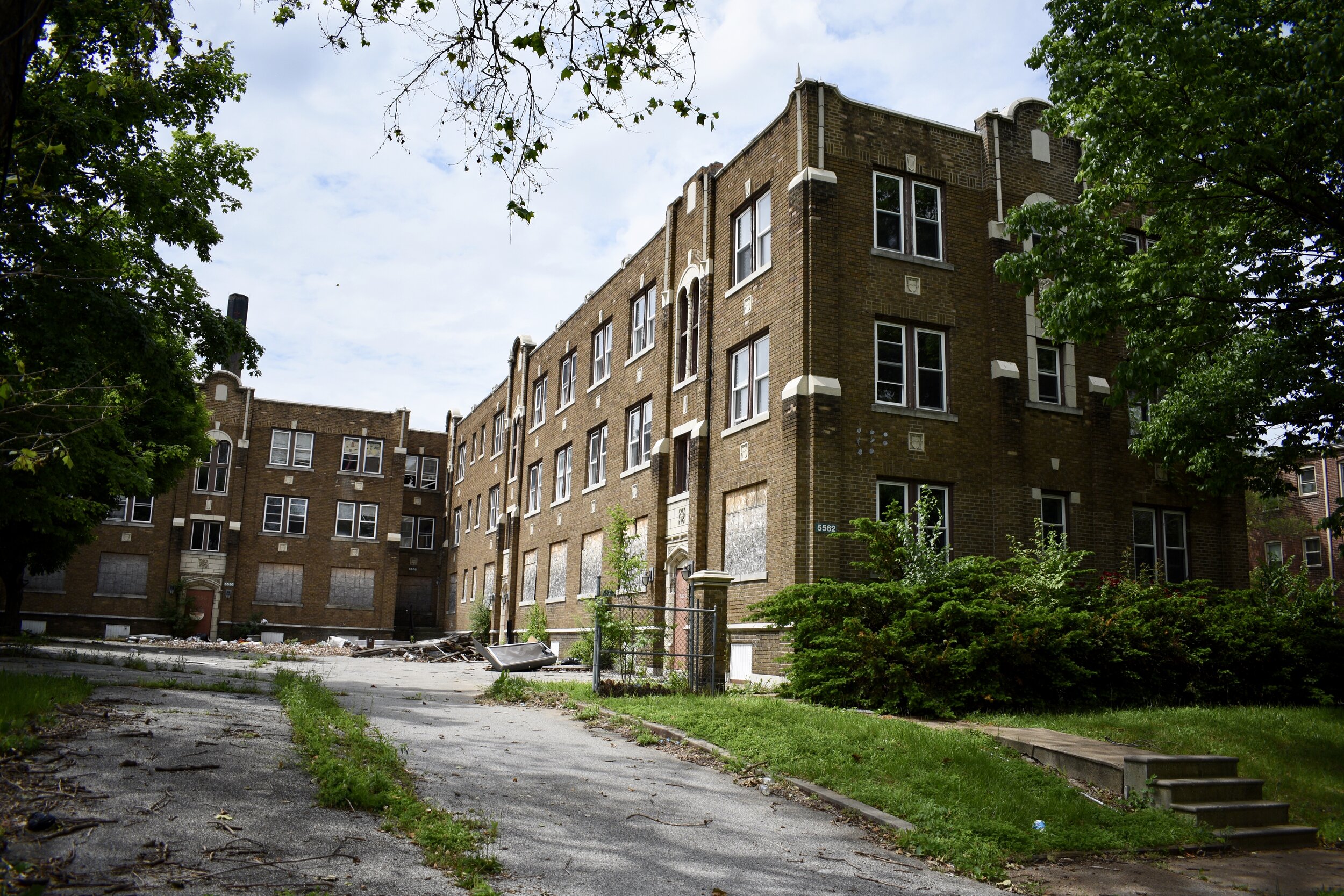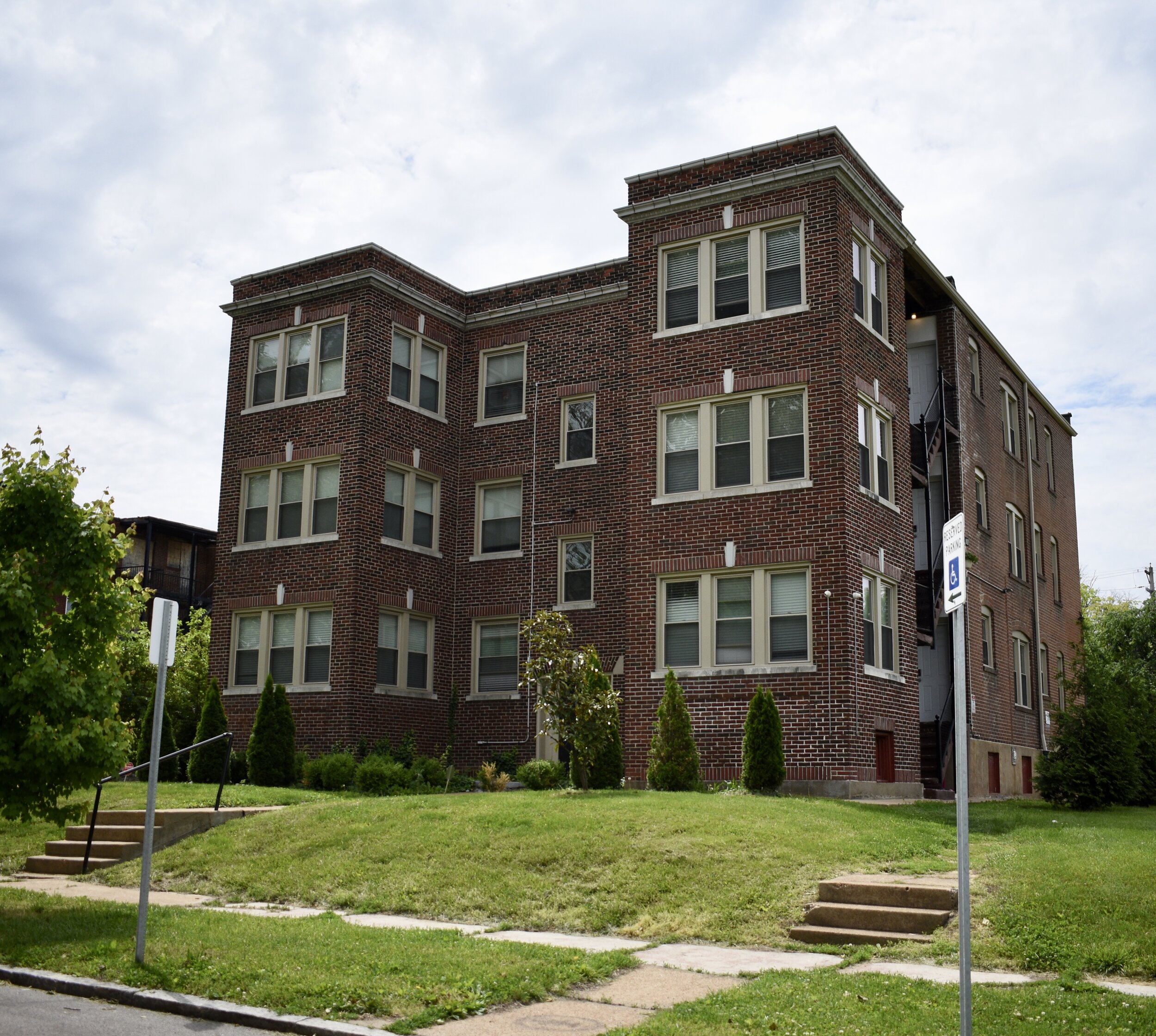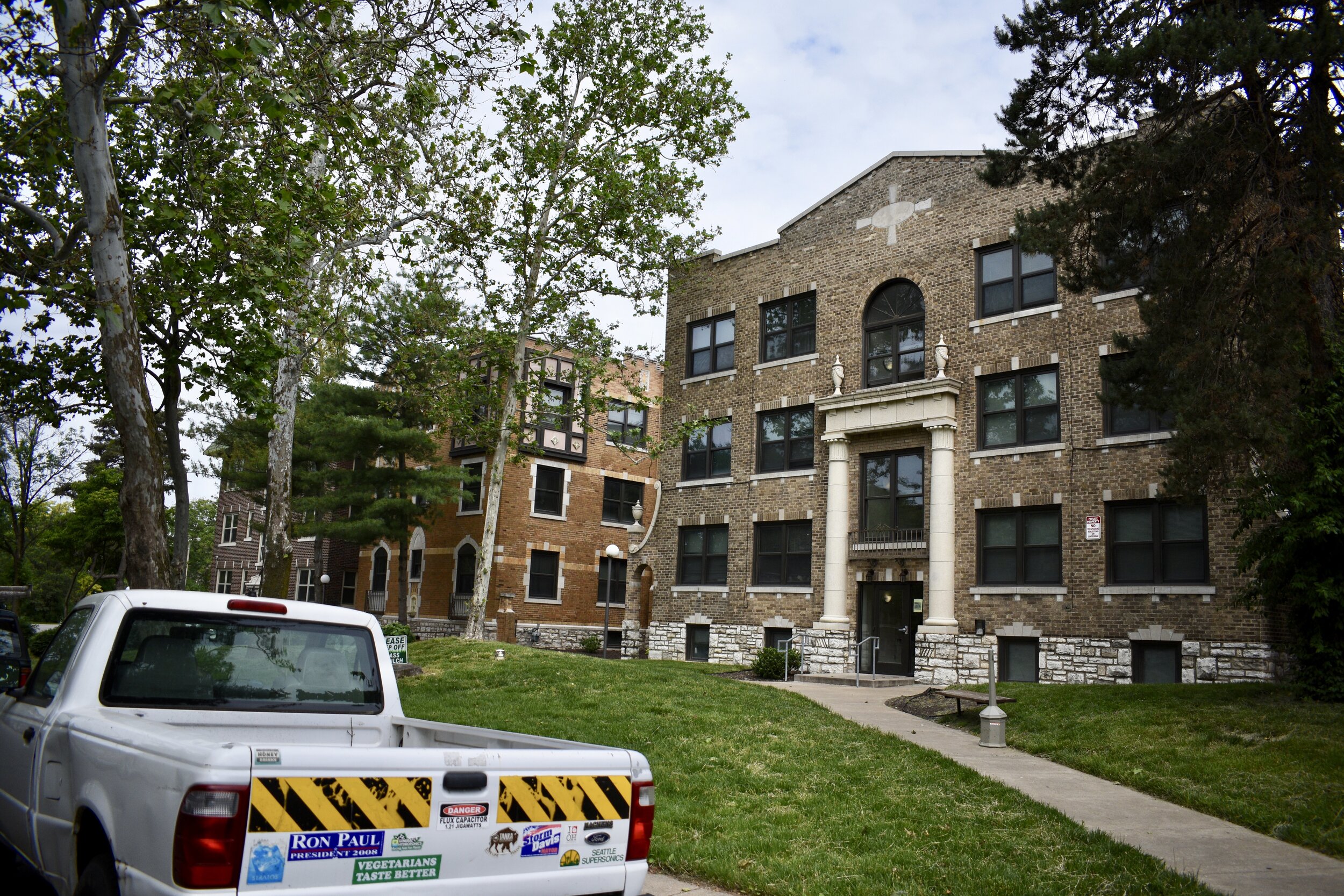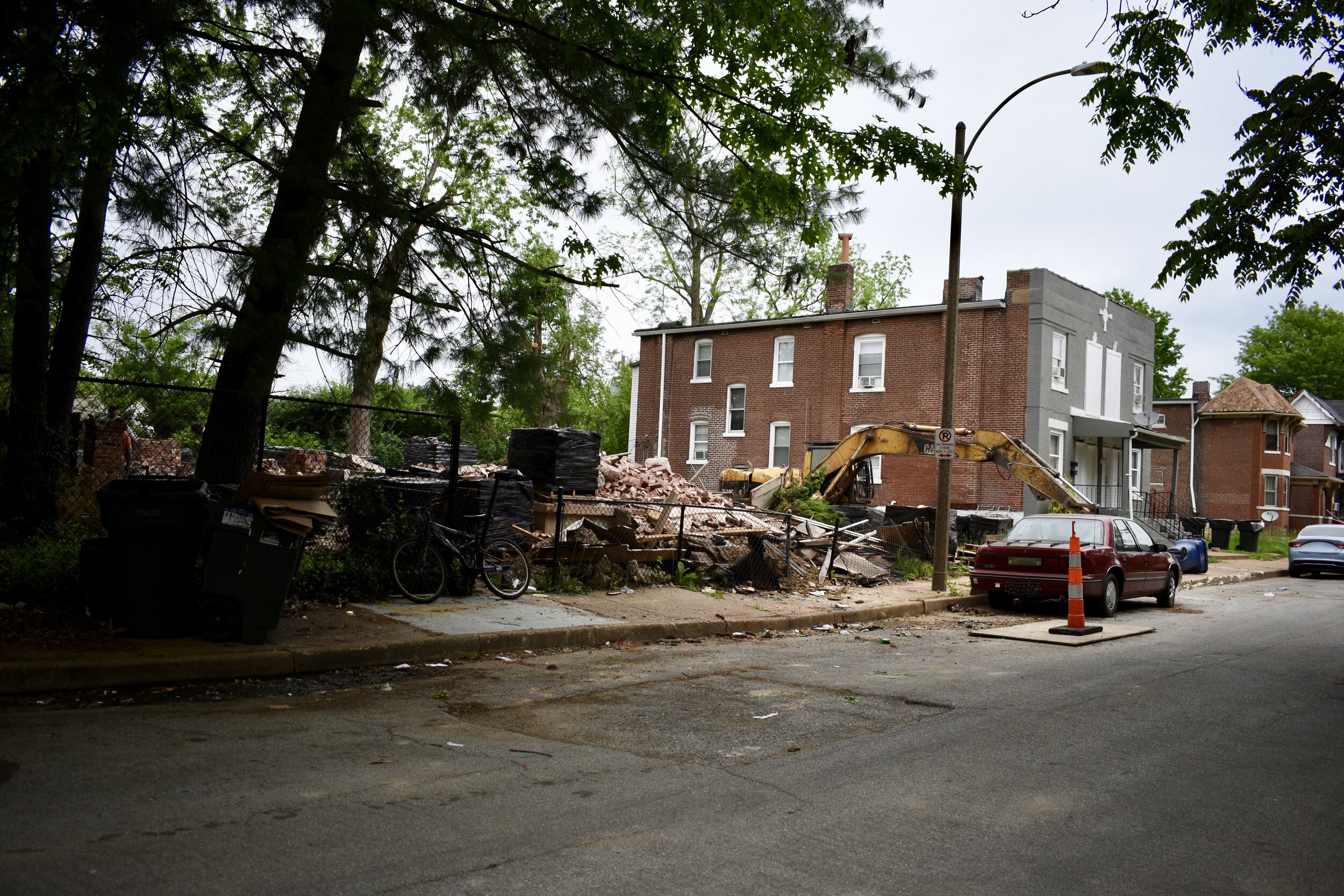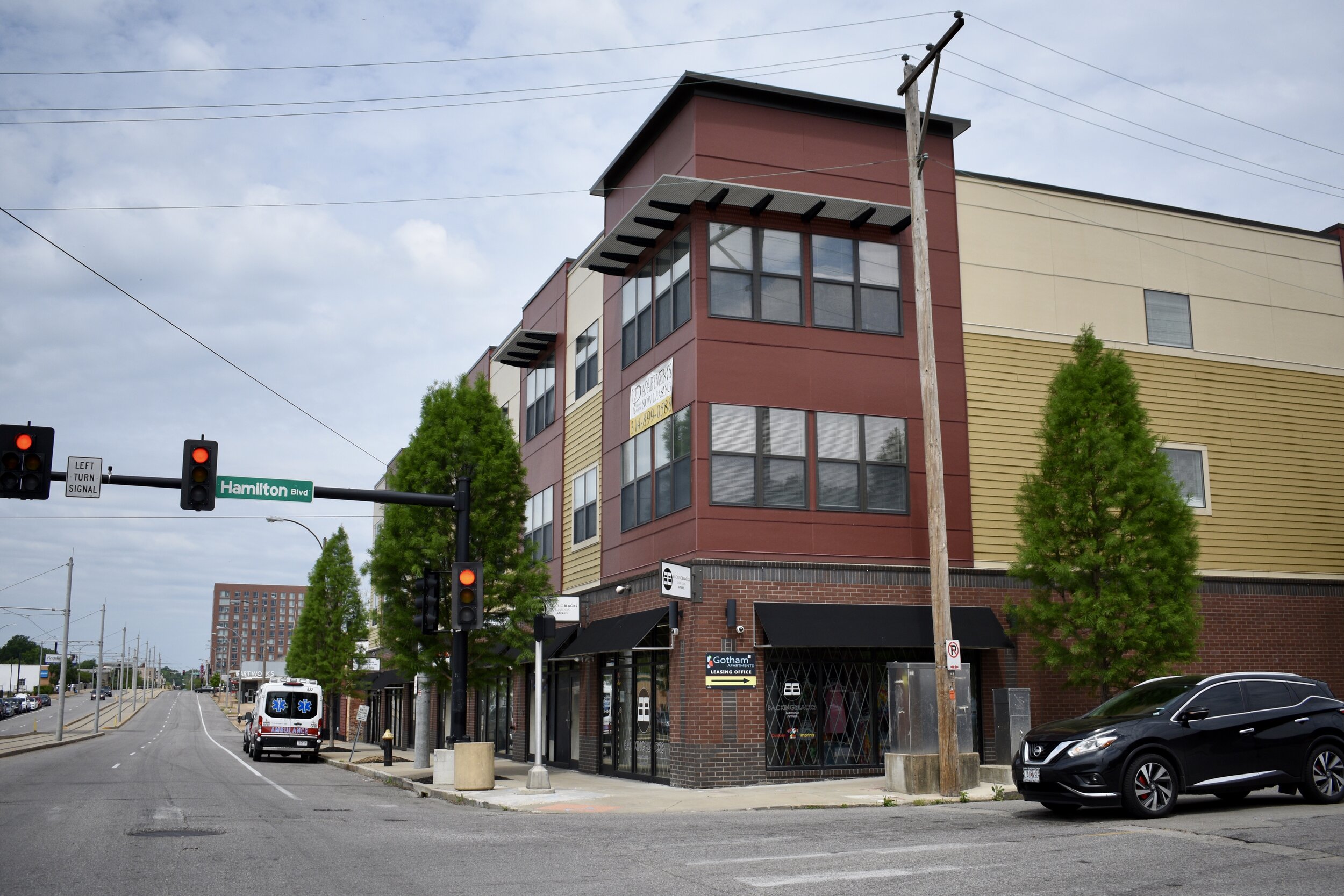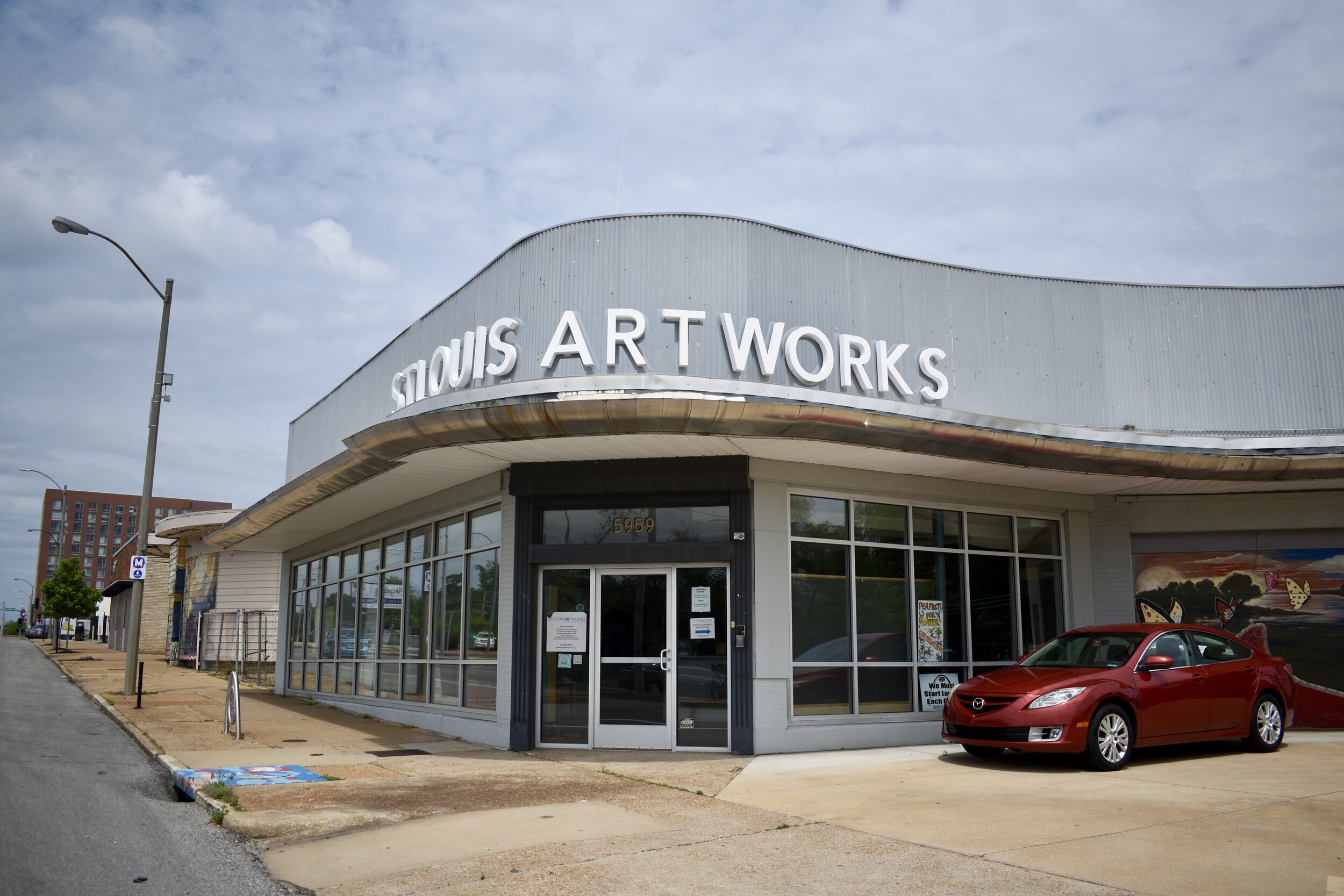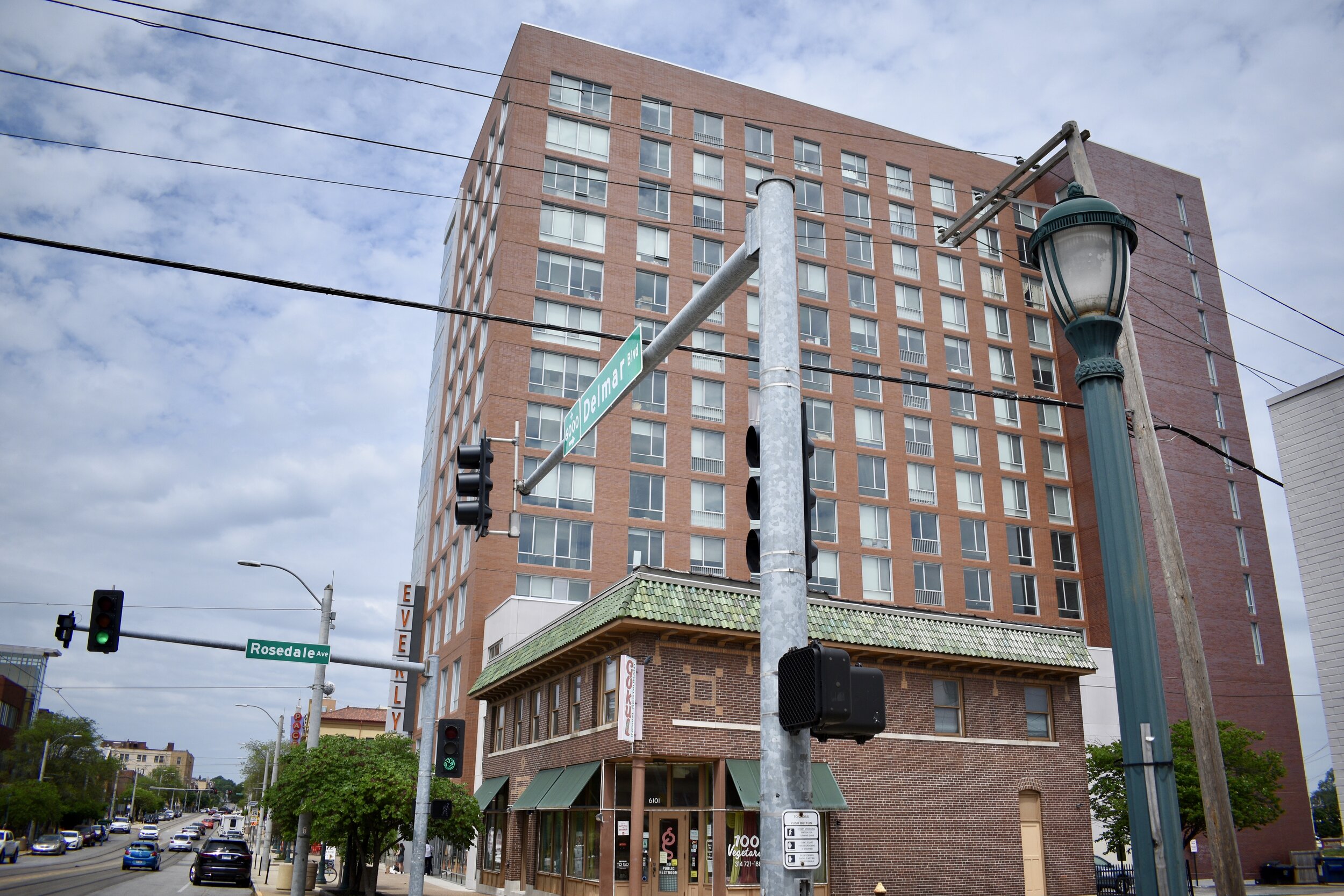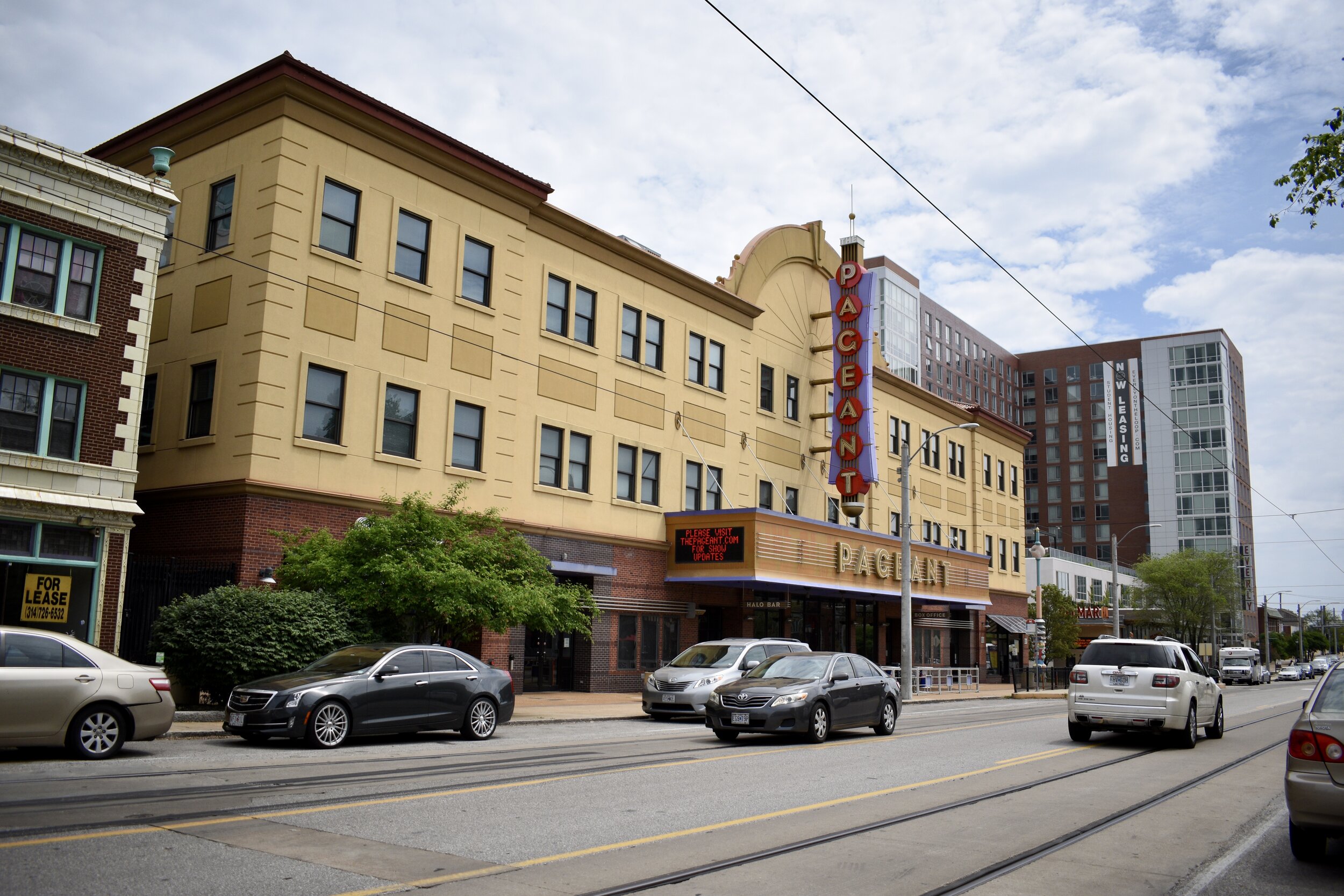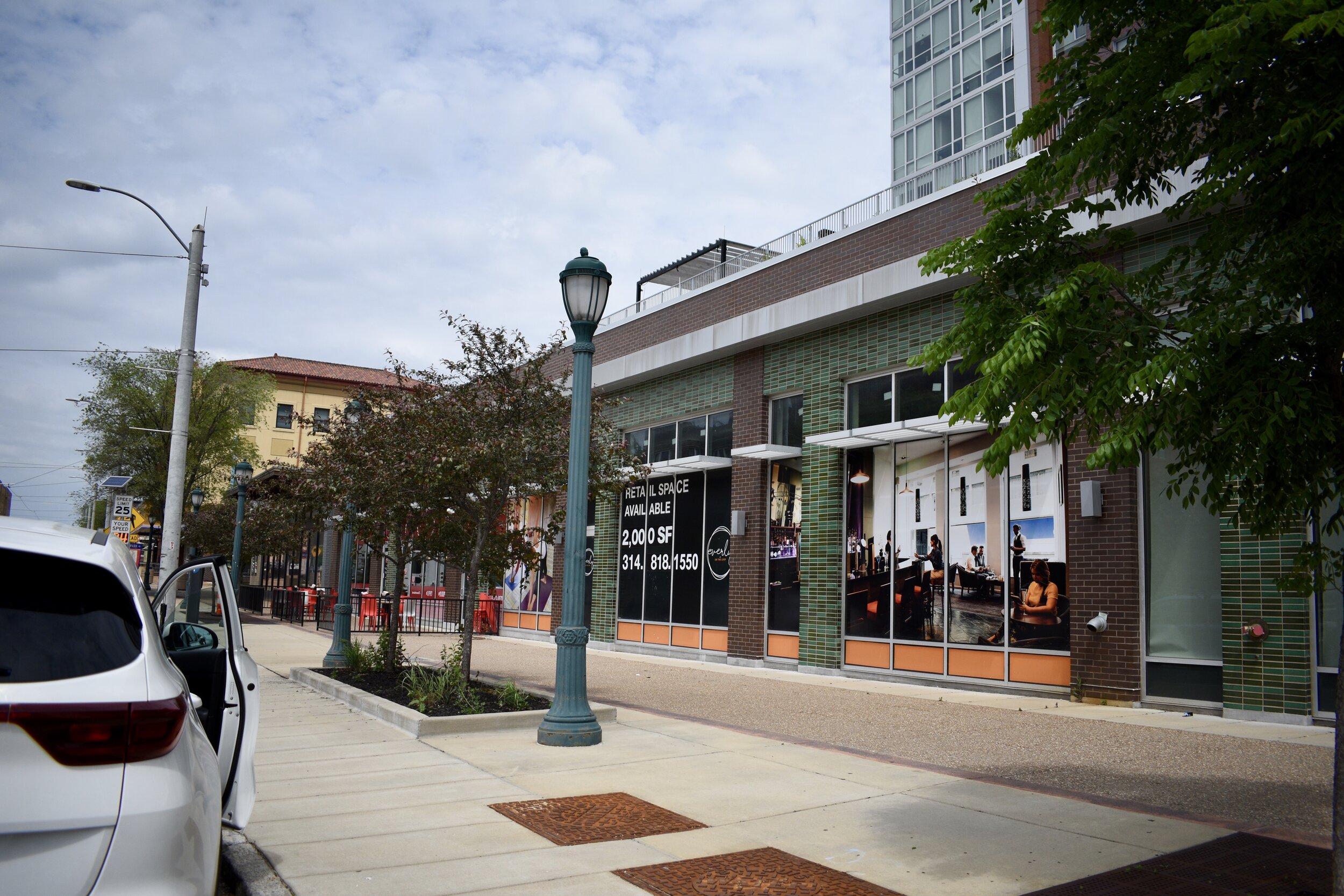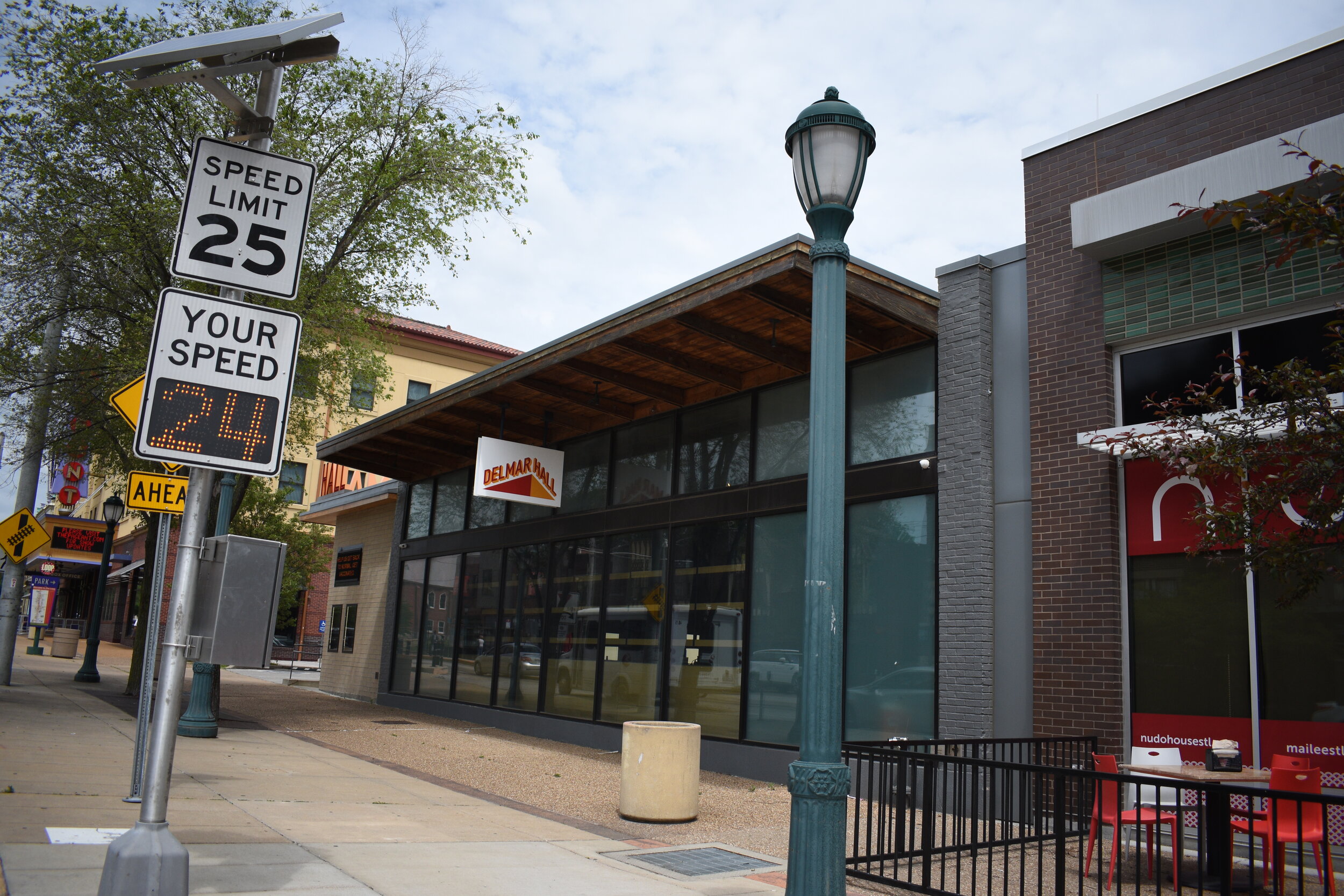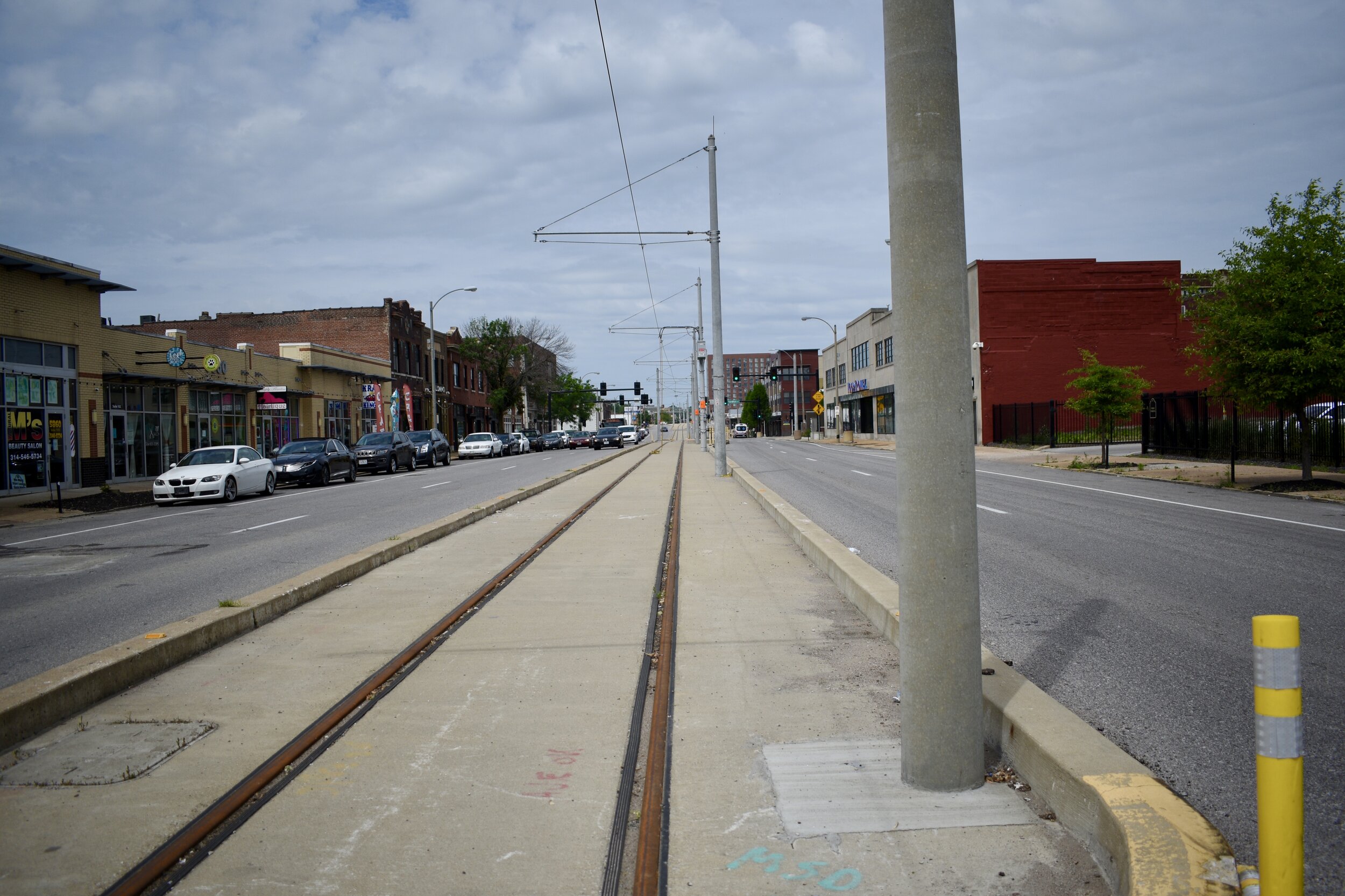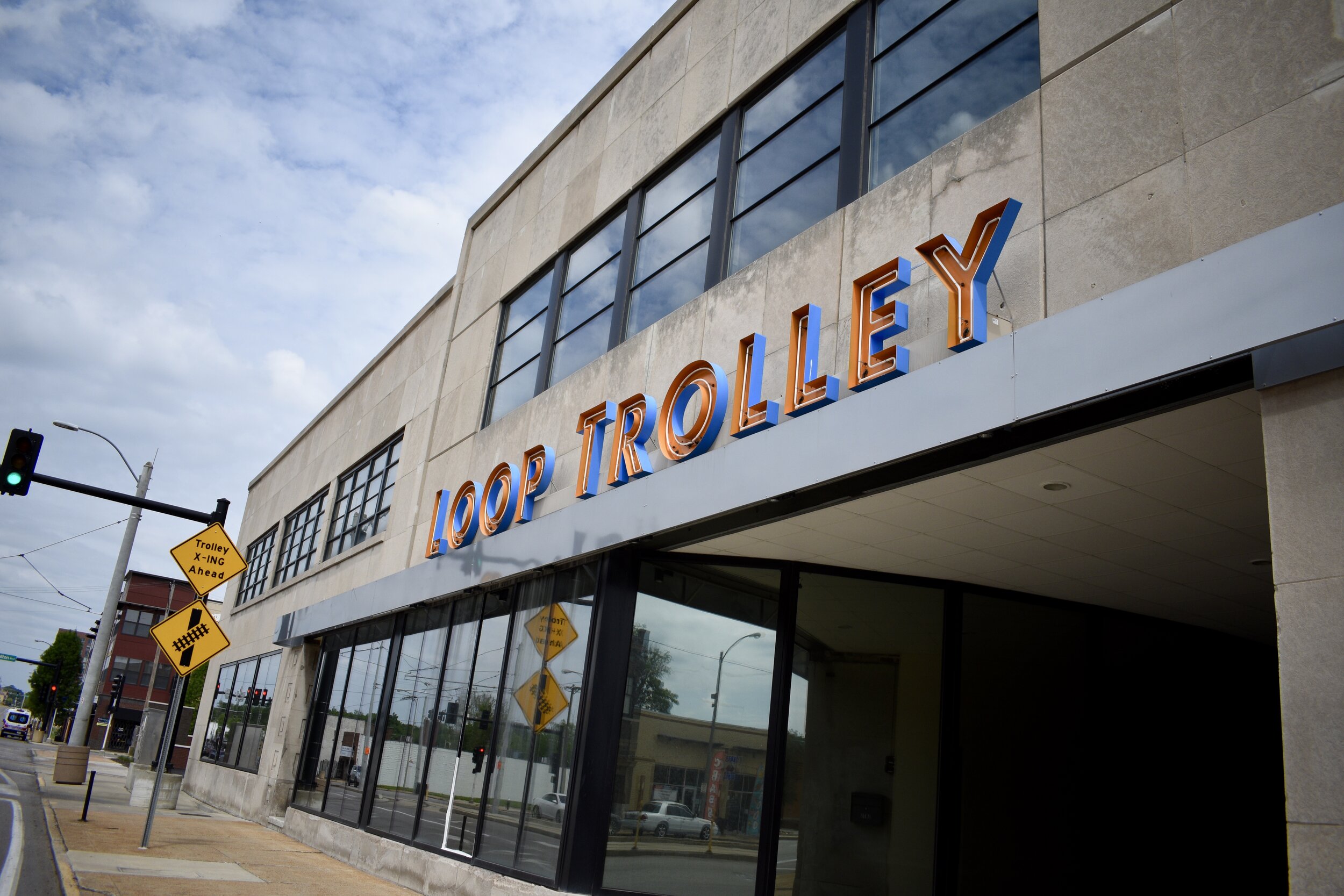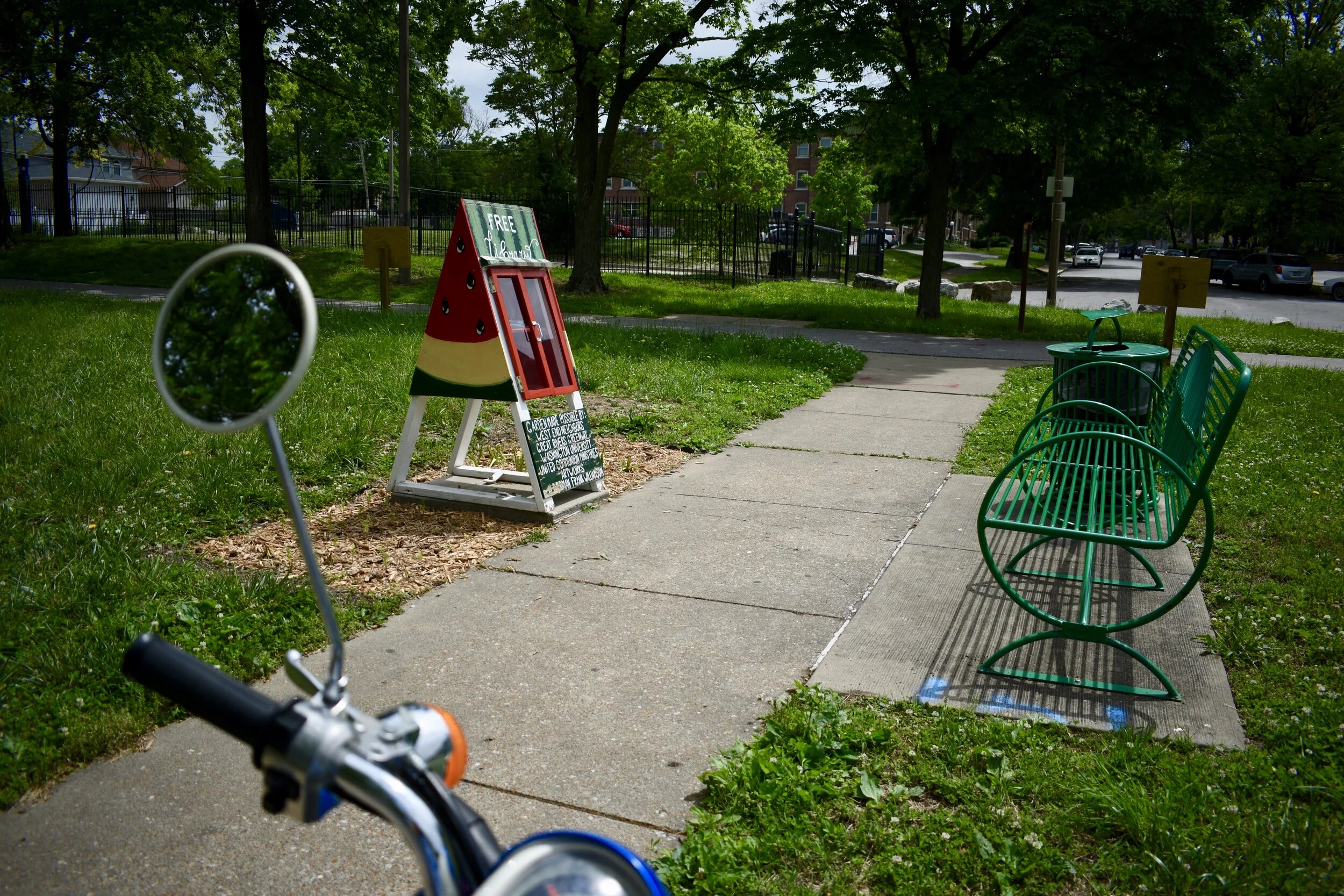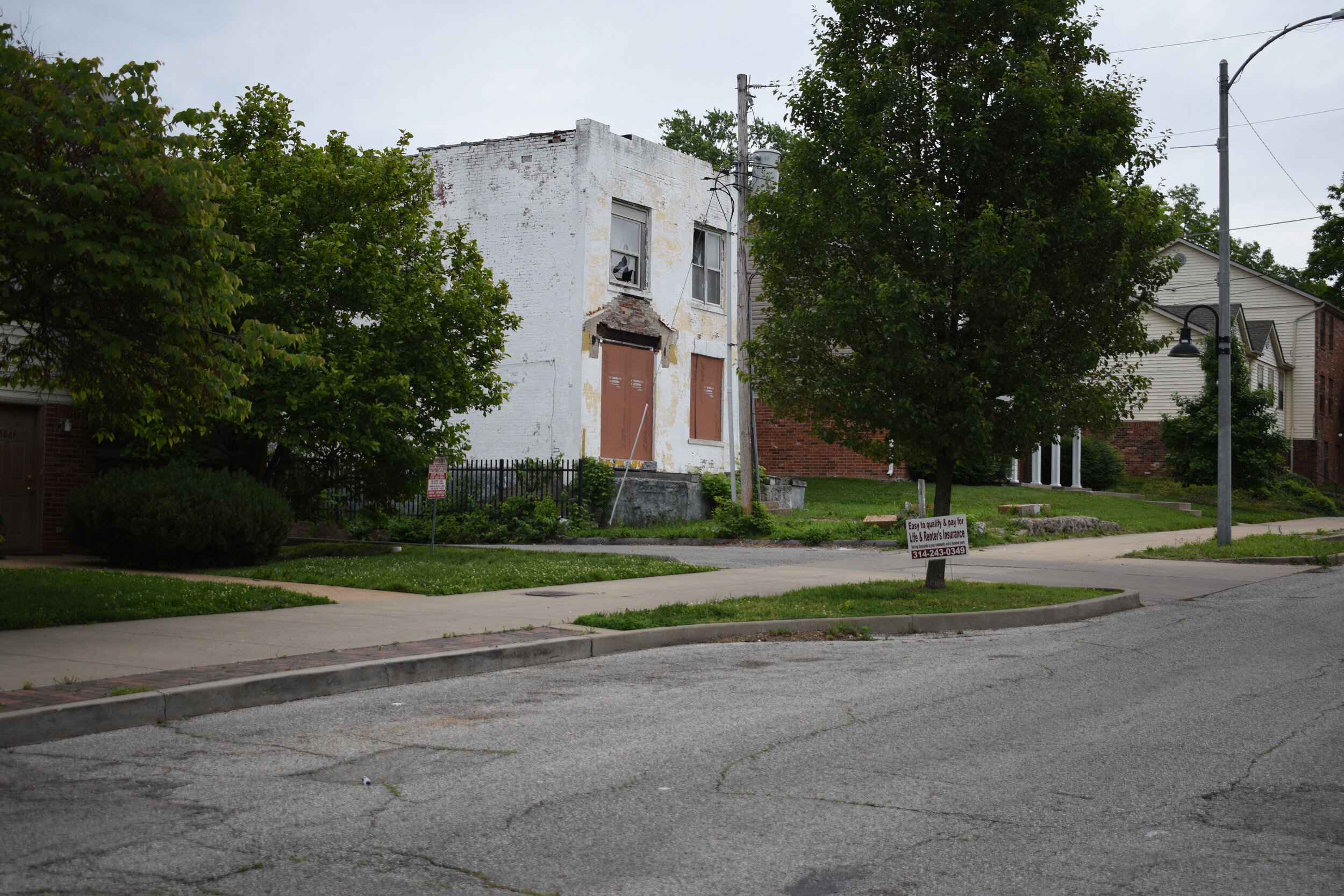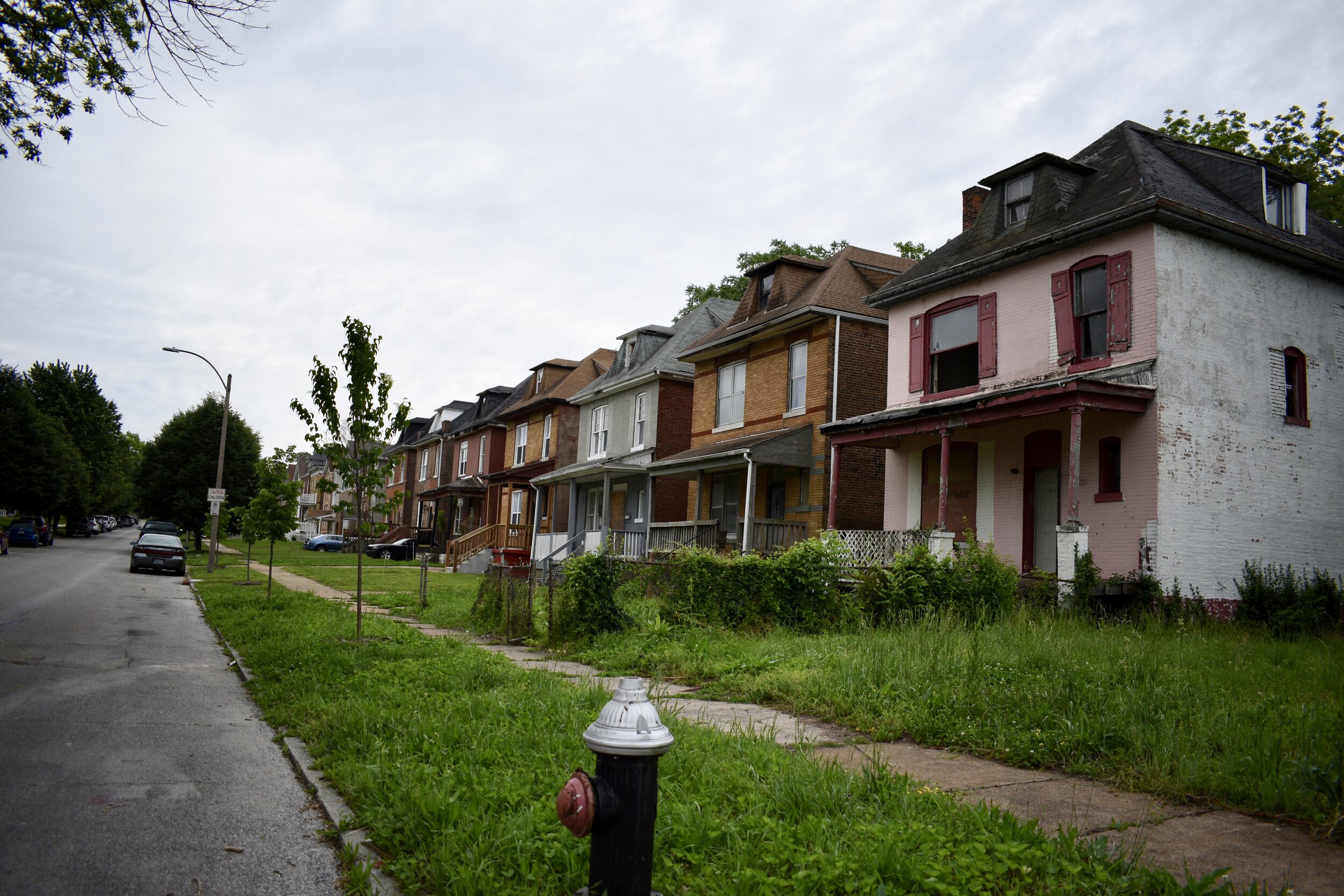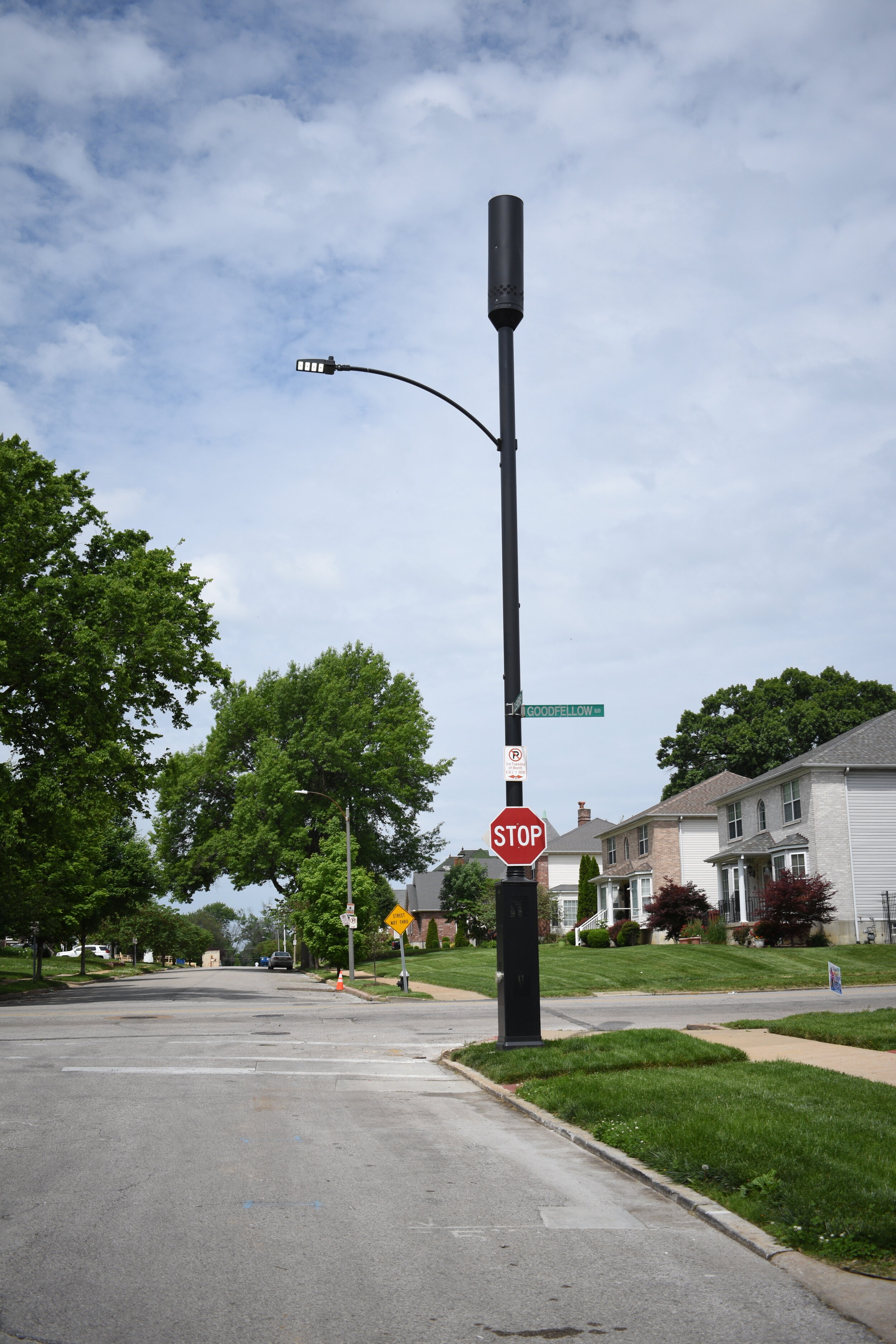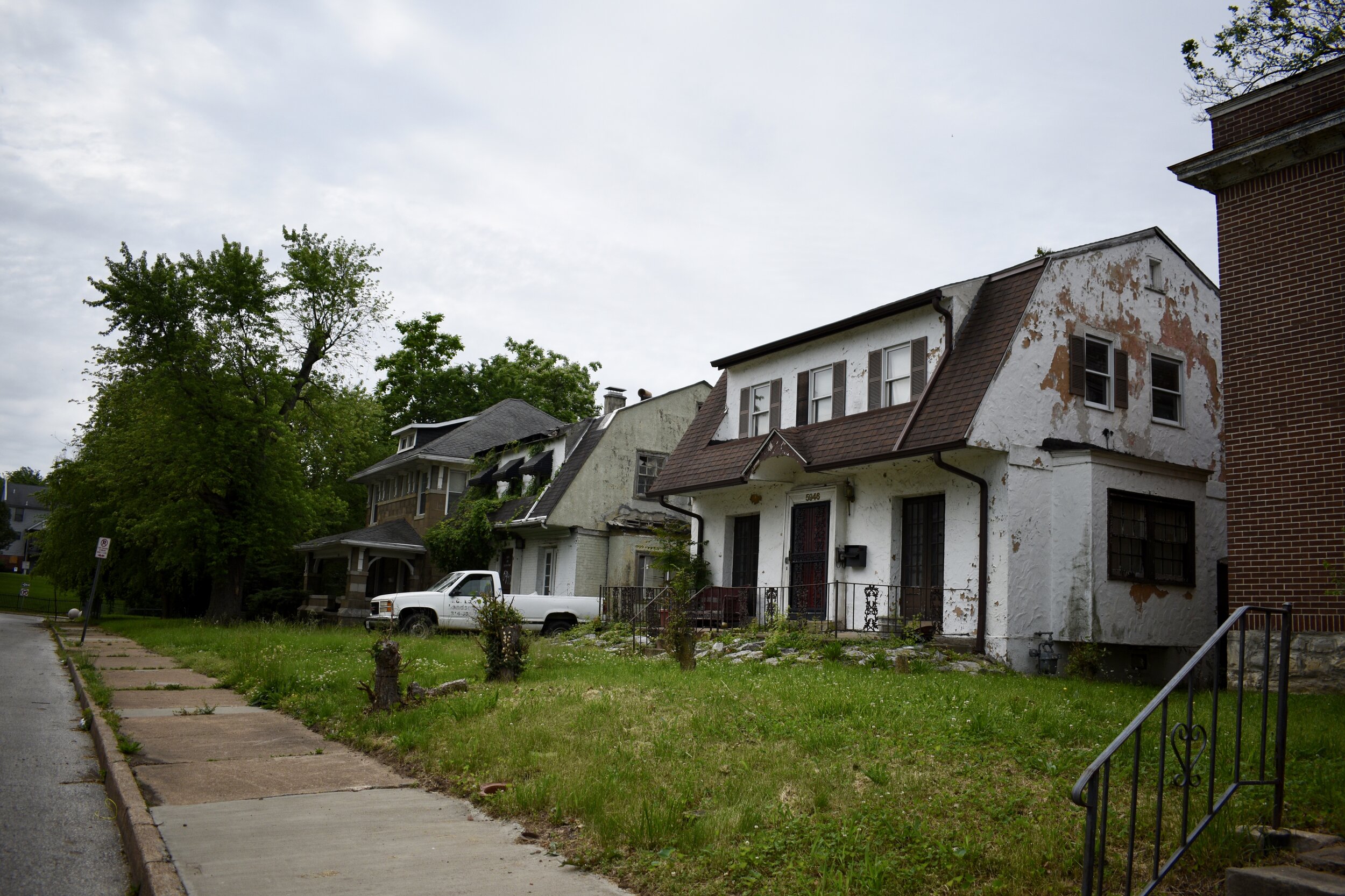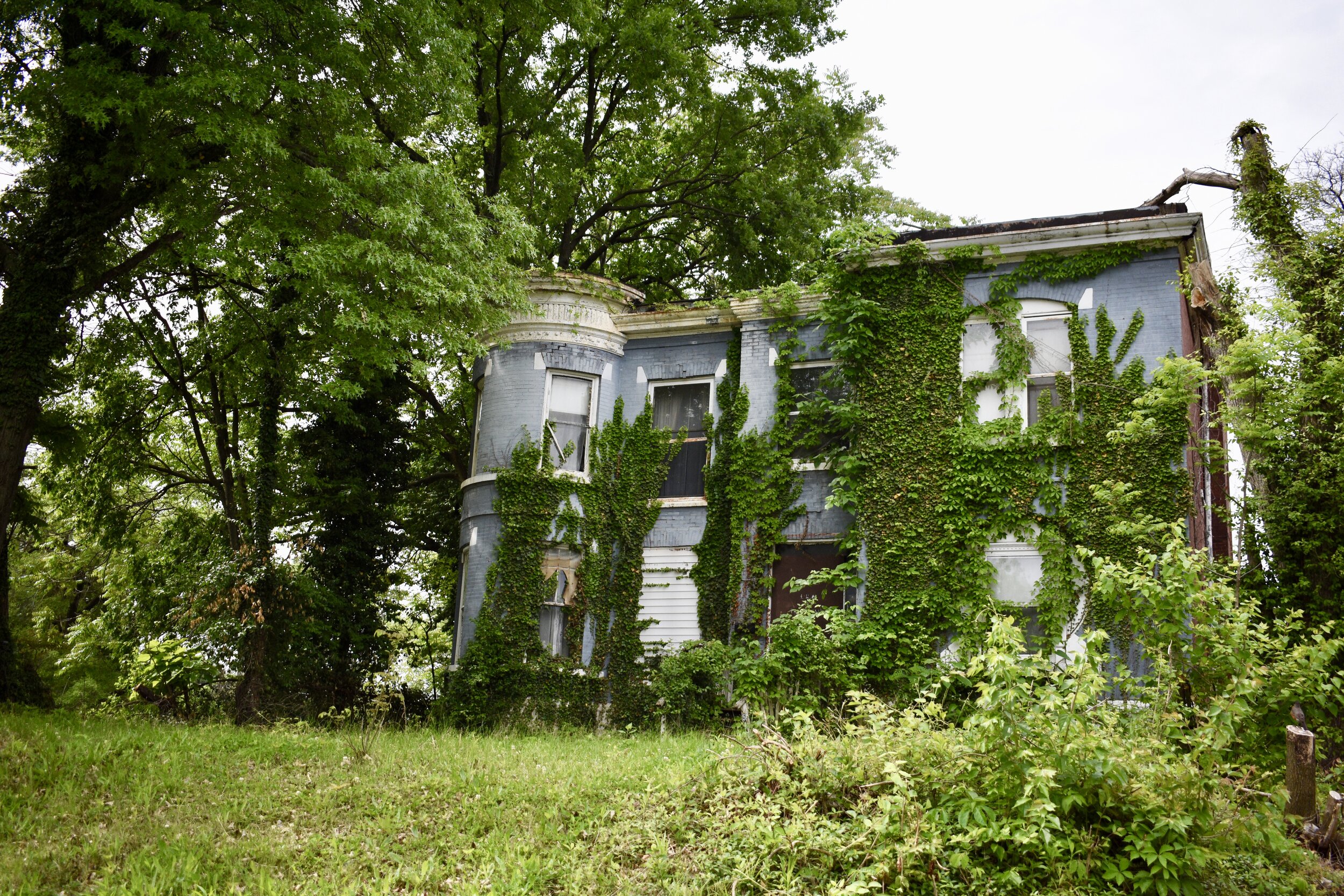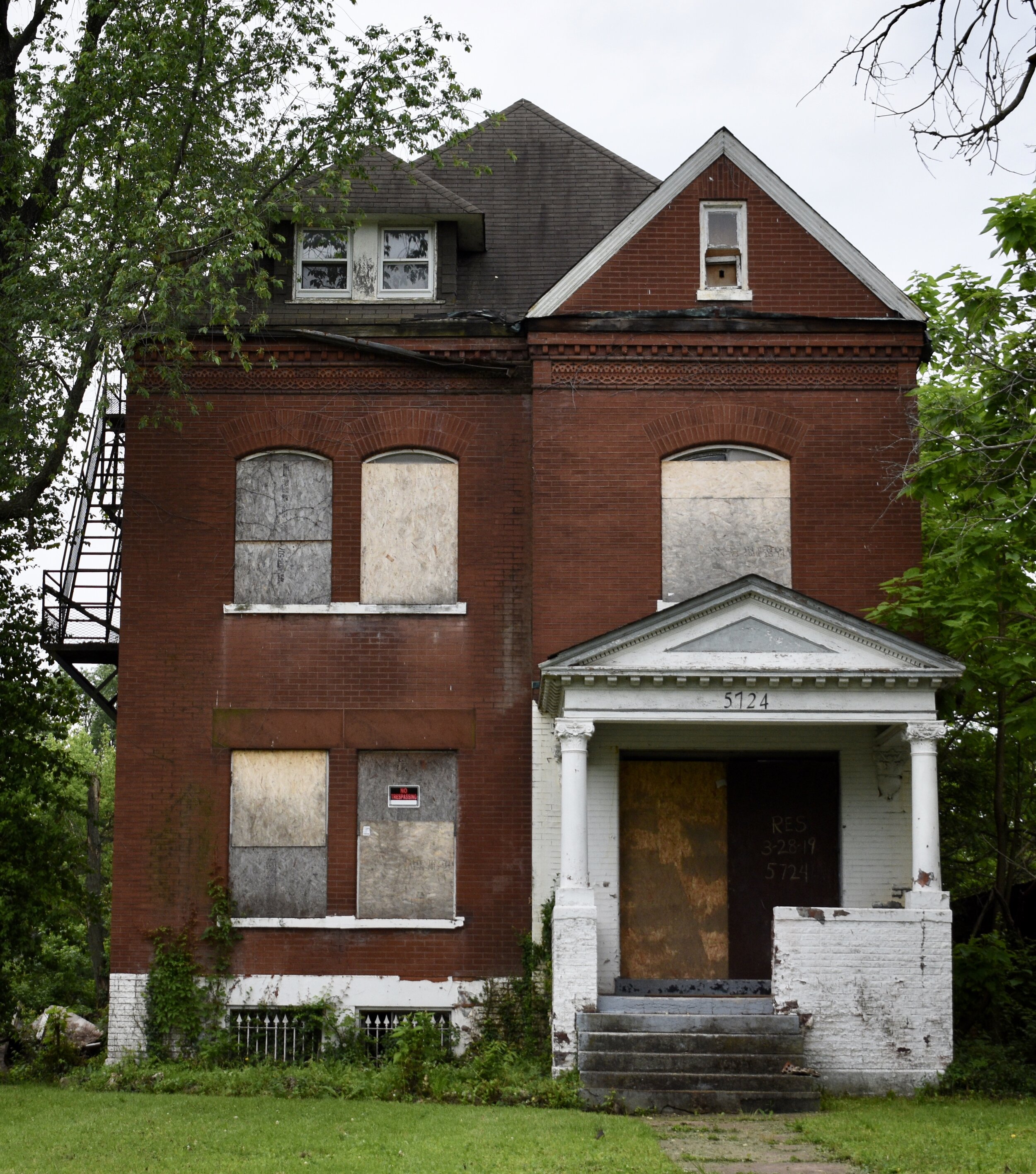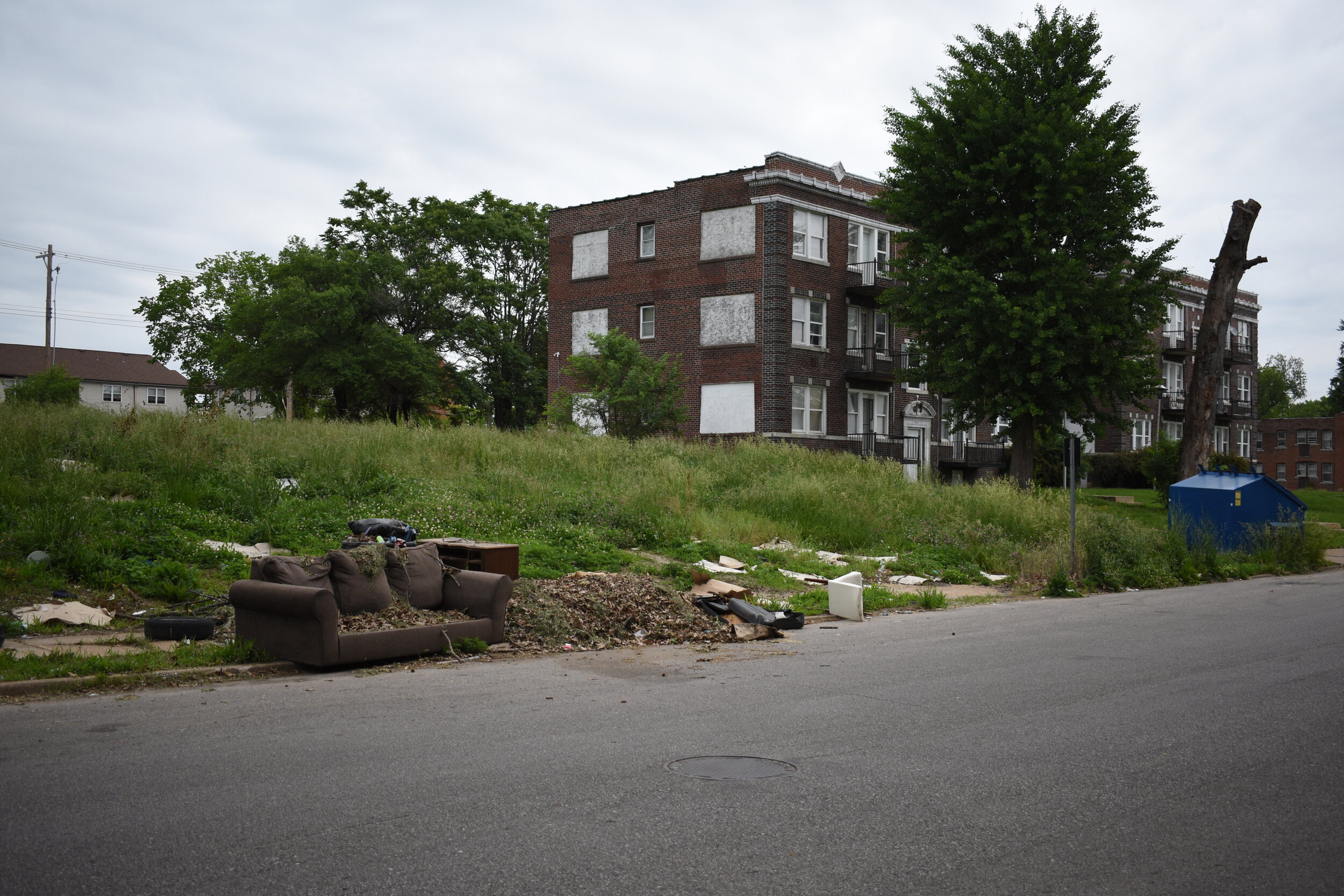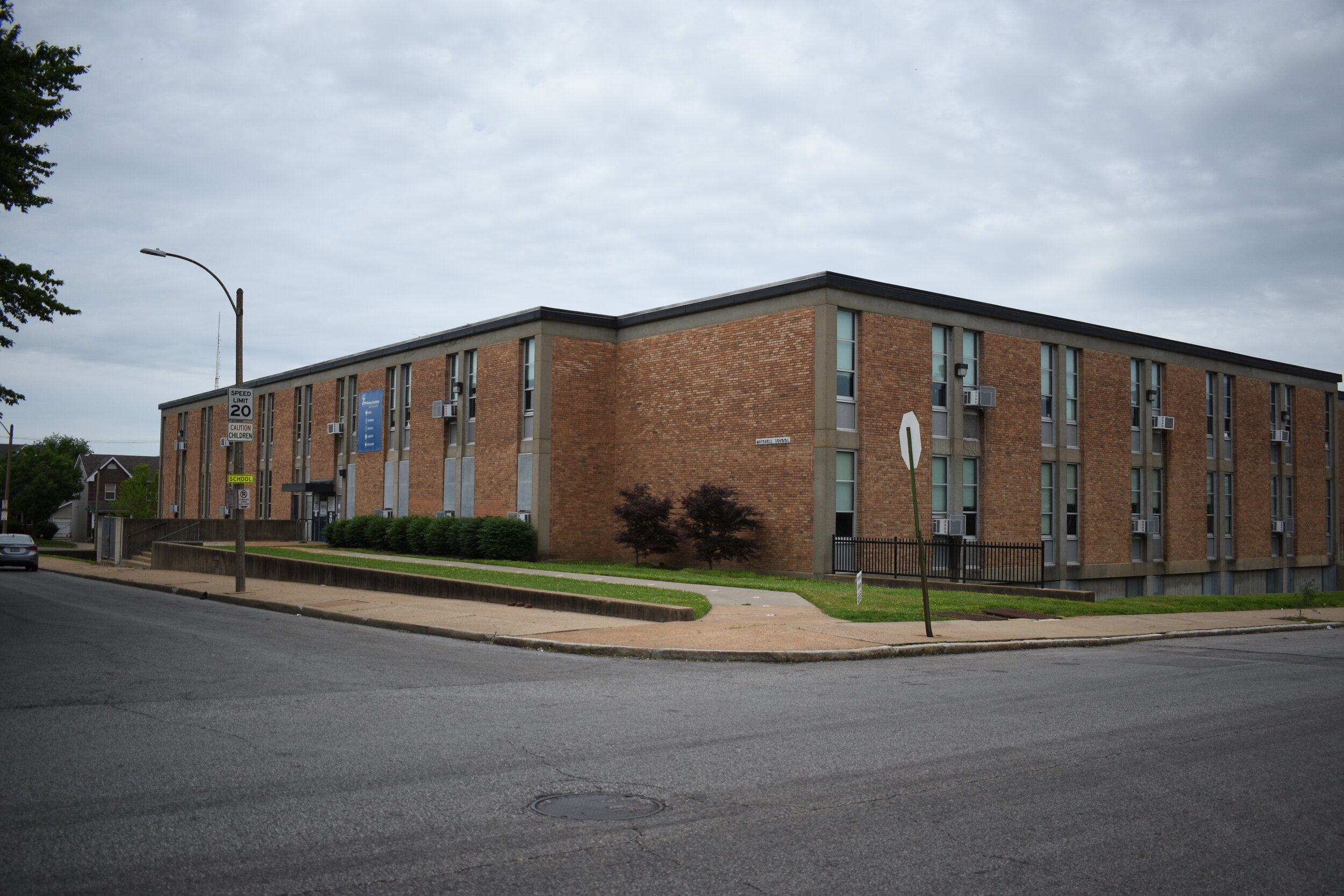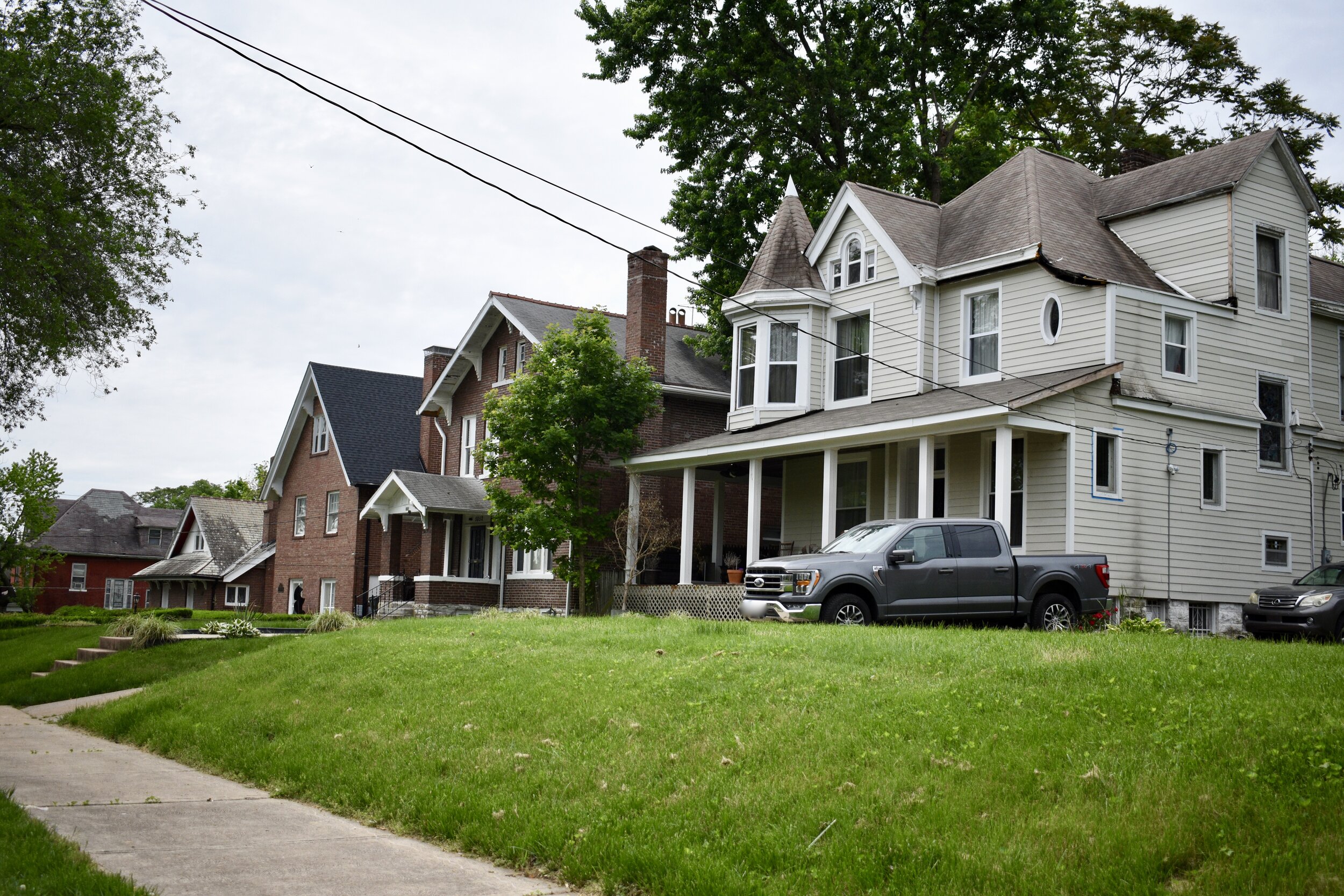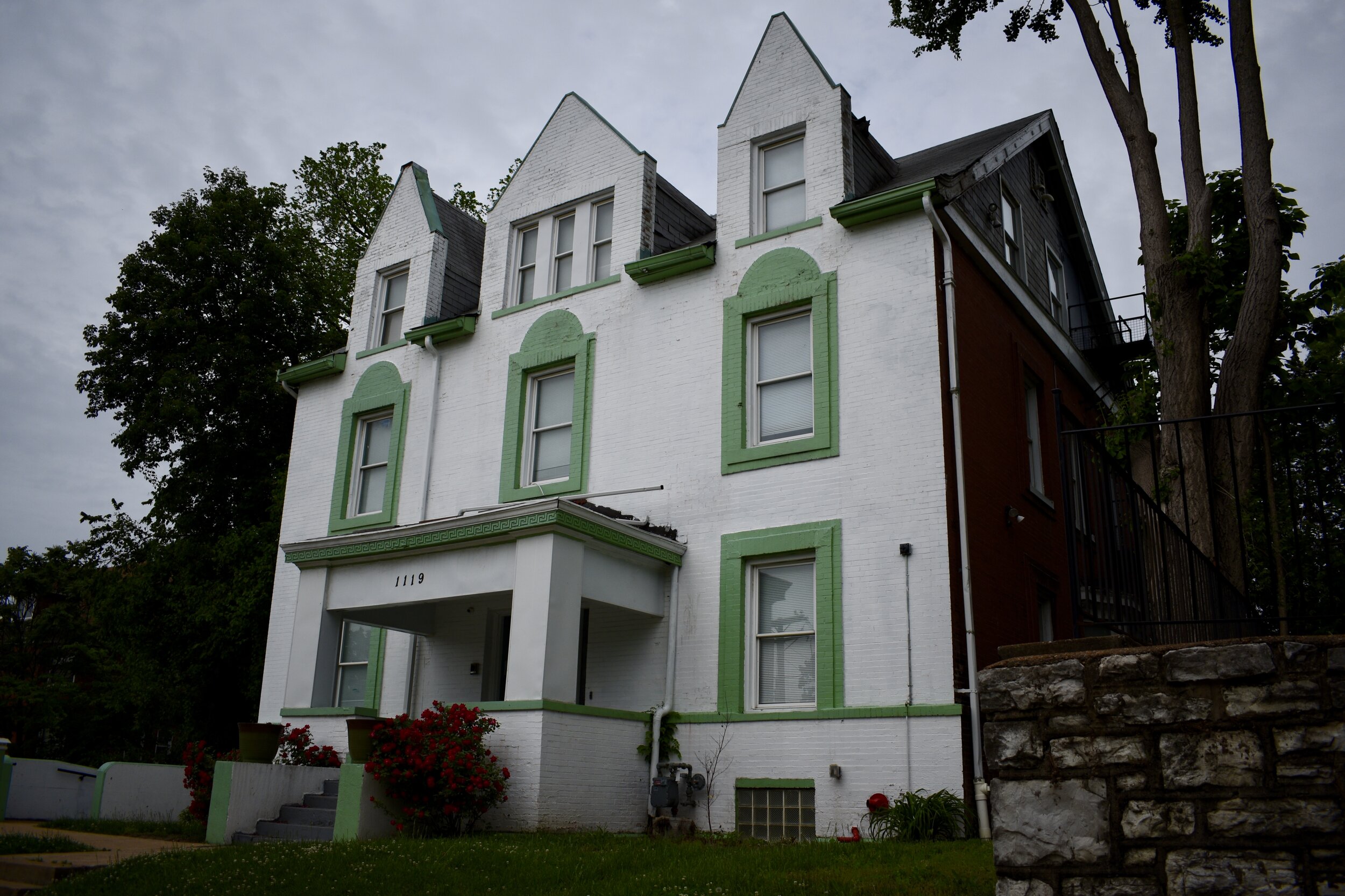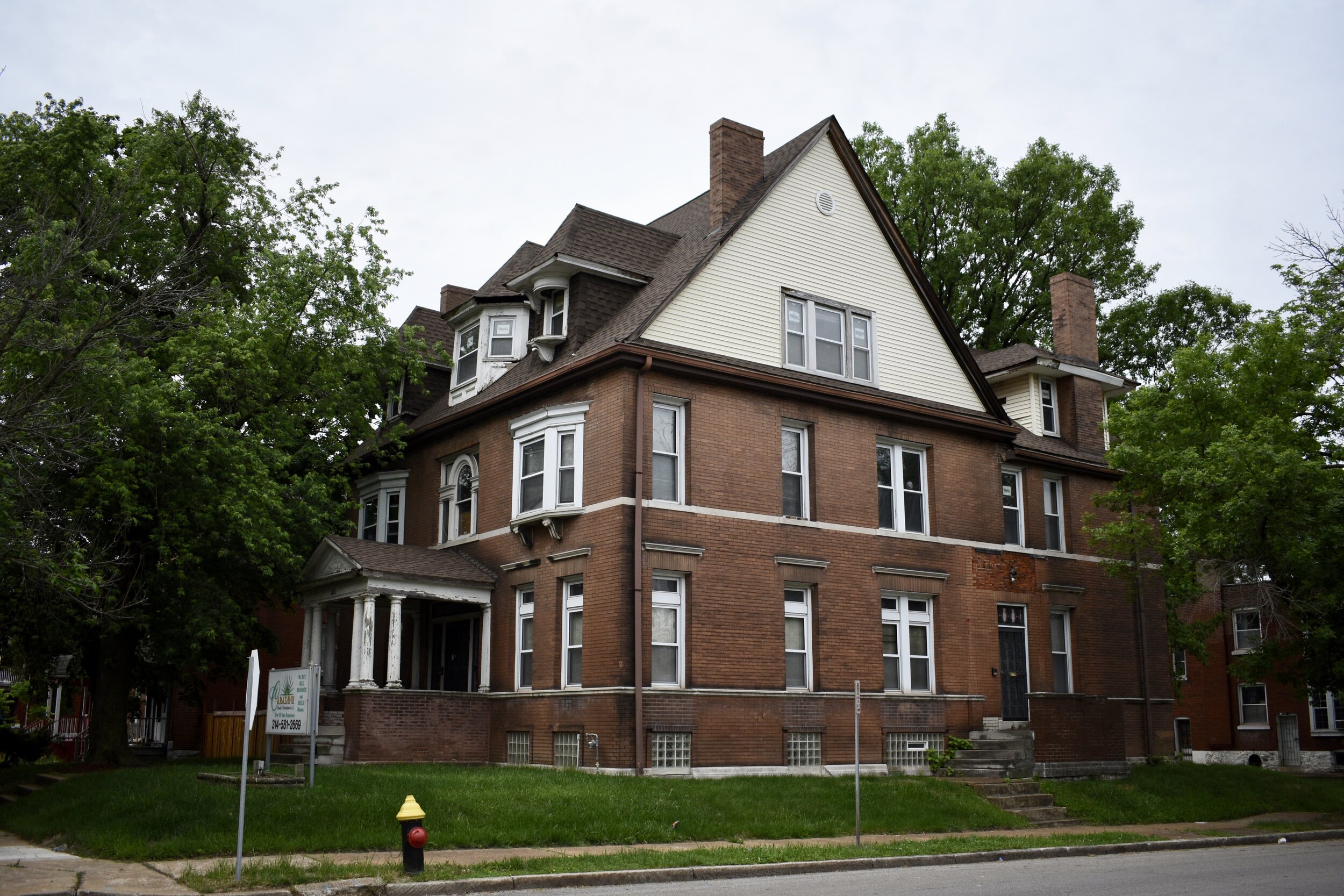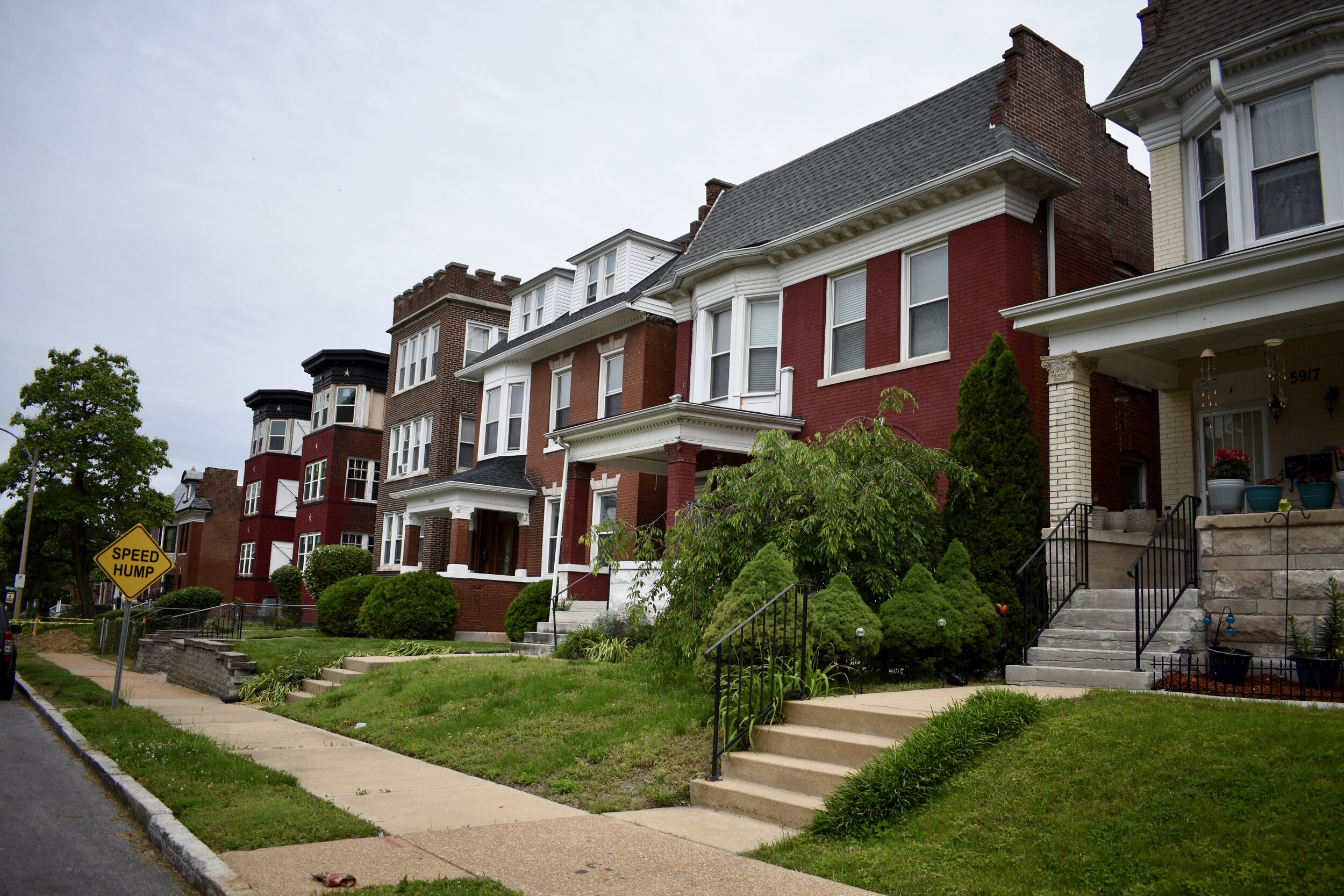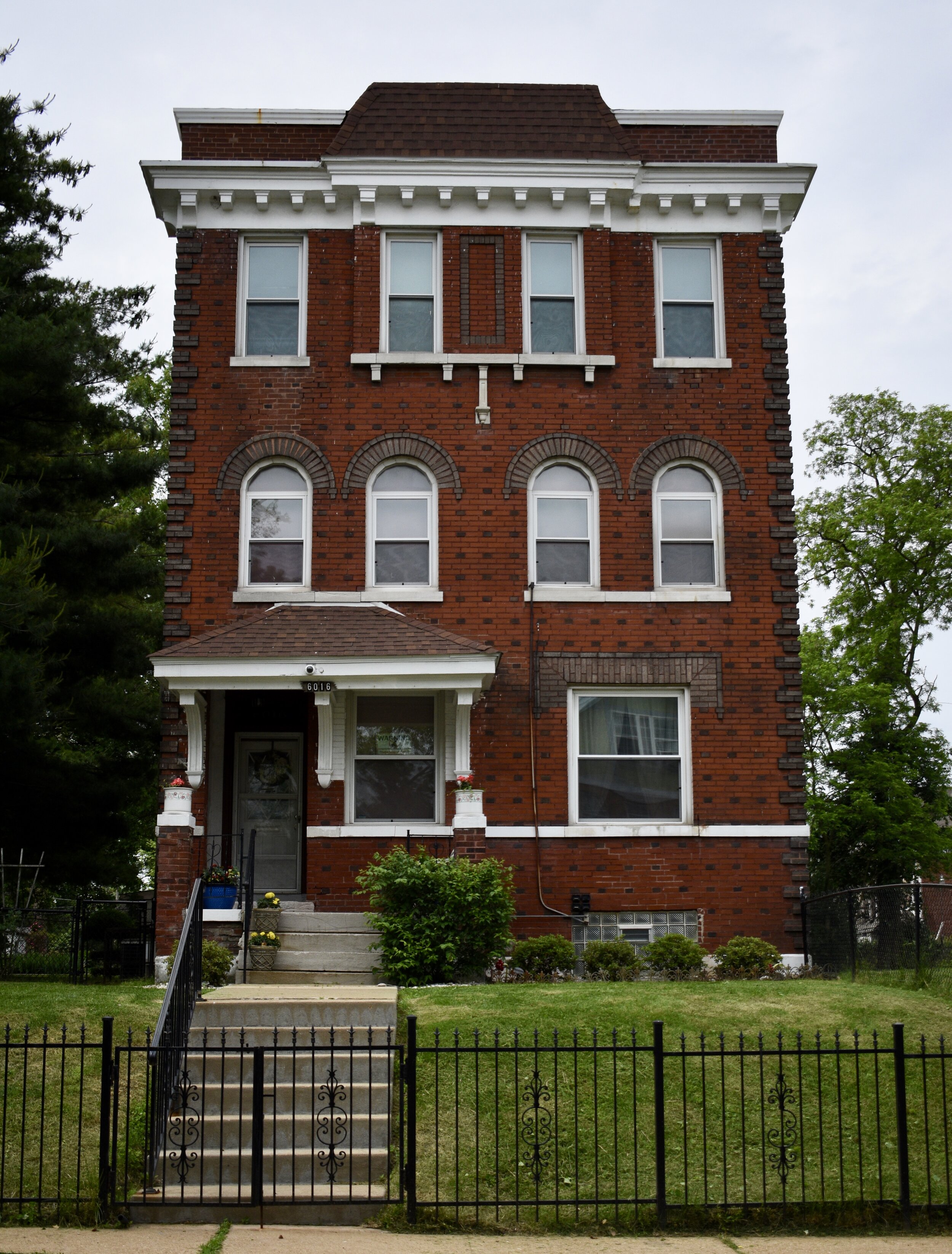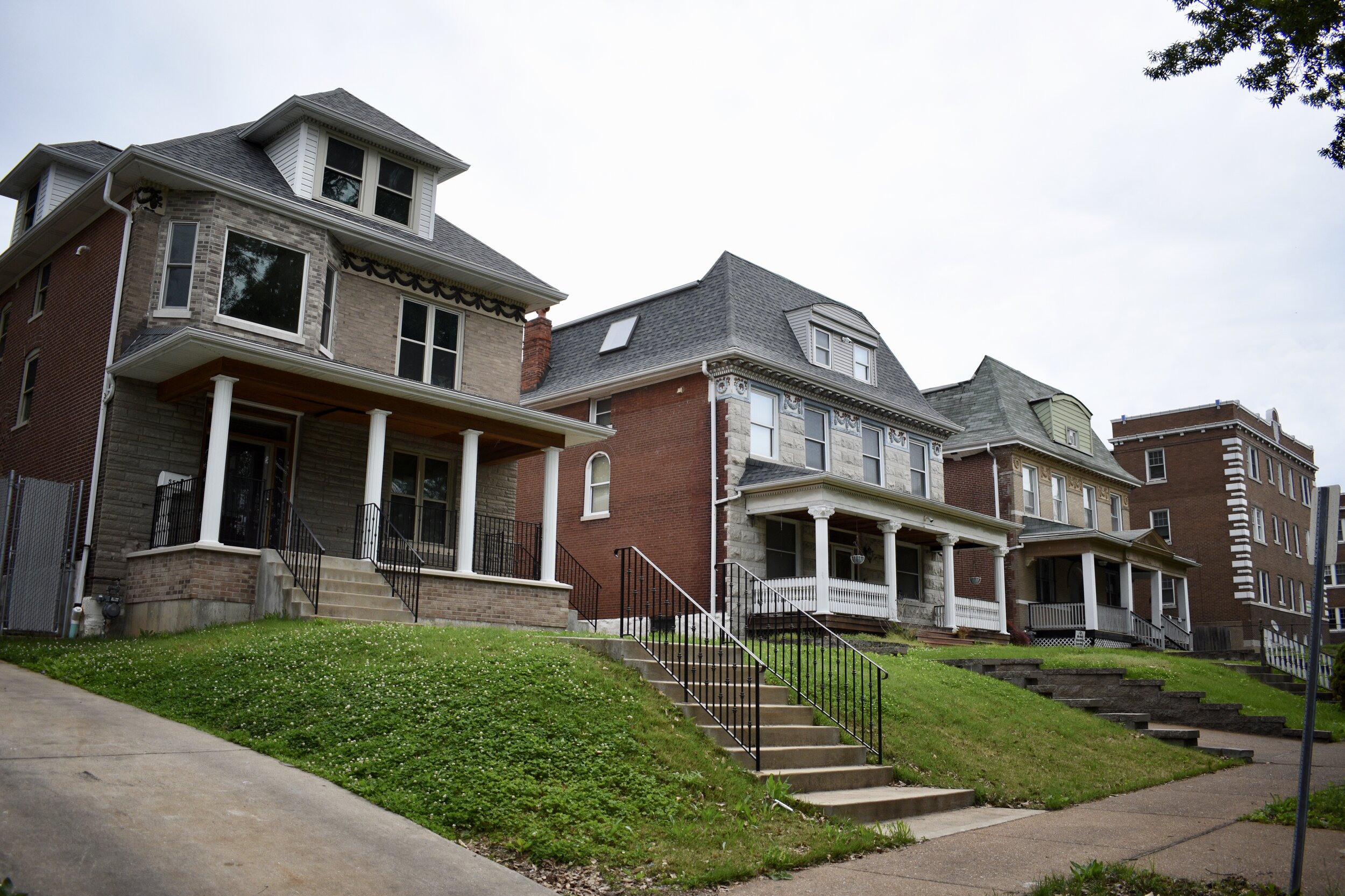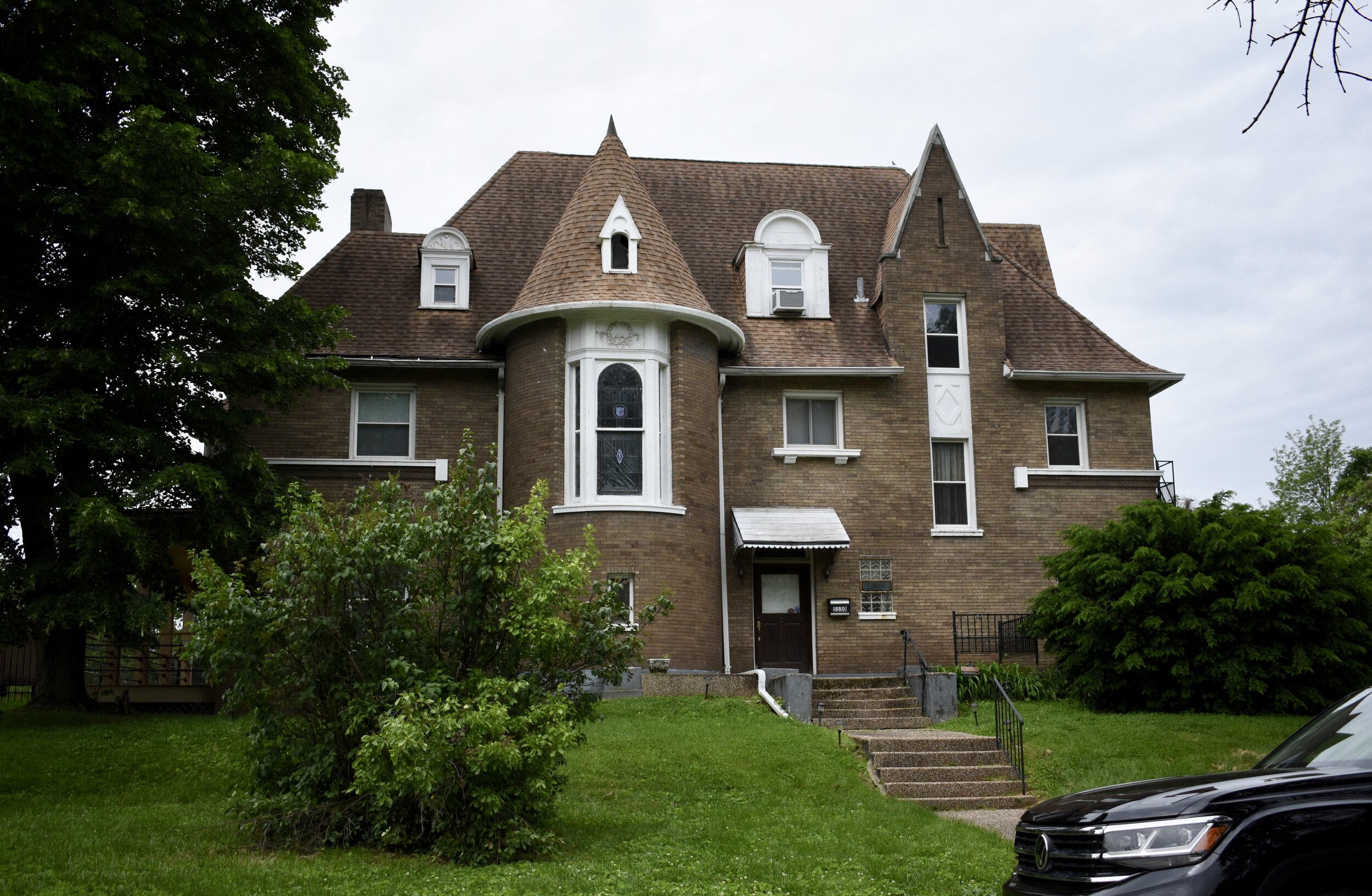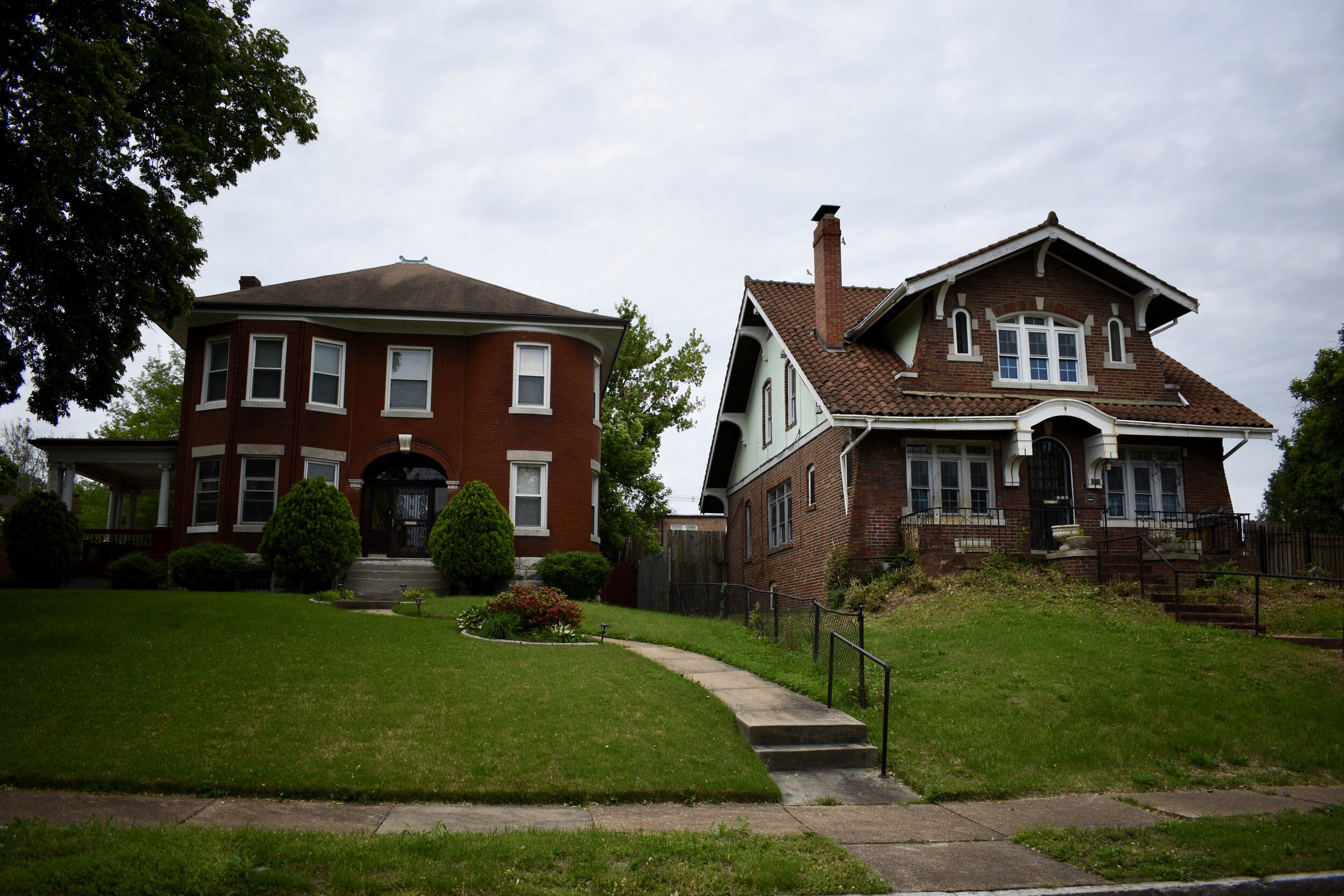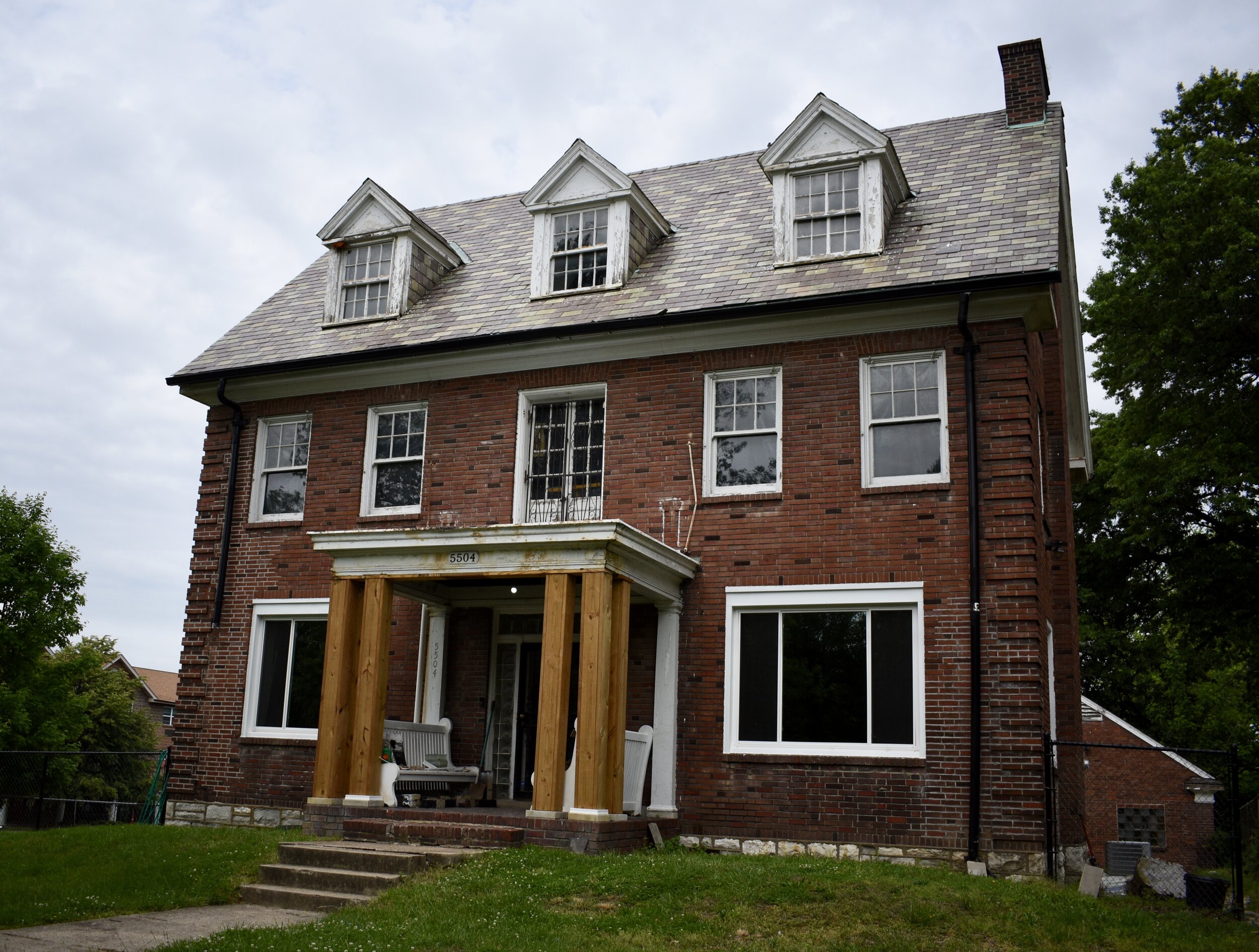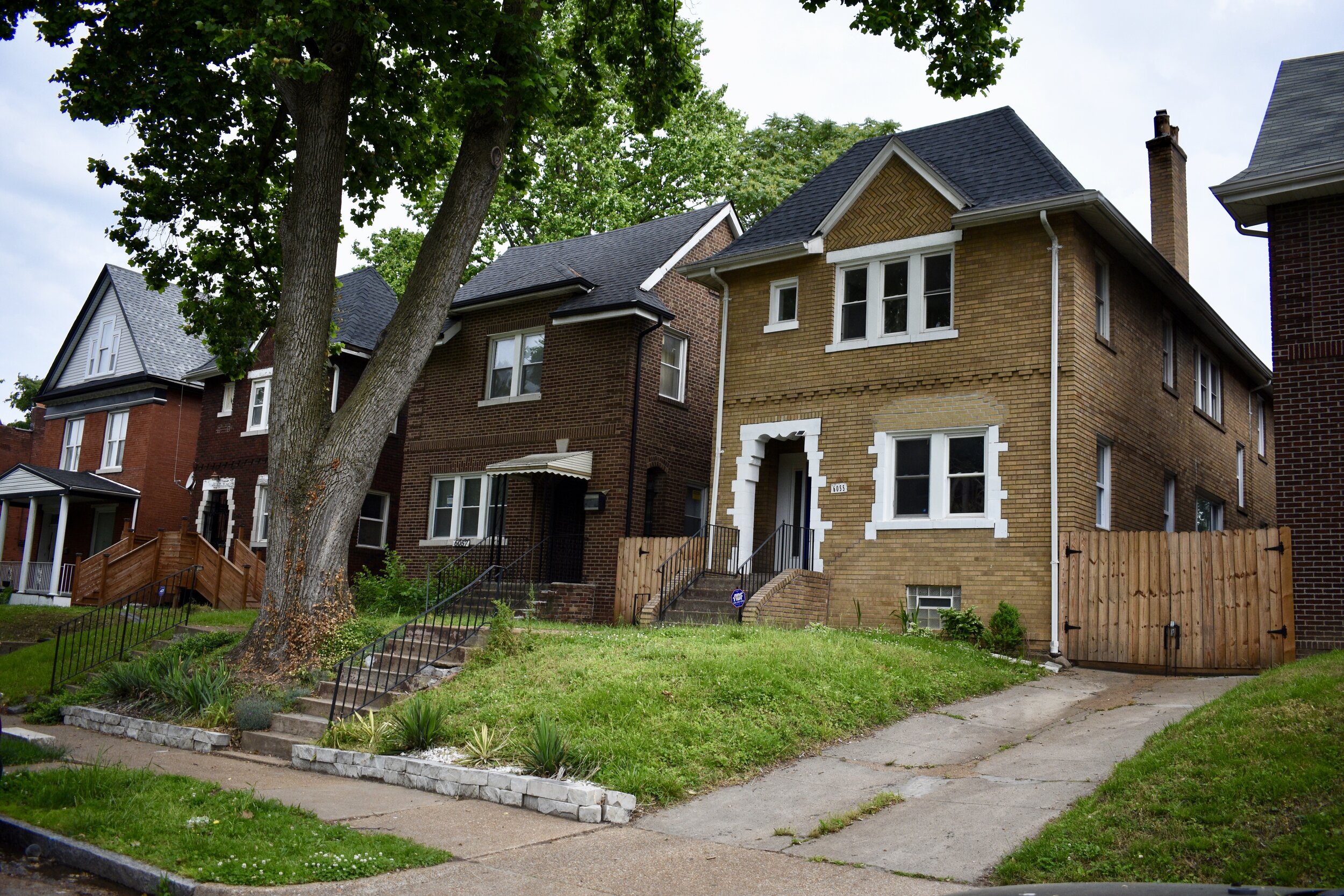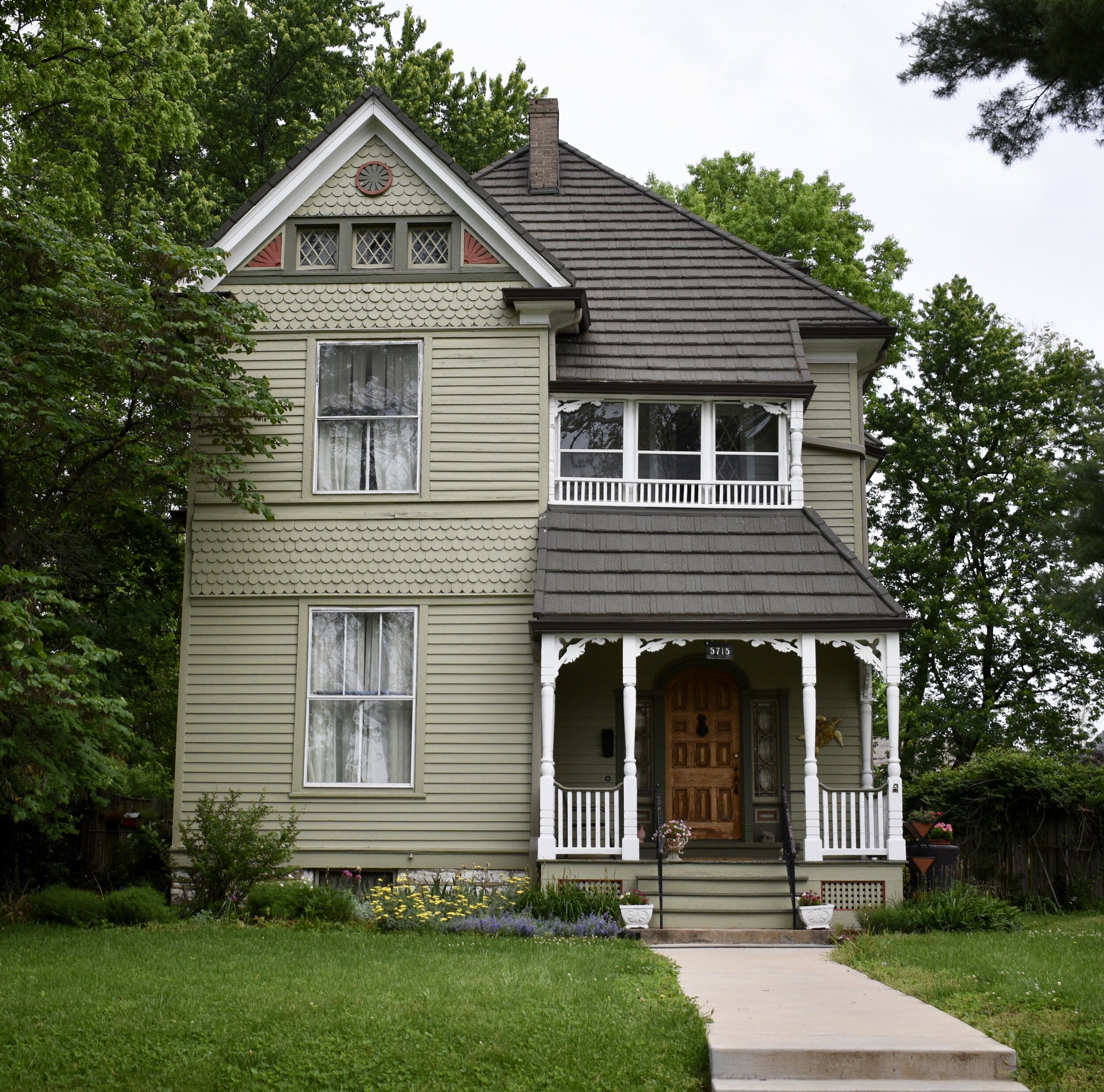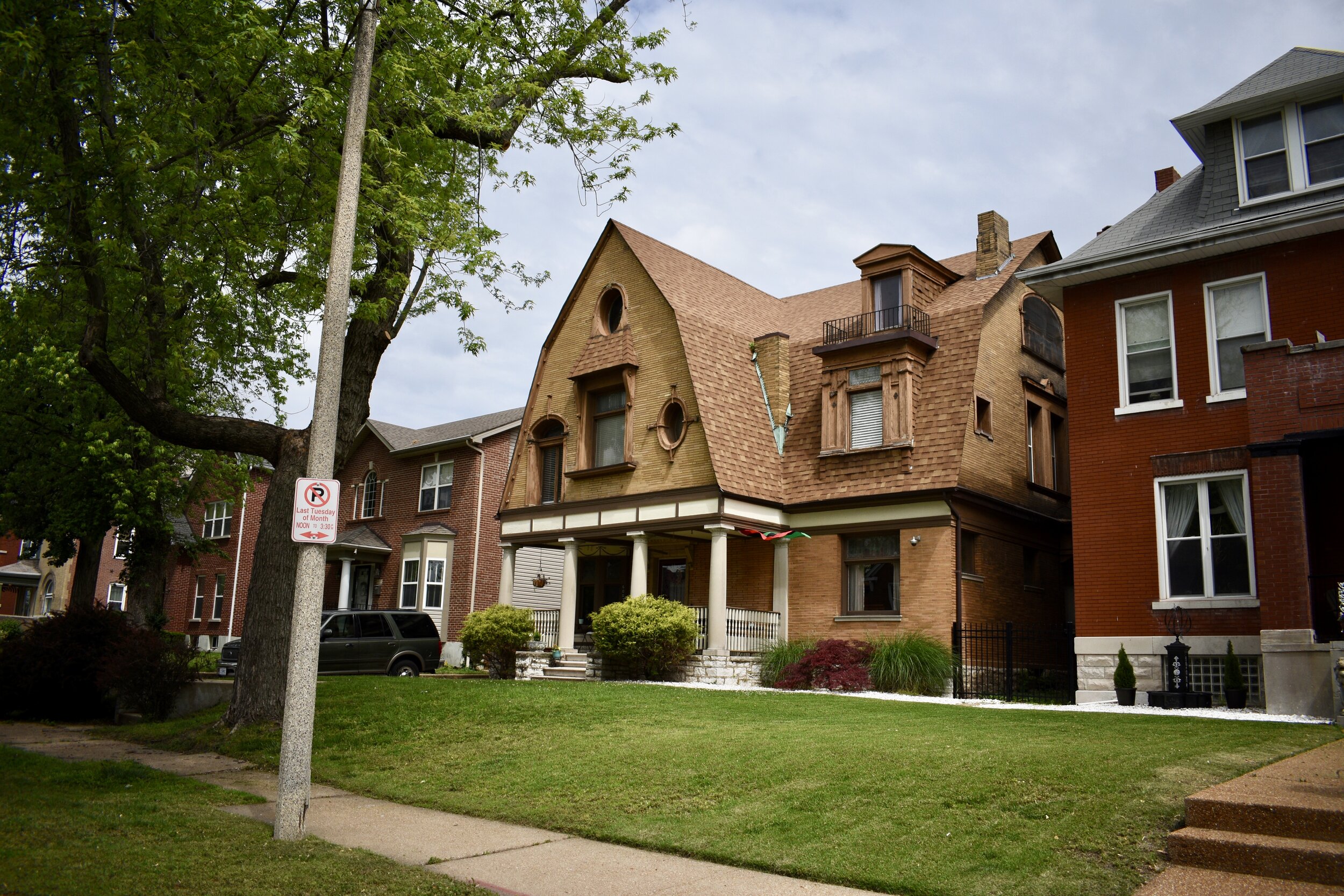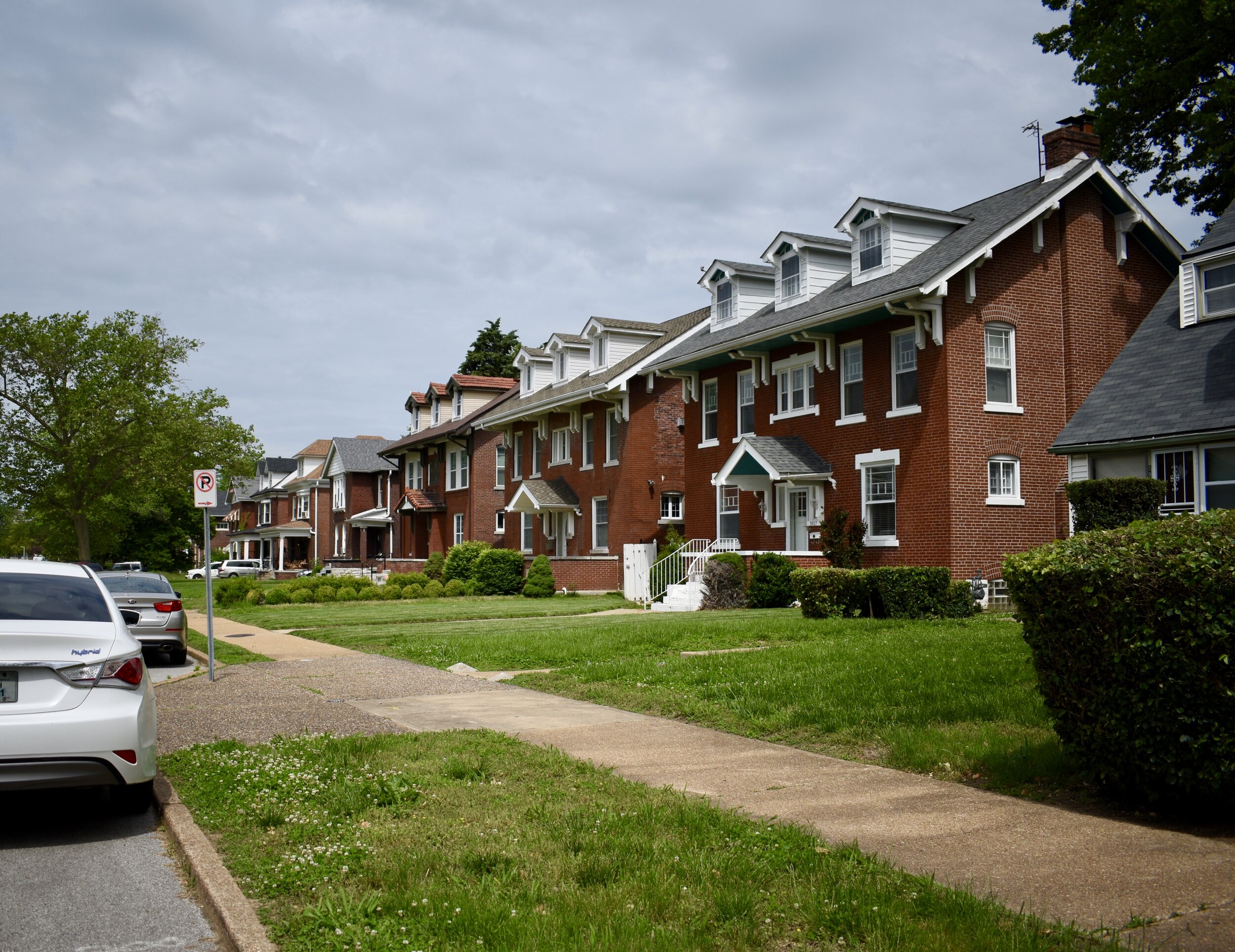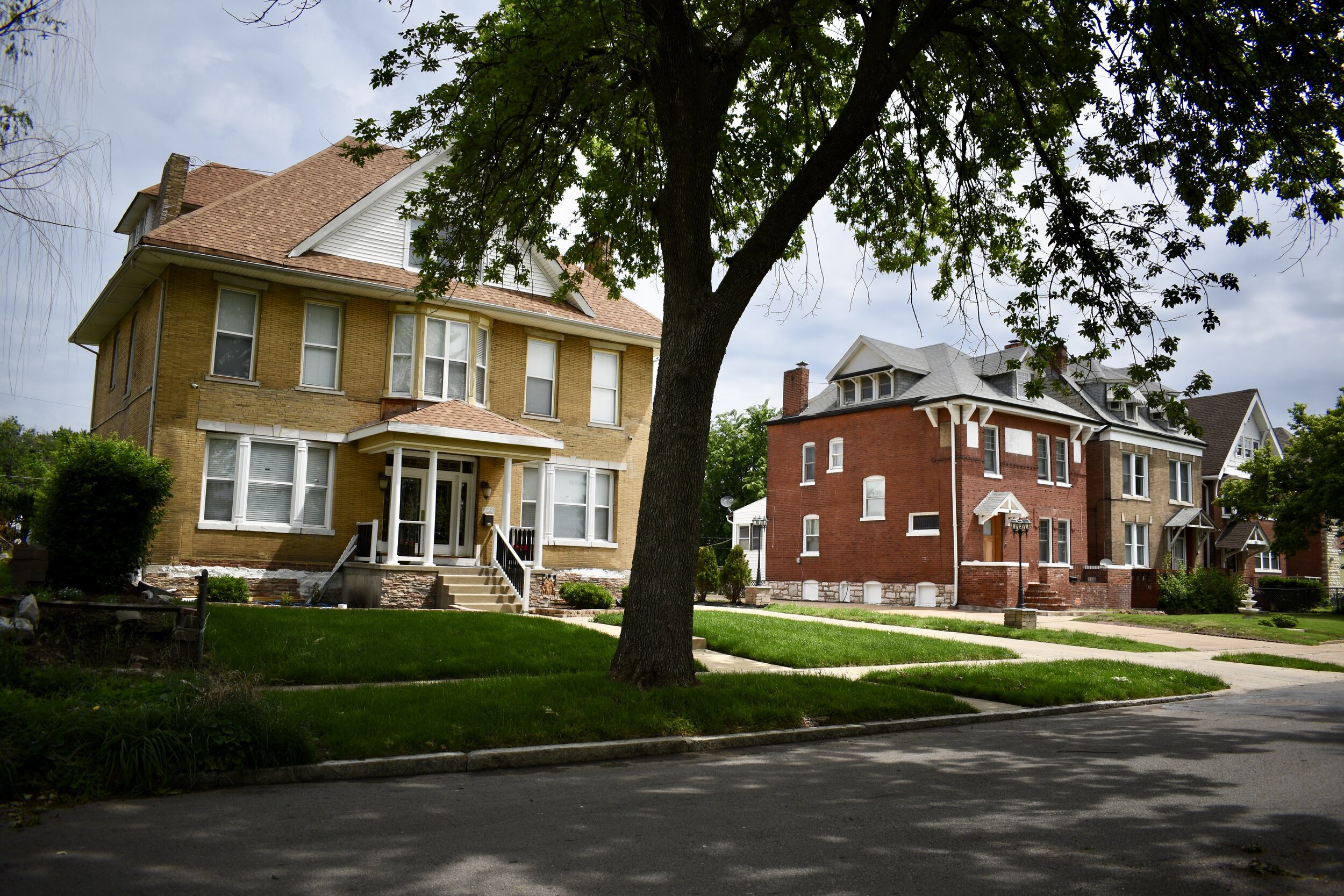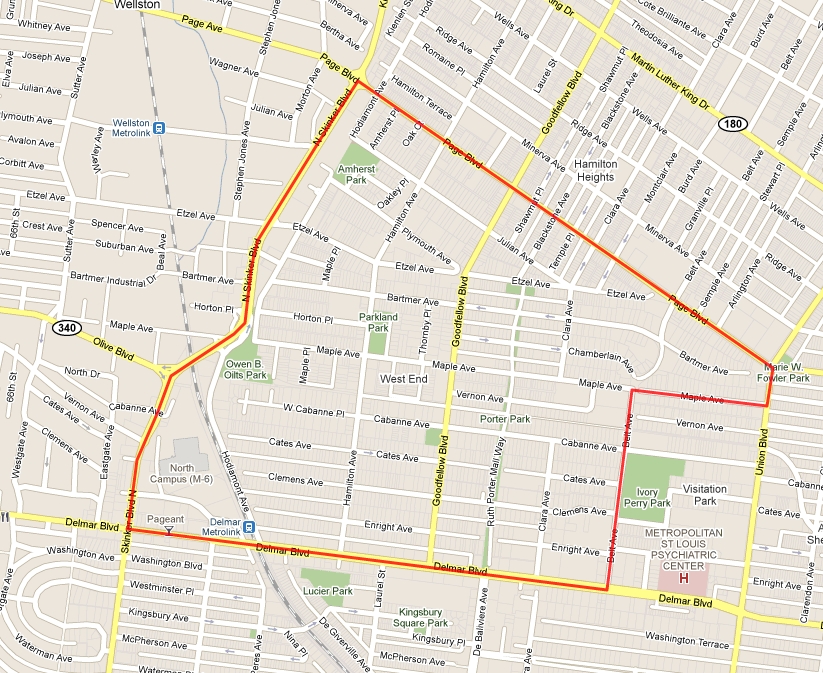 The West End is a north St. Louis neighborhood bound by Page to the north, Delmar to the south, city limits to the west and Union and Belt to the east via Maple.
The West End is a north St. Louis neighborhood bound by Page to the north, Delmar to the south, city limits to the west and Union and Belt to the east via Maple.
The 2000 census data counted 6,438 residents (down 27% from 1990’s count) The 2000 census data counted 6,438 residents (down 27% from 1990’s count) of whom 95% were black, 2% white and 1% Hispanic/Latino. There were 3,347 housing units counted, 78% occupied (30%/70% owner/renter split). Wow, 27% of the residents split between 1990 and 2000. That’s one of the bigger losses in the entire city during that time frame. But to be fair, 85% of the city’s 79 neighborhoods saw a loss in population from 1990-2000. Either way, a 27% loss of residents still ranks the West End in the top third of the most porous neighborhoods with residents fleeing like crazy at the end of the 20th century. The good news is, the West End had a numerical gain in residents in the 2000-2010 timespan. Census data counted 6,574 people: 85% black, 8% white, 4% Hispanic/Latino and 2% Asian. Hopefully the bleeding of people has stopped and this neighborhood can stabilize.
This is another St. Louis neighborhood that borders Delmar Boulevard, the widely accepted dividing line between north and south St. Louis. It’s true, almost without fail, you drive north of Delmar and the neighborhoods showing the most decline are apparent. It doesn’t take an astute eye to make this observation. It’s quite an unfortunate, but obvious dividing line for our city.
That doesn’t mean this isn’t one of the cool neighborhoods in town though, because in my humble opinion, it certainly is. But, the West End neighborhood, has struggled for the last 40-50 years. Yet, there’s hope. First of all, a lot of people still live here and it’s proximity to Wash U and the recent upgrades on the East Loop bring some momentum to the area.
I am fascinated by these north city neighborhoods like Visitation Park, Academy and Hamilton Heights. You get to see the remnants of the best intentions of the fore fathers and the beautiful care, workmanship and pride they put into making these neighborhoods special places. However, you also get smacked in the face with the careless behavior patterns of those in charge and those that have lived here and contributed to the decline, or simply turned their collective backs and walked away from this place.
With all that, the potential is still HUGE. The West End has some of the best architecture in the city. Readers not familiar with St. Louis, especially north St. Louis, let me tell you this is one of the nicer neighborhoods on the north side. By that I mean, most of the people that live here are generally cordial and civil, unlike other places you’ll find in north city. I observed quite a few city pride stickers on cars and city flags hanging from homes. This is an encouraging sign for me, because I just don’t see a lot of that STL pride north of Delmar (ONSL is the only exception I’ve personally witnessed so far). I had many a good conversation with people on the street about what I was doing, and was greeted with hand waves and head nods. This is not a scary, dangerous neighborhood…I will get to these places in future posts. I’m saving those for last. The West End appears to have some of the best economic diversity in north city. There are rich and poor here and everything in between.
The West End has some of the most beautiful mansions in the city. There are well cared for ones, and dilapidated ones. The worse news is, the ~50 years of neglect has left acres of fallow ground. Many, many original homes have been demolished and cleared. Many of these fallow blocks still exist as described.
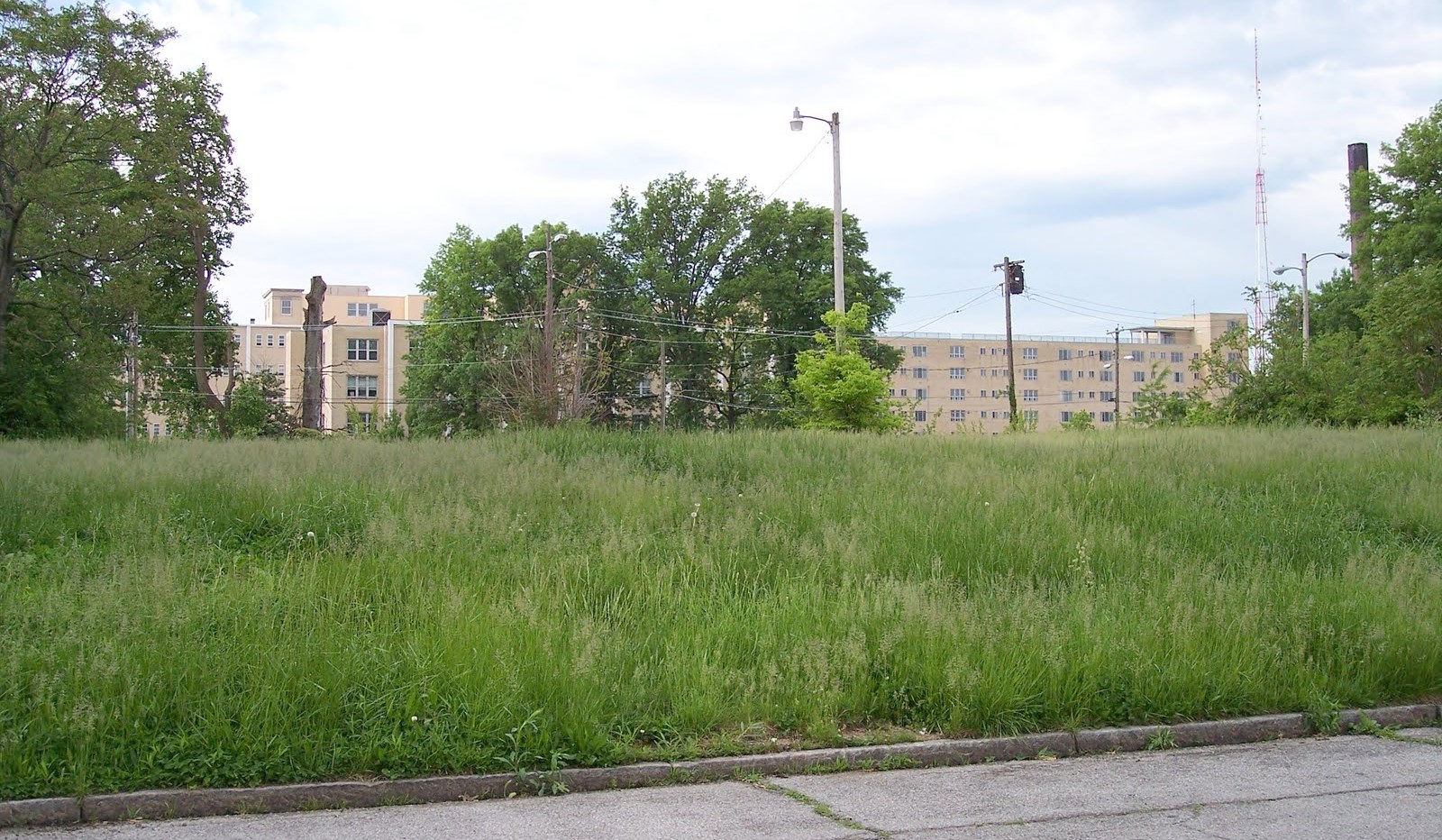
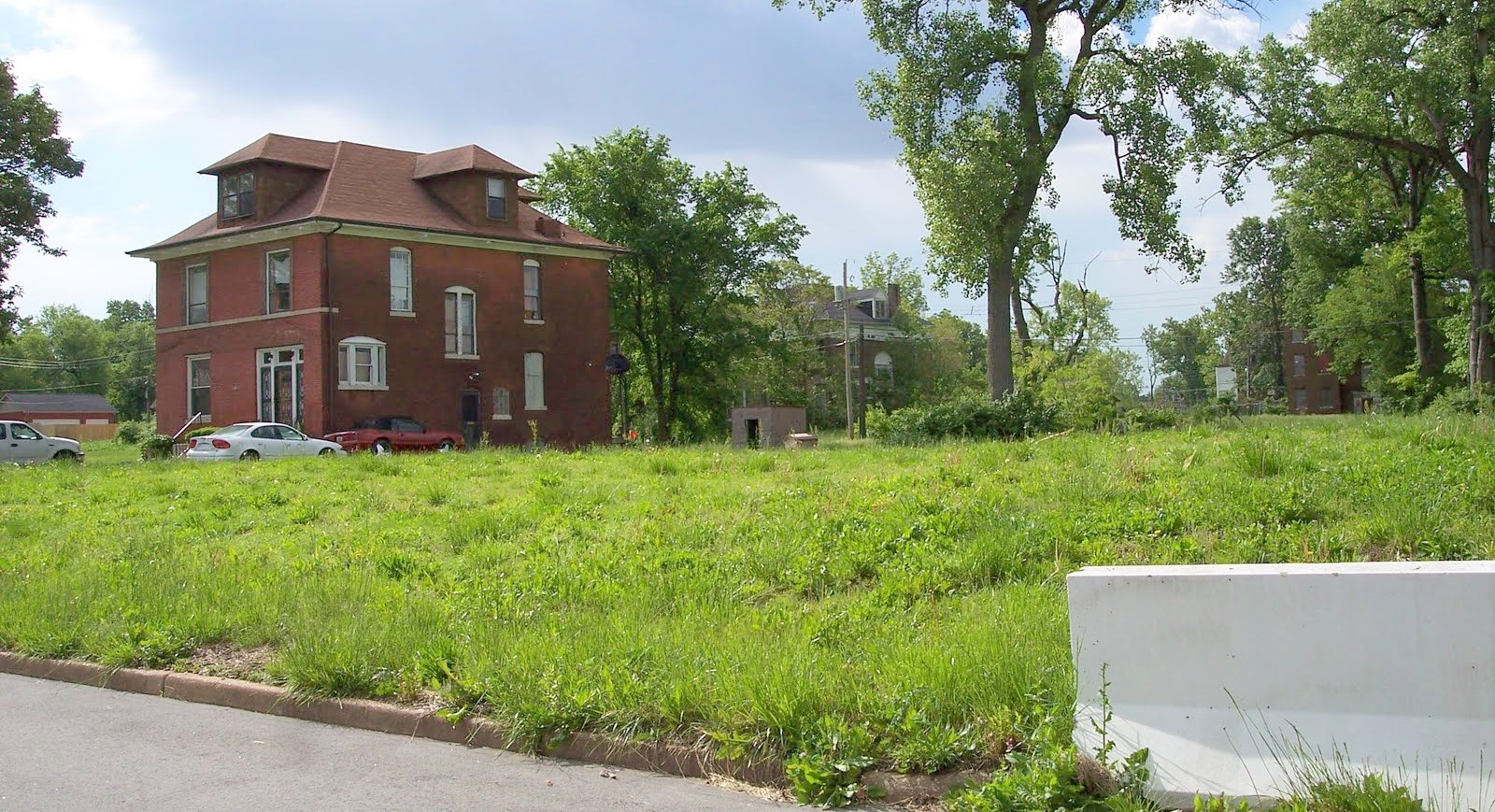
Other blocks have been developed with contemporary construction materials and styles making this part of St. Louis look like Anytown, U.S.A.
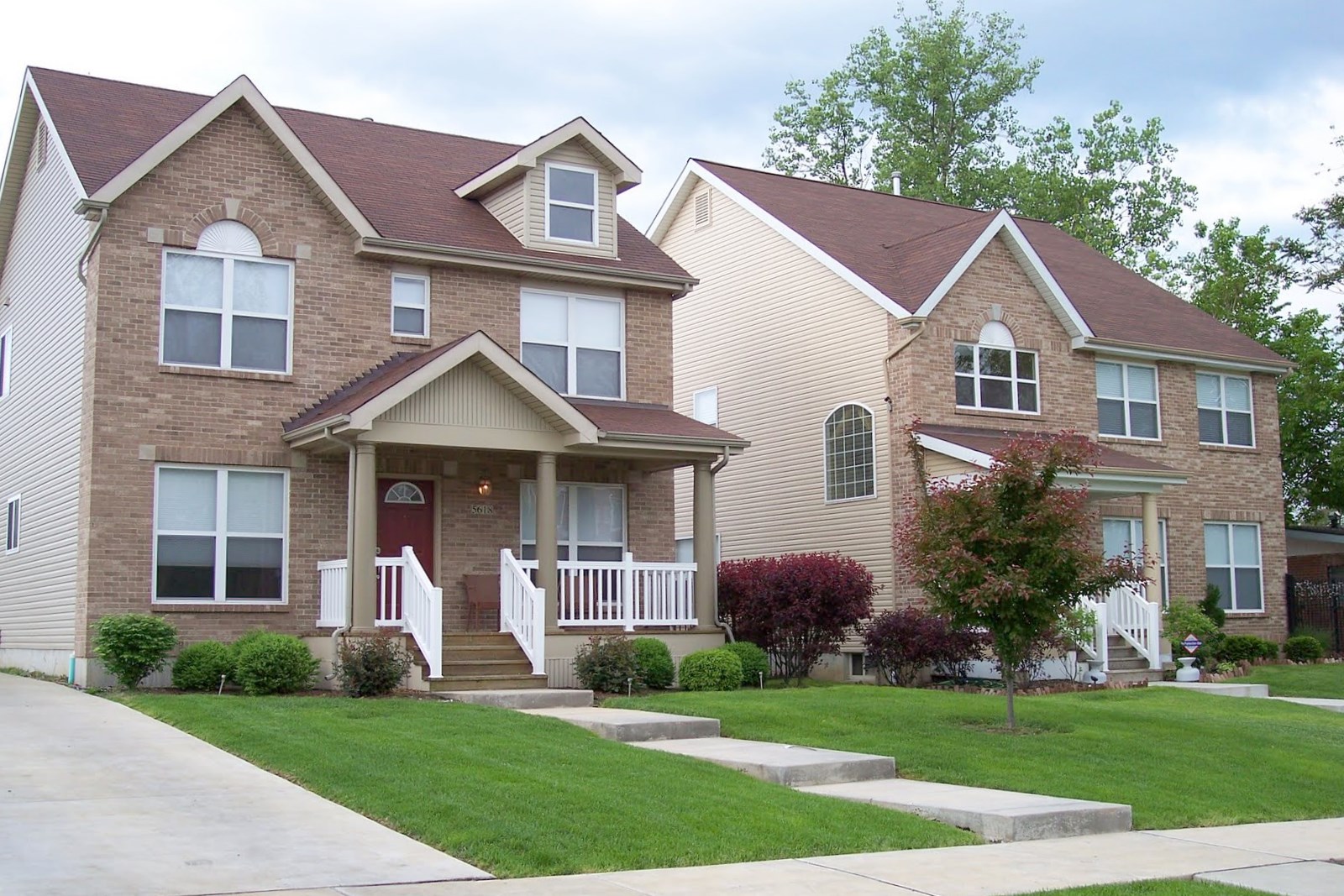
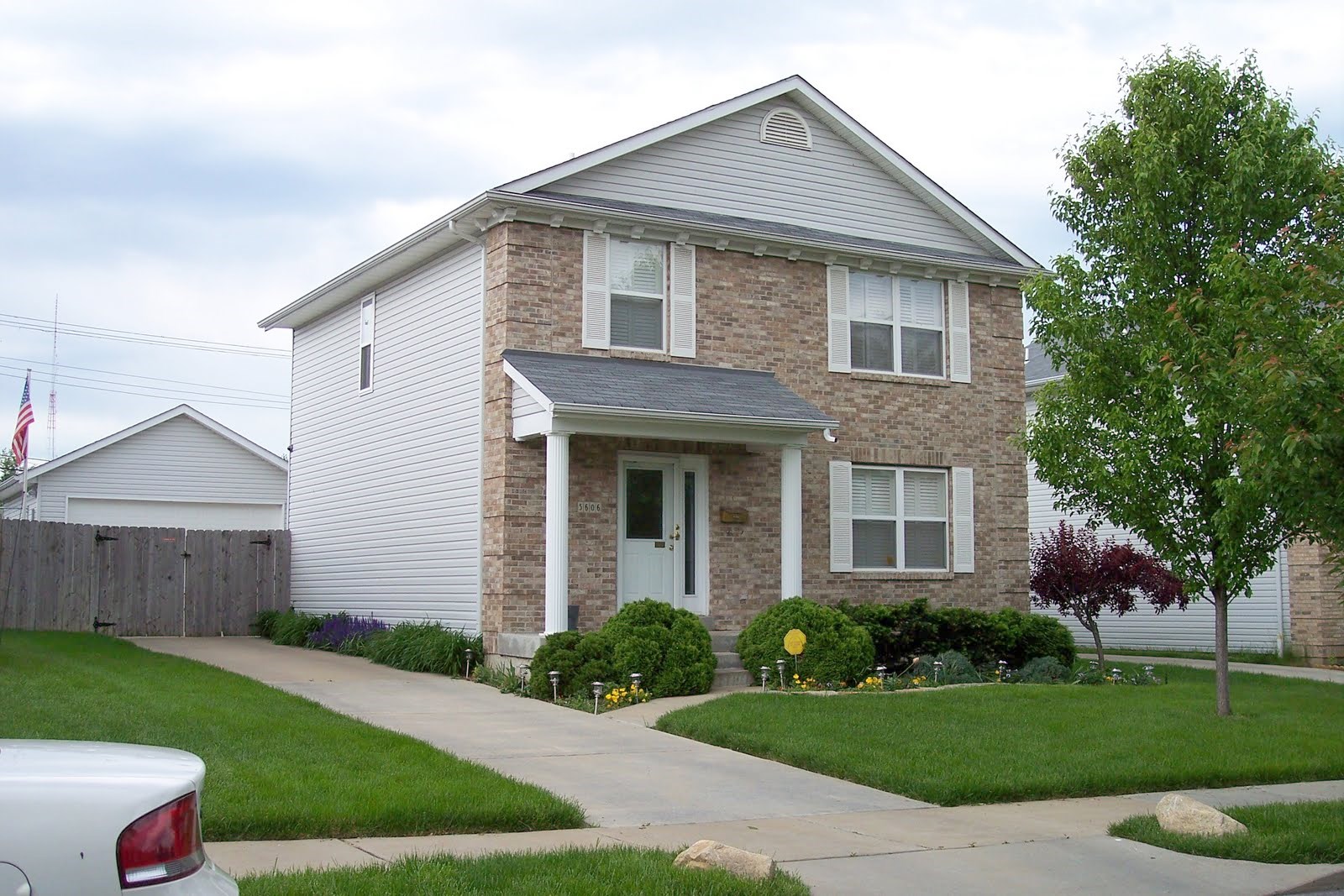
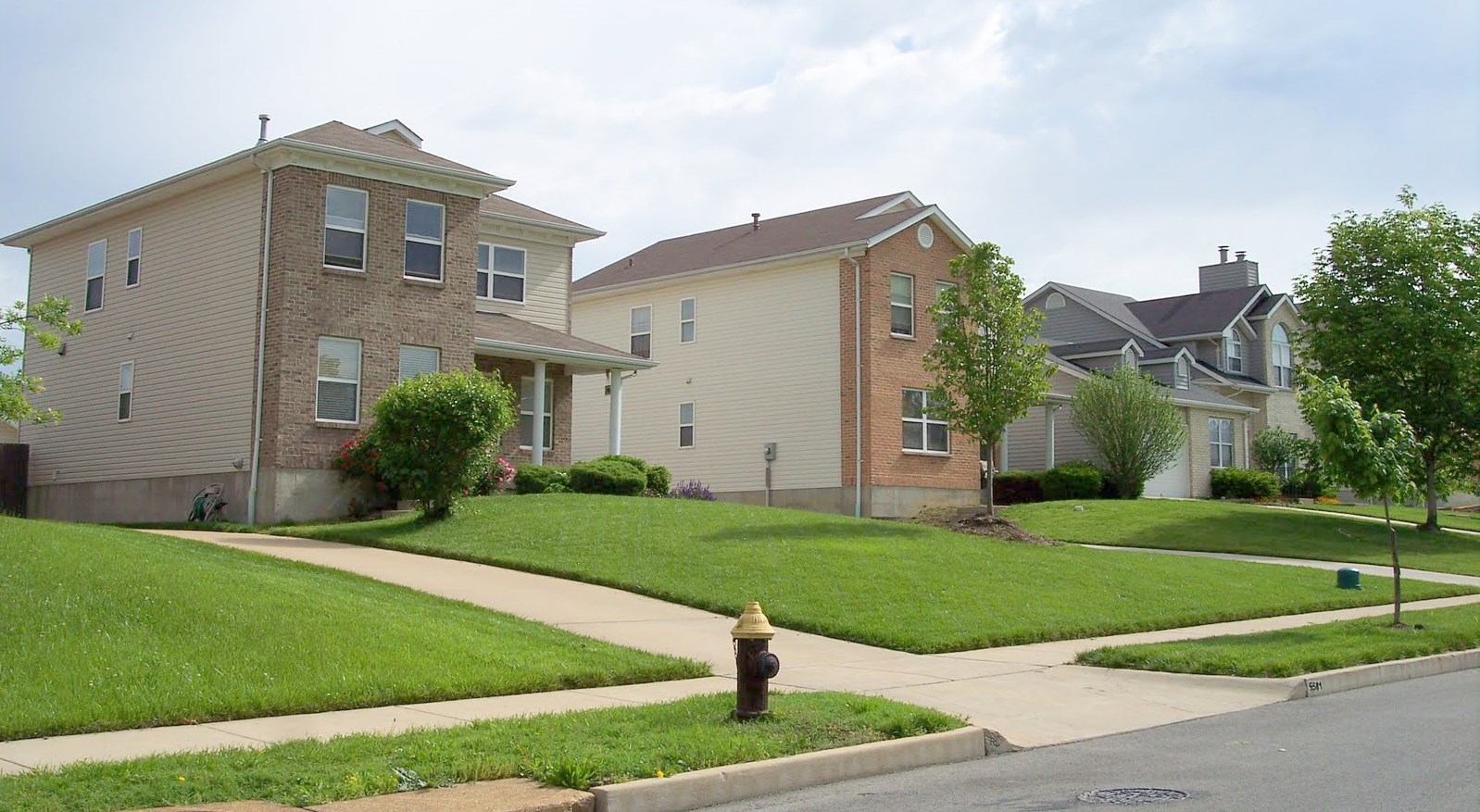
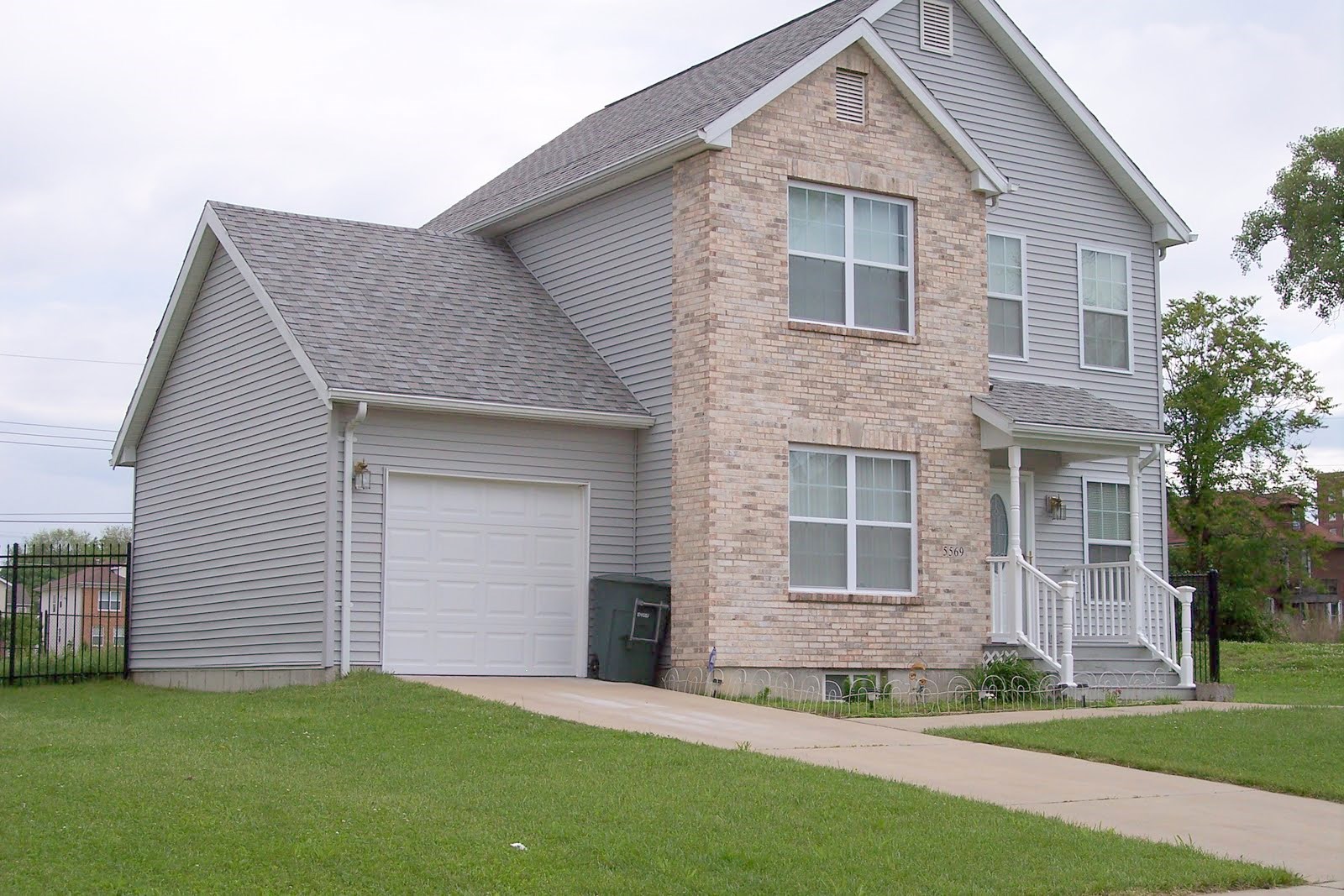
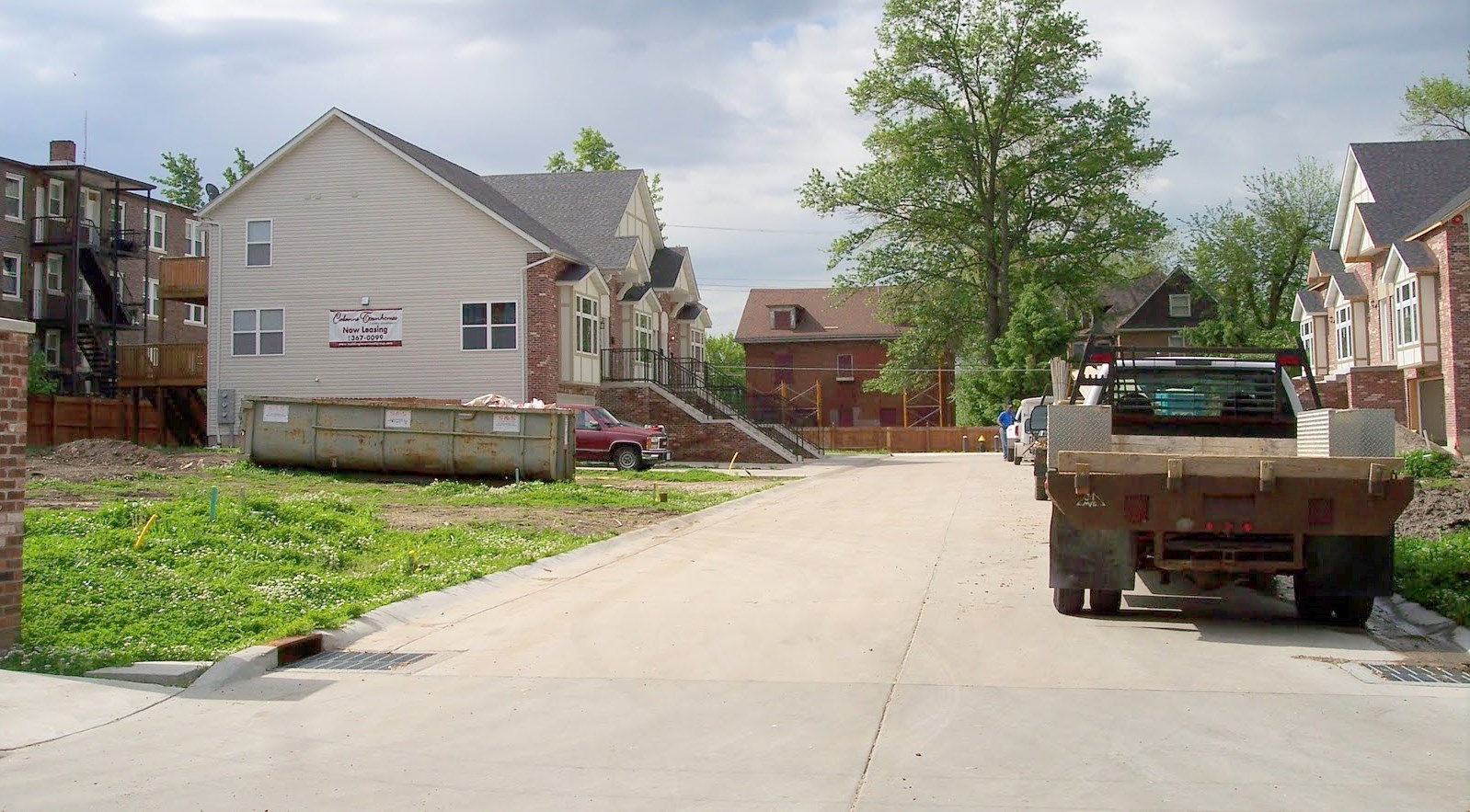
What are you gonna do? No, these houses don’t add to the urban fabric or originality of the historic neighborhood. But, they add residents and obviously there’s a market for these suburban styled dwellings in the city. I’m happy to see these homes filled with people and they appear to be well cared for and tidy. I just wish some urban planning would have gone into the late 20th century construction in the West End. Infill is necessary. I’m just not convinced this kind of infill is sustainable.
What will these homes look like in 50 years? Will they just be torn down for something new(er) or will they be maintained? Either way, these blocks and streets don’t fit in well with the rest of the neighborhood and they don’t add to the rich architectural history of St. Louis. Another missed opportunity for good infill; but, there are plenty of other areas that are ripe for good, dense urban planning. And mixed use would be great here, as there are very few businesses within the West End (Delmar excluded).
The photos above paint the picture of parts of the West End that are completely suburbanized. There are other examples of new homes mixed in with the originals:
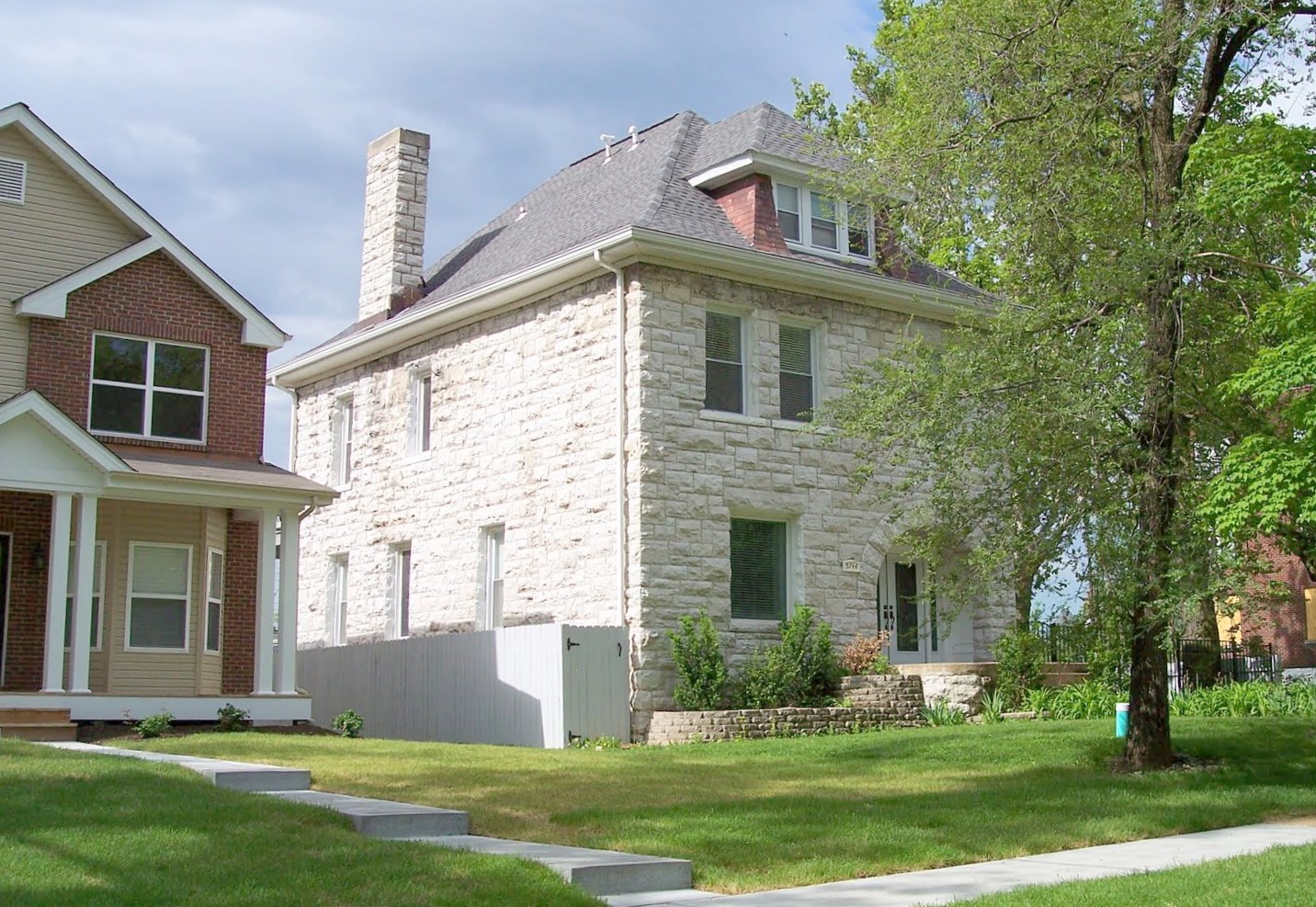
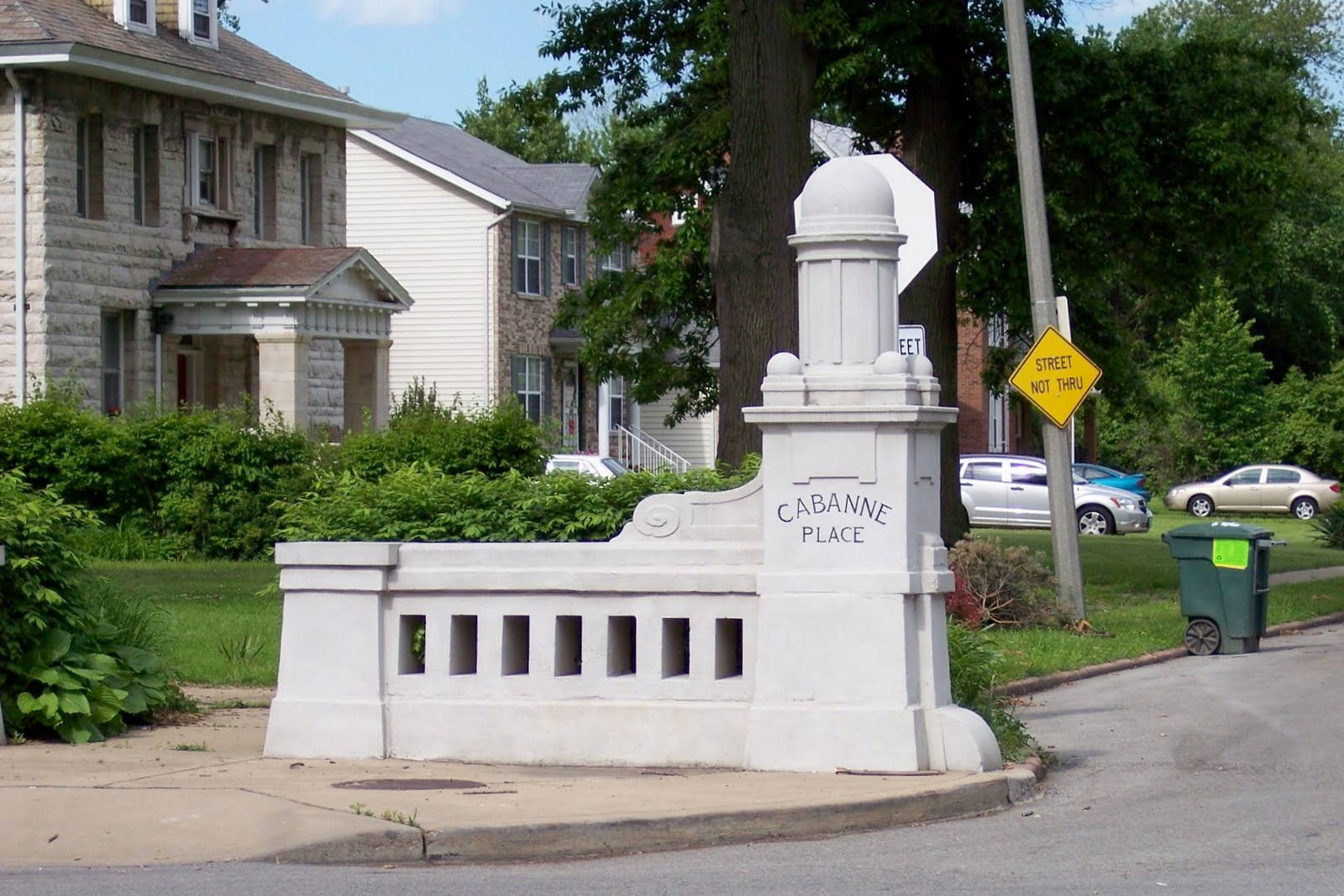
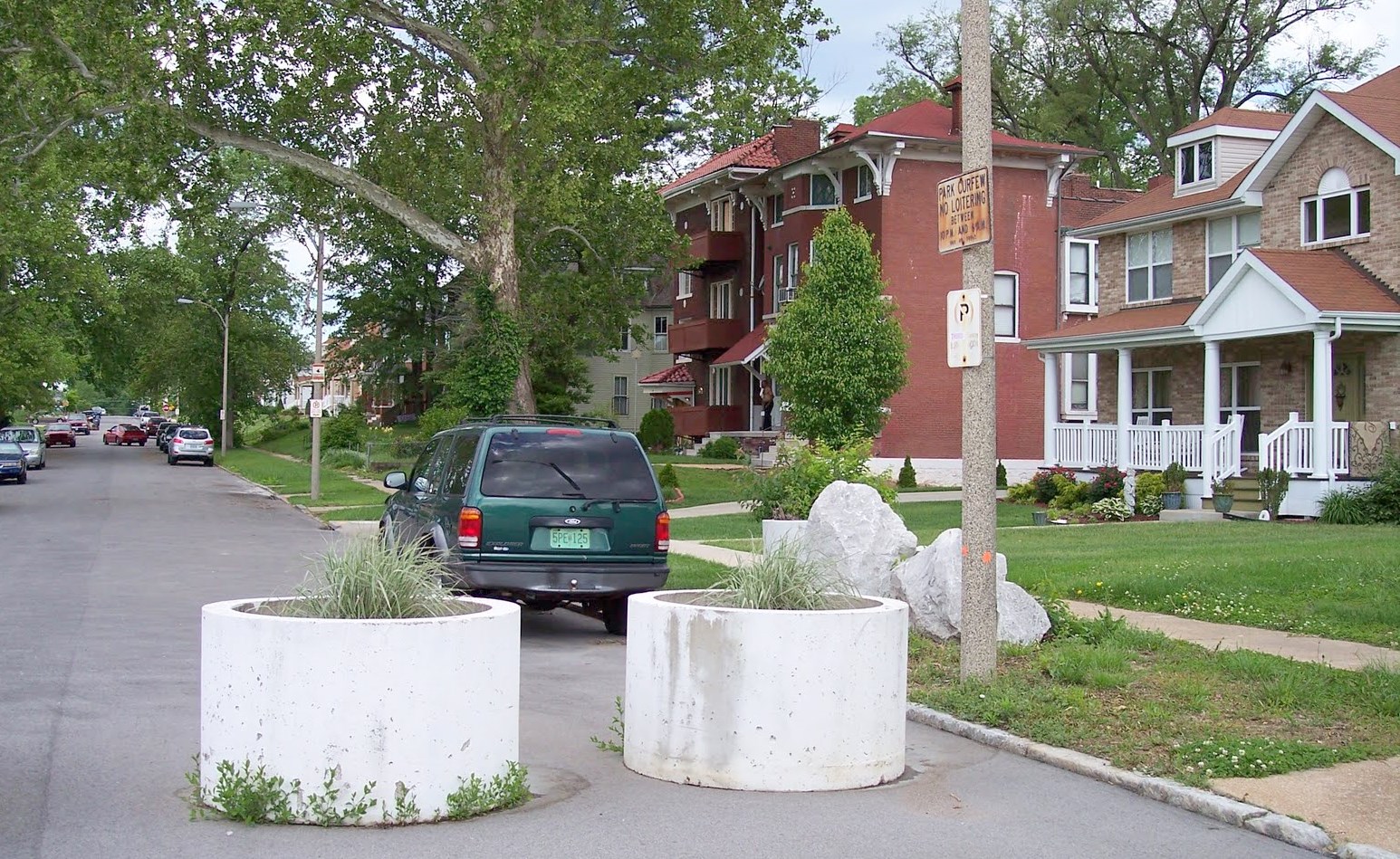
See what a difference that makes?
While there are many examples of new houses that pay little respect to the history of the city, all hope is not lost. It’s not as bad as the Gate District, where the fallow ground and new construction is more haphazard and the only reminder of the original neighborhood is along one or two streets.
The rest of the West End ranges from the immaculately well kept mansions and proud homes to slowly decaying former beauties to homes falling in on themselves. The good news is, there are strong pockets and entire blocks and streets that represent the best of those investing, entrenched or simply hanging on and proving to be good stewards of their part of town. I’ve tried to intersperse the goods, bads and uglies together to show a snap shot of the wide range of homes/styles and various conditions you’ll find in the West End today:
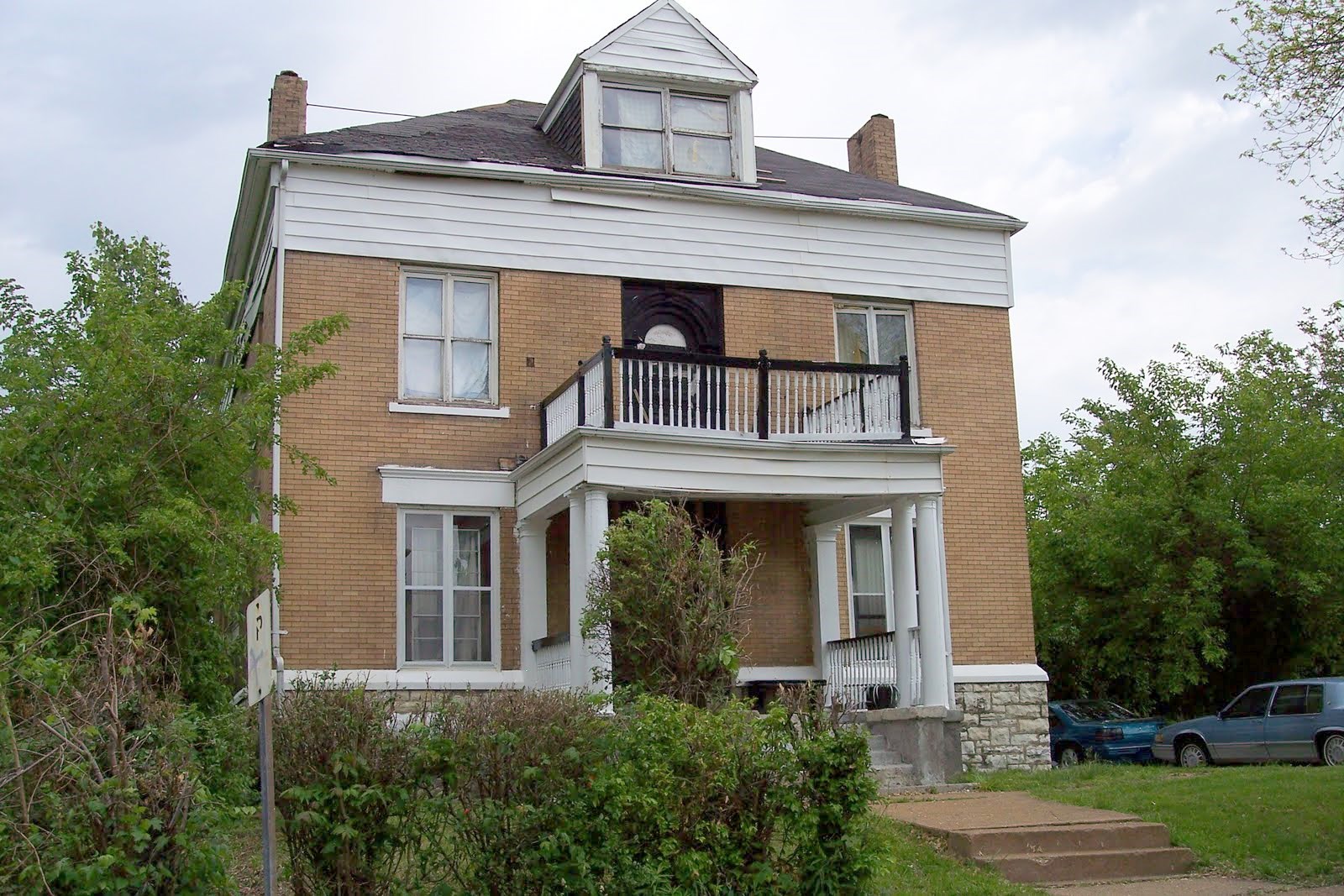
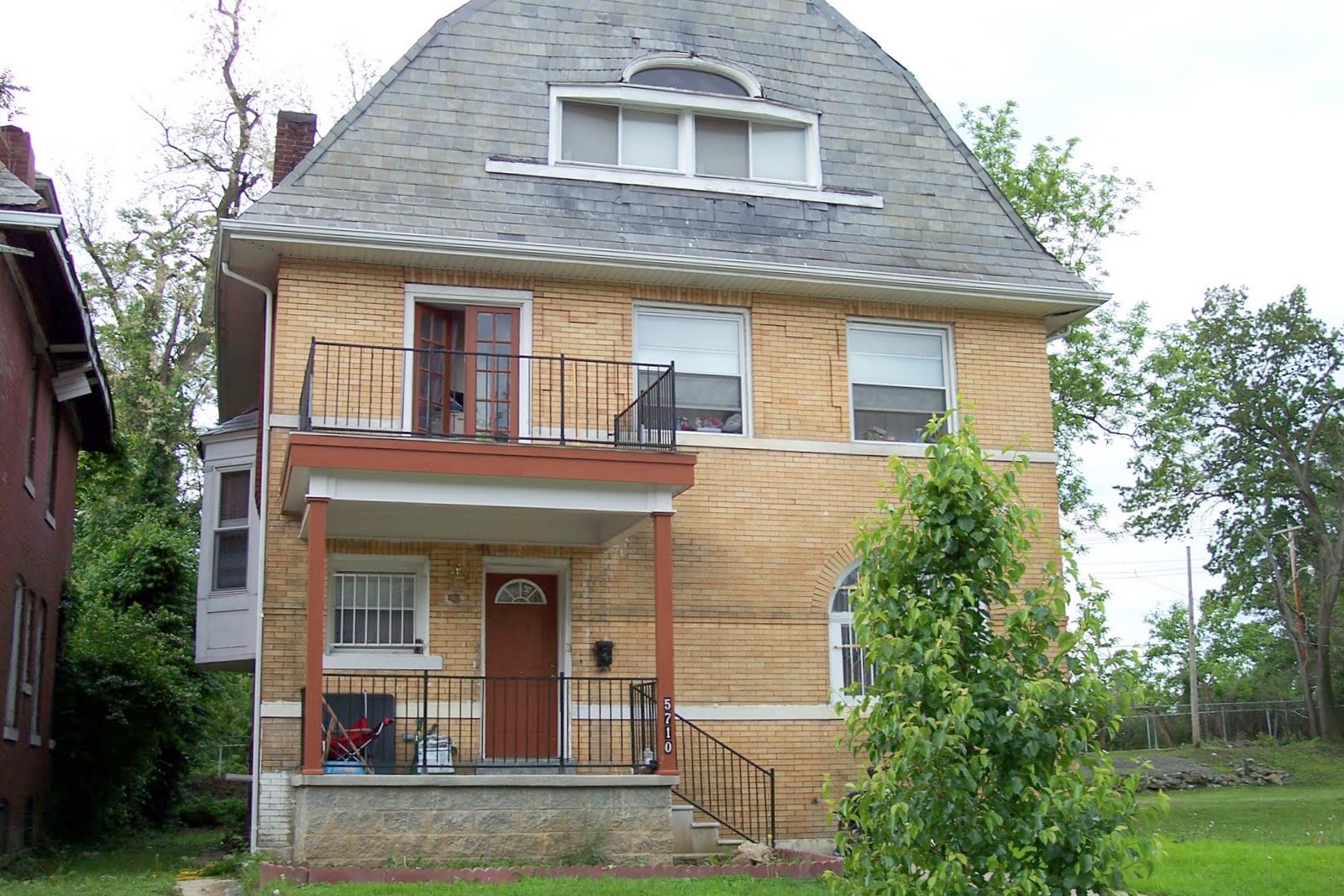
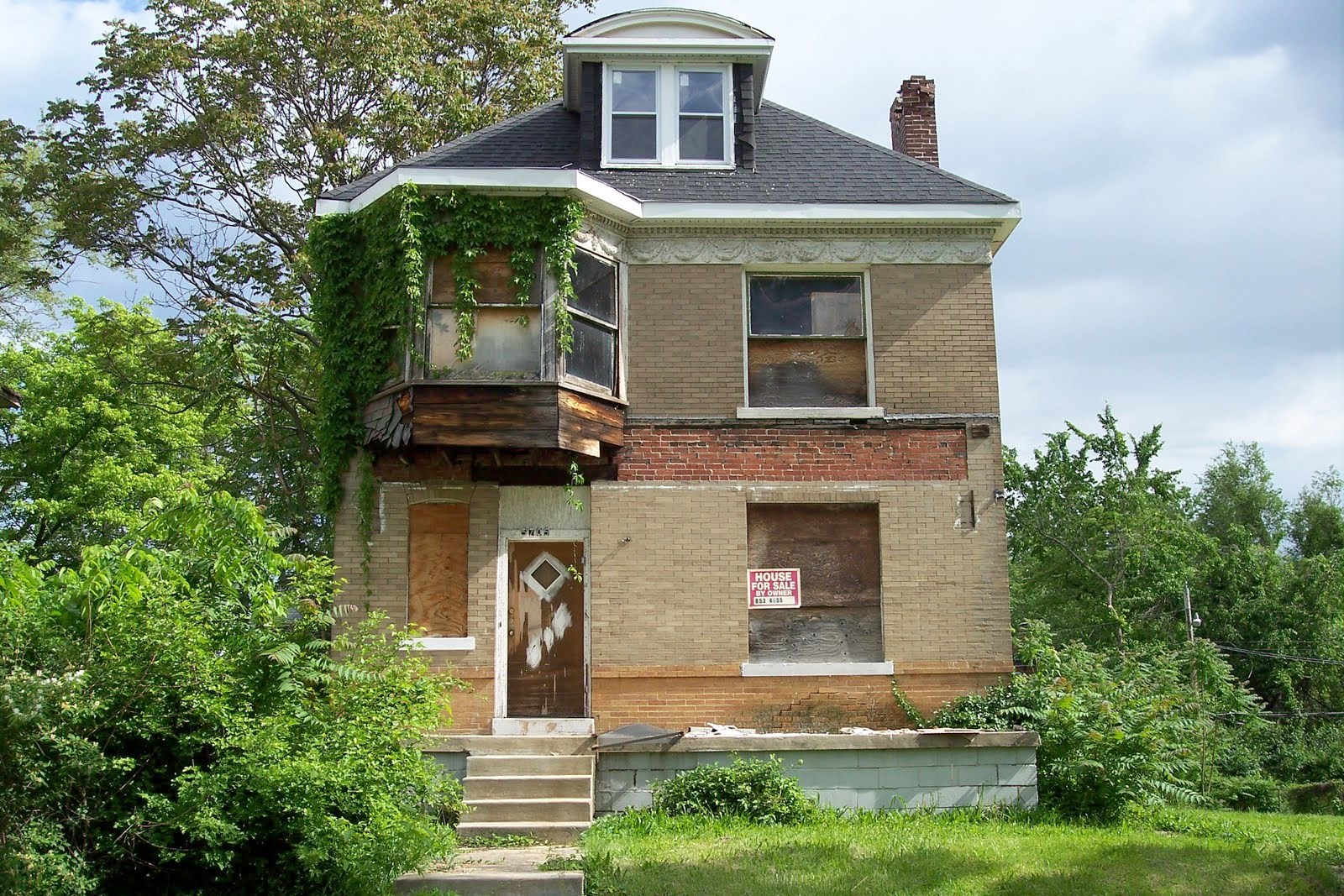
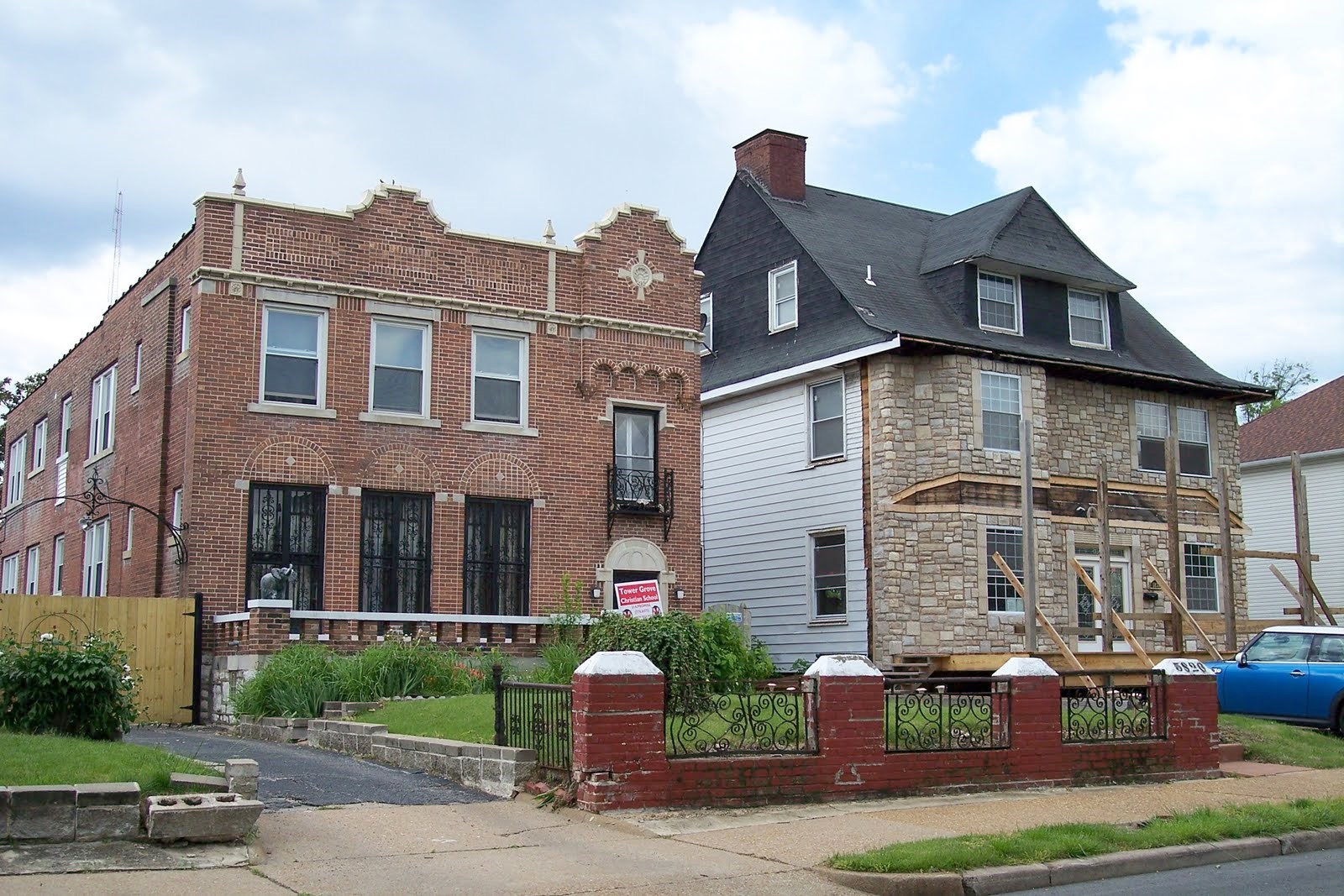
Are these next two beautiful gems are memorable for their uniqueness (clapboard houses?):
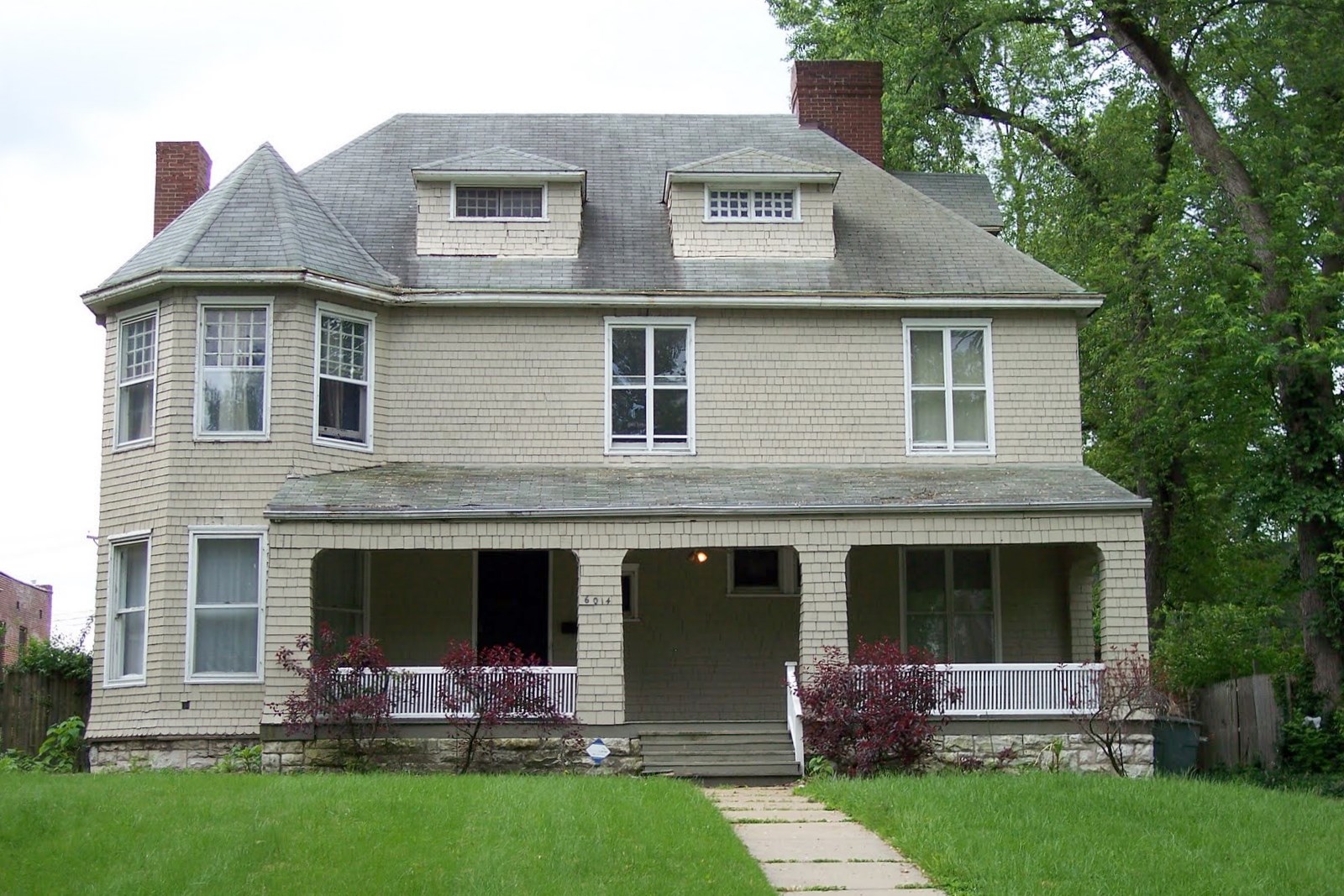
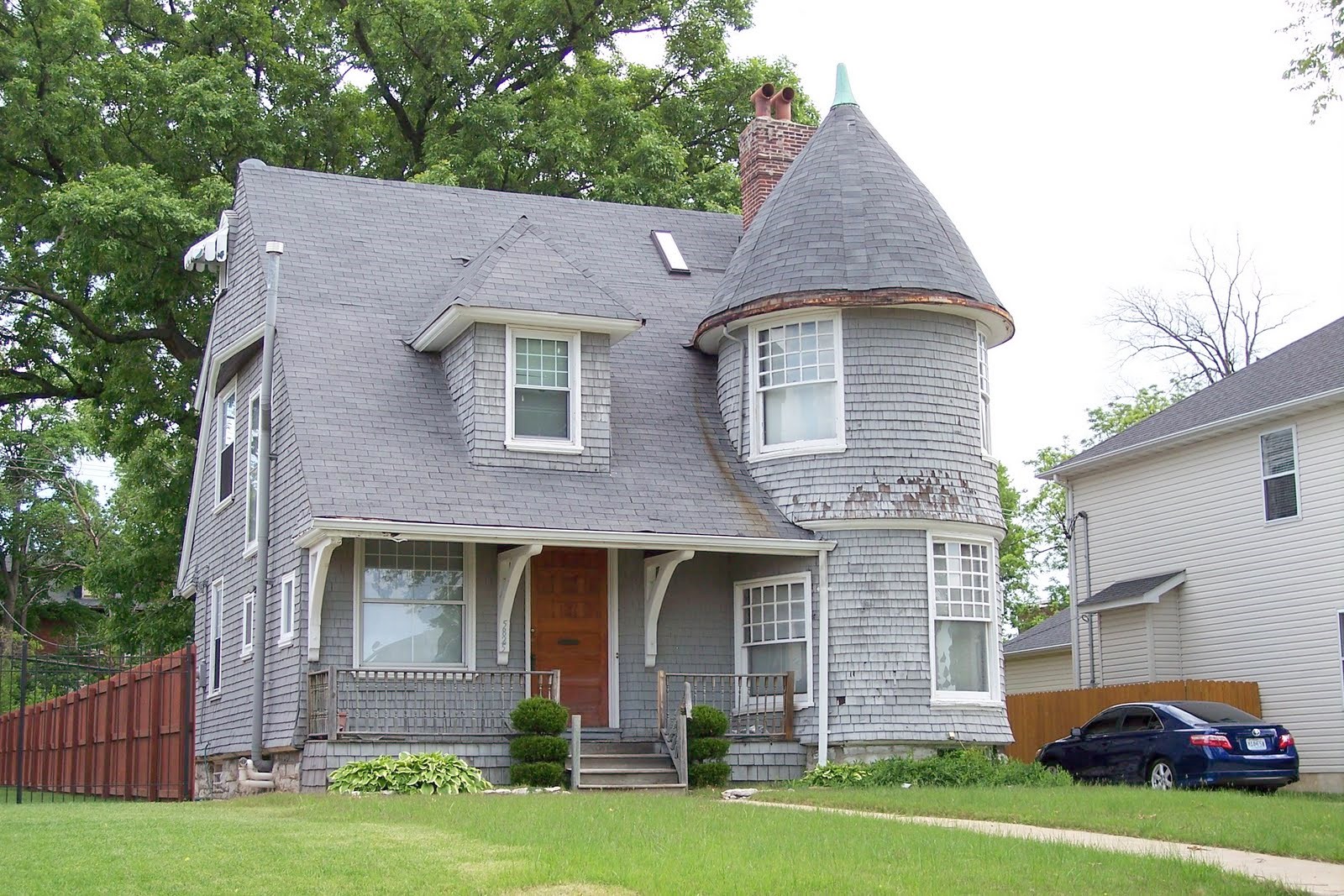
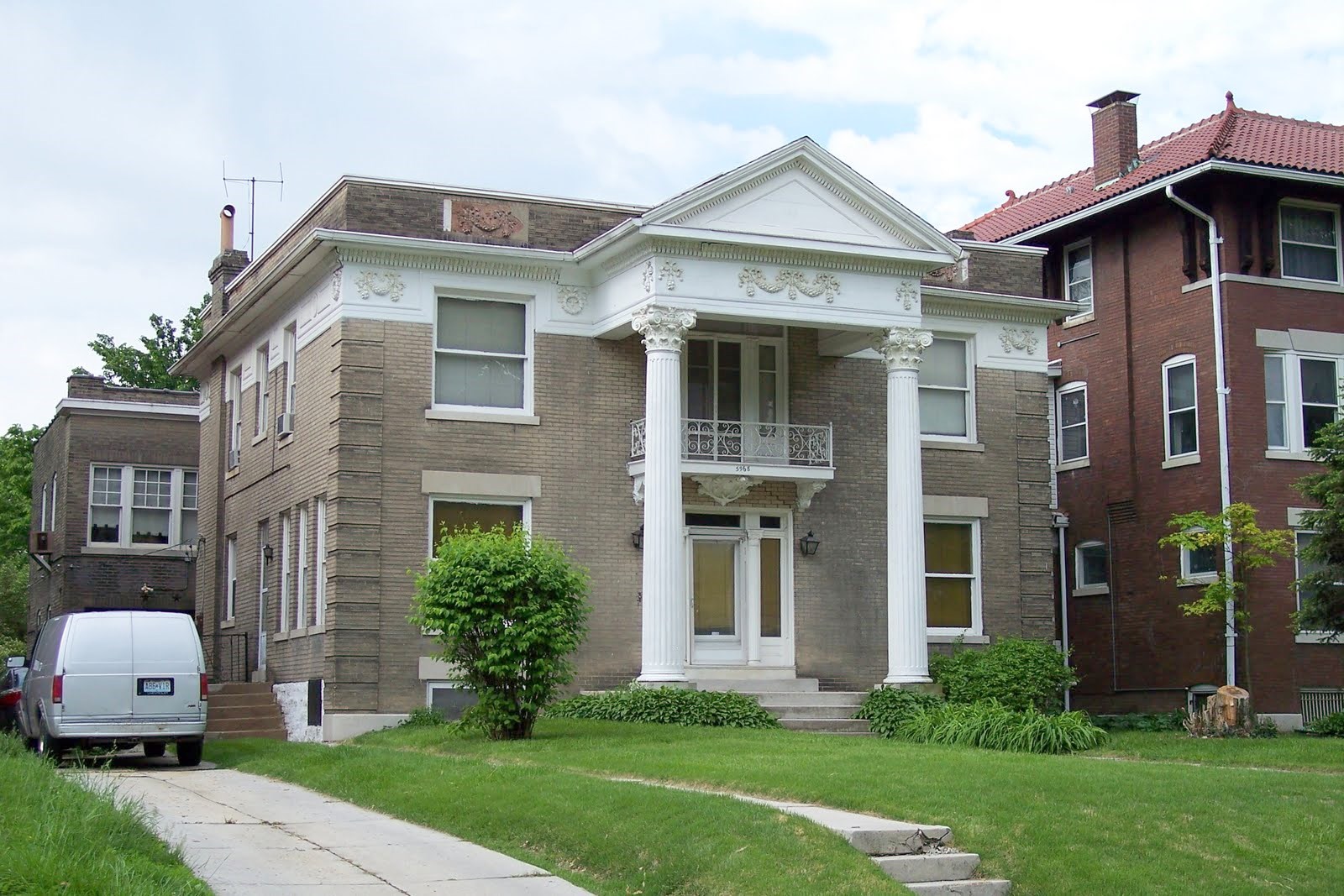
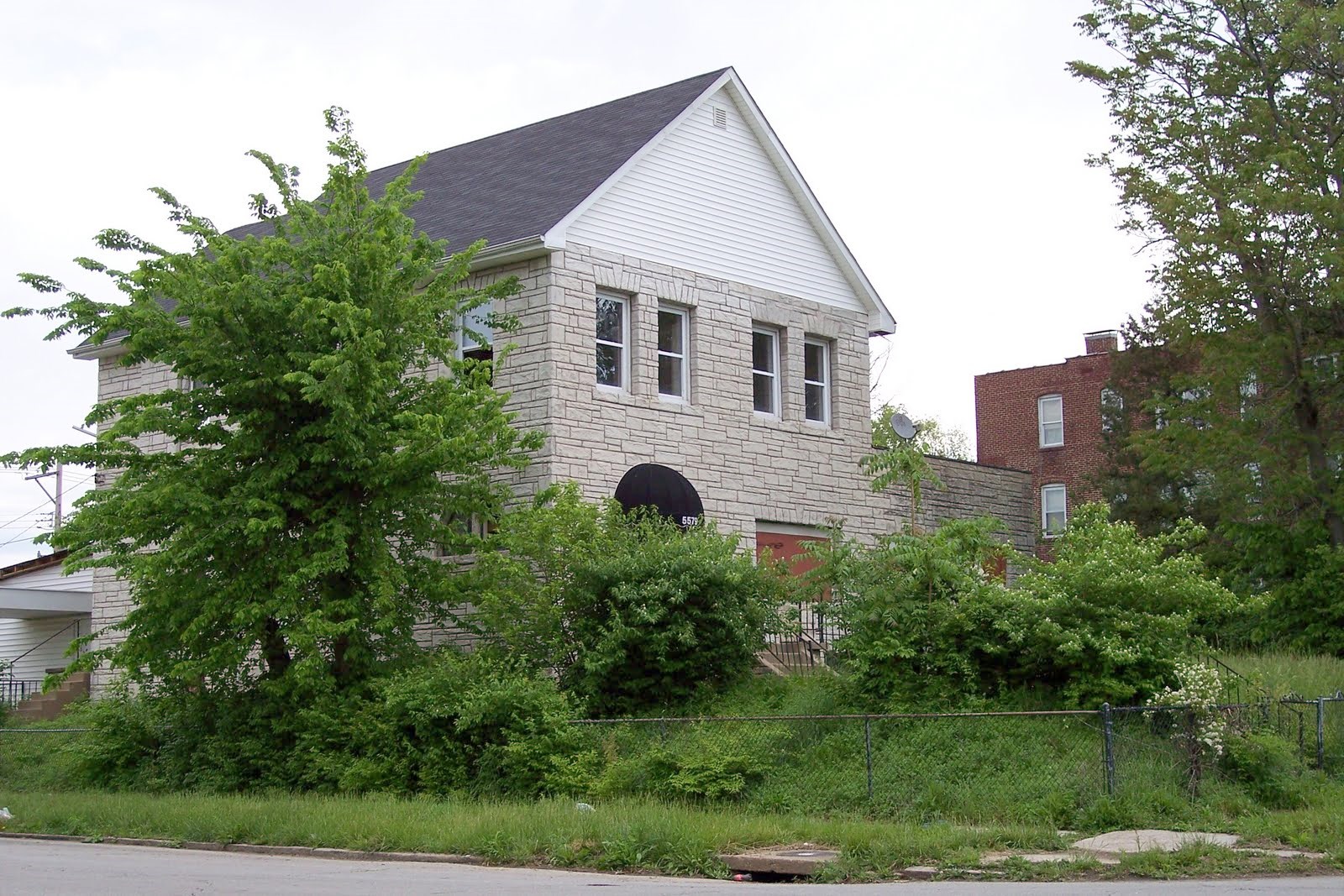
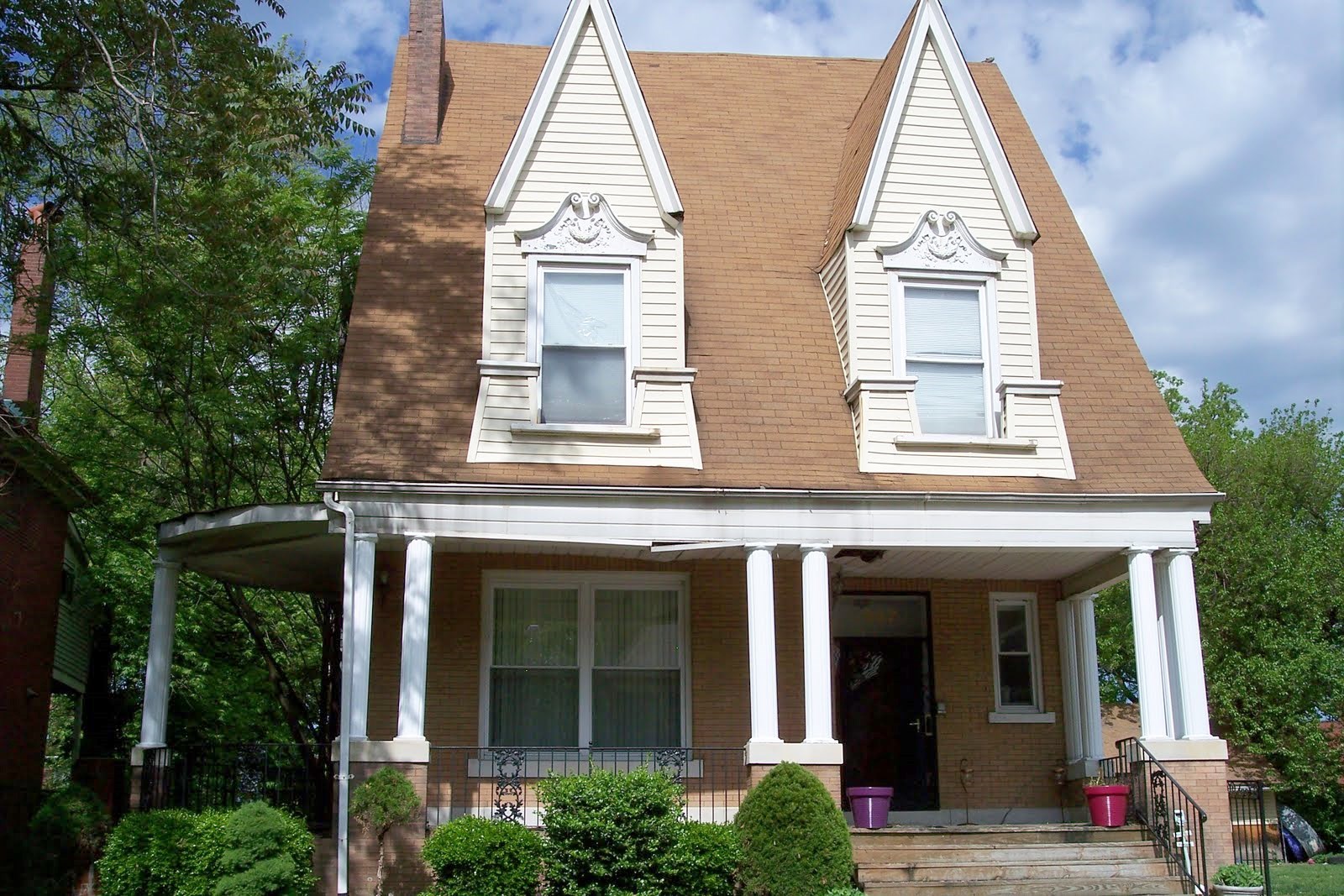
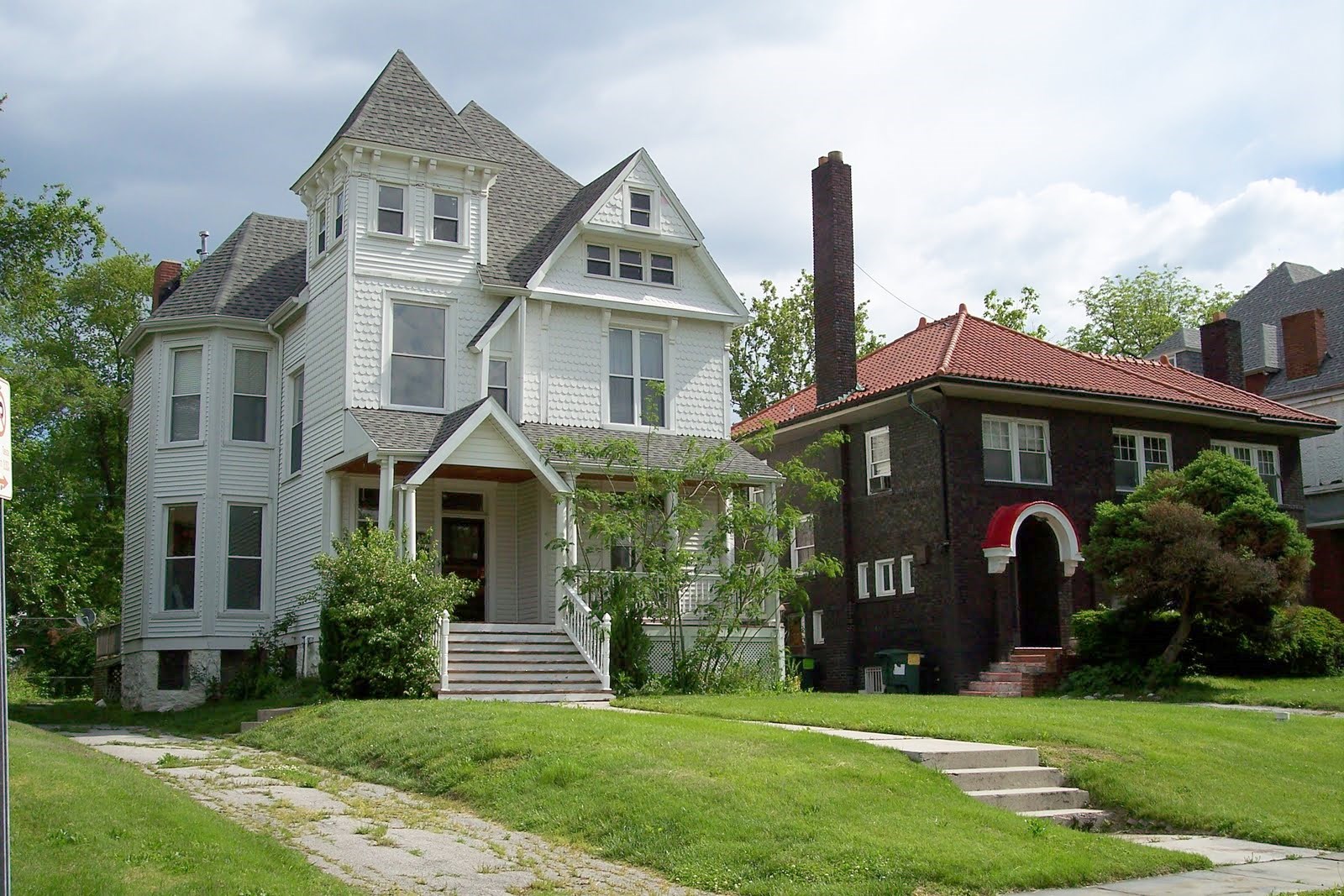
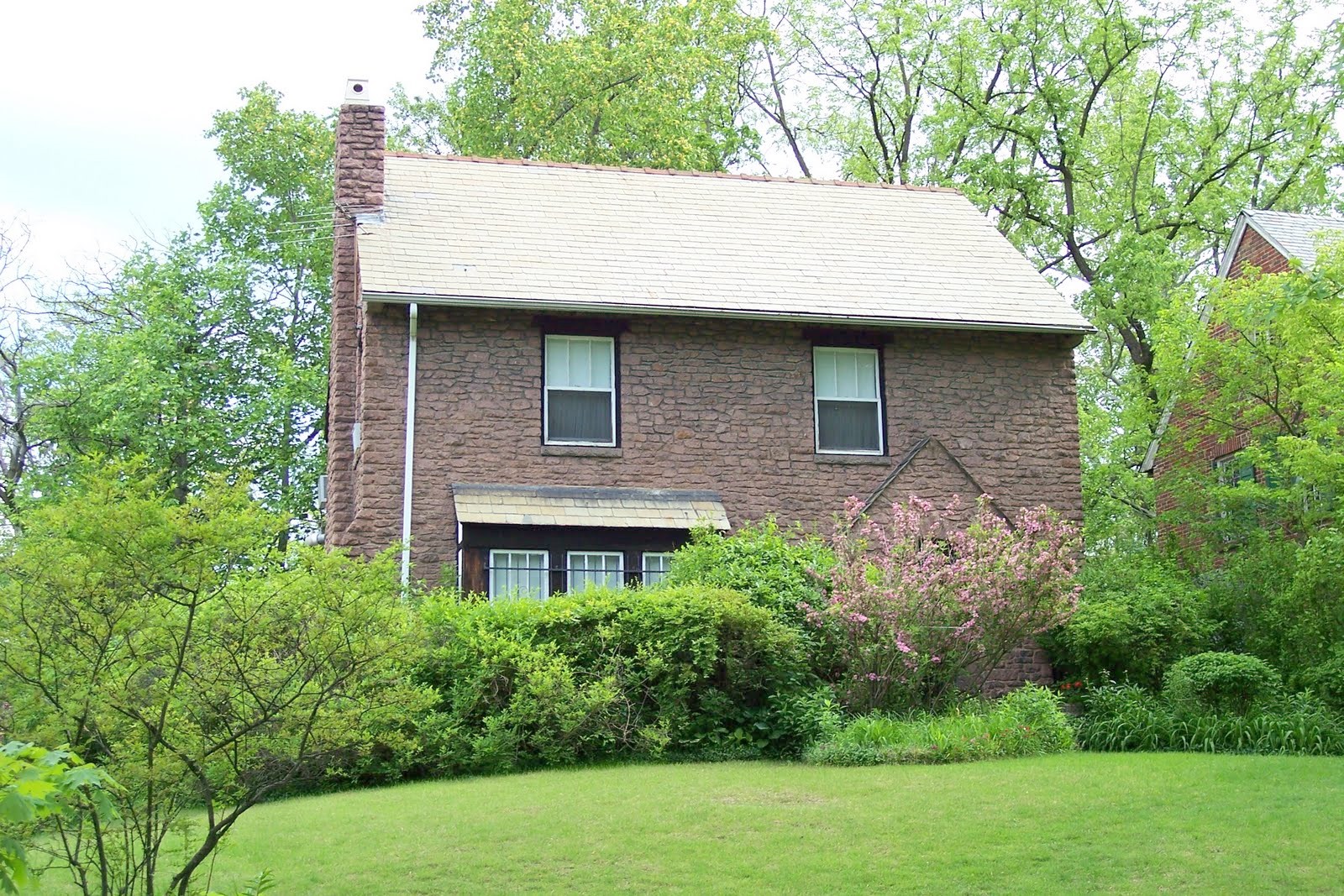
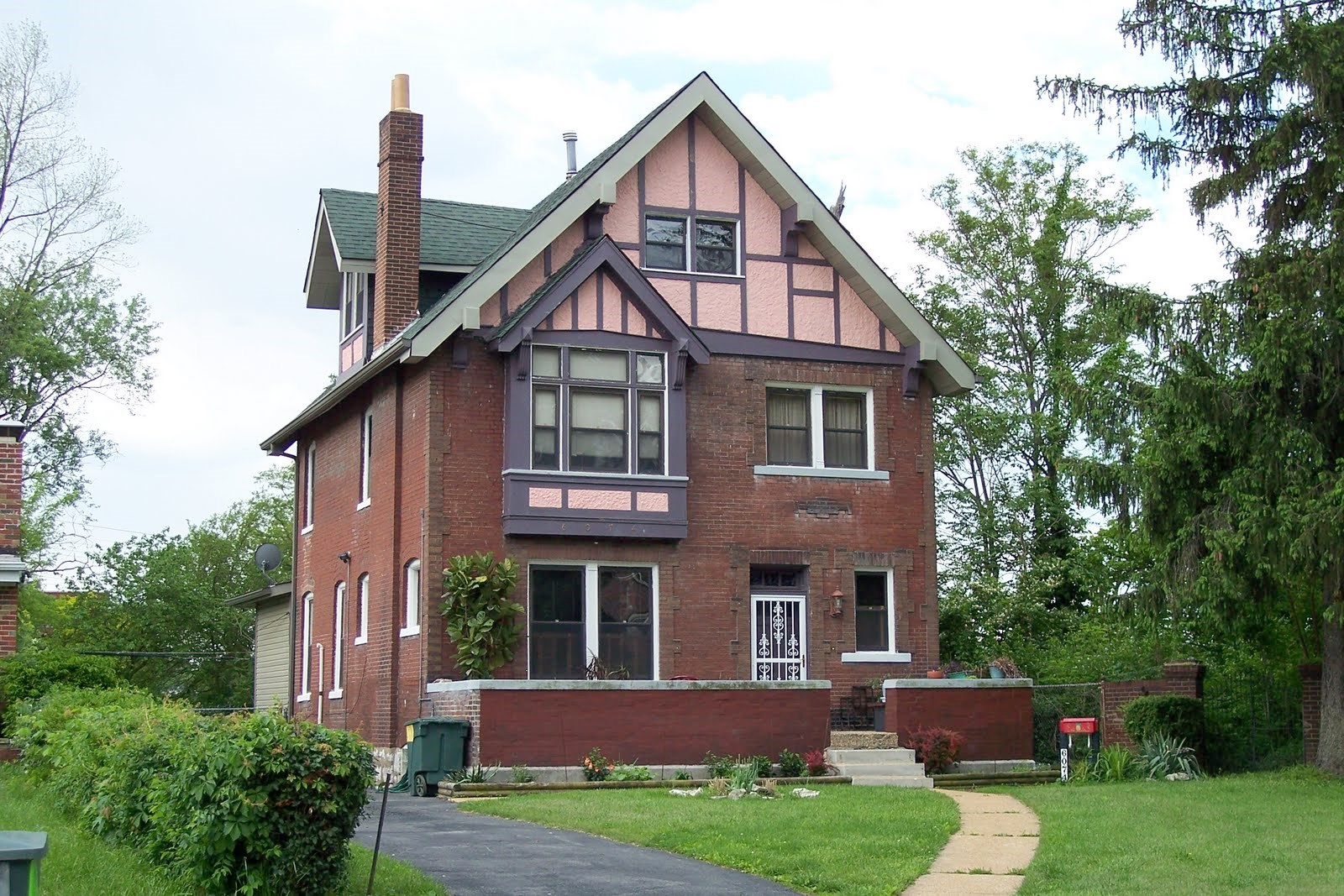
The cool looking Hamilton Apartments:
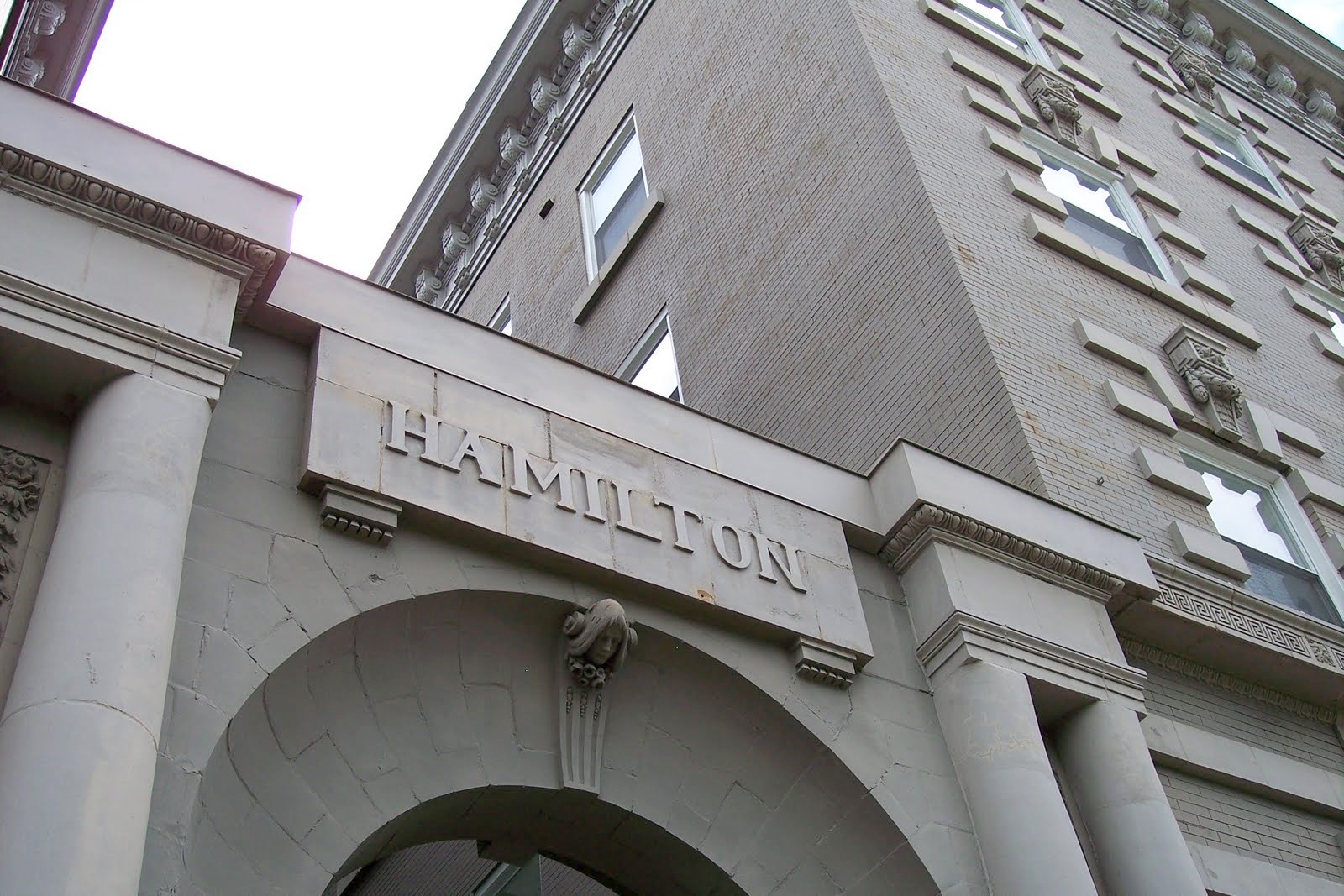
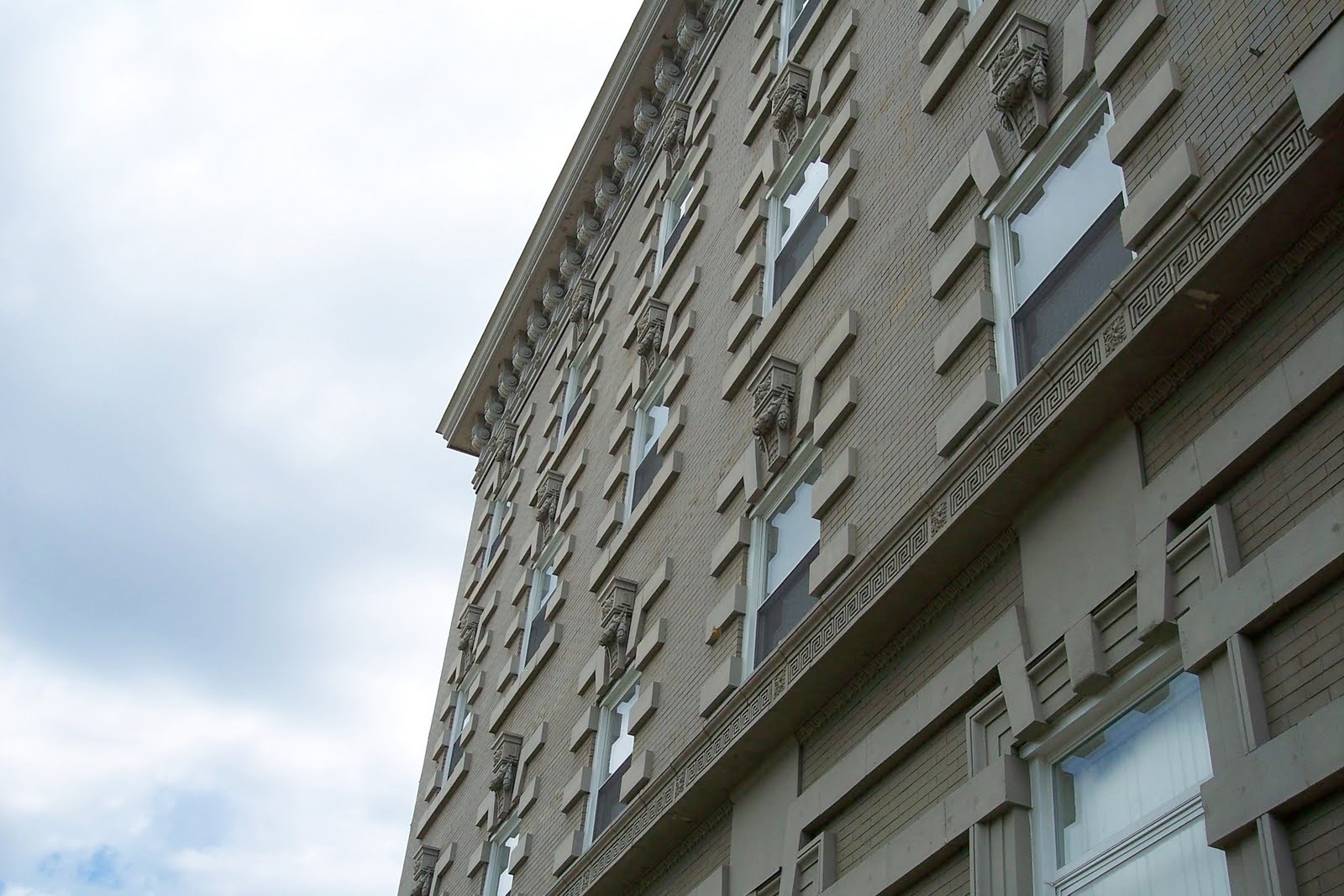
One of several old folks homes:
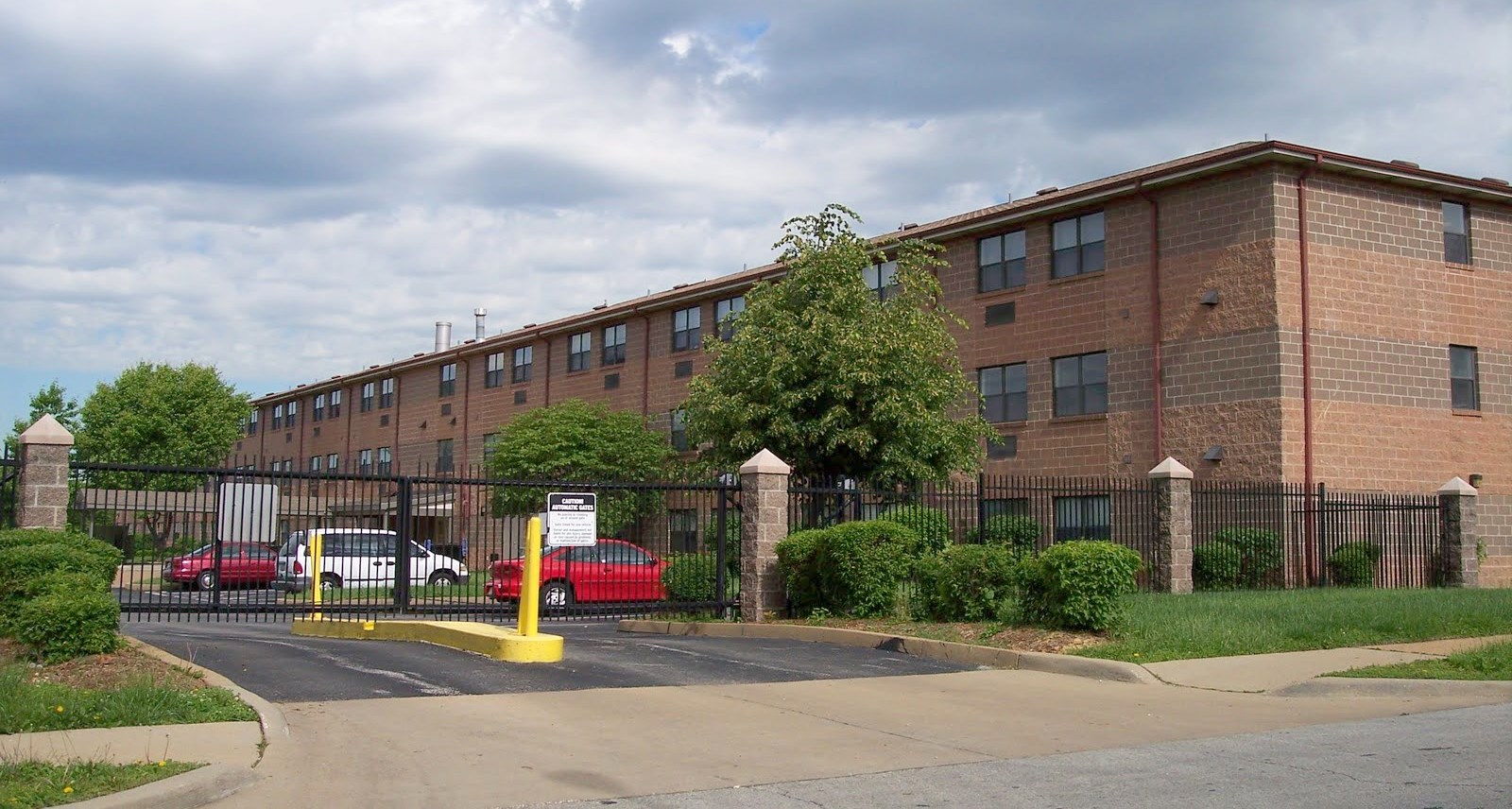
Back to the houses:
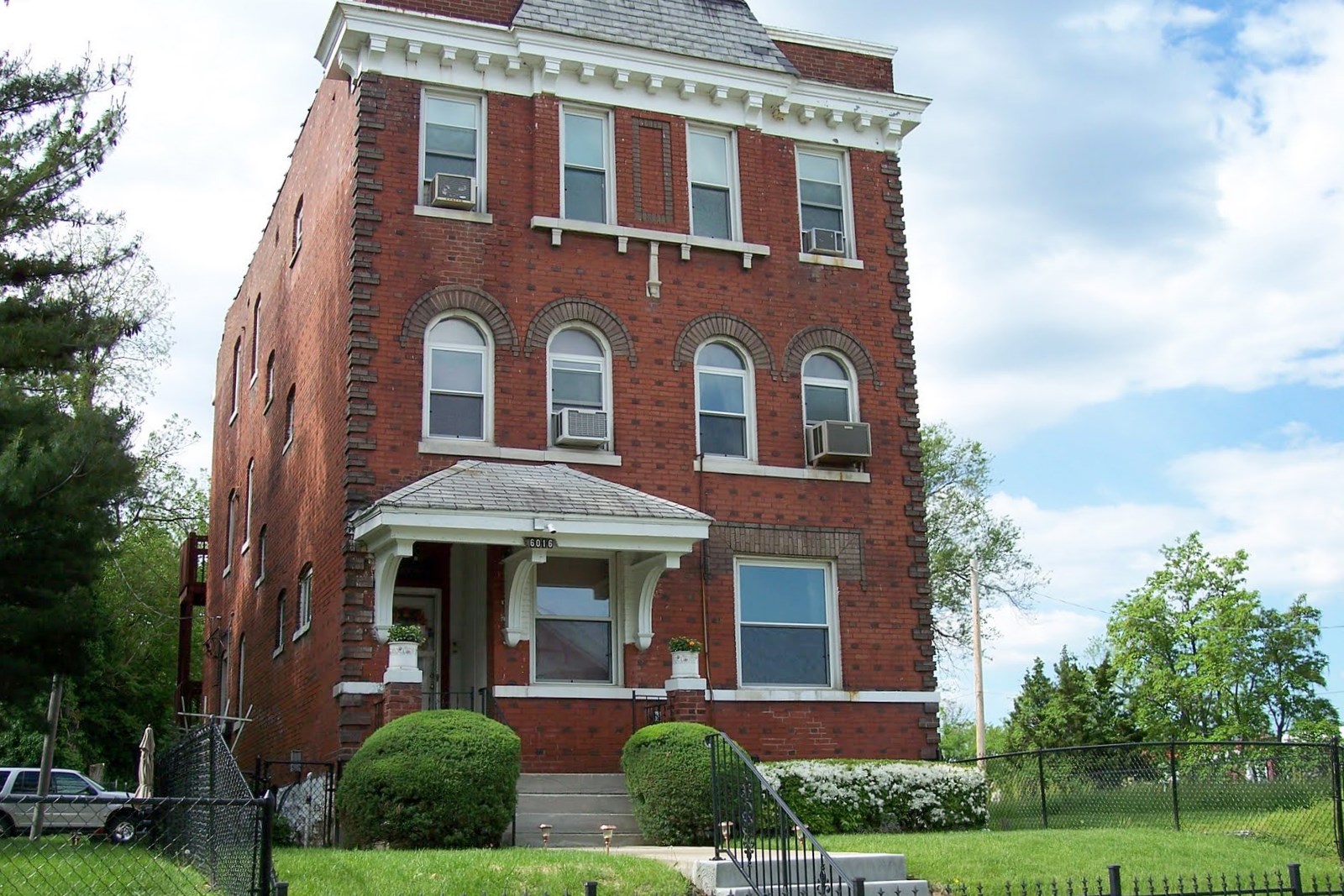
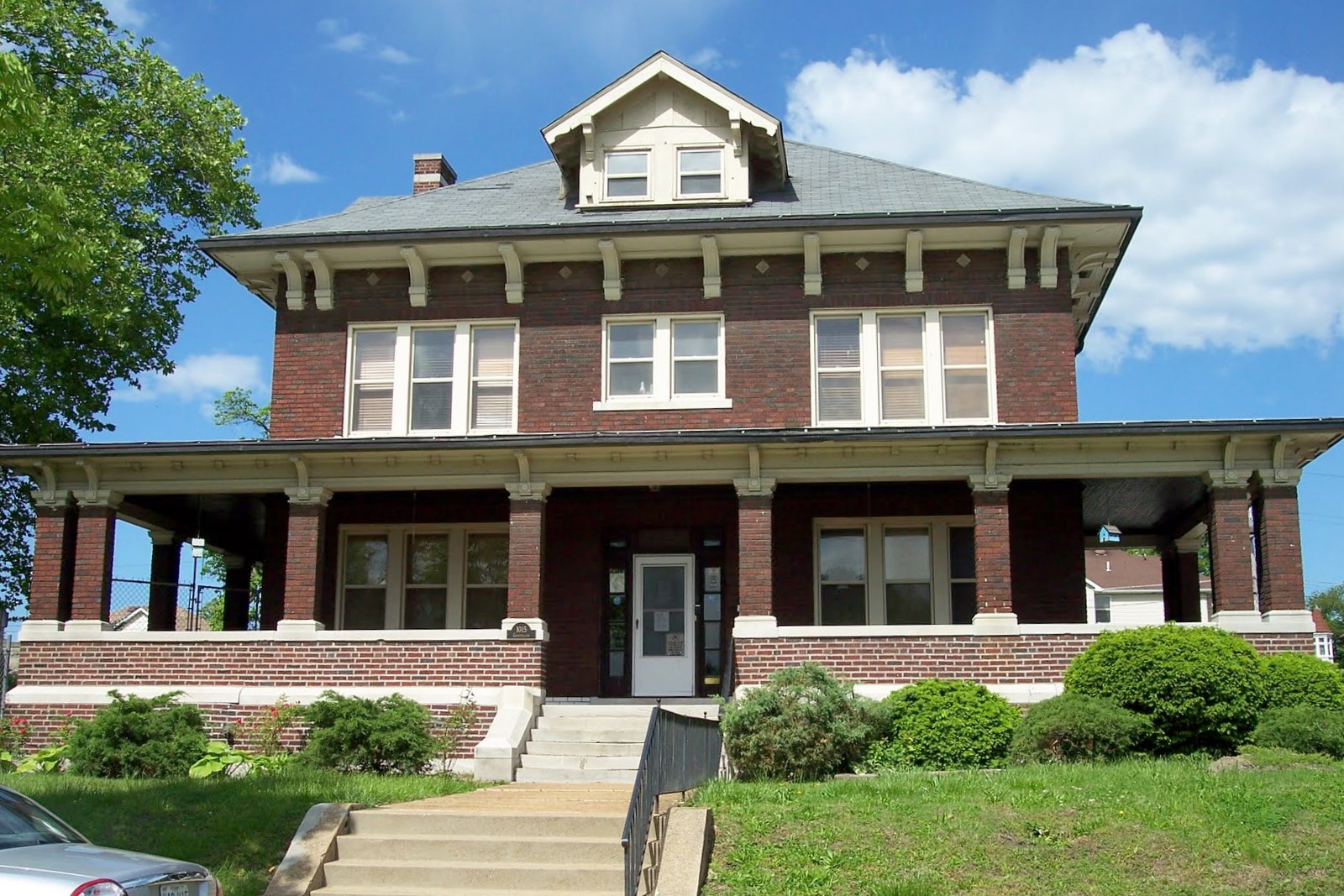
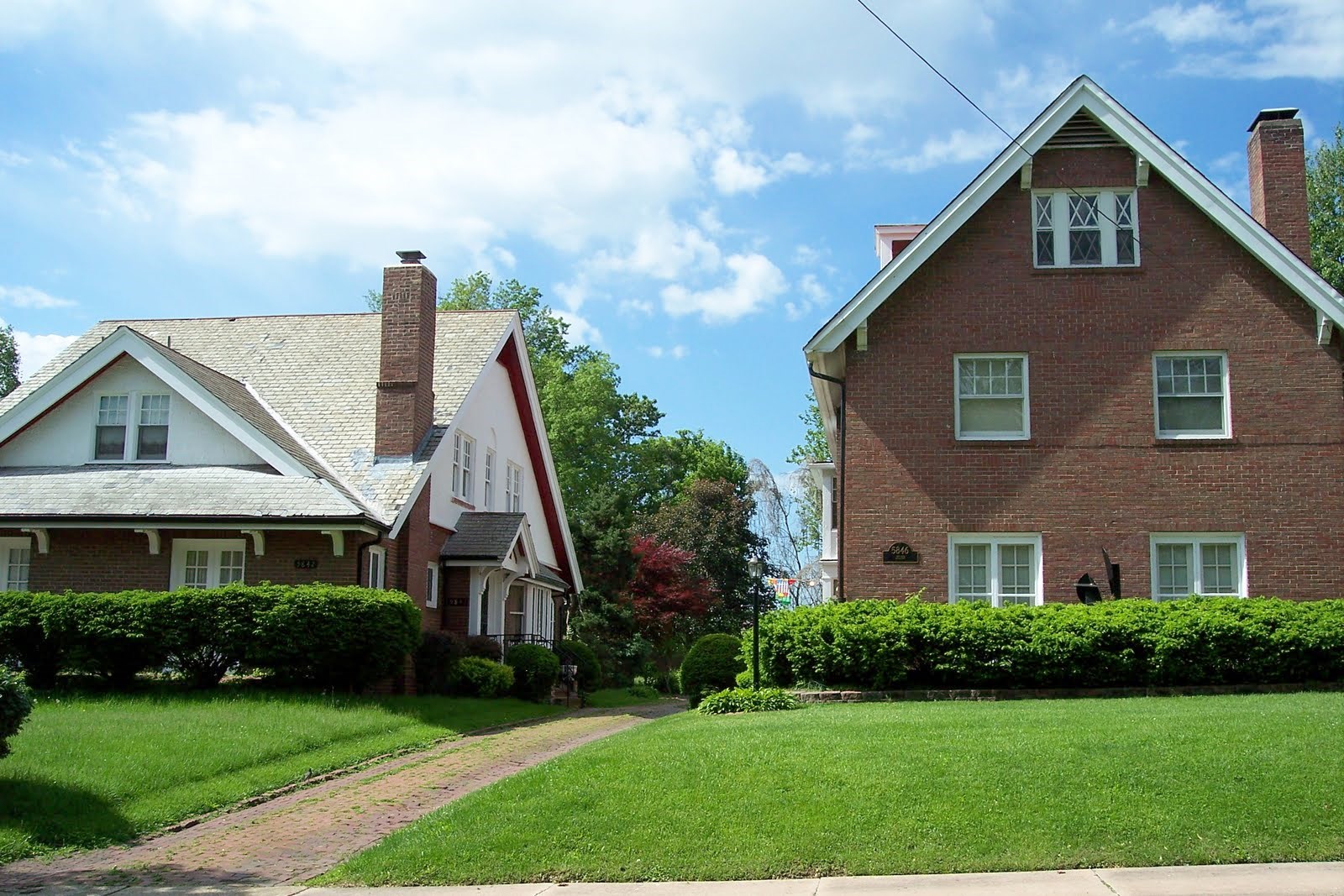
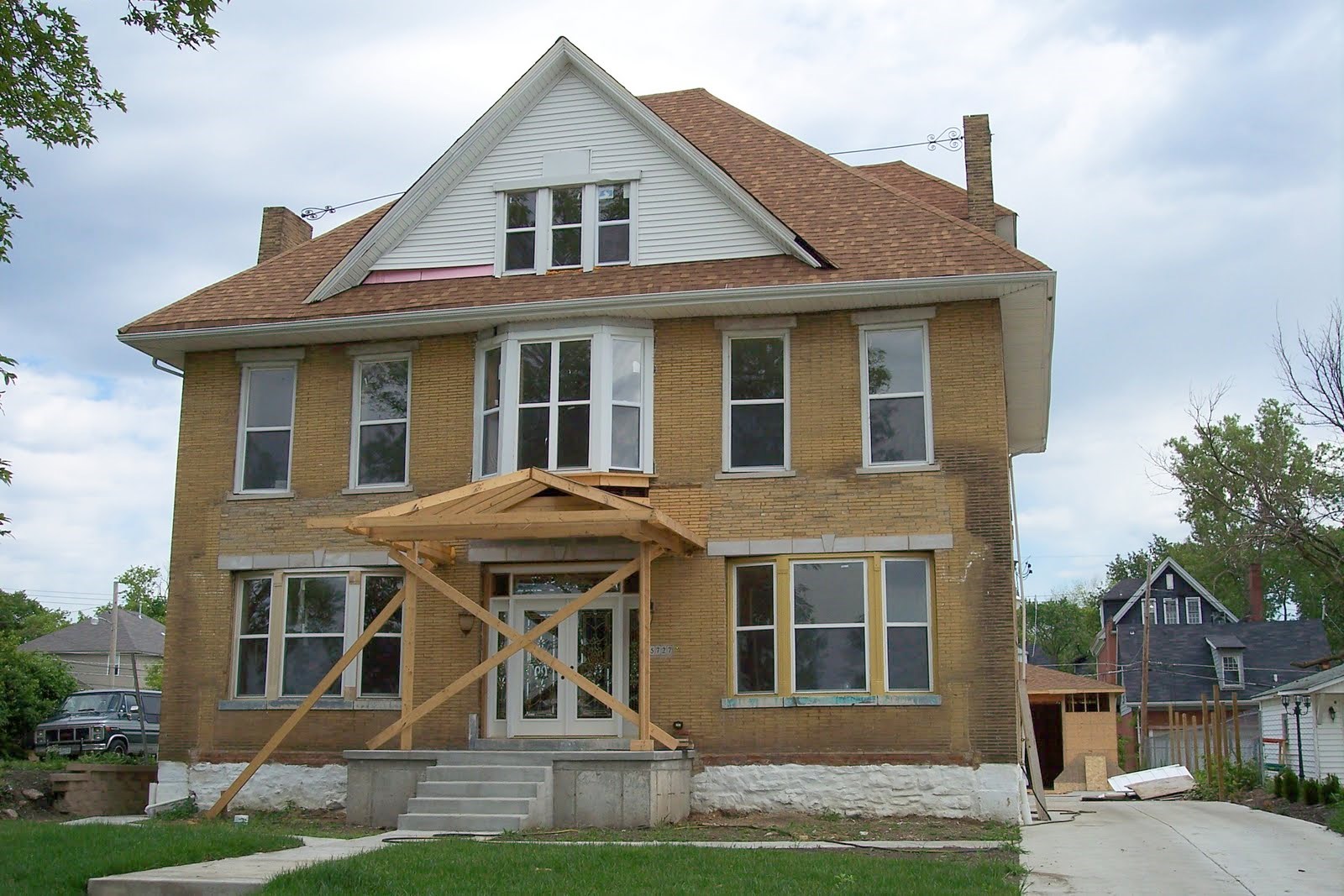
Driving along Skinker, you wouldn’t even know the West End is a cool place because of this kind of thing:
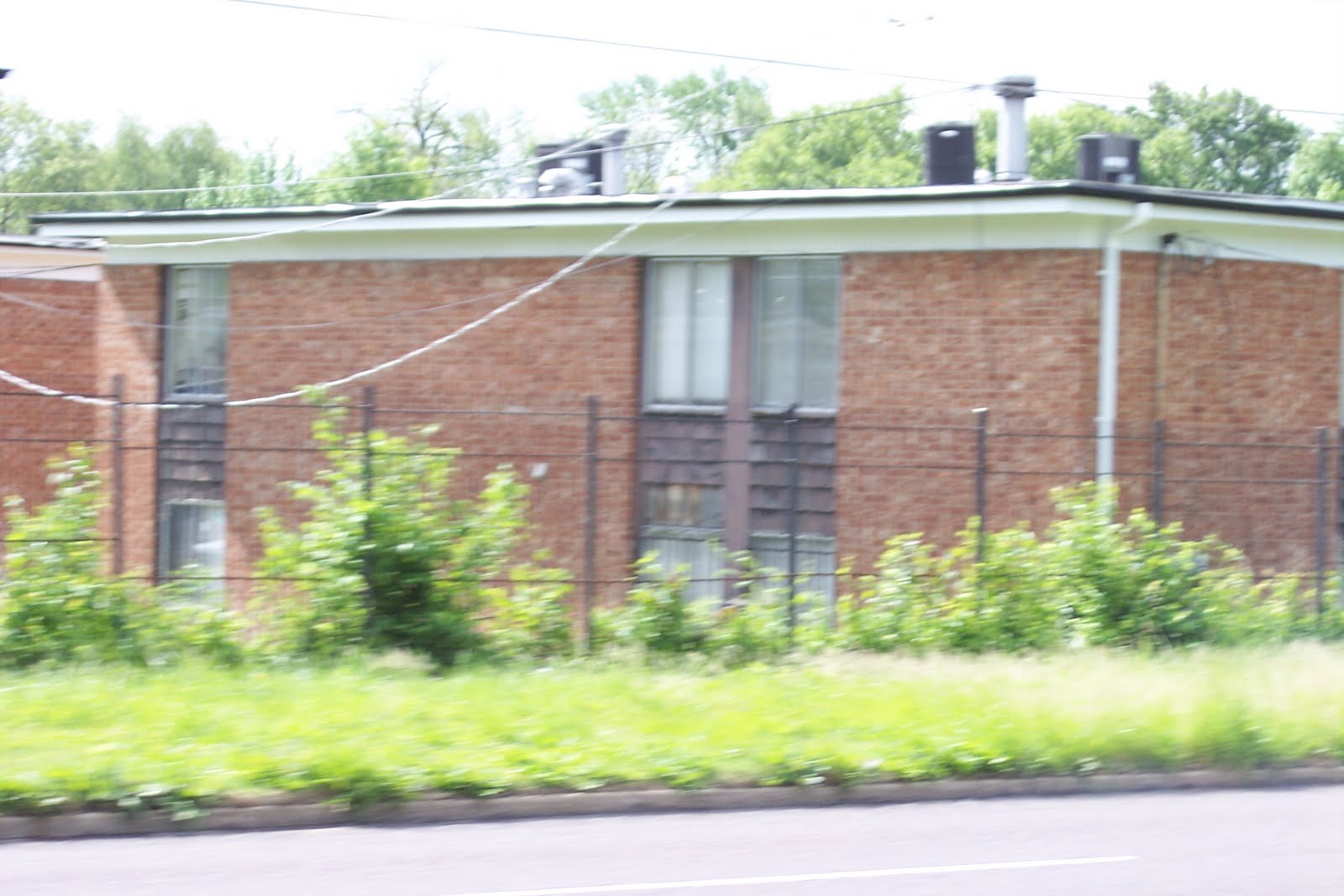
But a quick detour off the main streets takes you back into the fascinating blocks revealing some of the best St. Louis has to offer:
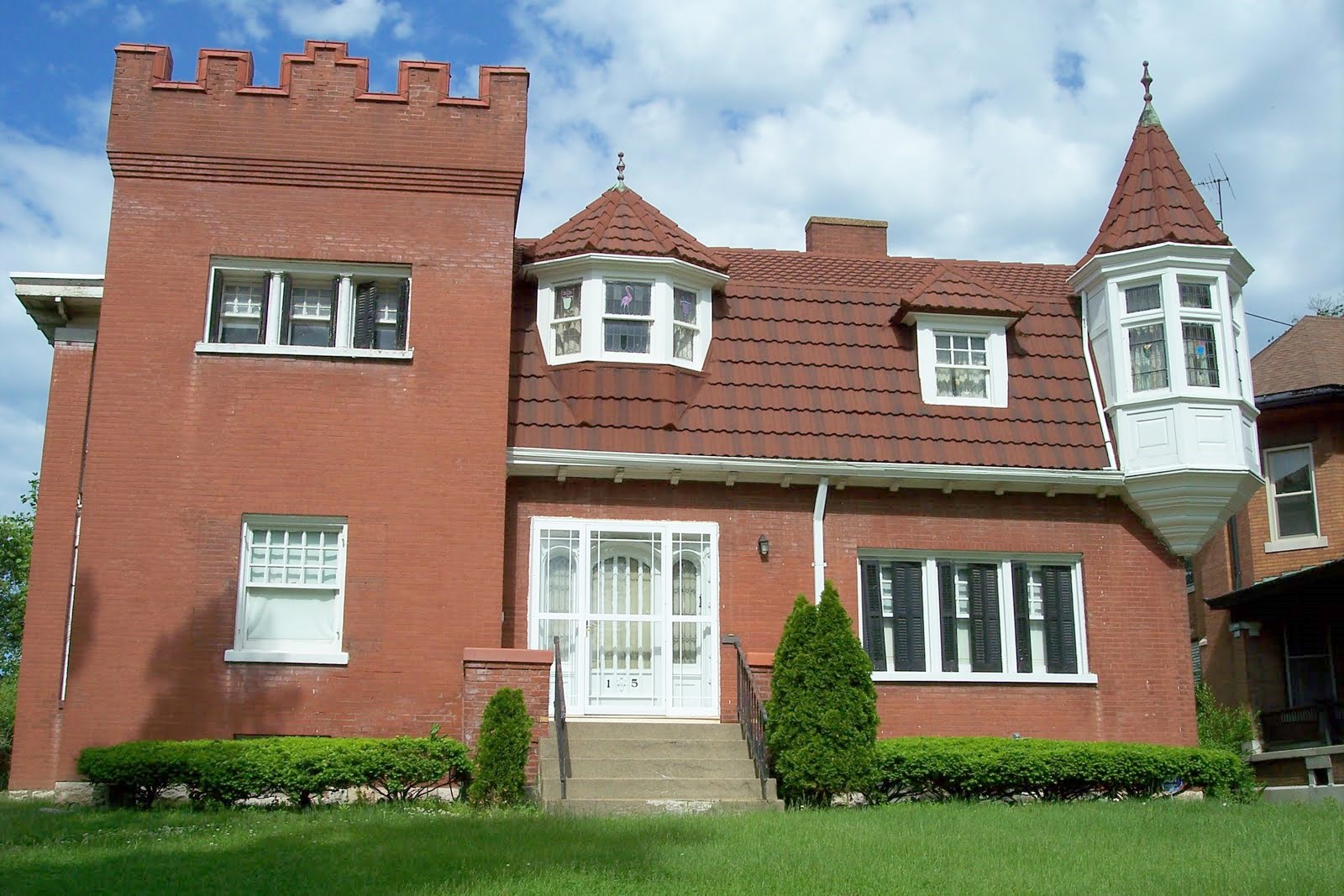
And the LRA and shuttered structures waiting in line for someone who cares:
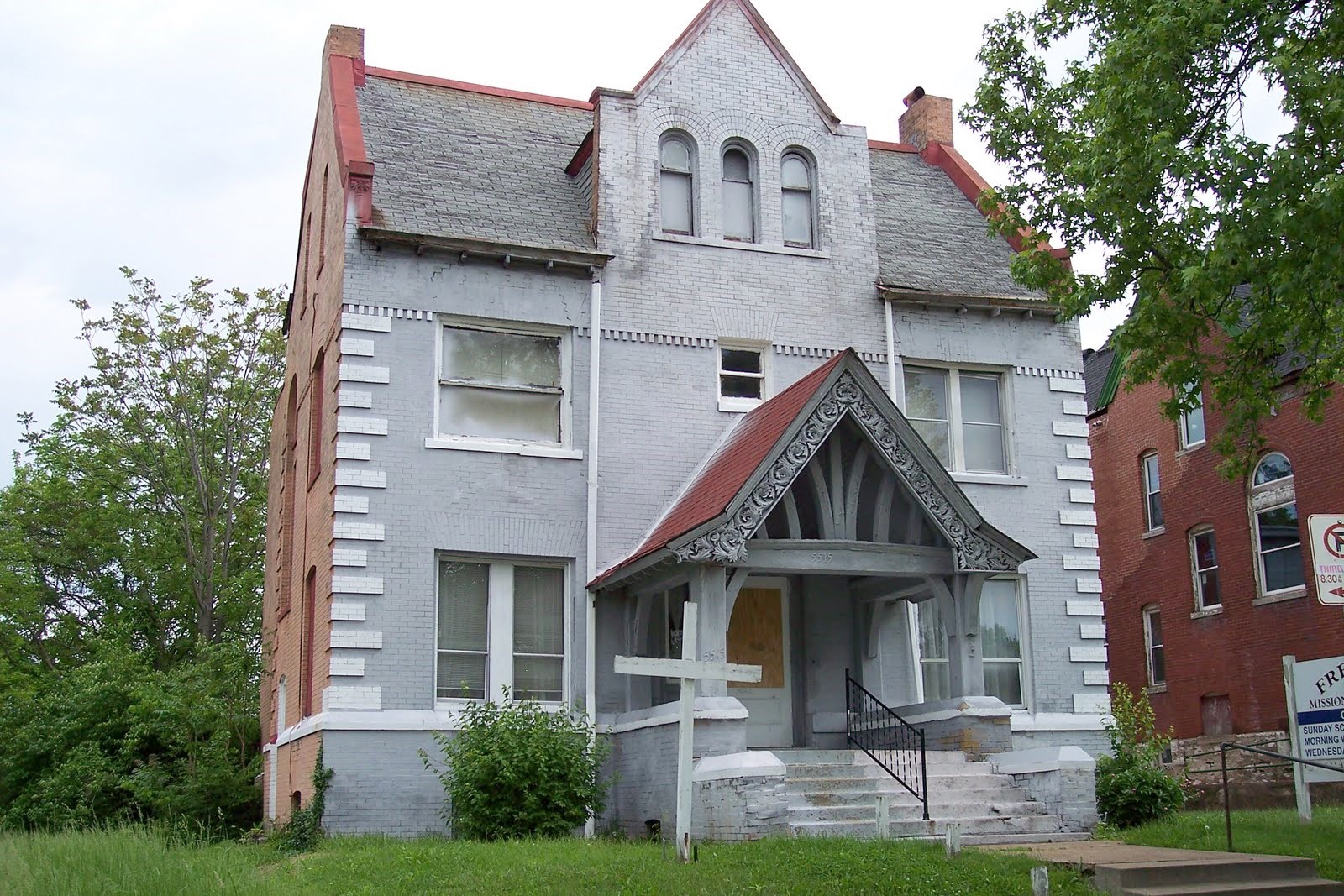
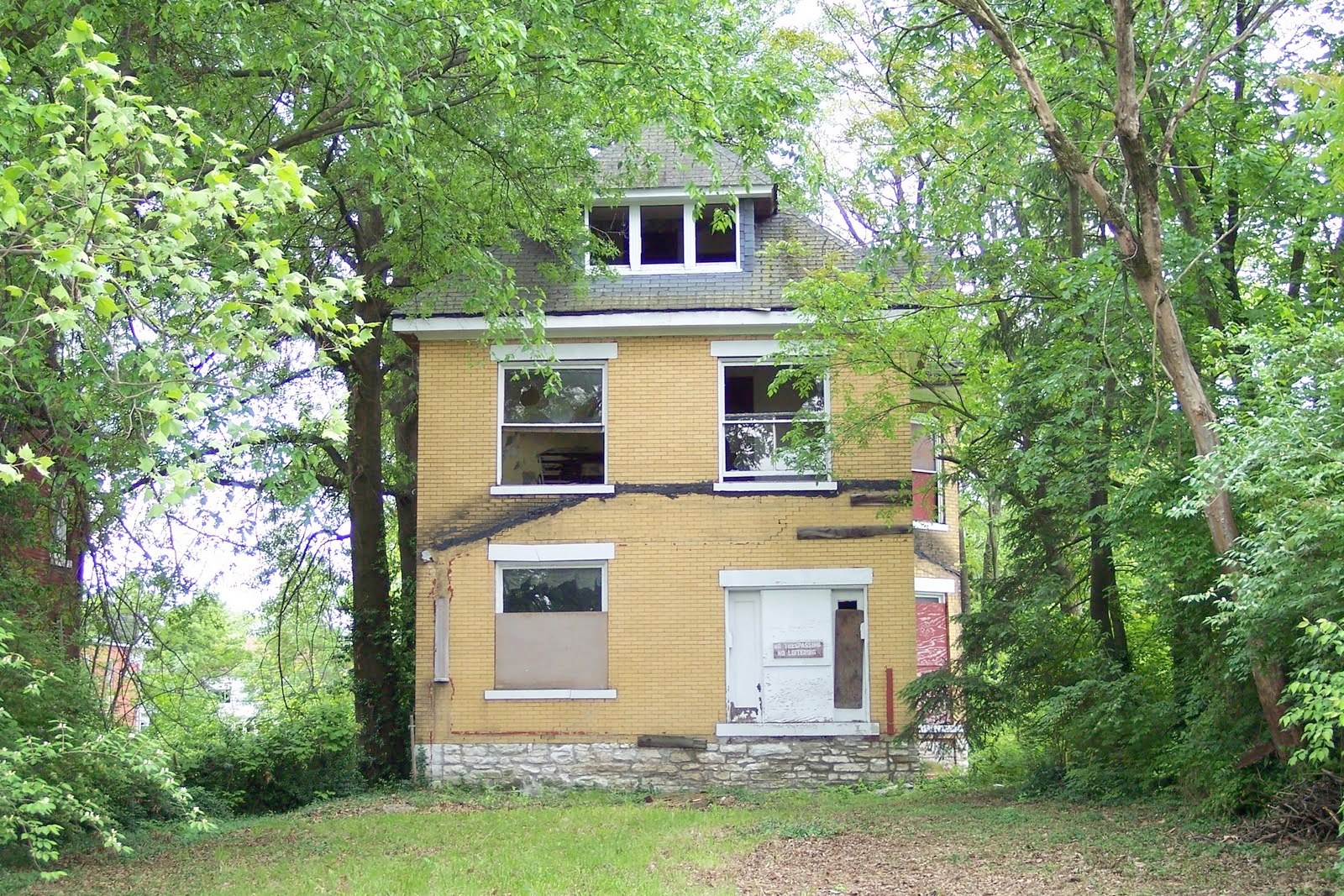
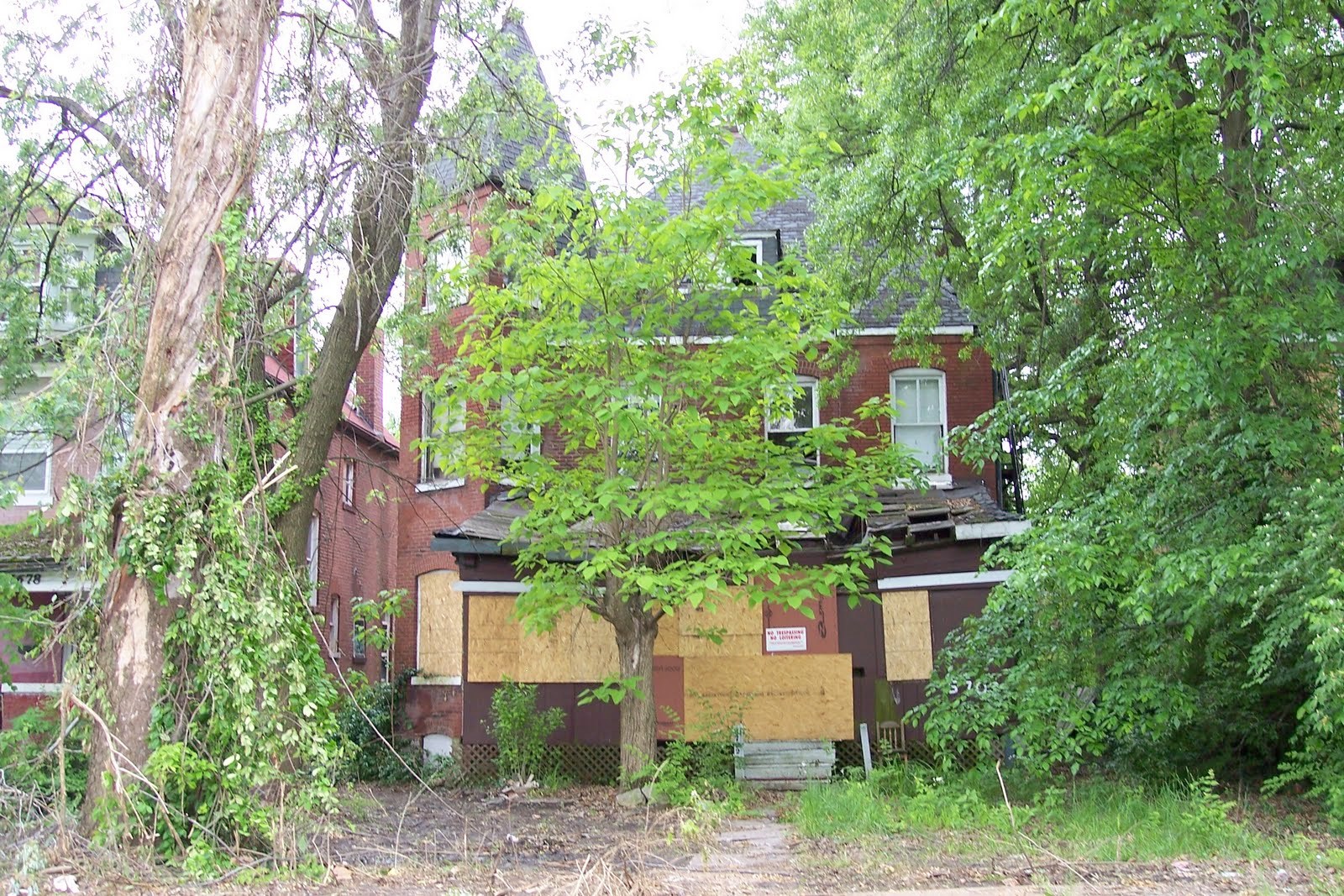
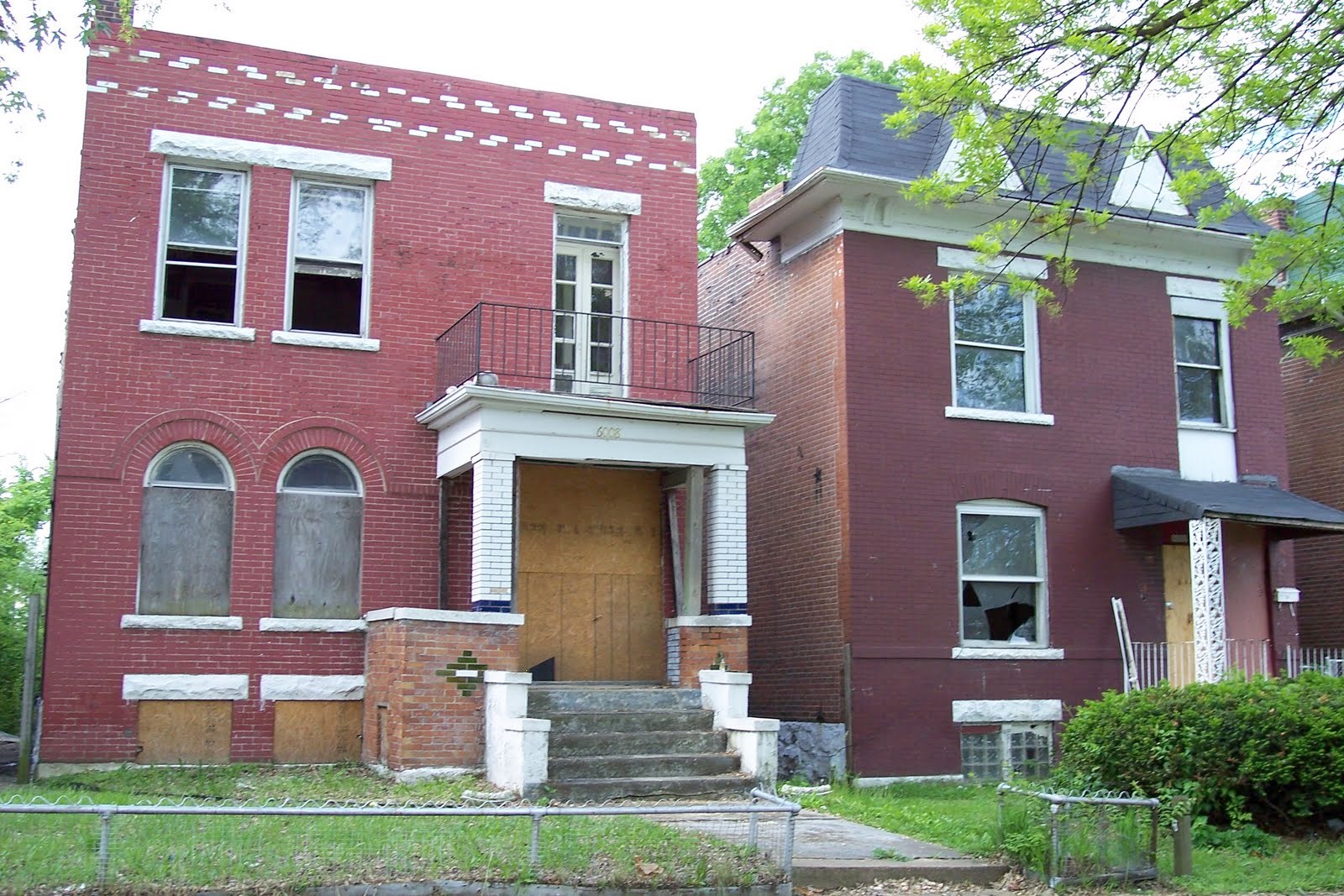
And some mid-century experiments that didn’t pan out:
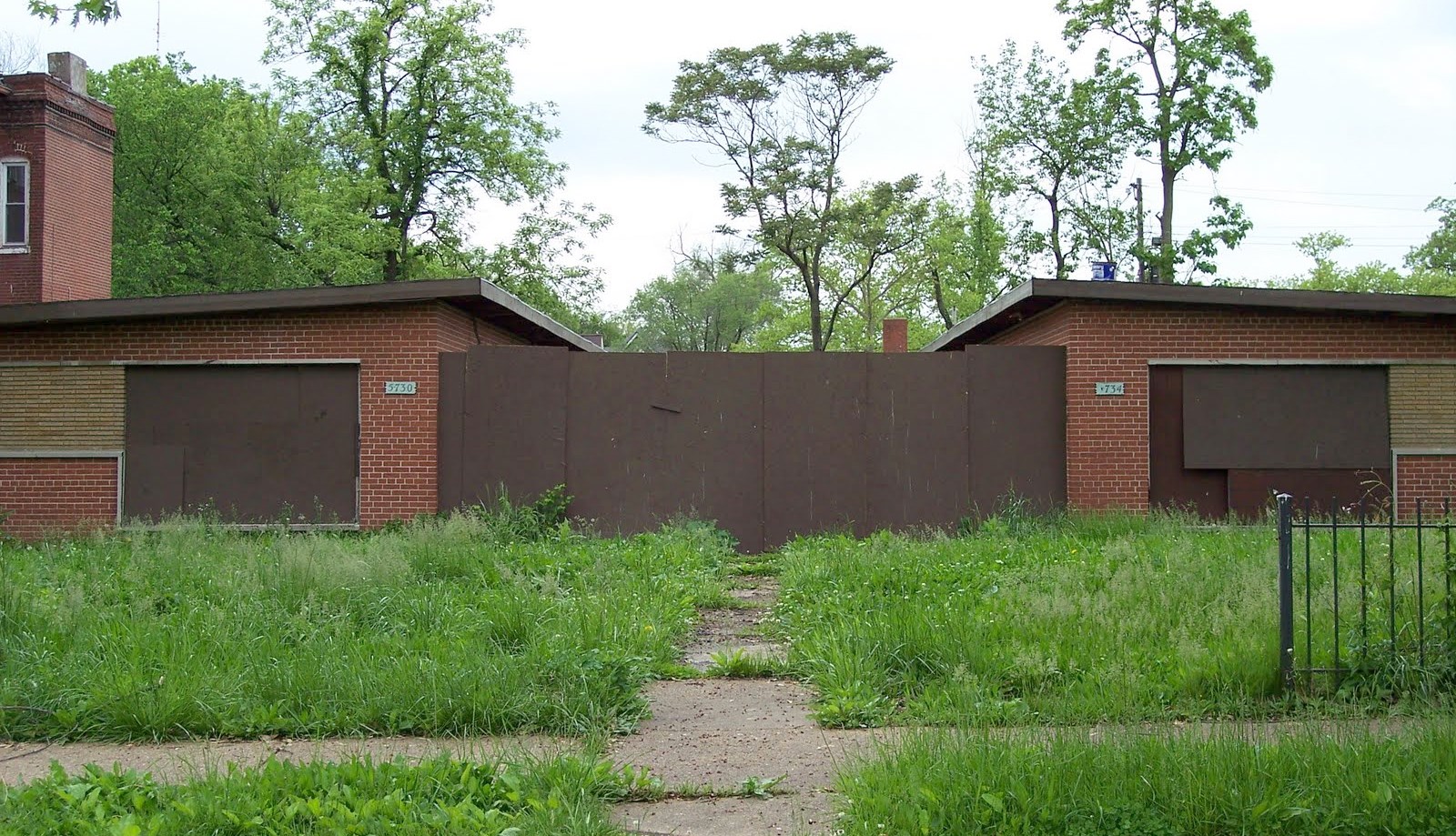
But wait, there are more stunning places to take in:
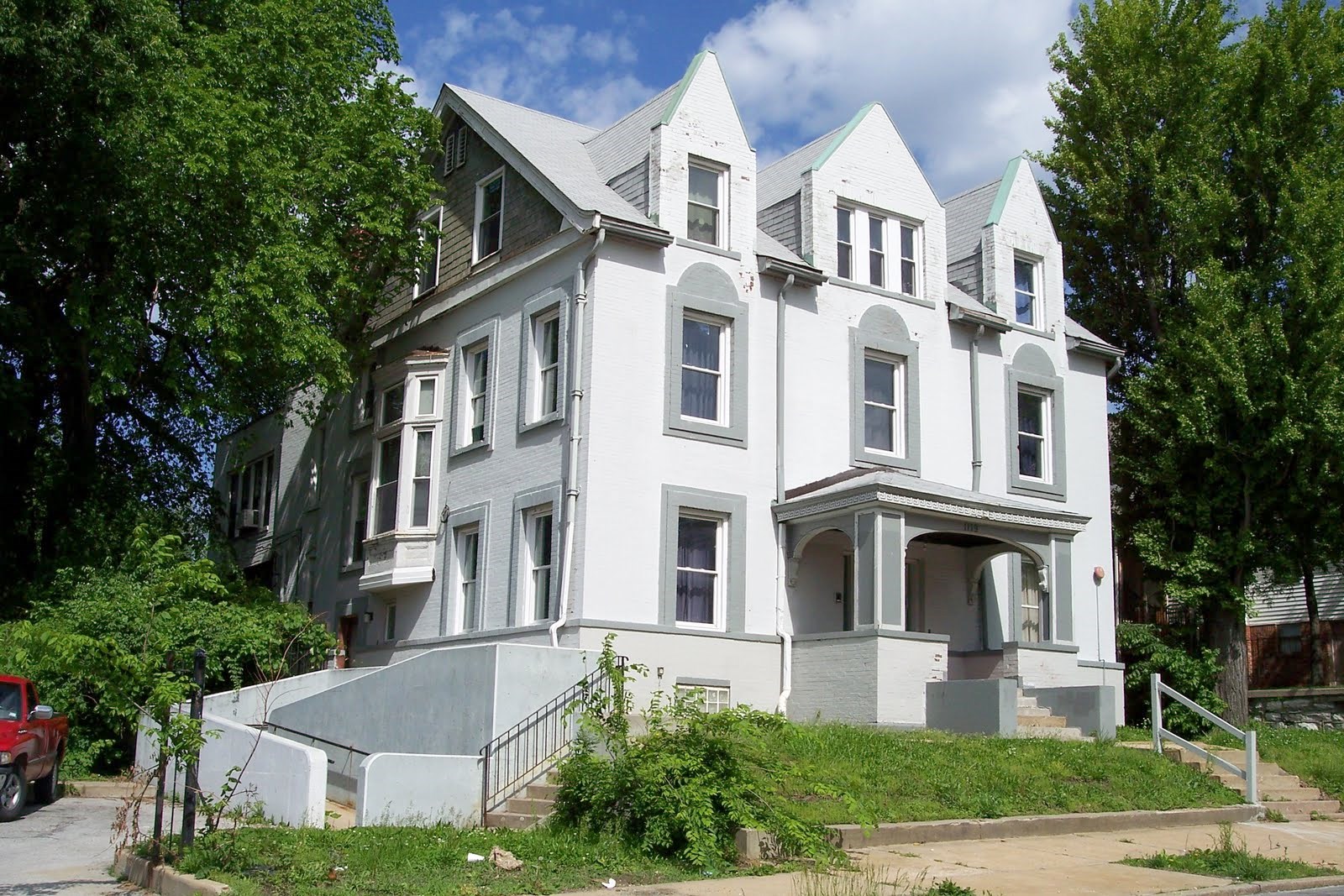
Page Avenue is a straight up amazing St. Louis street. I love it! And it looks relatively good through the West End. It gets much worse toward Fountain Park though.
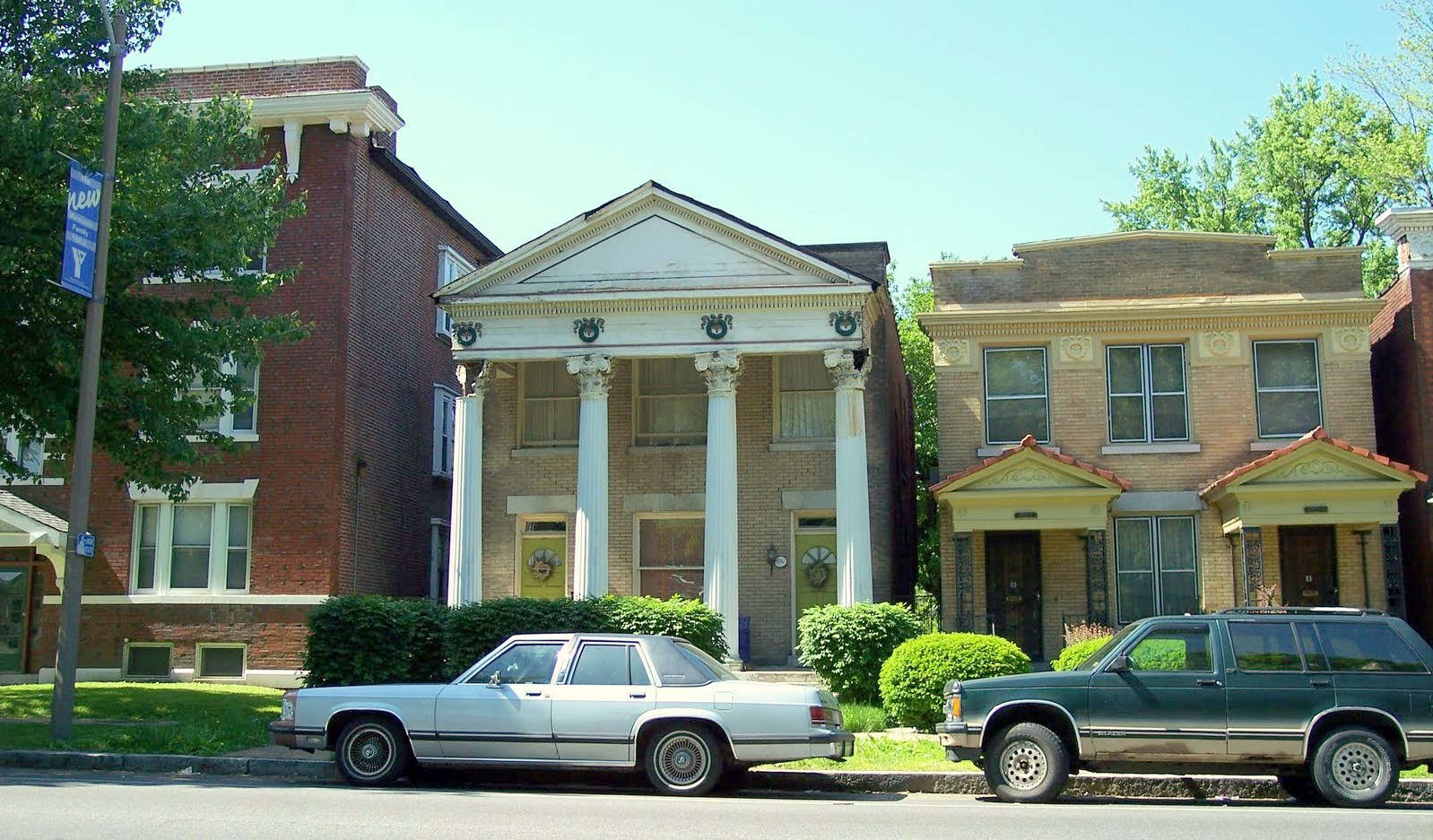
Again, the West End has huge future potential. It could be a draw for people of all kinds and backgrounds, not just the uni-culture that exists today.
There has been tremendous progress in the east Loop with the Joe Edwards draws of the Pageant, the Moonrise Hotel, Pinup Bowl as well as Big Shark Bicycles, Binions, the recently (unfortunately) shuttered Miss Saigon.
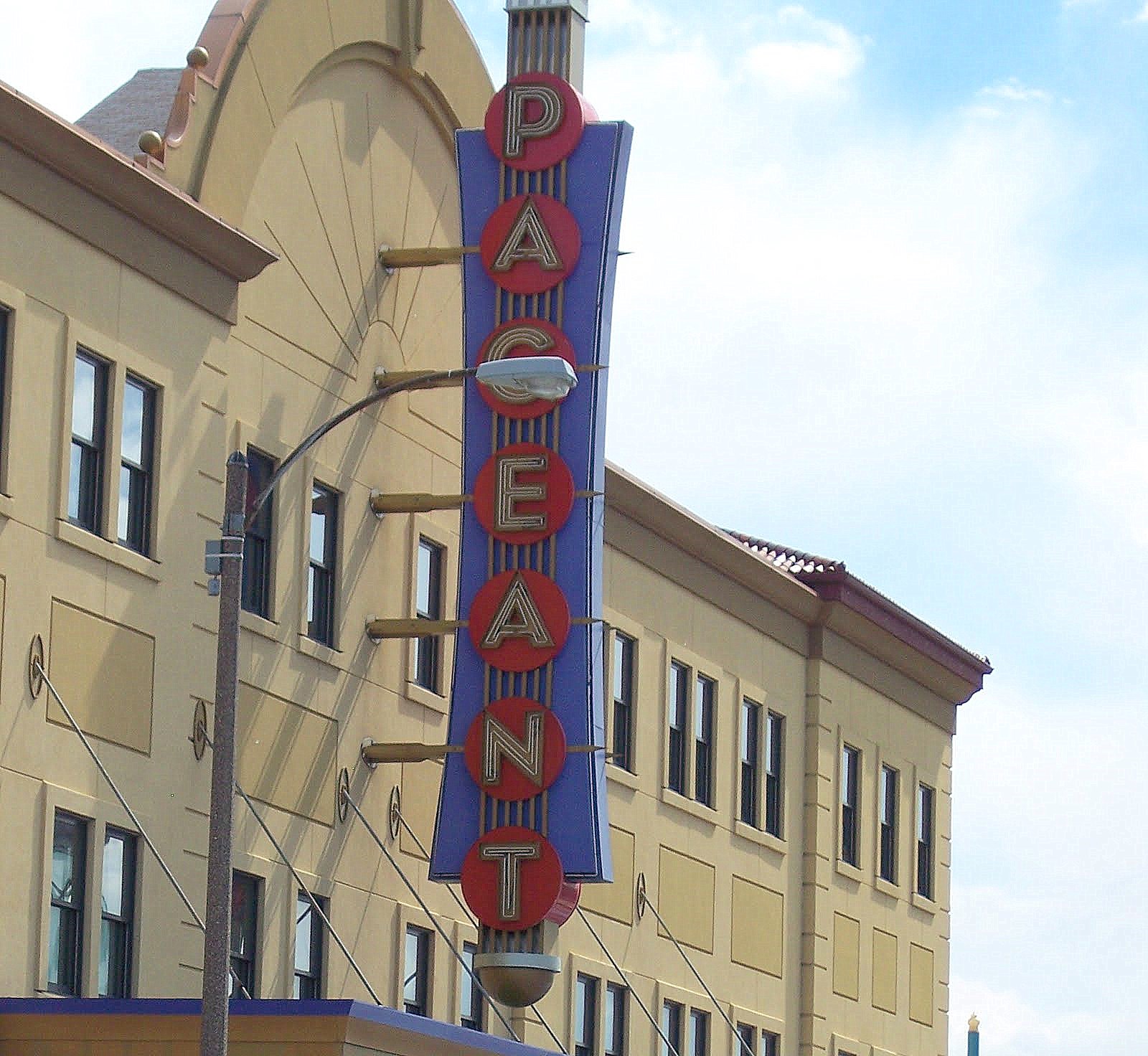
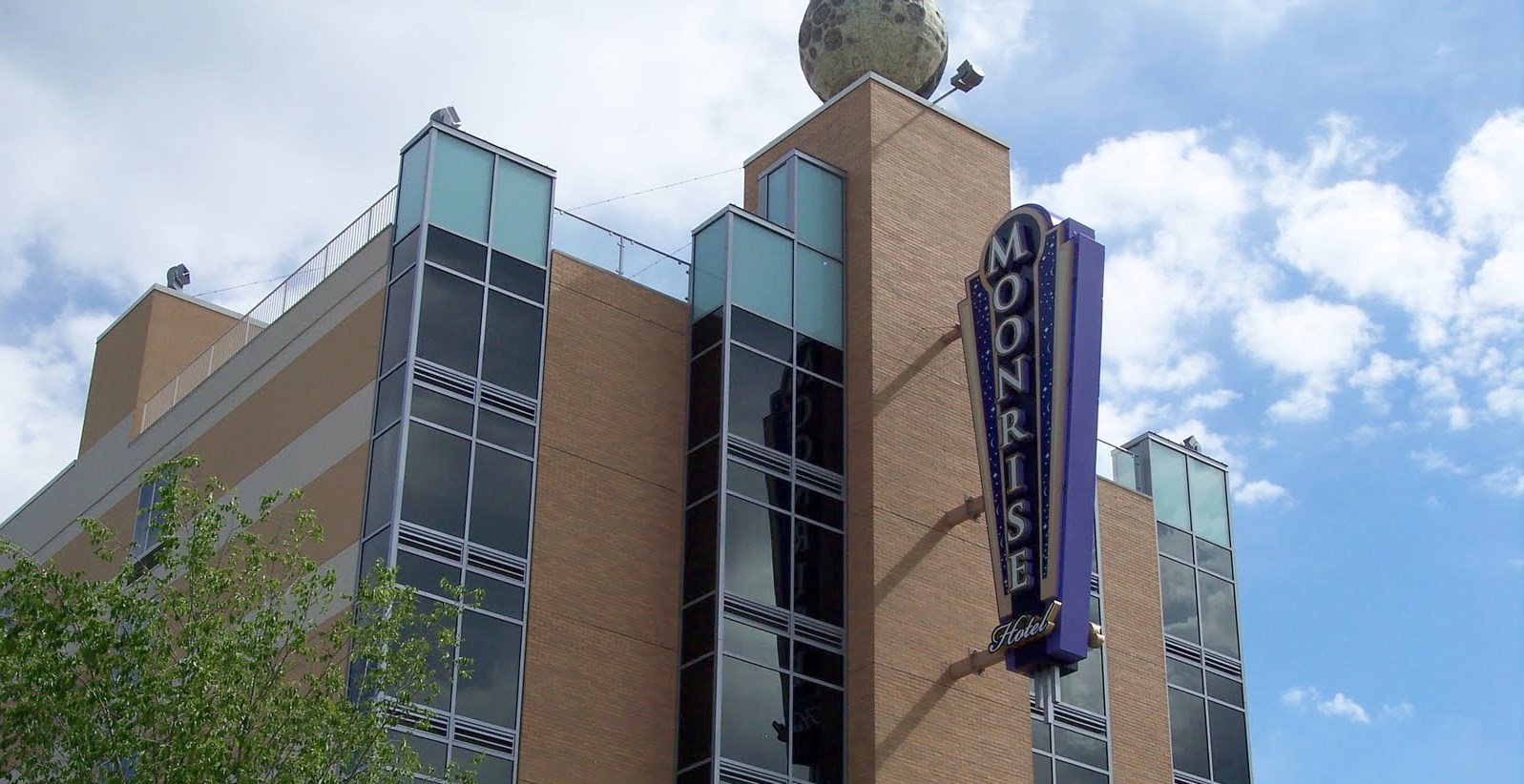
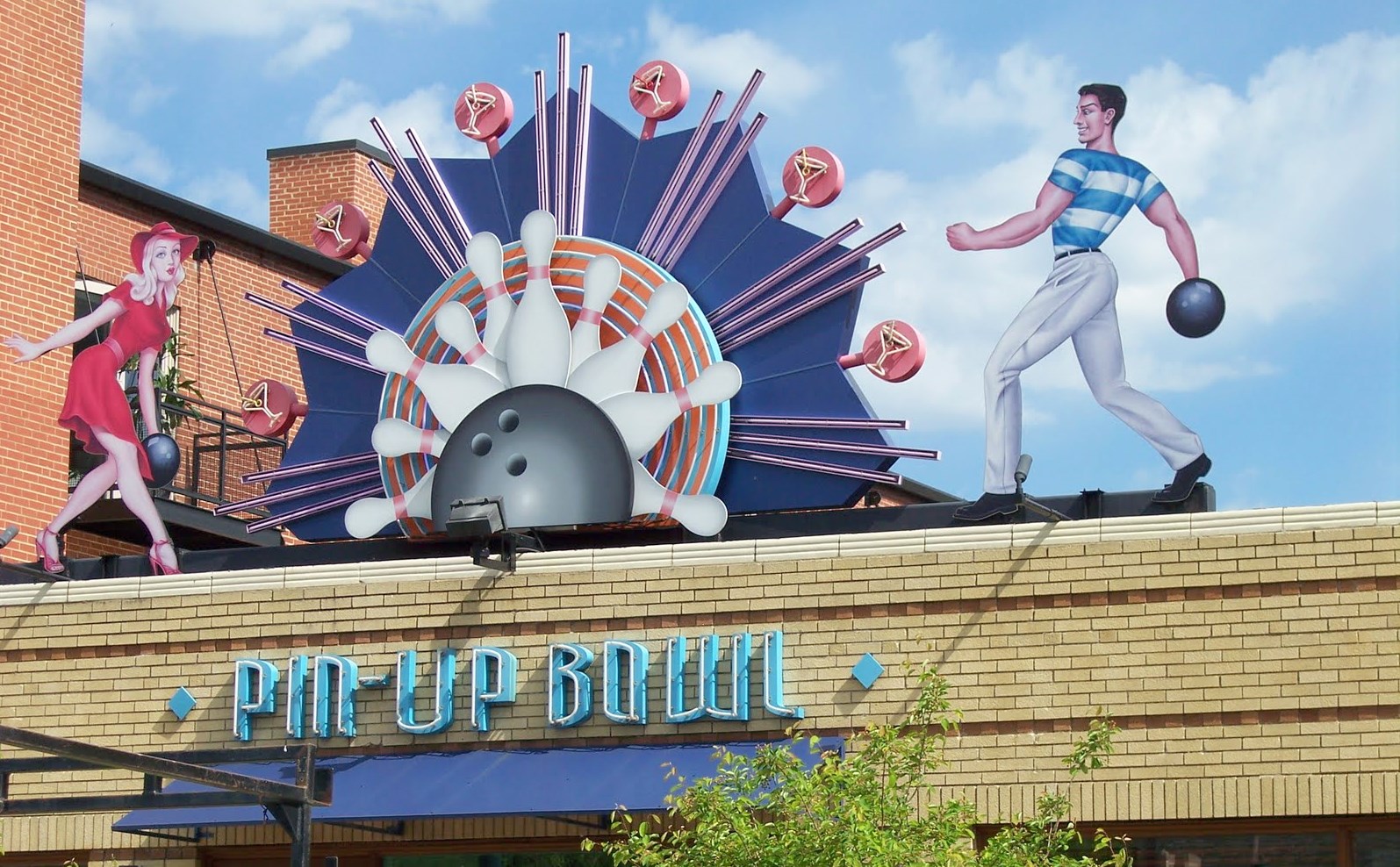
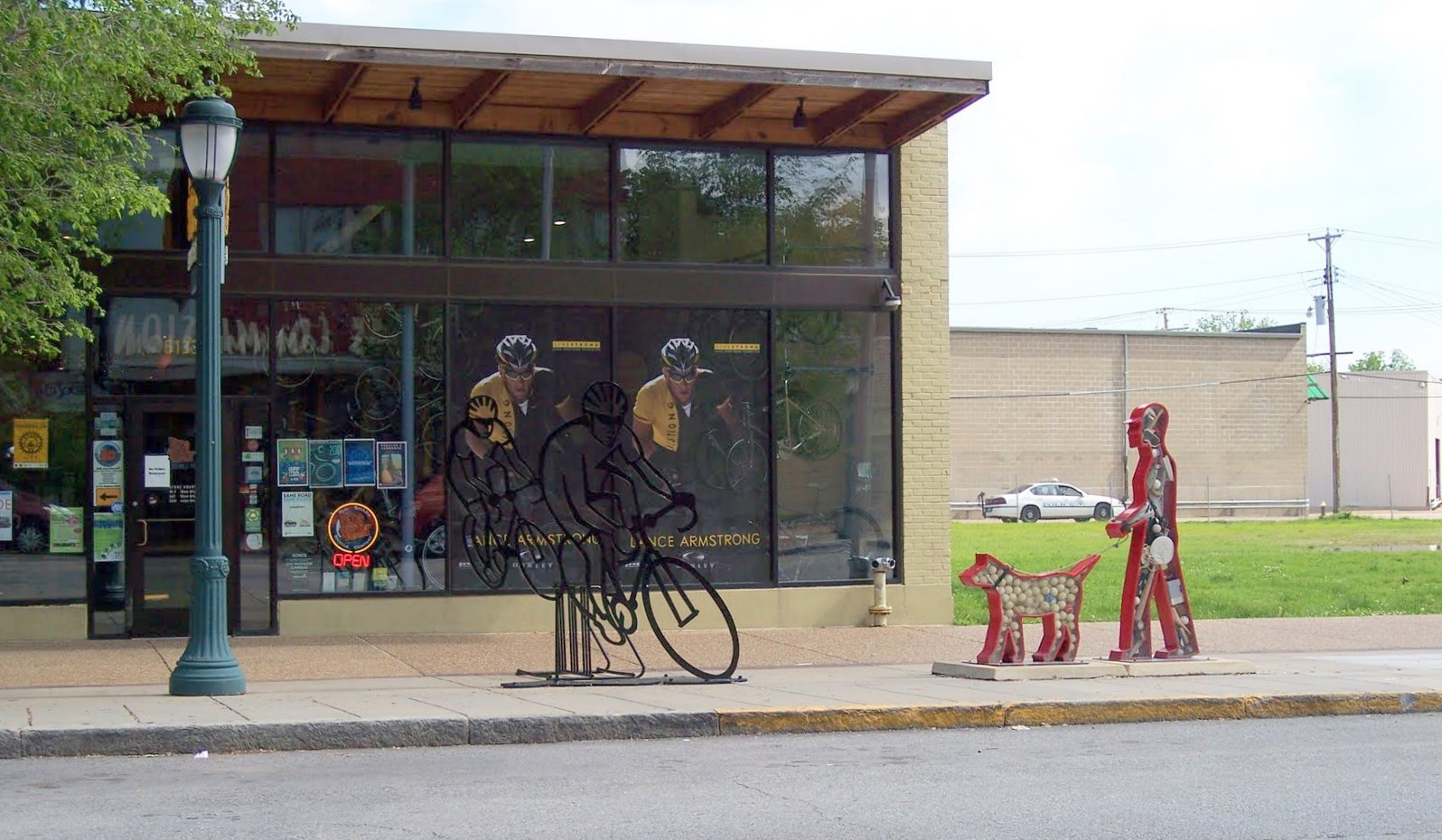
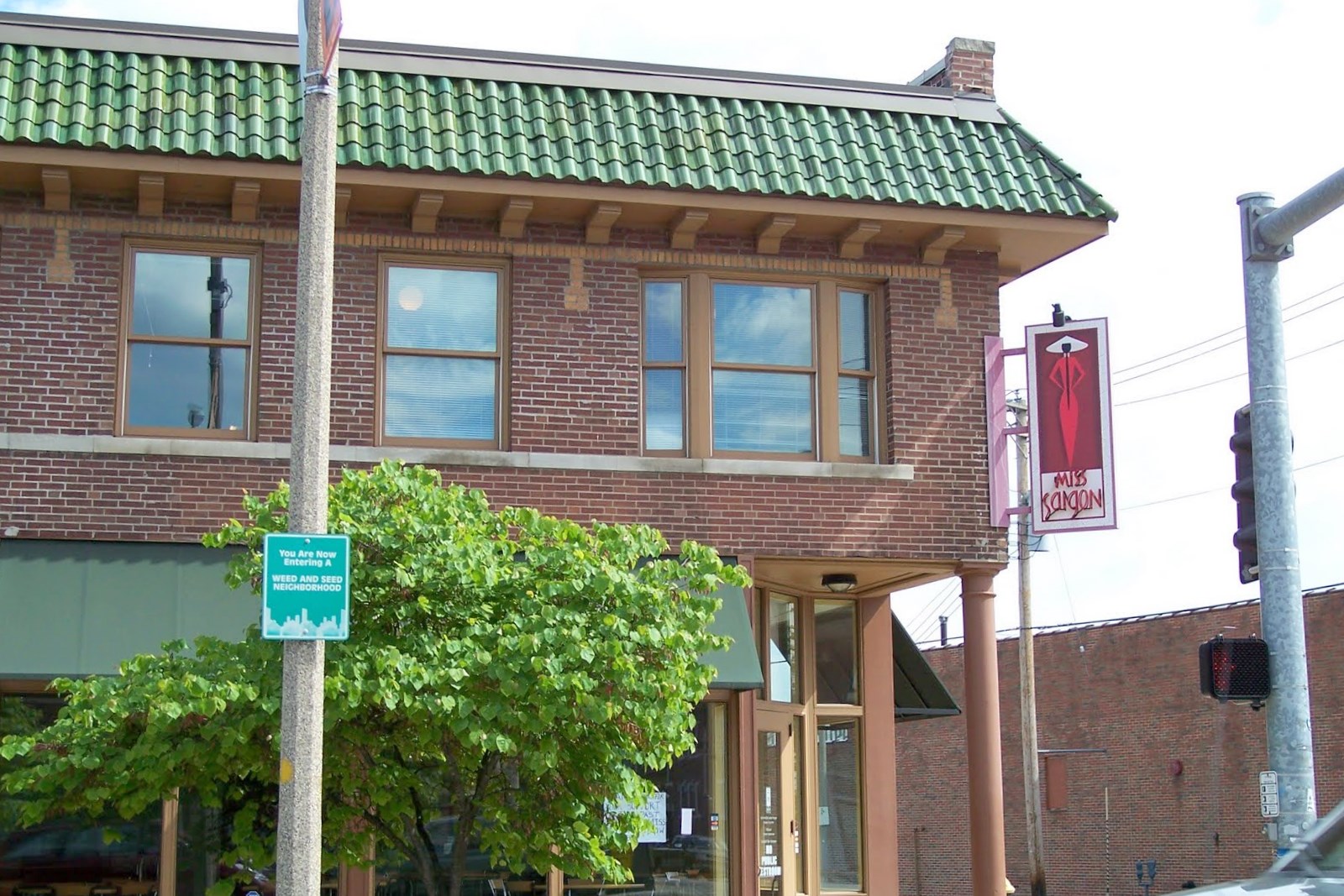
There are also many holes and vacant buildings along the north side of Delmar all the way from the Metrolink stop to Belt. There’s lots of potential here though, as the U. City part of the loop is built out, and options to extend the activity of the loop extend east into St. Louis from University City.
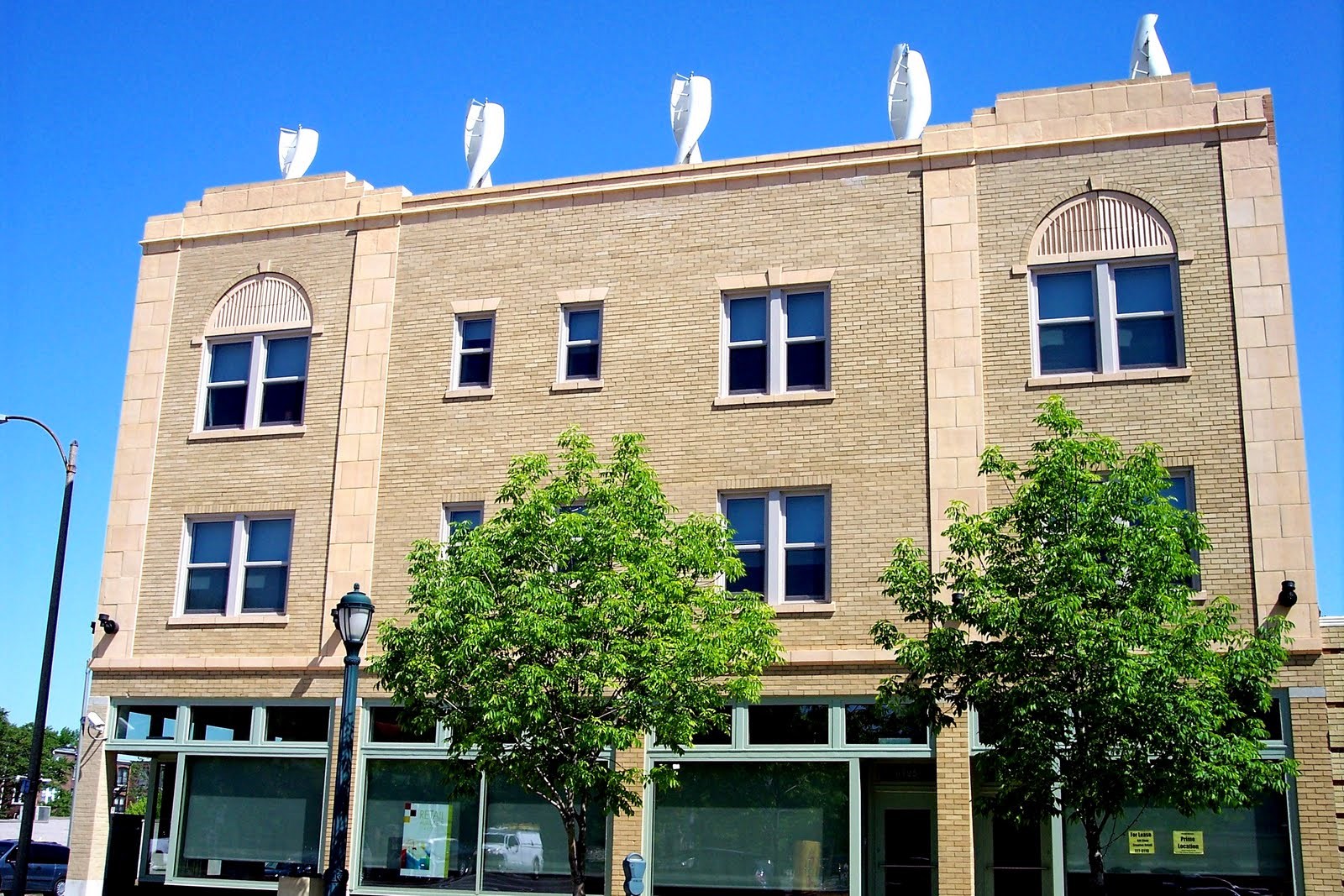
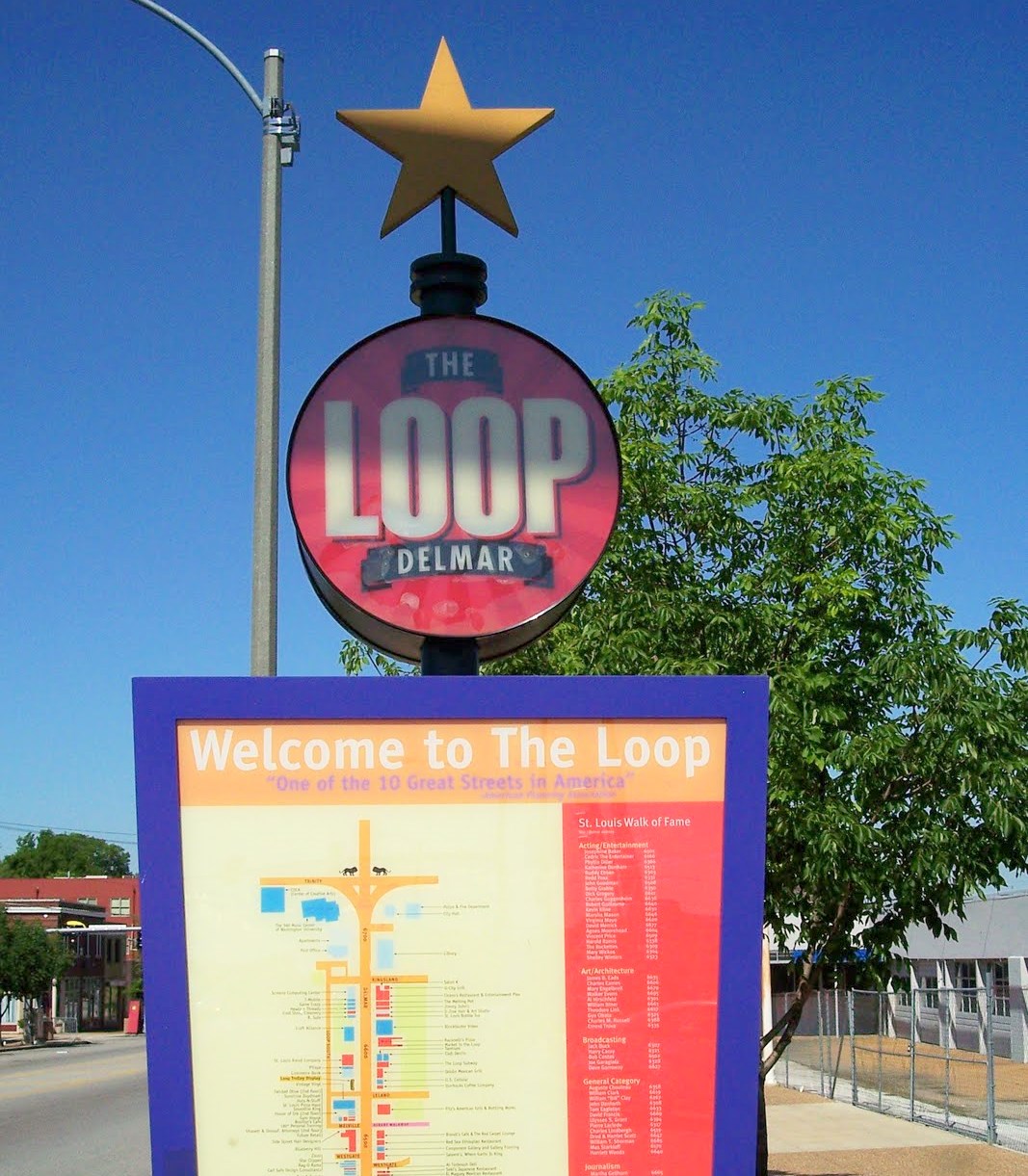
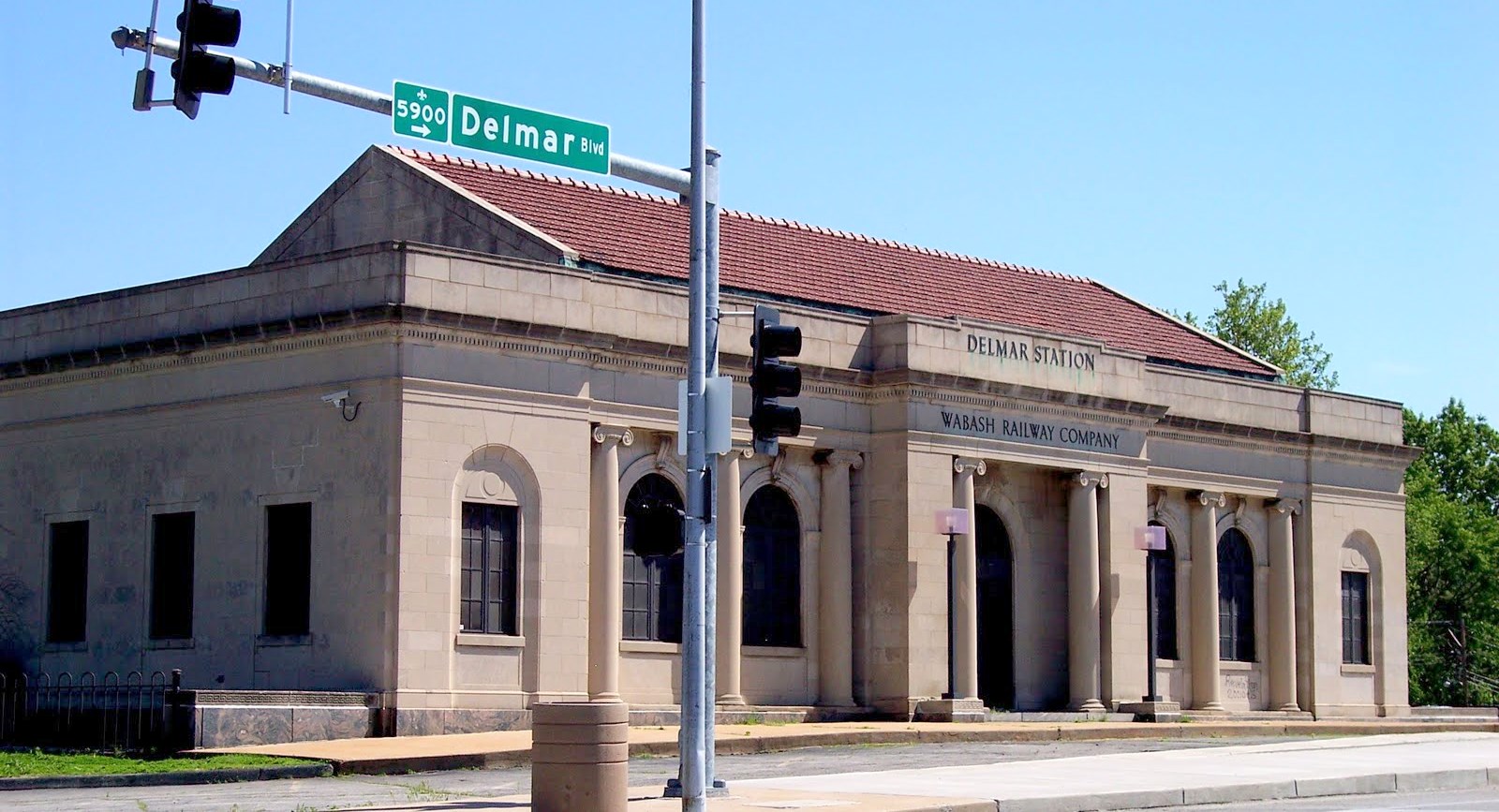
As I mentioned above, there aren’t many intra-neighborhood businesses, put there are a few:
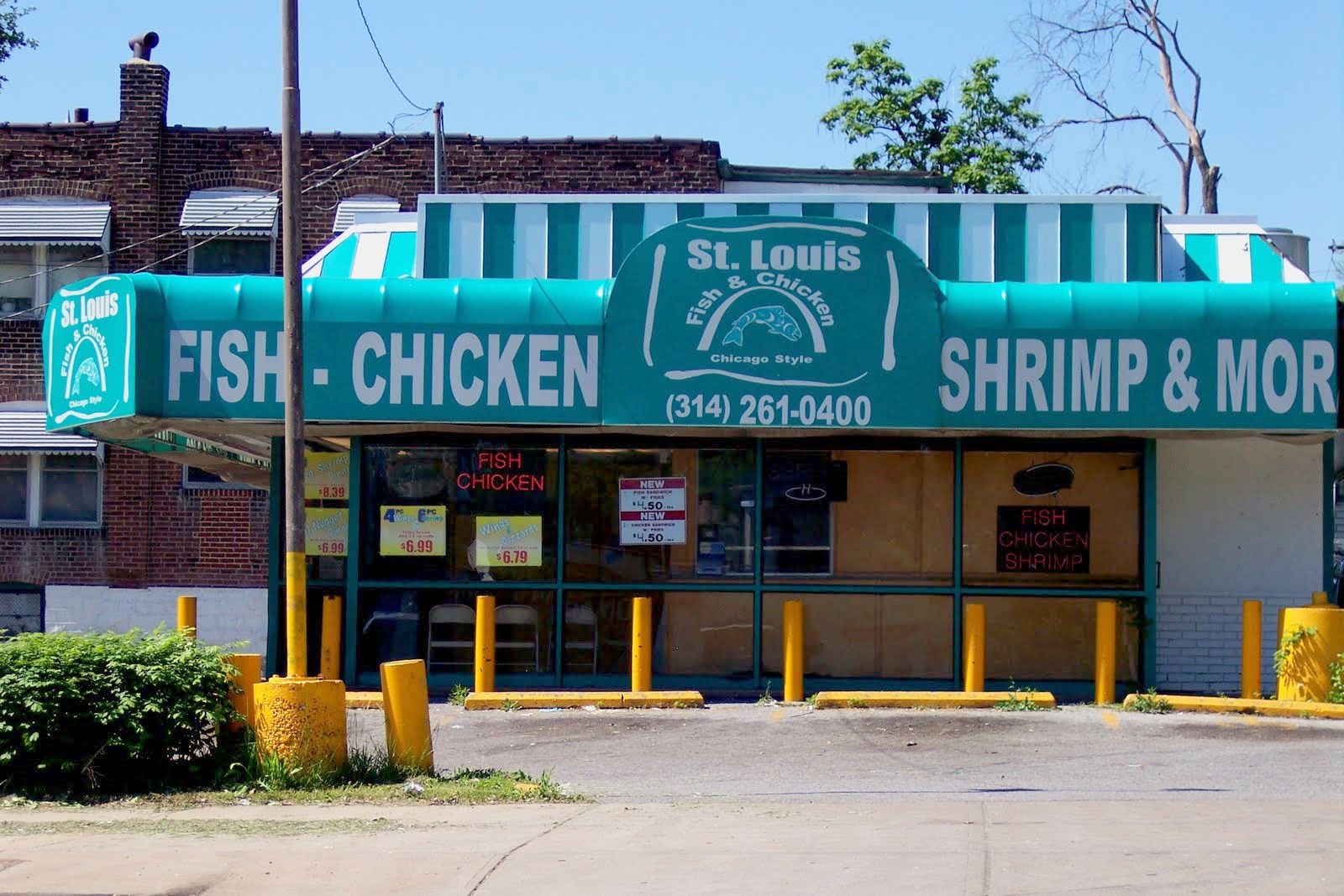
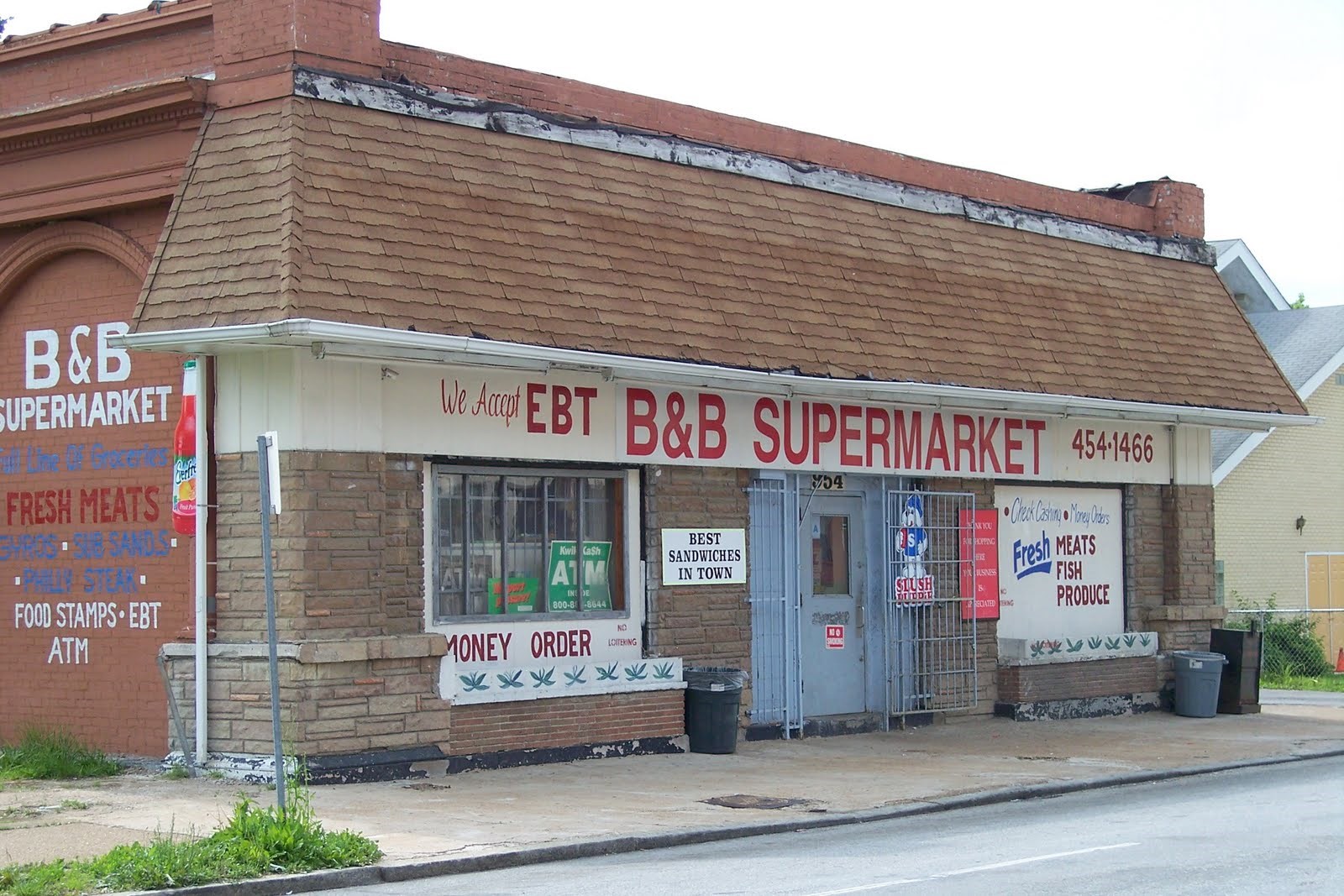
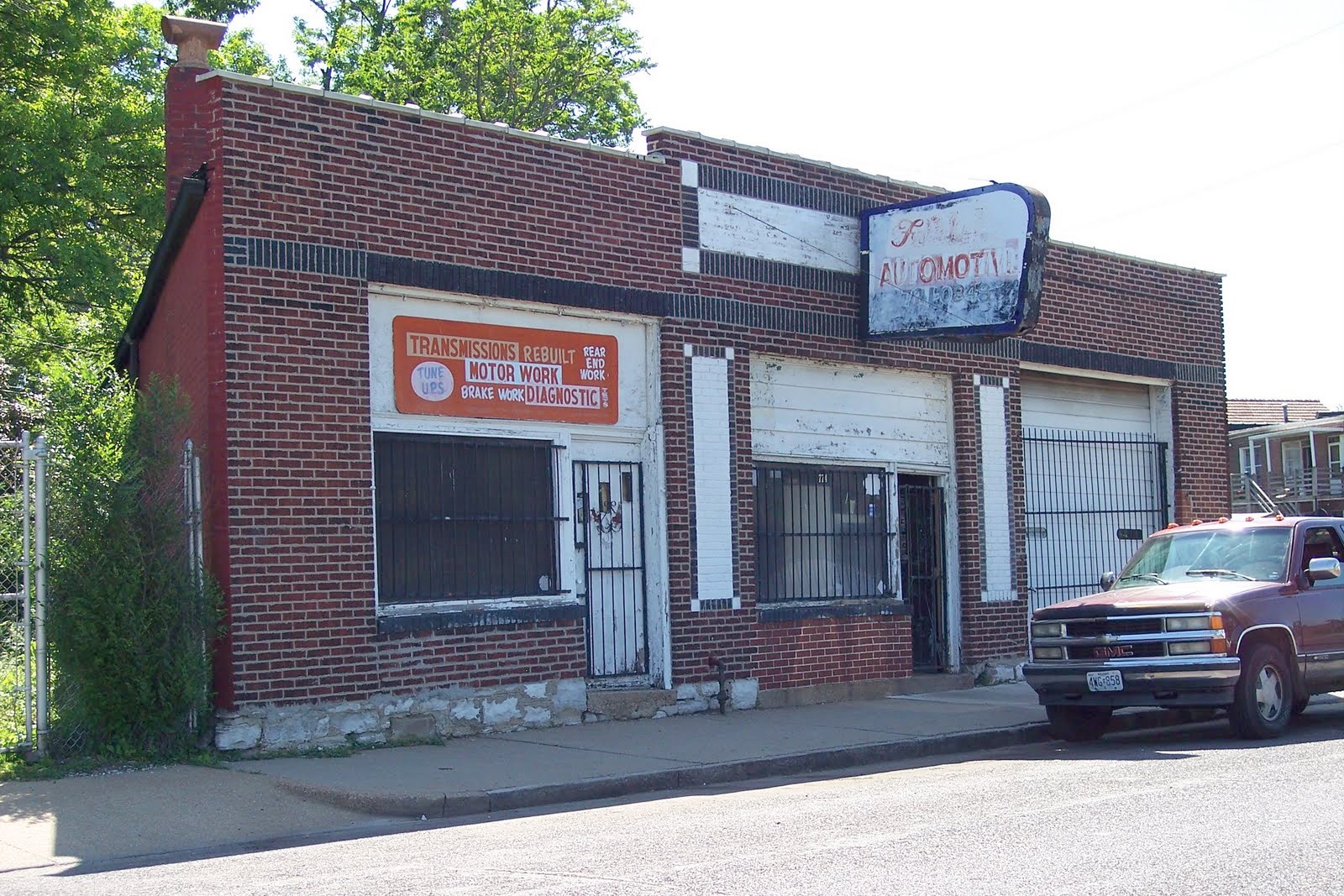
Back to the Metrolink stop. This neighborhood is one of the lucky ones to be connected to the red line. Each Metrolink stop has sculpture or lighting that set them apart from the rest. This stop has a beehive honey comb piece that is my favorite in the entire city:
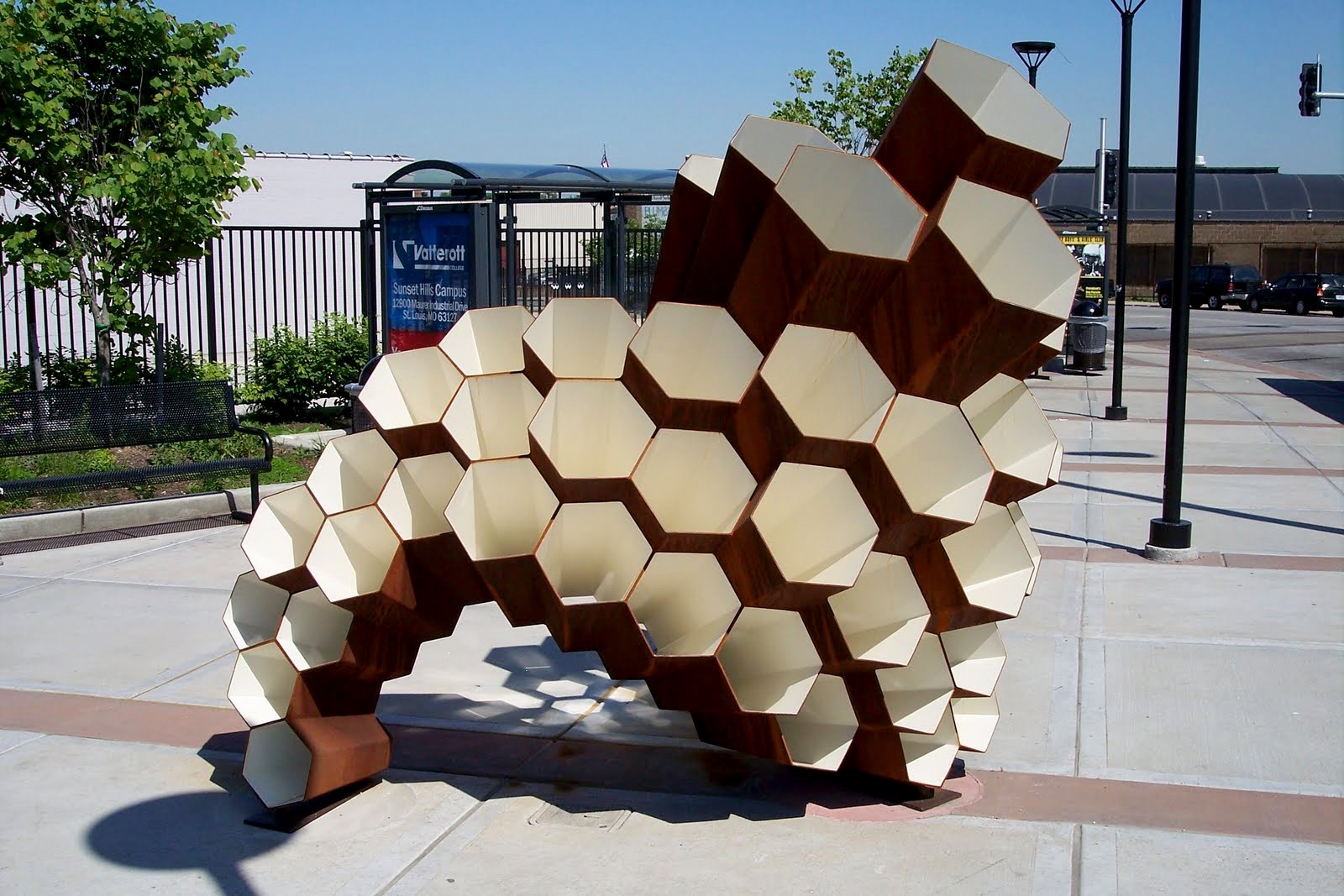
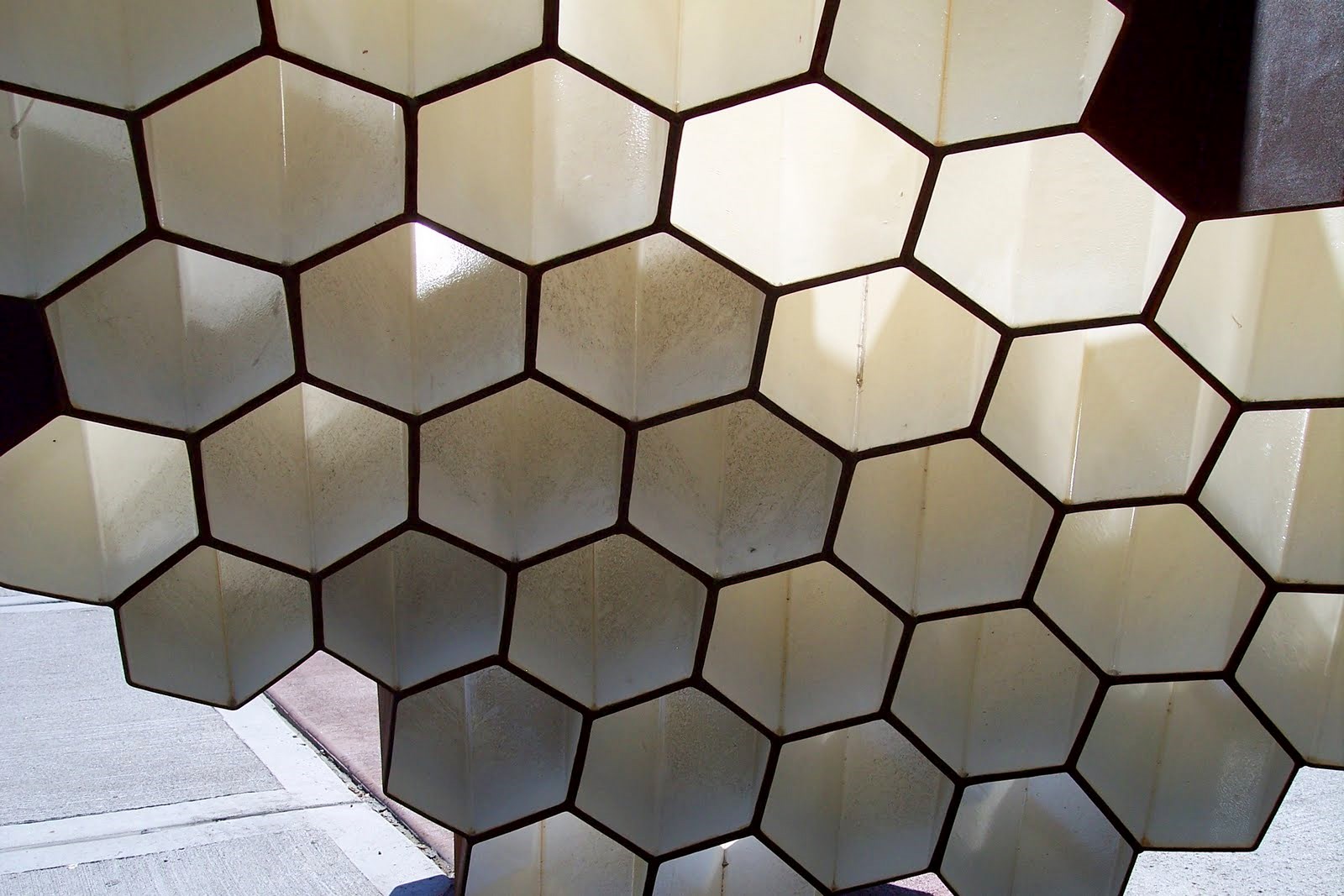
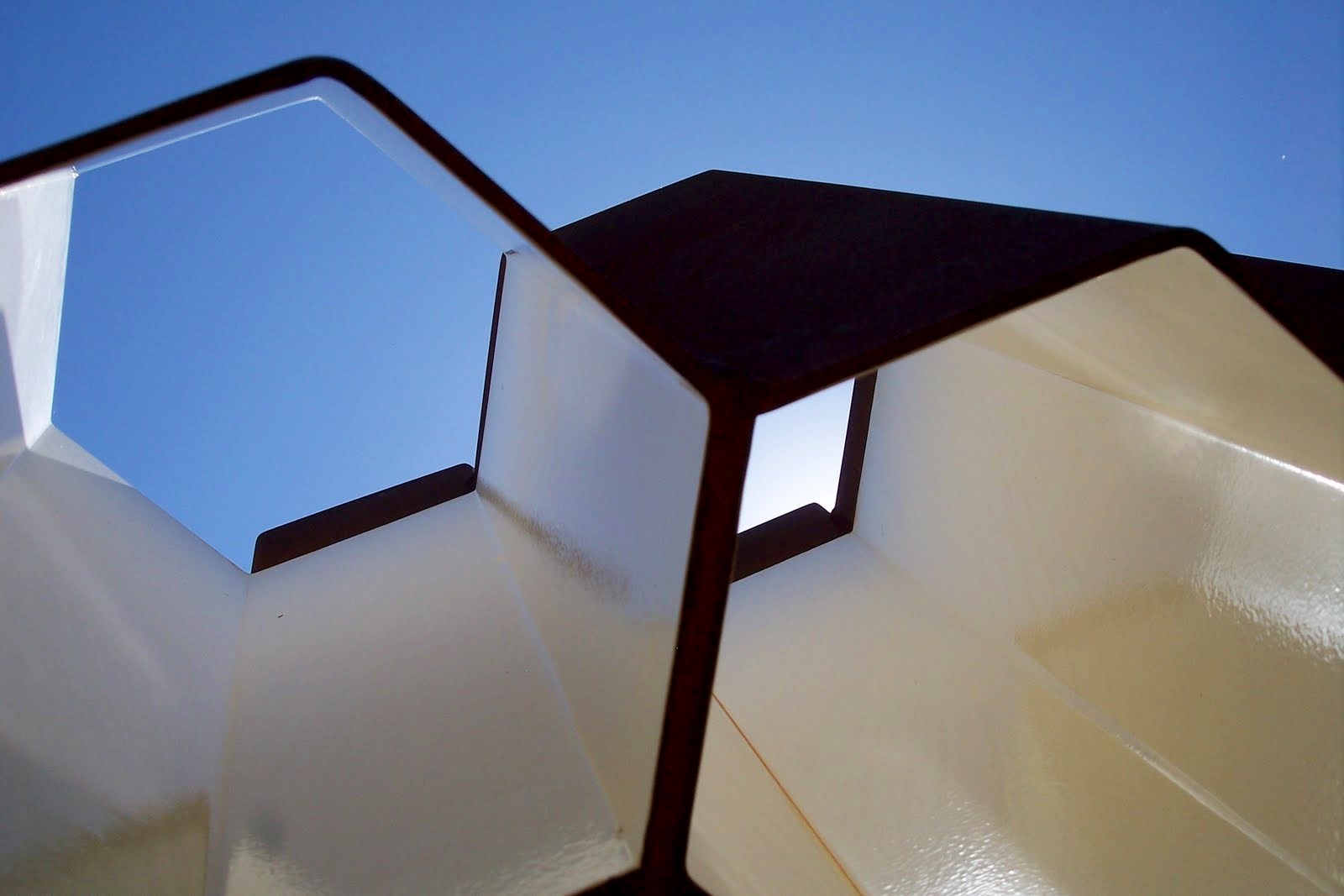
We decorate the things we hold dear. That’s why I’m a proponent of sculpture in public transit stations.
You’ve got to check this neighborhood out:
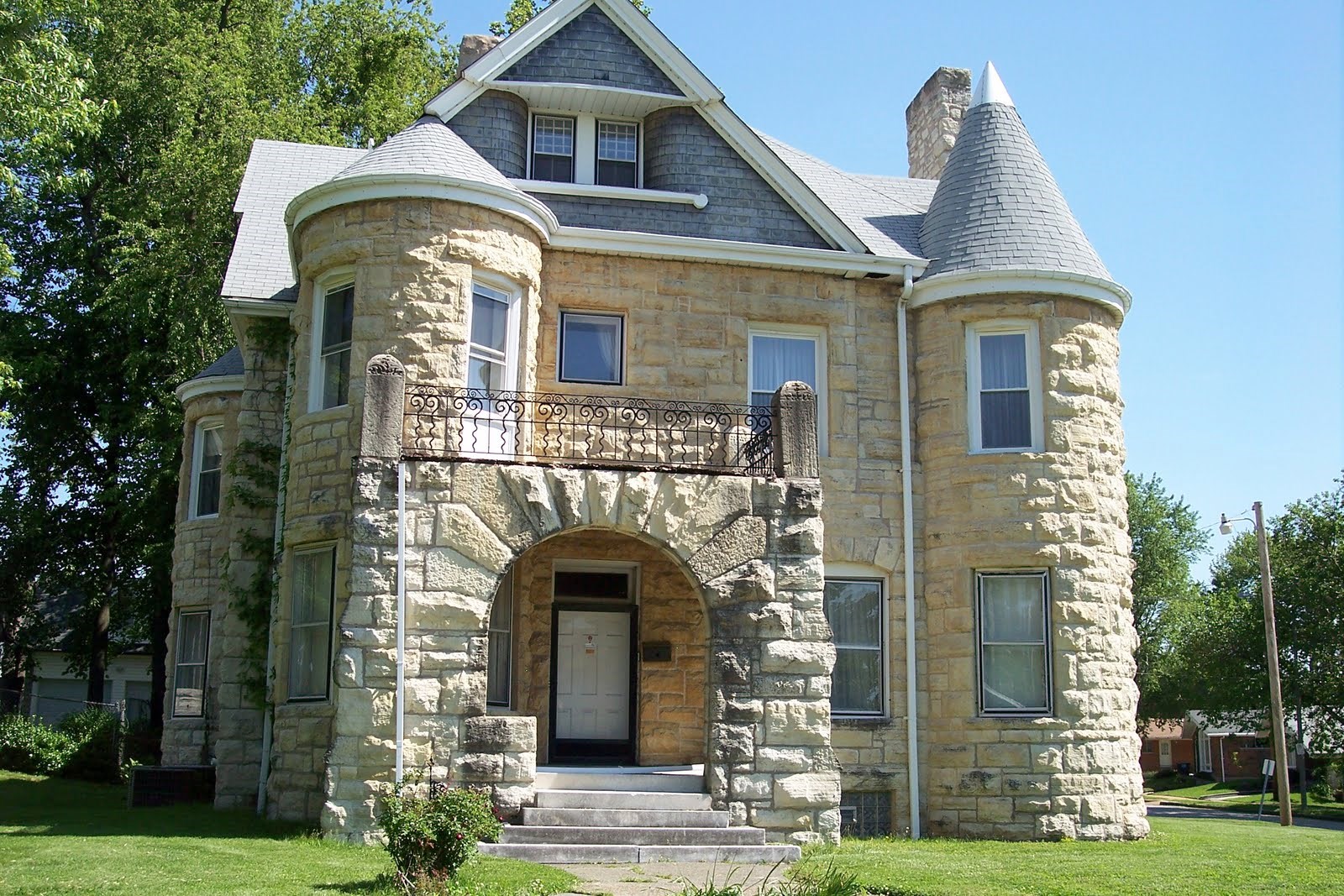
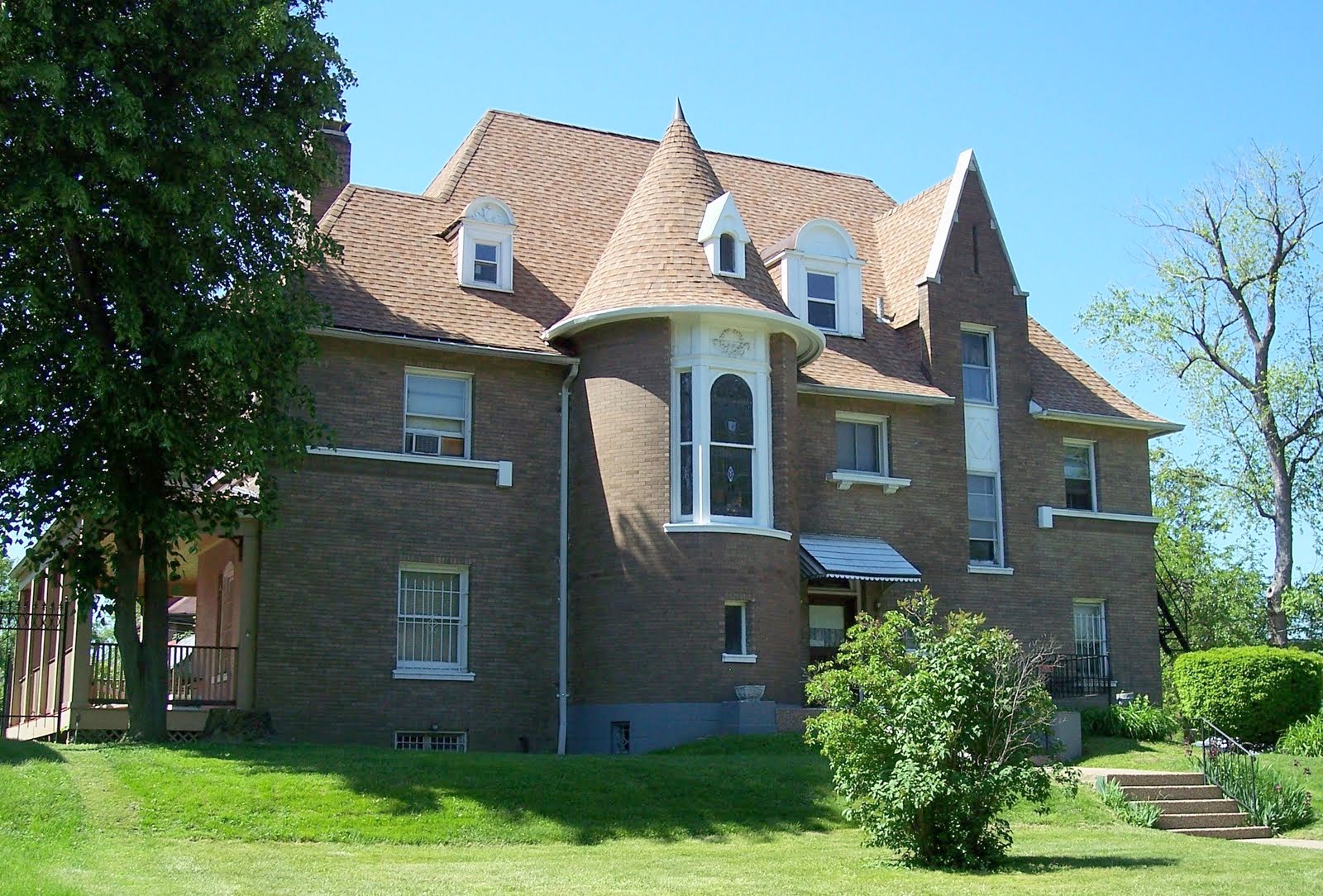
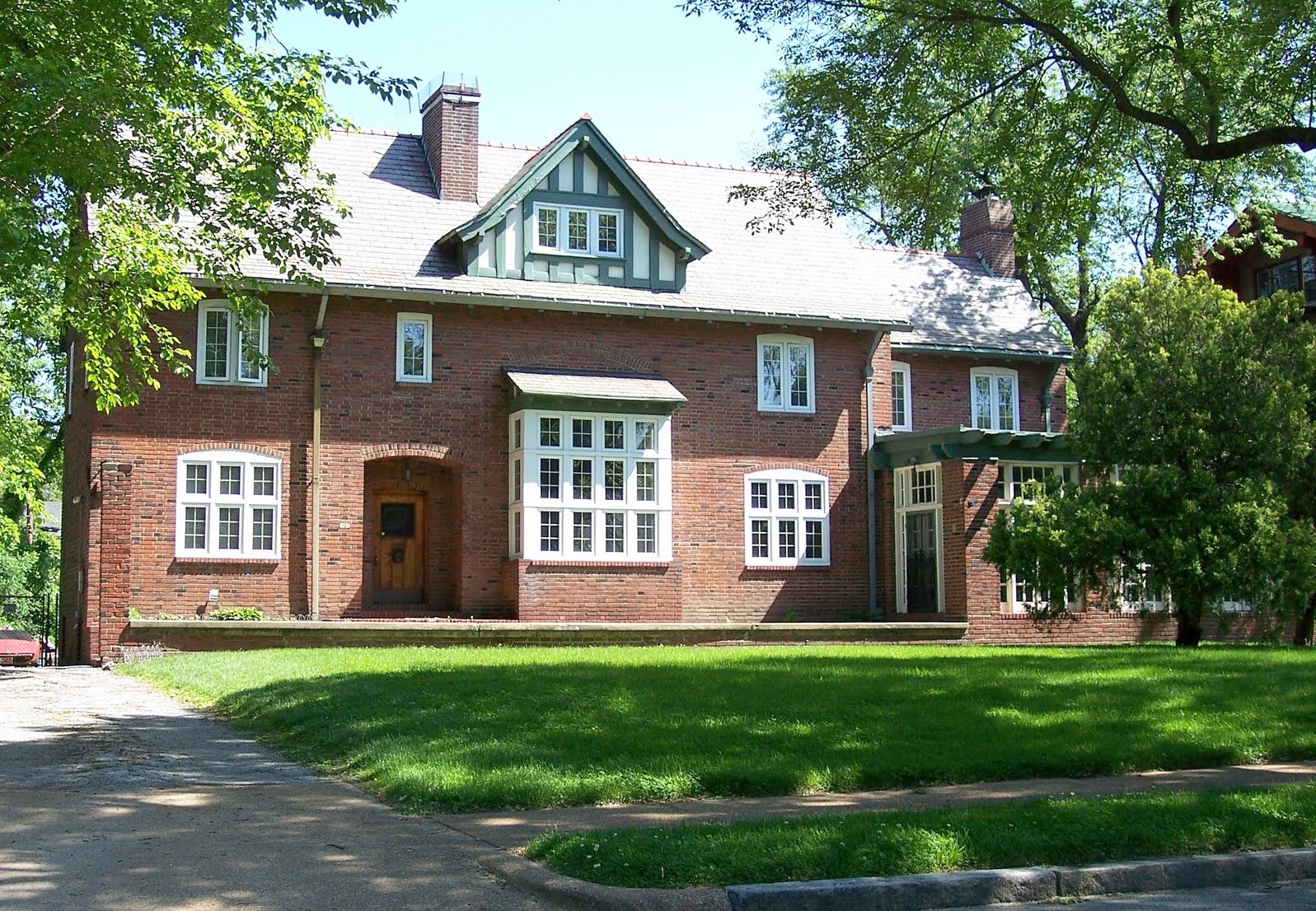
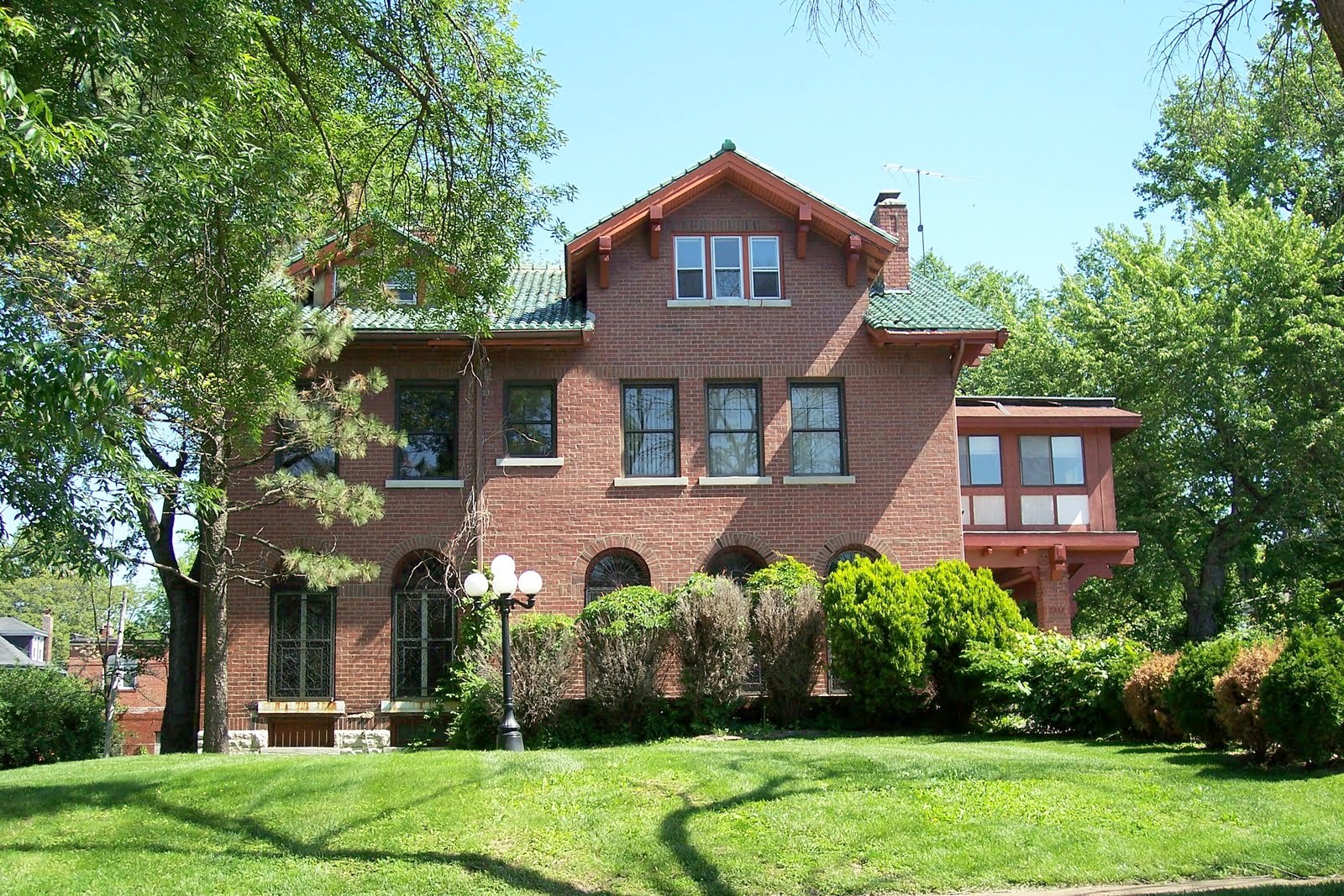
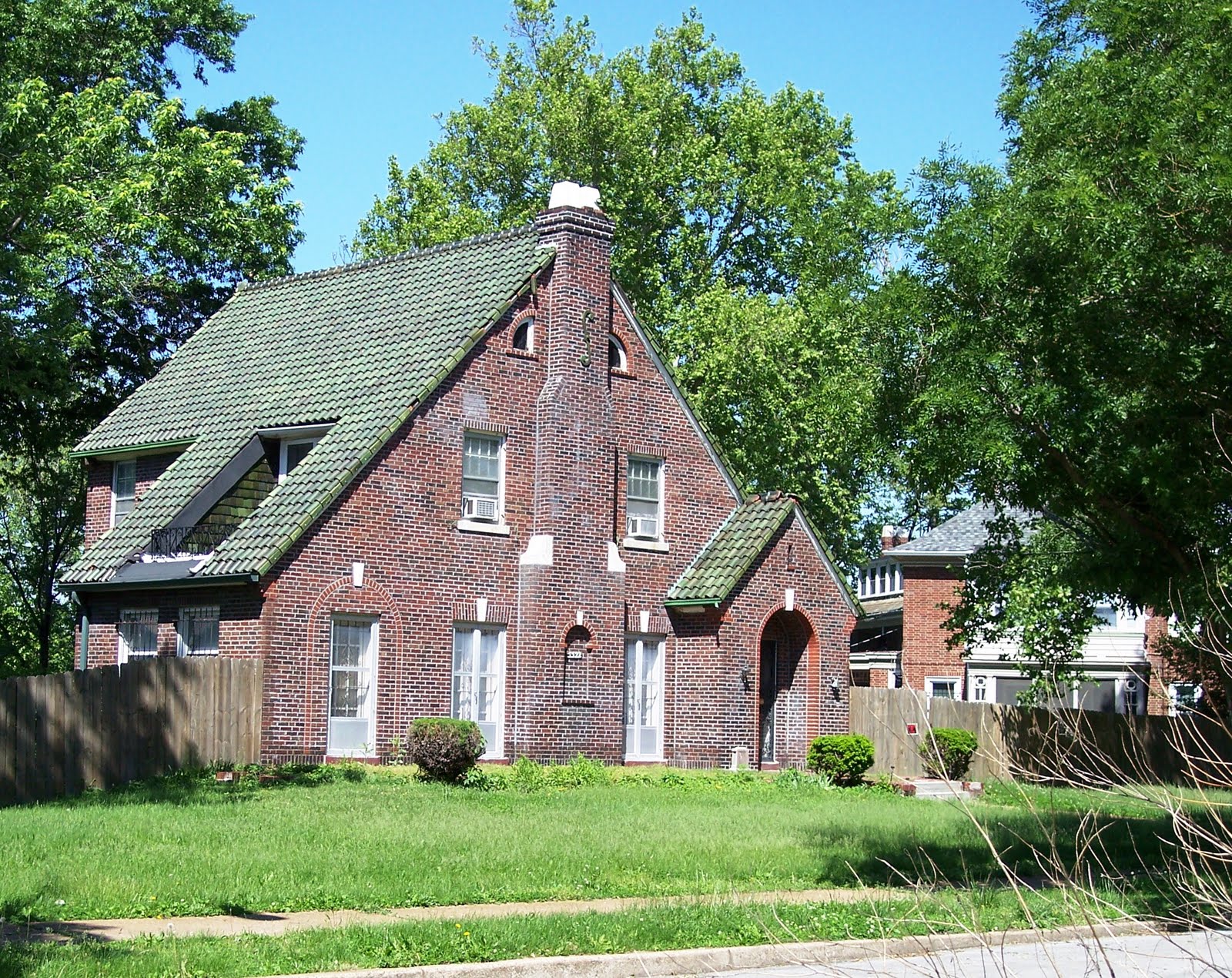
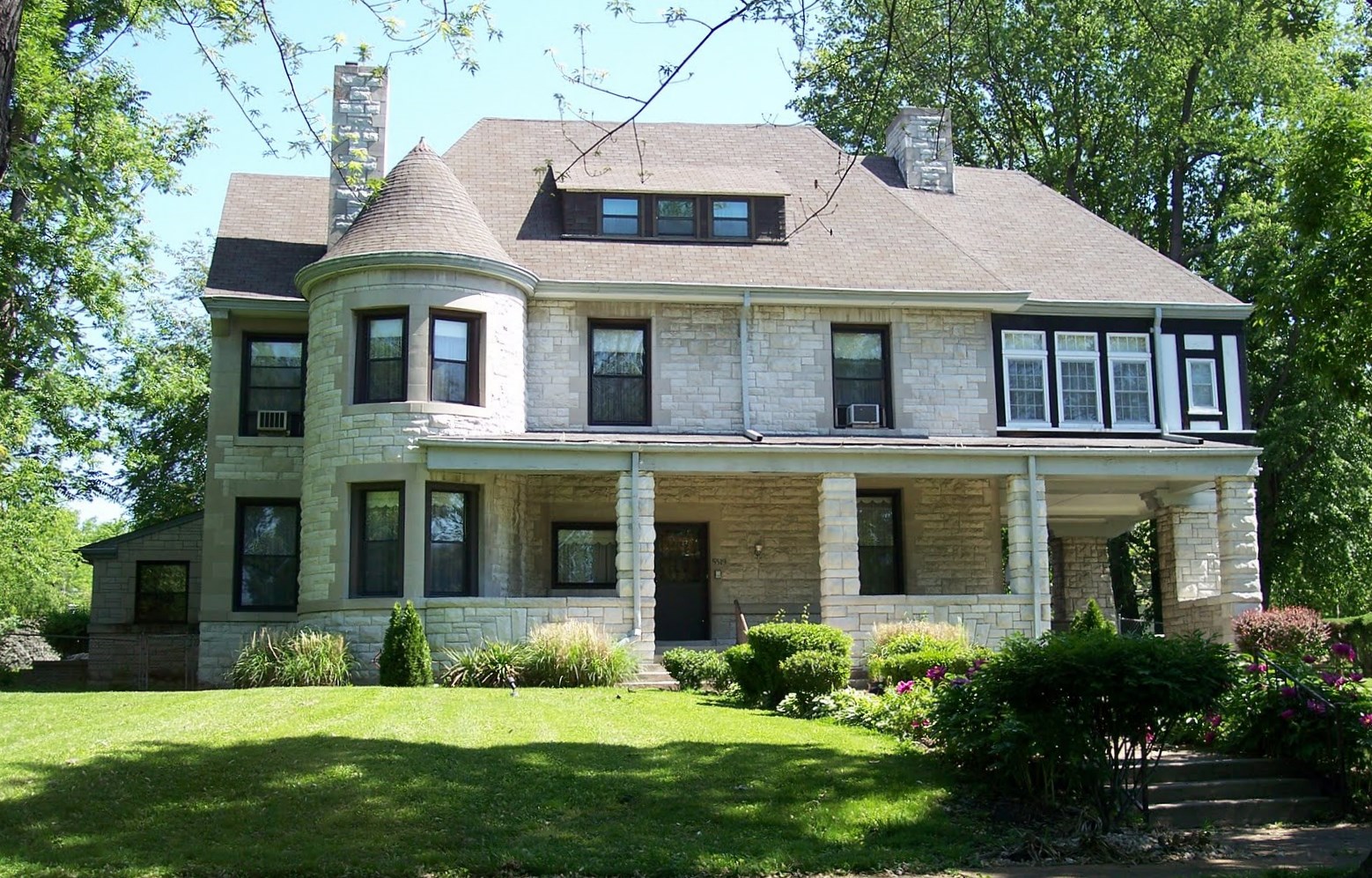
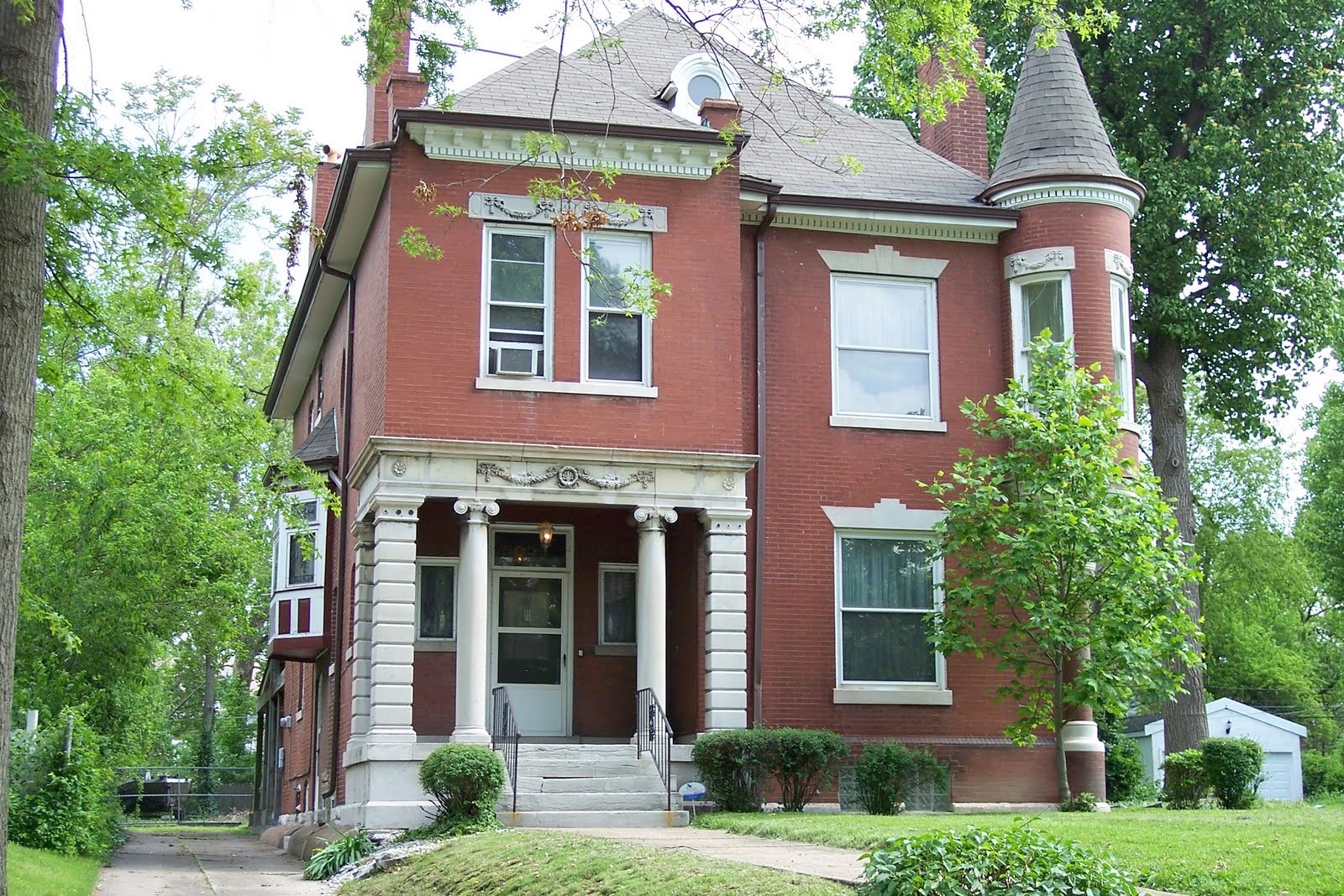
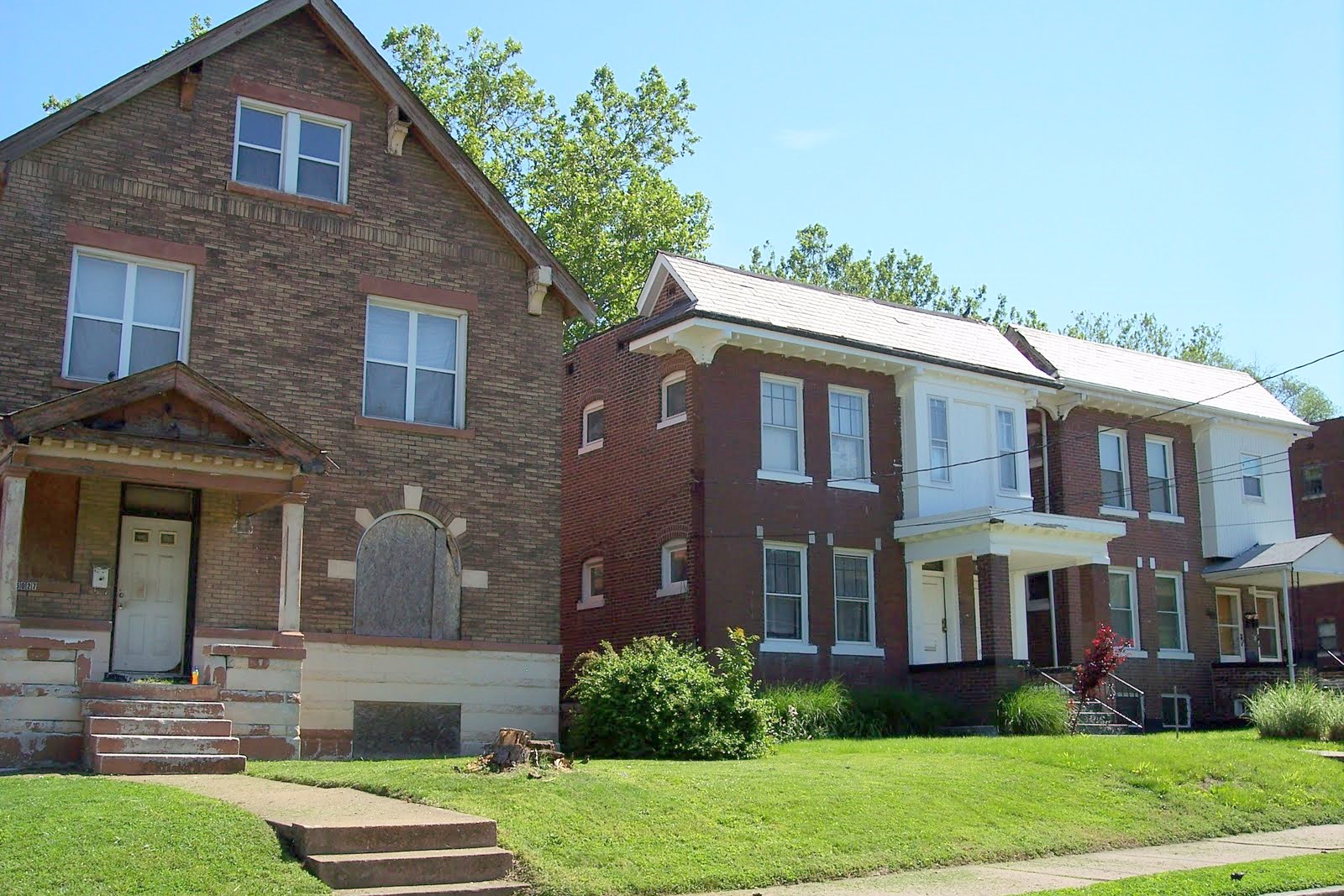
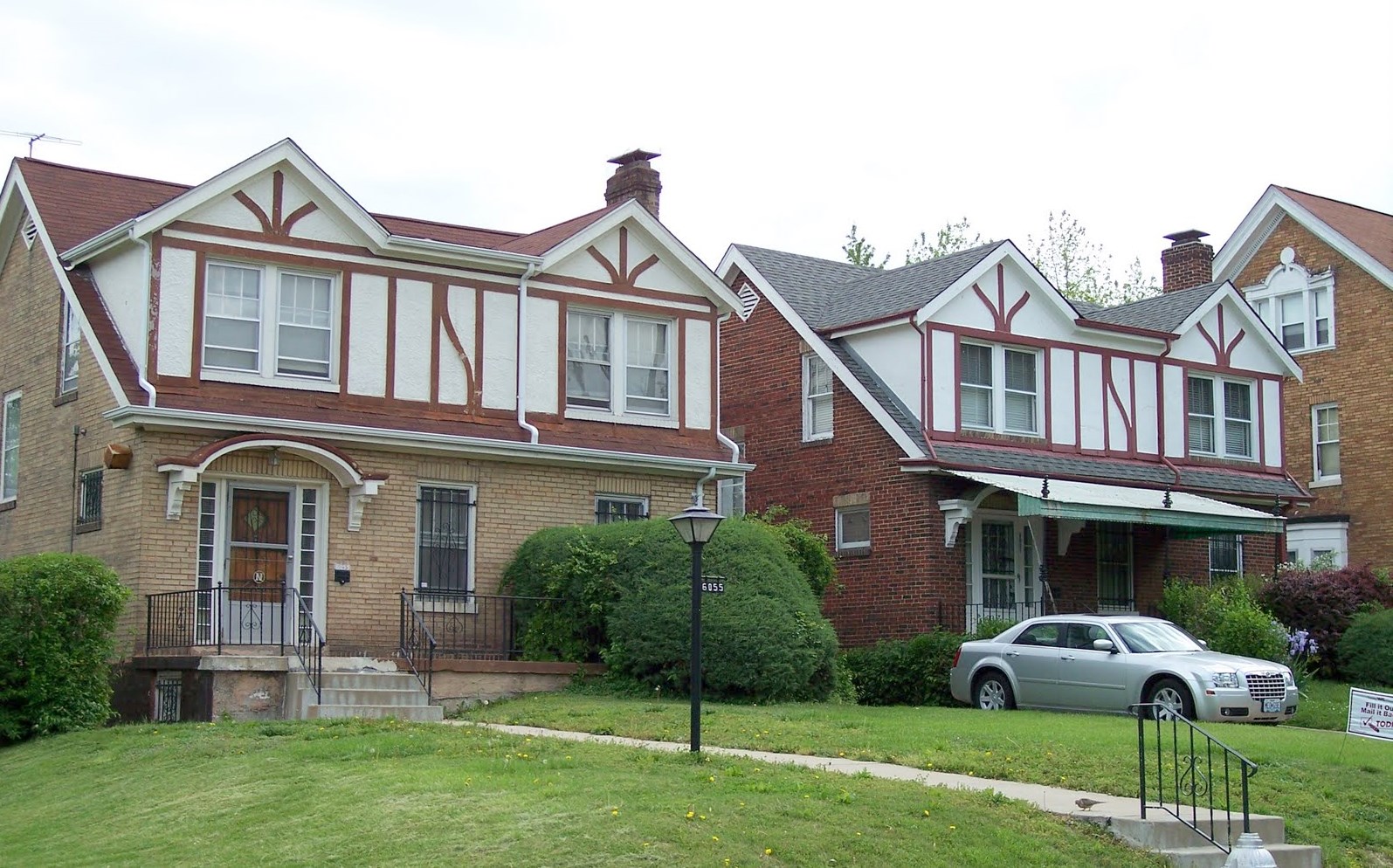
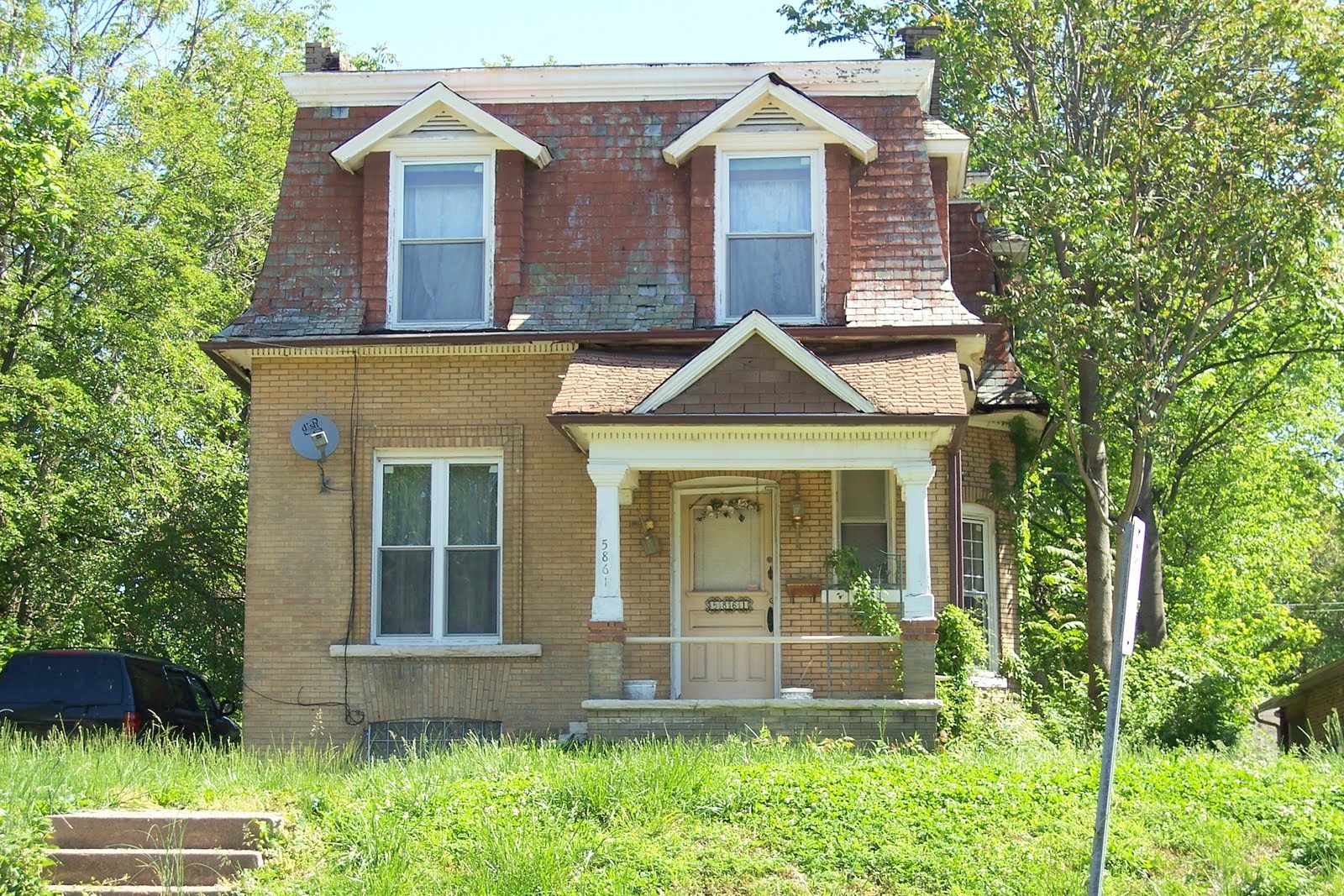
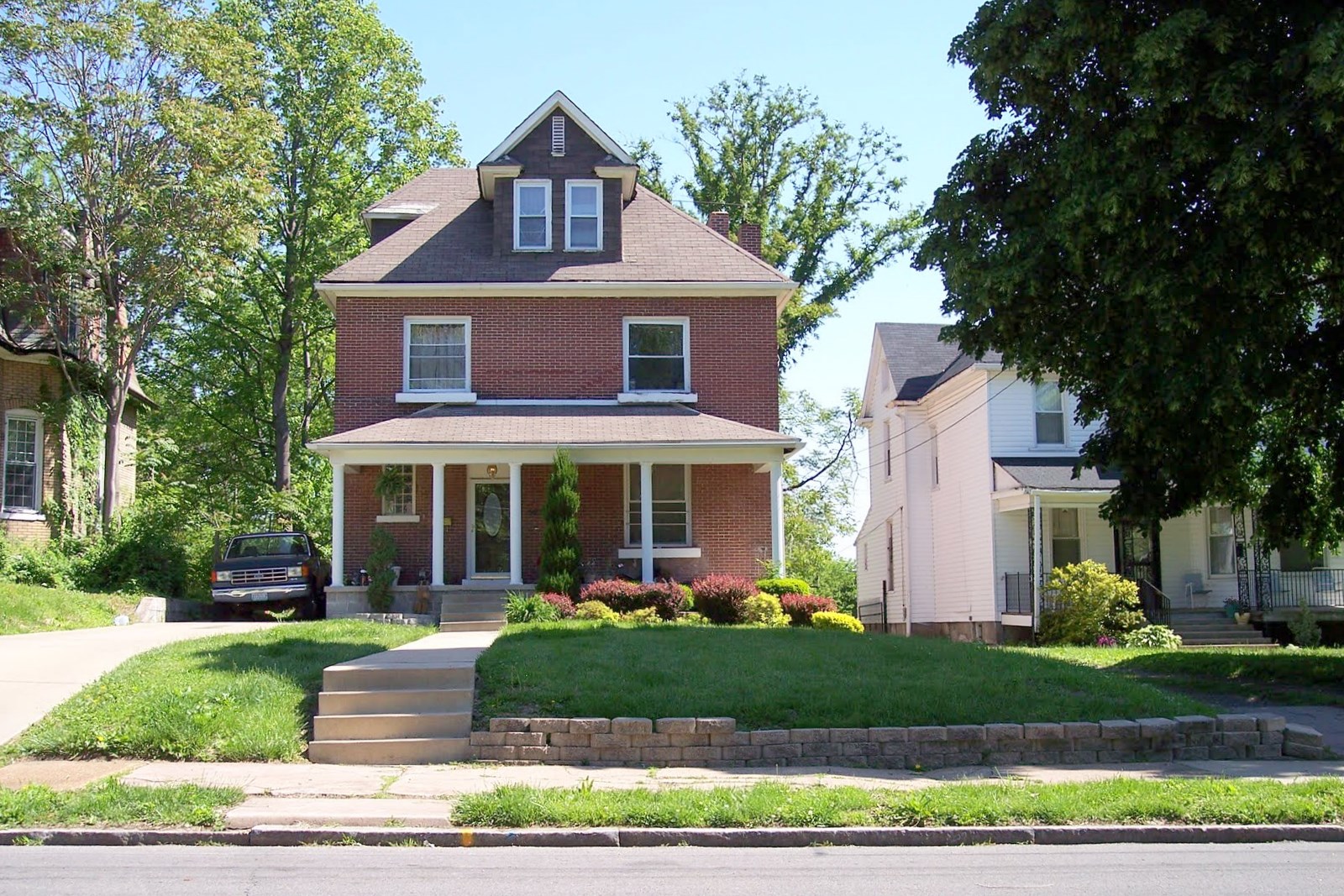
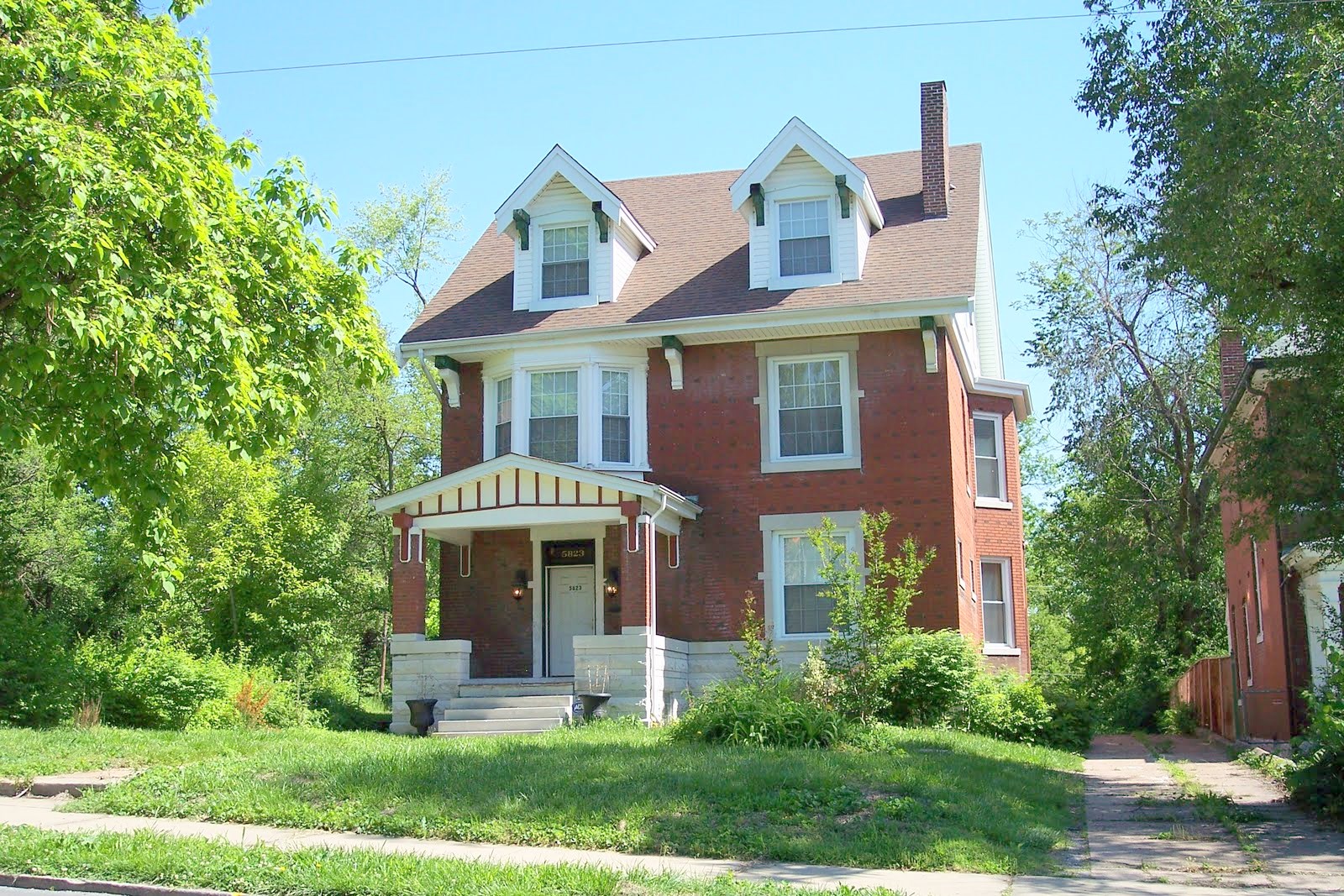
And some of the downsides:
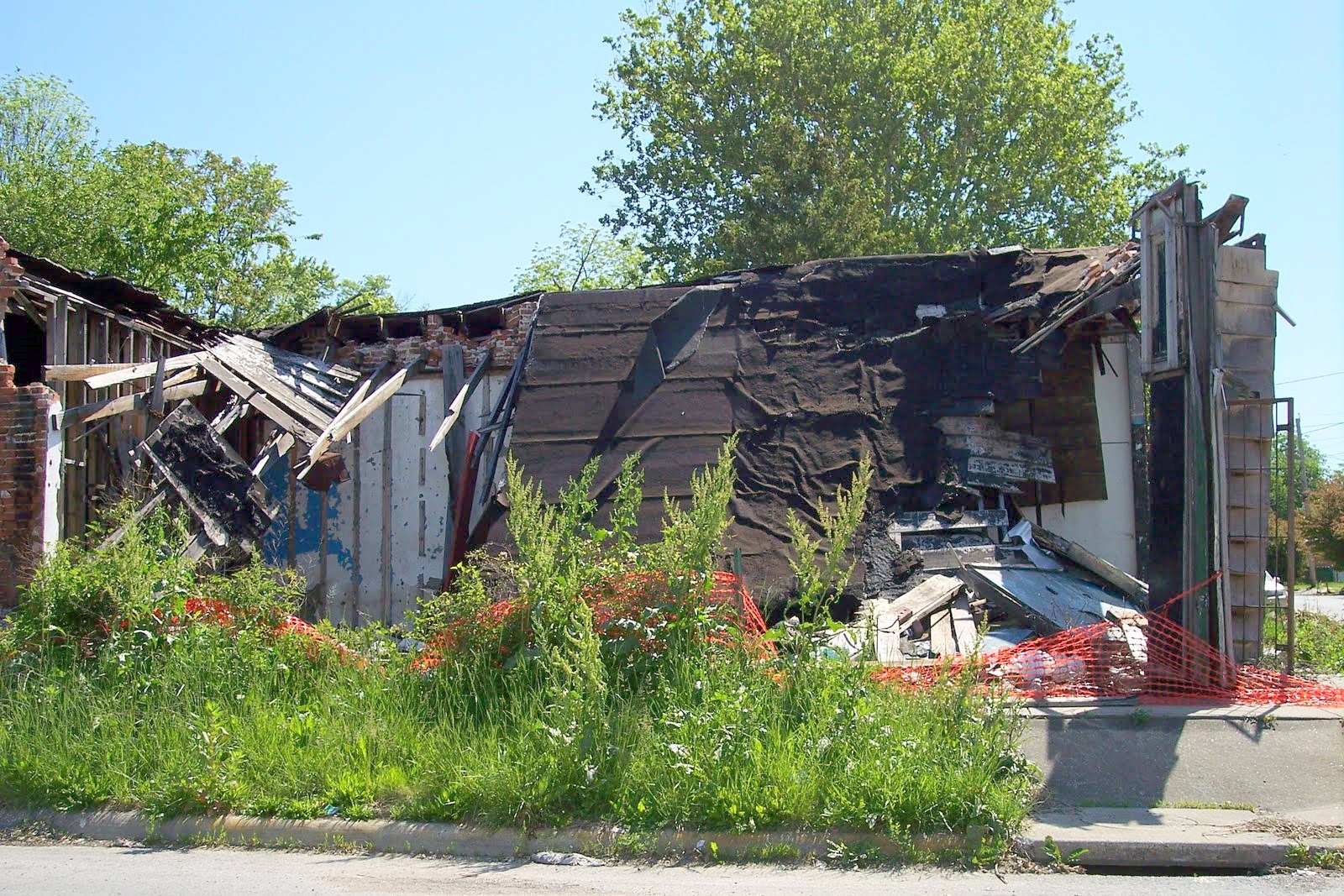
There is some new construction just north of the Metro Park and Ride lot on what is now known as the Washington University North Campus. Home to various offices, and a lot of vacant land, the building under construction is a new childcare center for faculty and staff. This is third university childcare center, the other two being located on the Central West End Medical School campus:
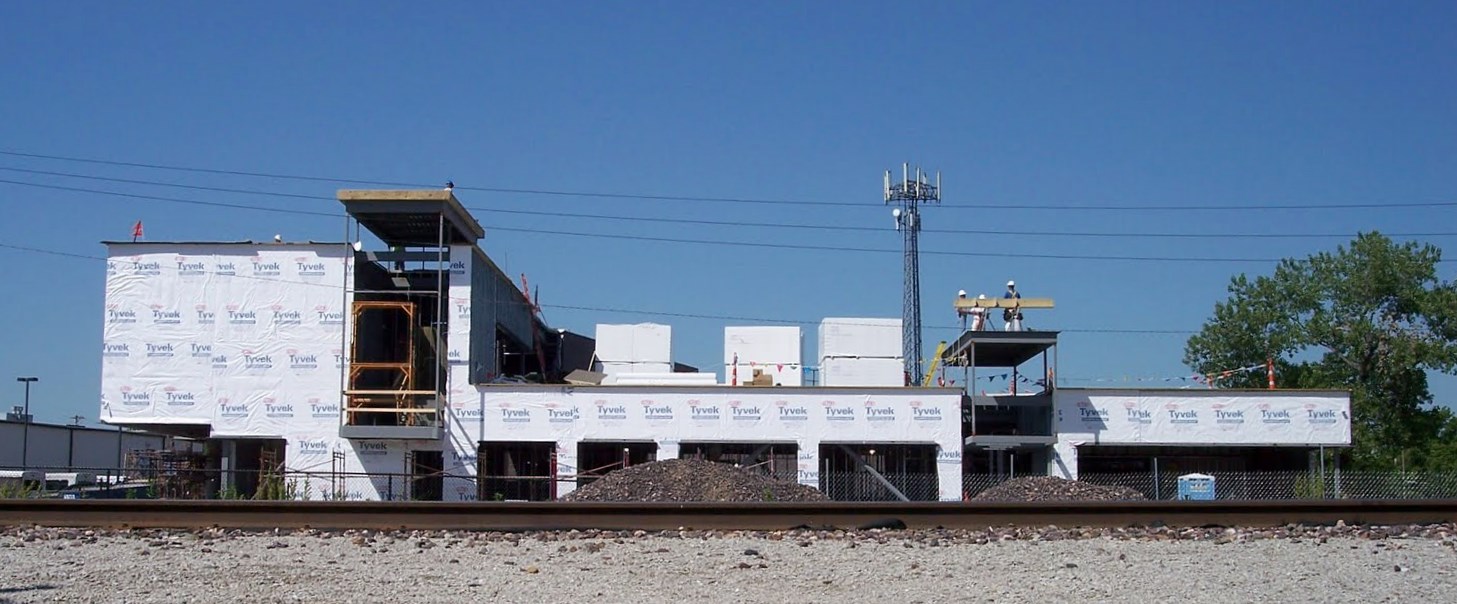
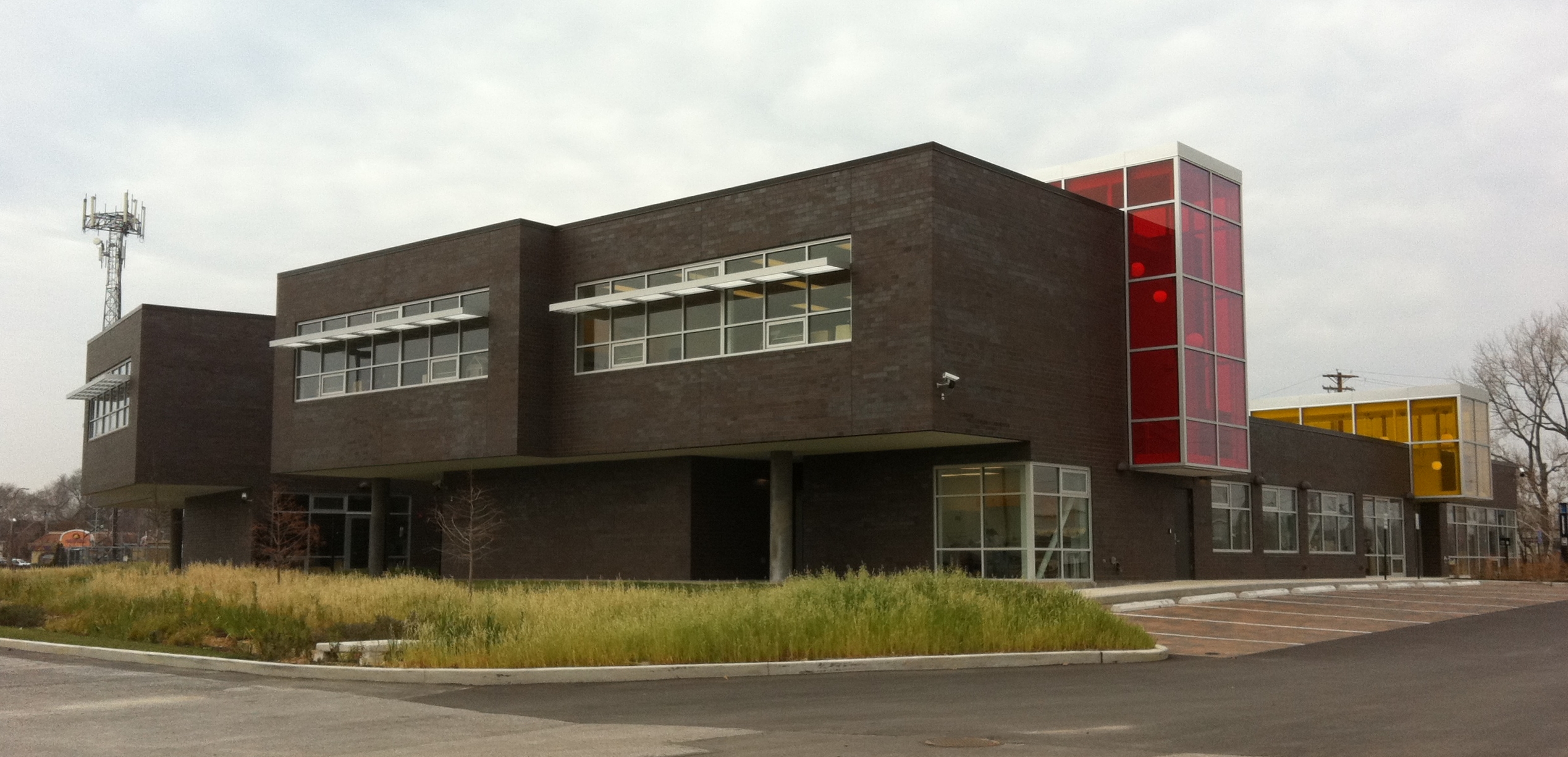
And the medians are being rebuilt on Skinker, a huge improvement over the crumbling ones that have been there for years.
The churches are as beautiful as any other neighborhood. My favorite mid-century modern church can be found in the West End. This is just one shot, there are many other amazing angles/perspectives on this one.
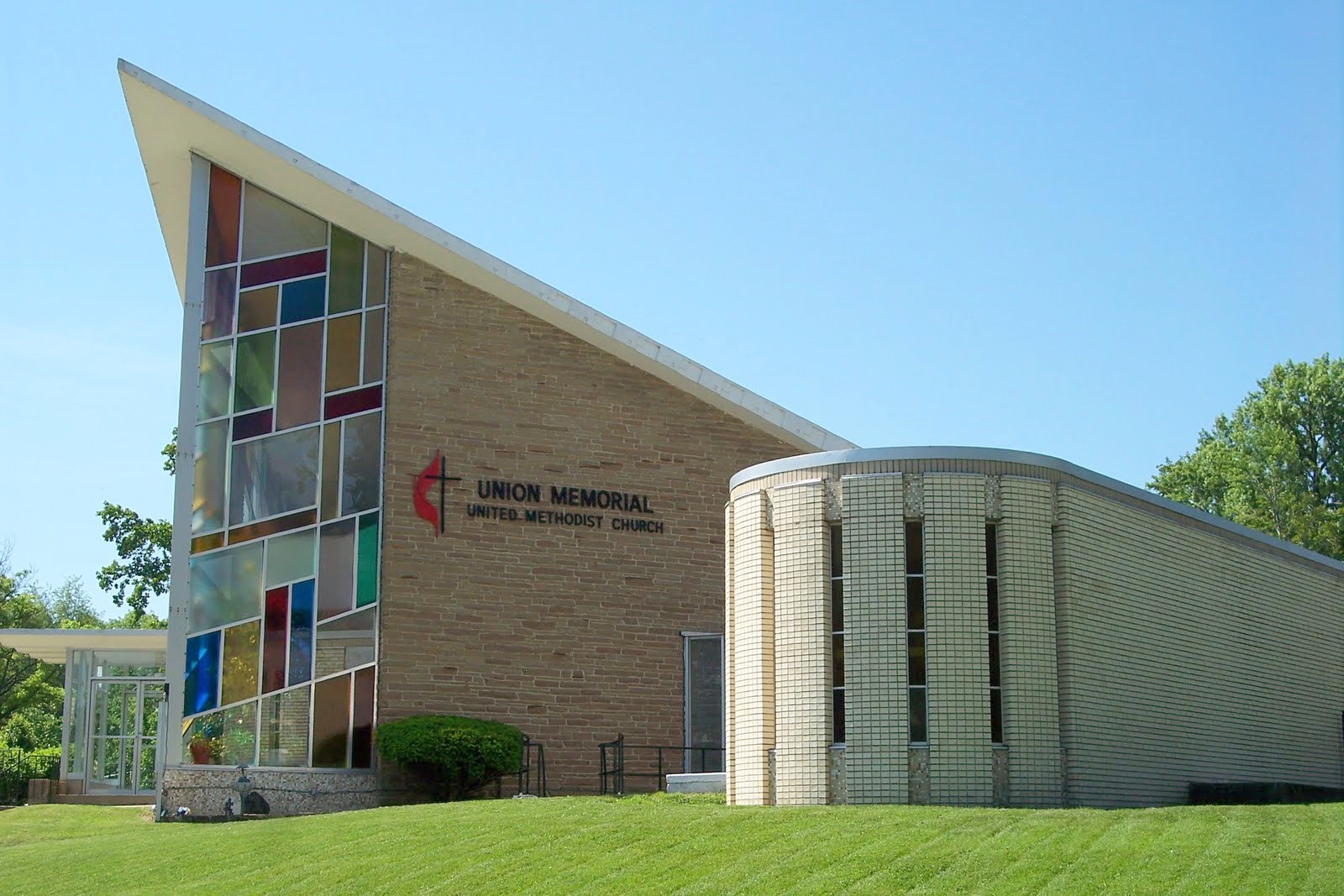
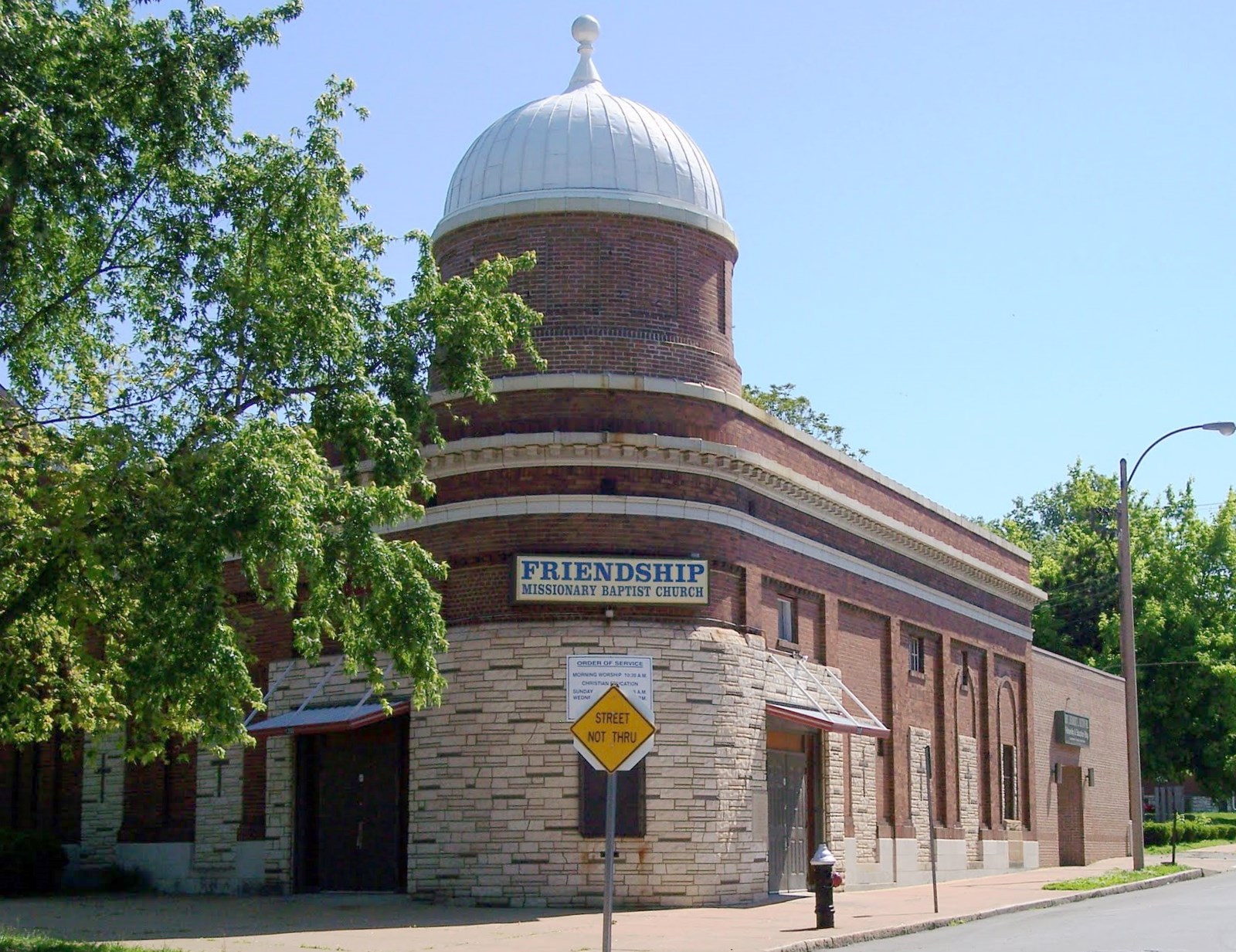
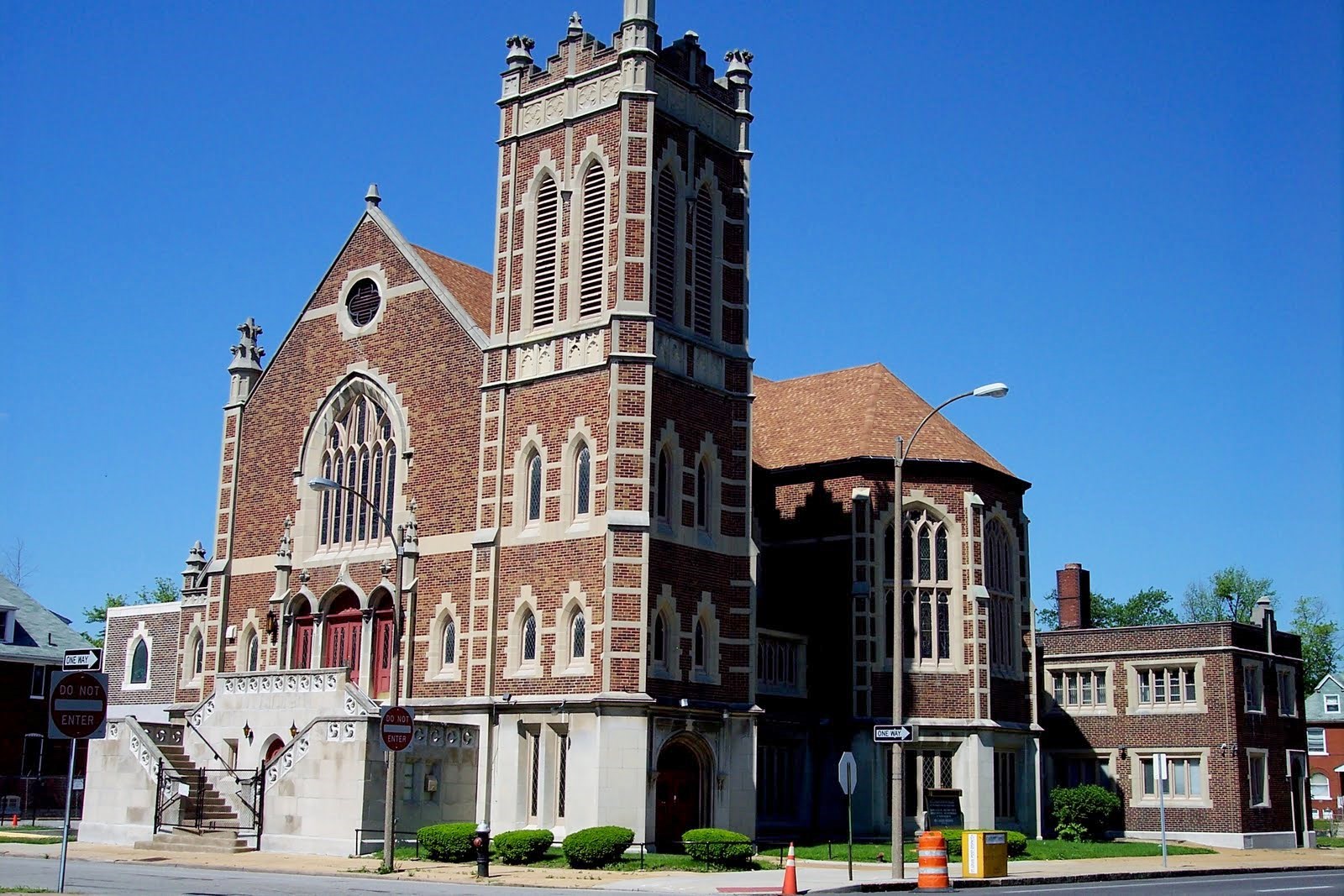
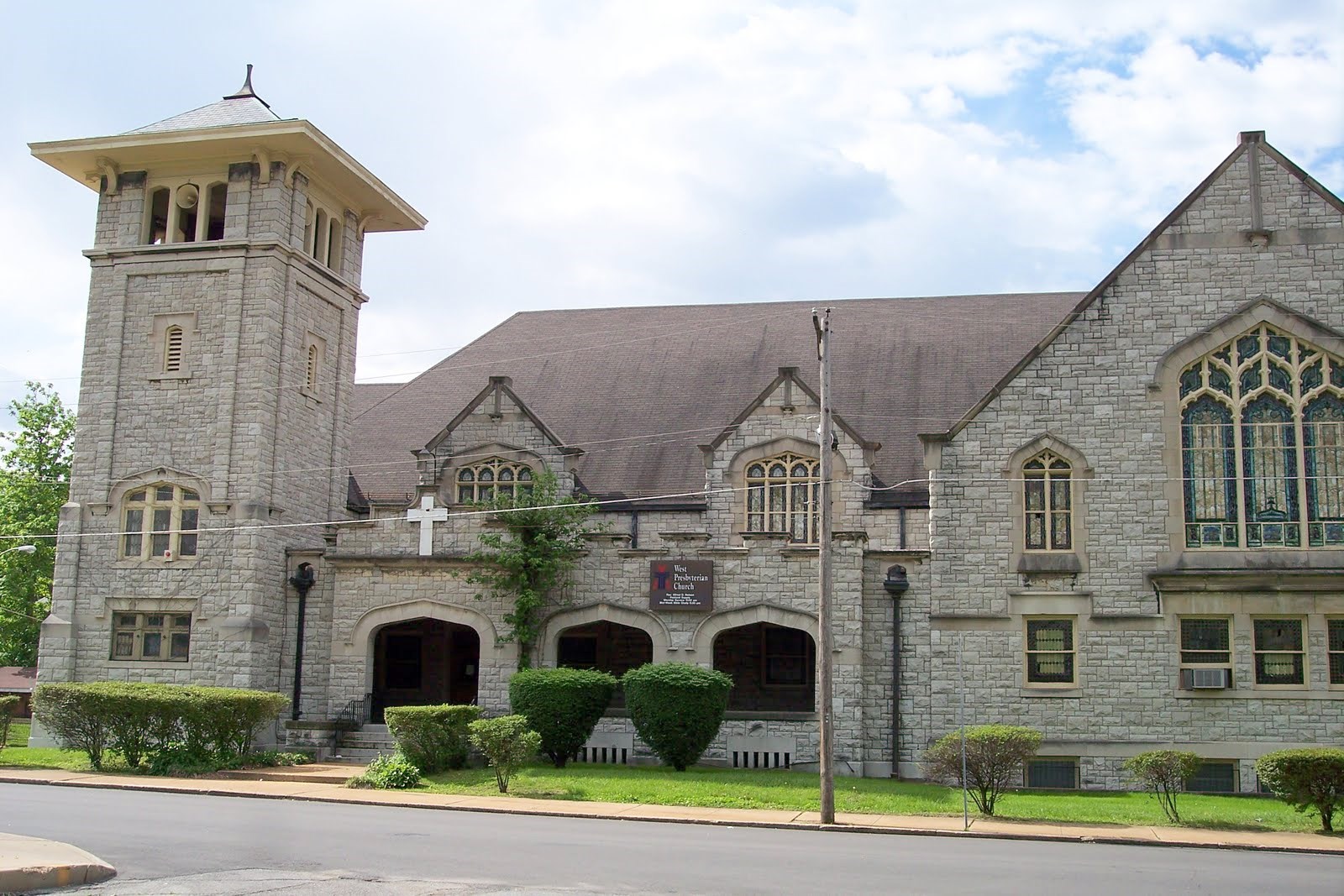
Don’t get me wrong, there is much neglect here and many contemporary mistakes were constructed from the 1970’s-2000’s. But, this can all be fixed and the West End may be one of the greatest north side neighborhoods in St. Louis.
If you’ve been following my neighborhood profiles, you know I am a big fan of old signs. There are some gems in the West End:
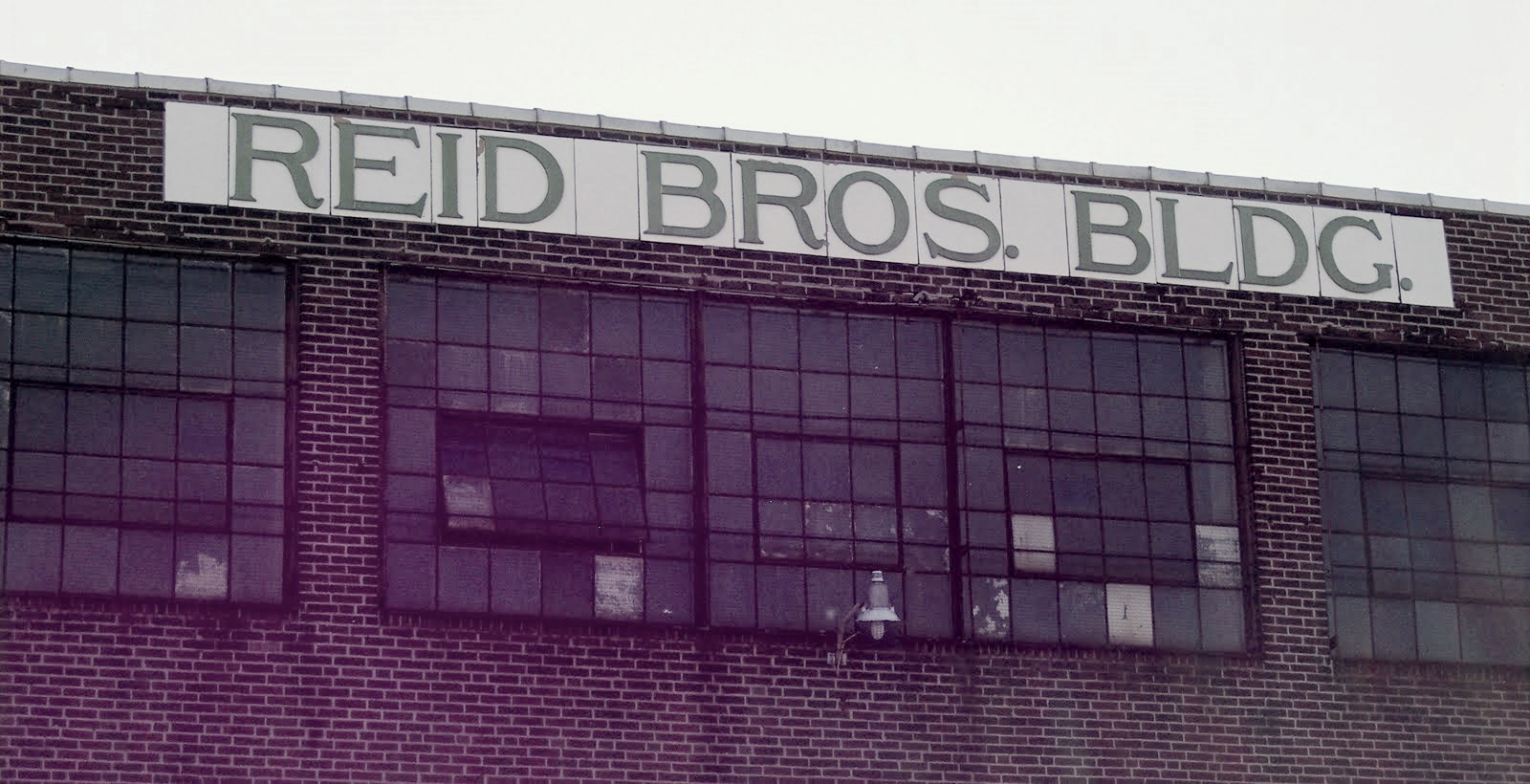
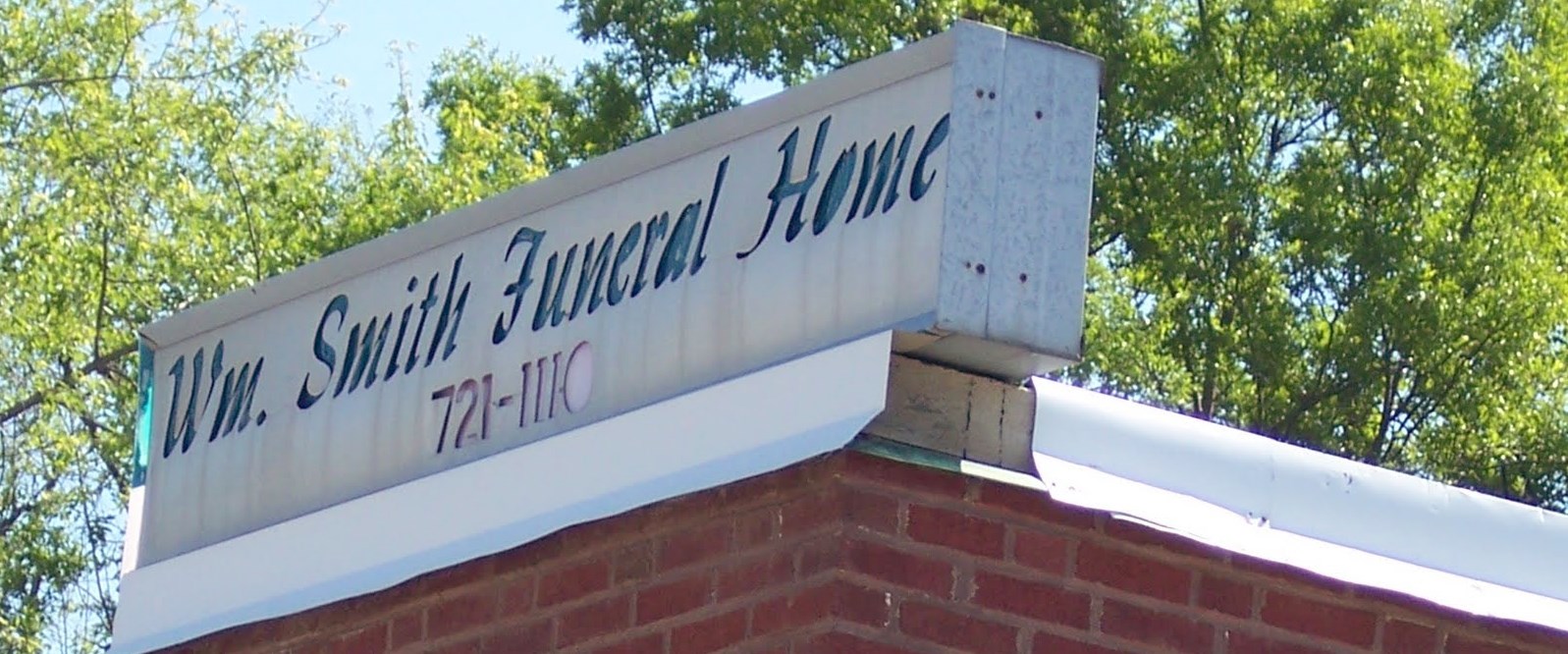
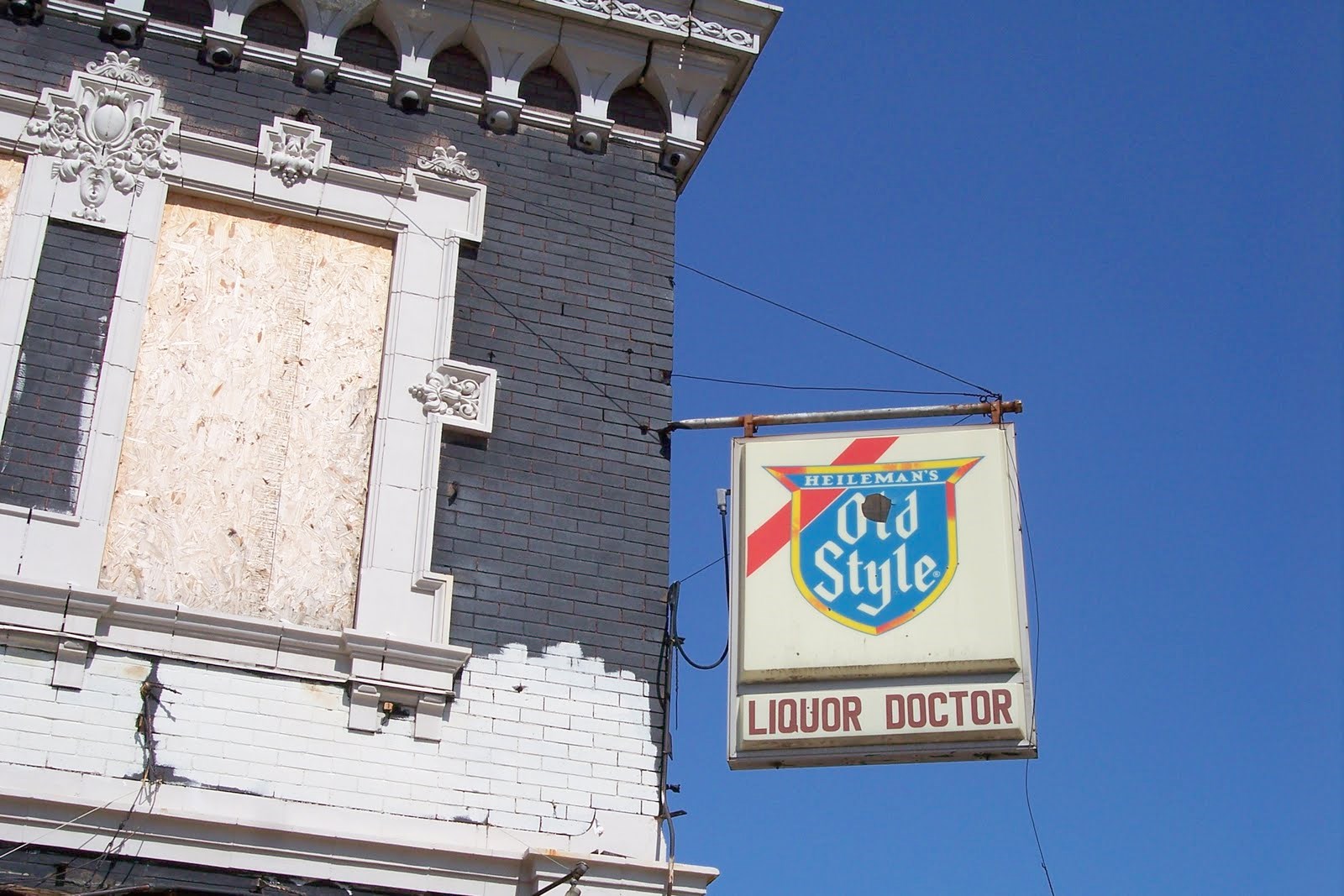
That was my nickname in high school (sign above).
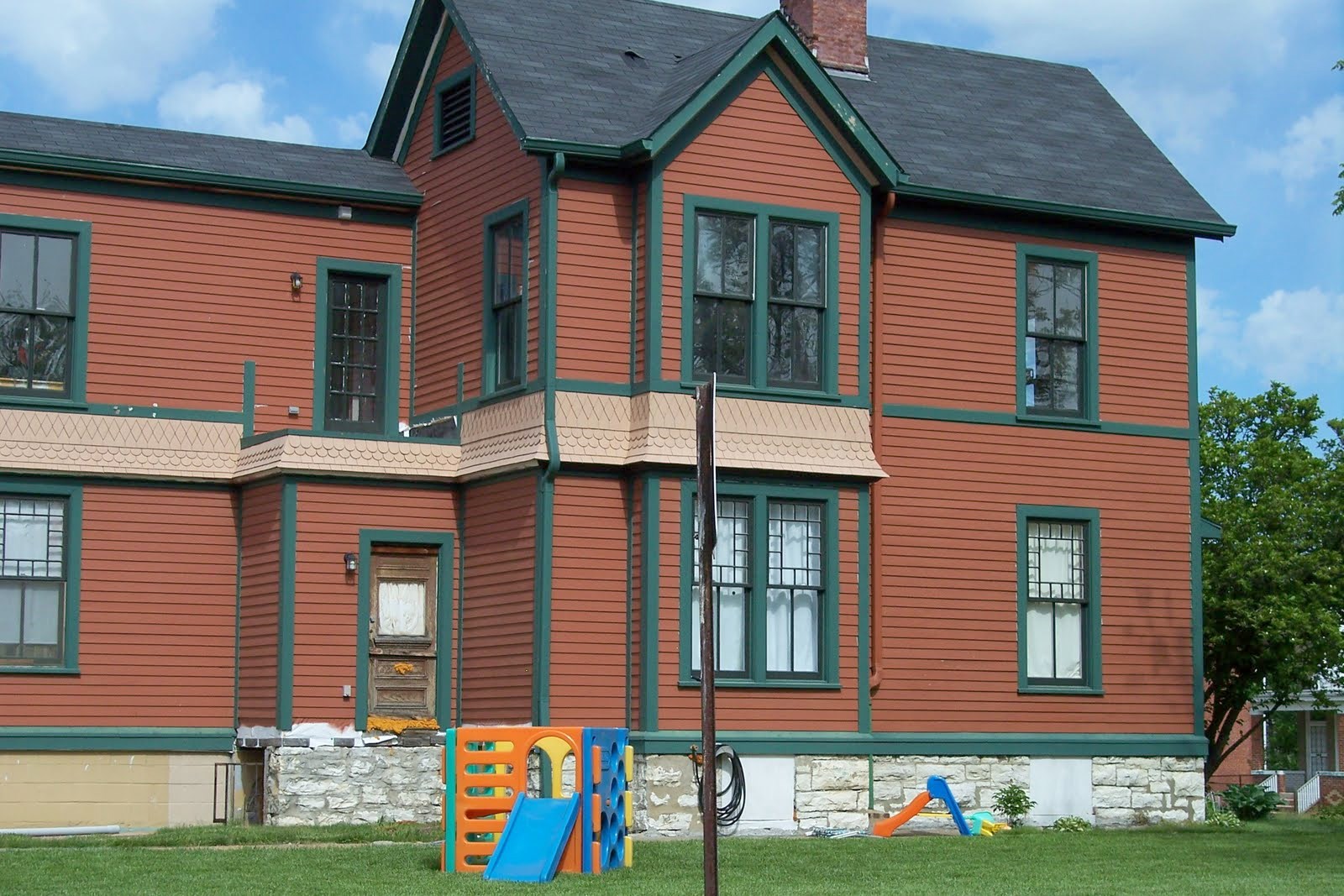
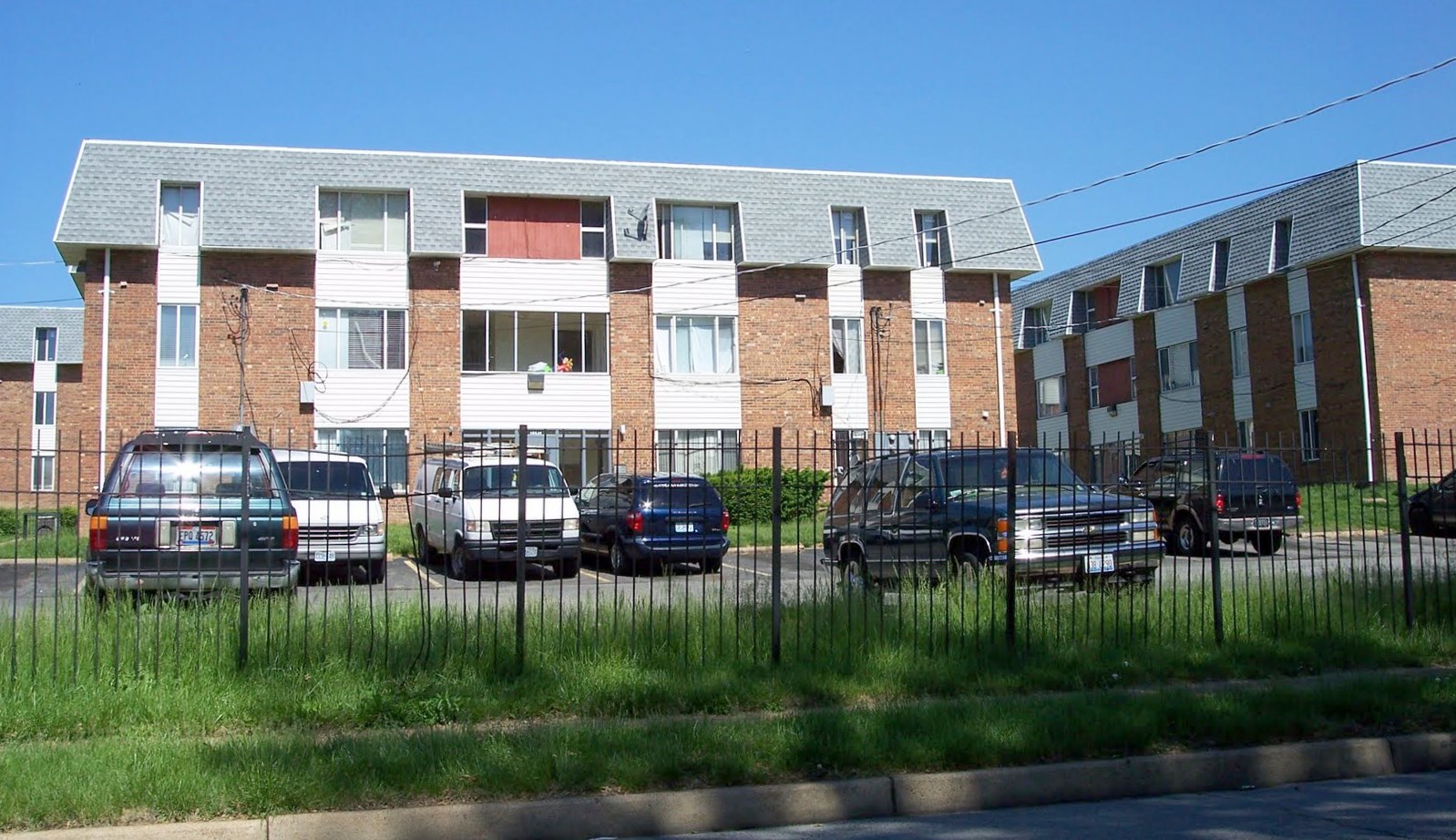
***In May, 2021 I revisited the neighborhood and the following includes updated commentary and photos.***
Misses On Original Tour
Maybe a miss would be not calling out the more established private streets like Cabanne and Thornby Place and the more “winding” streets like Oakley and Oakherst Place, which are in need of attention in some spots.
West Cabanne Place, founded in 1887, was placed on the National Register of Historic Places in 1980. There is a mix of newer and original homes. A speed hump has been added since the 2010 post.
Thornby Place, another private street, is gorgeous. There is a contemporary home as well, one that would not be out of place in an upscale suburb.
The northwest section of the neighborhood around Oakley Place and Oakherst Place is equally beautiful and diverse in architectural styles, but the condition of the homes are not the same as Thornby and W. Cabanne.
I represented the mix of modern infill that has taken place over the years, so I won’t post photos on that. But, I will include some examples of infill that have taken place recently in the next section.
Noticeable Changes
Wow, where to start. Lots of change in the West End over the last decade. I guess I’ll start with the observation that the neighborhood is under a bit of a new construction and rehab/renovation boom. Racial diversity is clearly visible, with white people closer to Delmar. My guess is the 2020 Census data will corroborate this observation.
The rehabs range from small single family homes to mansions and most importantly, some of the beautiful large apartment buildings have been recently rehabbed. There were signs of more multi-family buildings being rehabbed on my visit.
Evidence of on-going and recently completed rehabs:
Some single family infill:
One thing that sets the West End apart are the prevalence of large homes with huge porches and sprawling front yards.
Gorgeous apartment buildings are quite prevalent throughout the neighborhood. Some are occupied, others are being renovated, and some that will hopefully be brought back to life in the future.
There seems to have been an uptick of demolitions as well. Some are in-progress as of this posting. While no one likes to see this, it may be an unfortunate need and a desire of the current and long-time residents.
The Loop (the part in St. Louis vs. University City) has seen tremendous investment. Some of my posts on these projects are linked below in the Additional Reading section, others are demonstrated in the pics below:
The Delmar Divine project which will repurpose the former St. Luke’s Hospital into “a social innovation, high impact real estate initiative that will set an example for community development, social improvement and collaboration in St. Louis and the nation” is well underway.

The Loop Trolley, one of the favorite projects people like to bash, has made its mark on the neighborhood. I was onboard with the idea, but due to the fact it is not in operation and has created a massive liability for business owners and bike/scooter riders, I’m pretty frustrated by it myself. That said, I wish nothing but a successful future, I know a lot of people would enjoy this.
But don’t lose hope, the St. Vincent Greenway, which opened since my blog in 2010 is a tremendous asset. Great Rivers Greenway is keeping it well maintained and it is an undeniable source of positivity for the neighborhood. It was in routine use on my recent visit.
Traffic calming is in full effect with speed humps being added to key points. Infrastructure is finally being taken seriously with lots of new sidewalks, parking lane bump outs, street lighting, trees and even 5G towers.
Now, I’d be remiss to not mention there is still a lot of vacancy, decay and dumping in the West End, mostly toward the northern sections of the neighborhood nearest Page and Skinker. Not really a noticeable change from ten years ago, rather a call out that there is a long way to go even though it looks better than it did in 2010.
Another noticeable change over the last decade is SLPS school closings. The example on the right shows a repurposing of the former Mitchell School into Kipp Victory Academy, a charter school.
What Are The Future Needs?
More money and investment is always good to see. This raises the values for all and makes getting a home improvement loan easier as comps on recent home sales are making it more and more viable to invest here. With that investment comes the need to ensure people are not being unnecessarily displaced. While we need integrated neighborhoods, both racially and economically, we need to ensure the long time residents are not steamrolled by rising property taxes and high end offerings that would push out the needed businesses that serve the community (of which there are admittedly very few). The CVS at Delmar and Skinker is a good example of an upgrade that will provide necessary service for the neighborhood residents with essential needs like prescription pharmaceuticals and over the counter needs.

I would wager that the investment seen closer to Delmar today will work its way north, hopefully all the way to Page and beyond.
I’d love to see the Wabash Railway Building on Delmar become part of the neighborhood again with some kind of use. There is hope as Joe Edwards, the prominent business owner and developer of the Loop, and Washington University are now co-owners of the gorgeous building.
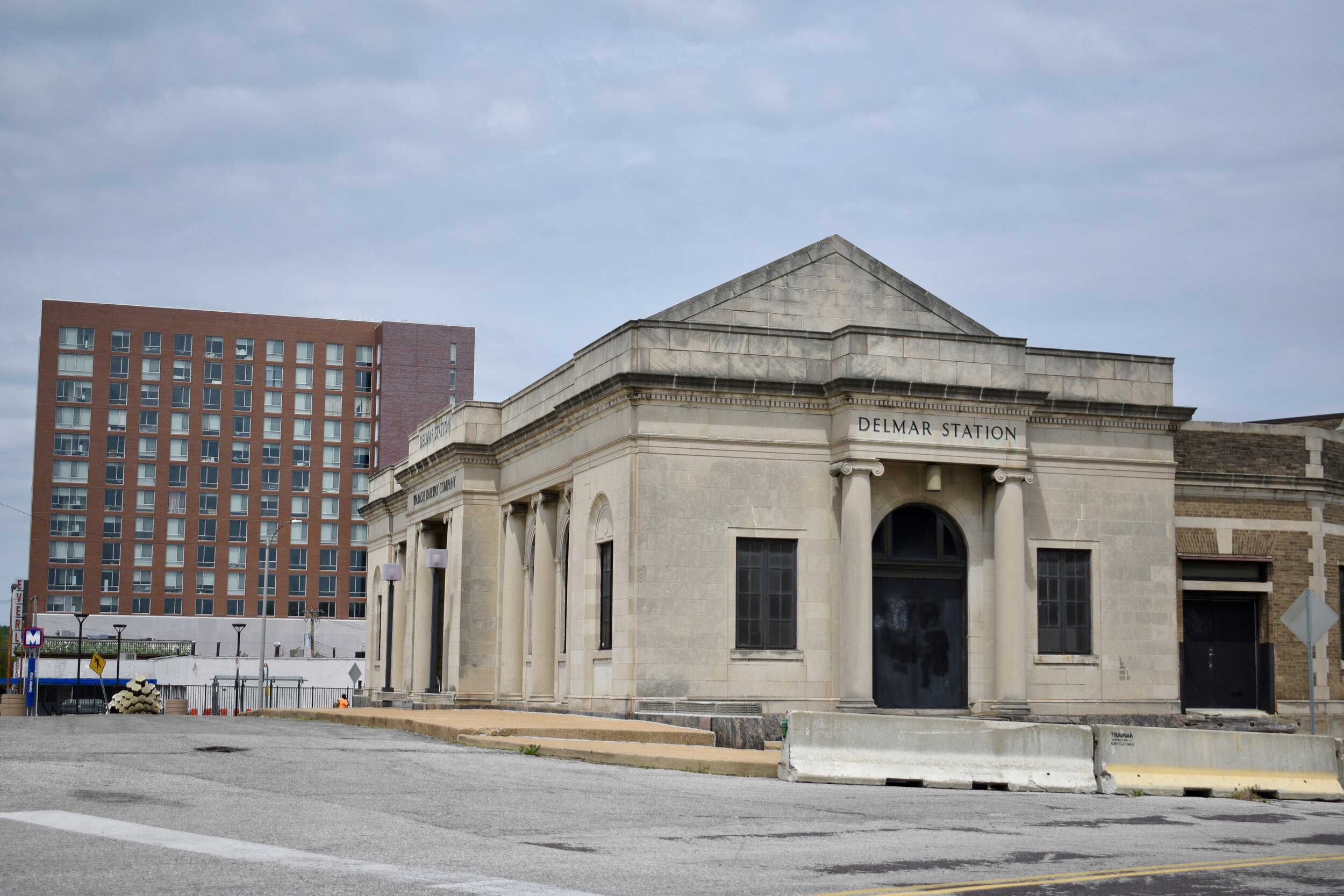
The neighborhood is blessed with many parks. I linked my park posts below in the Additional Reading section.
The future looks bright in the way of the greenway expansions in this part of the city.
The Hodiamont Tracks Greenway, a proposed 3.5 mile greenway connecting several neighborhoods to the larger Brickline Greenway plan will be thrilling to watch. Community feedback is currently being sought and analyzed. This new addition will go right through the West End.

Image source – Great Rivers Greenway
Here’s a glimpse of what the former Hodiamont Tracks look like today.

The Washington University North Campus expansion into the West End is of course welcomed, but the site planning is decidedly low density and suburban in nature. Massive surface lots do not bring a welcoming feel, even if this on the periphery of the neighborhood. The suburban office park/campus builds need to be kept in the burbs, we need better for our city.
I couldn’t get in the campus for better pictures due to the closed entry gates, but the shot below gives you an idea.

I’d like to see more of the larger apartment buildings and historic homes being rehabbed to retain the historic look and feel as more and more infill takes place. There are countless opportunities.
I rode away from the West End filled with optimism and hope. Lots of conversations, hand waves and generally peaceful vibes.
Cheers to this part of St. Louis from 2010-2020, here’s to equitable and inclusive change in the next ten years.
Keep up the good work!
Finally, I’ll leave some updated photos of the sheer beauty of this place, more for my reference to observe change over the next decade.

